
The Rate of Return on Everything, 1870–2015
?
`
Oscar Jord
`
a
†
Katharina Knoll
‡
Dmitry Kuvshinov
§
Moritz Schularick
¶
Alan M. Taylor
z
March 2019
Abstract
What is the aggregate real rate of return in the economy? Is it higher than the growth
rate of the economy and, if so, by how much? Is there a tendency for returns to fall in
the long-run? Which particular assets have the highest long-run returns? We answer
these questions on the basis of a new and comprehensive dataset for all major asset
classes, including housing. The annual data on total returns for equity, housing, bonds,
and bills cover 16 advanced economies from 1870 to 2015, and our new evidence reveals
many new findings and puzzles.
Keywords: return on capital, interest rates, yields, dividends, rents, capital gains, risk
premiums, household wealth, housing markets.
JEL classification codes: D31, E44, E10, G10, G12, N10.
?
This work is part of a larger project kindly supported by research grants from the Bundesministerium
f
¨
ur Bildung und Forschung (BMBF) and the Institute for New Economic Thinking (INET). We are indebted
to a large number of researchers who helped with data on individual countries. We are especially grateful
to Francisco Amaral for outstanding research assistance, and would also like to thank Felix Rhiel, Mario
Richarz, Thomas Schwarz, Lucie Stoppok, and Yevhenii Usenko for research assistance on large parts of the
project. For their helpful comments we thank the editors and referees, along with Roger Farmer, John Fernald,
Philipp Hofflin, David Le Bris, Clara Mart
´
ınez-Toledano, Emi Nakamura, Thomas Piketty, Matthew Rognlie,
J
´
on Steinsson, Johannes Stroebel, and Stijn Van Nieuwerburgh. We likewise thank conference participants
at the NBER Summer Institute EFG Program Meeting, the Brevan Howard Centre for Financial Analysis at
Imperial College Business School, the CEPR Housing Conference, and CEPR ESSIM at the Norges Bank, as
well as seminar participants at Banca d’Italia, the Bank of England, Reserve Bank of New Zealand, Cornell
University, New York University, University of Illinois at Urbana-Champaign, University of Chicago Booth
School of Business, UC Berkeley, UCLA Anderson, Research Center SAFE, SciencesPo, and the Paris School
of Economics. All errors are our own. The views expressed herein are solely the responsibility of the authors
and should not be interpreted as reflecting the views of the Federal Reserve Bank of San Francisco, the Board
of Governors of the Federal Reserve System, or the Deutsche Bundesbank.
†
Federal Reserve Bank of San Francisco; and Department of Economics, University of California, Davis
(oscar[email protected]; ojorda@ucdavis.edu).
‡
§
¶
z
Department of Economics and Graduate School of Management, University of California, Davis; NBER;
and CEPR (amtaylor@ucdavis.edu).

I. Introduction
What is the rate of return in an economy? It is a simple question, but hard to answer. The rate
of return plays a central role in current debates on inequality, secular stagnation, risk premiums,
and the decline in the natural rate of interest, to name a few. A main contribution of our paper is
to introduce a large new dataset on the total rates of return for all major asset classes, including
housing—the largest, but oft ignored component of household wealth. Our data cover most
advanced economies—sixteen in all—starting in the year 1870.
Although housing wealth is on average roughly one half of national wealth in a typical economy
(Piketty, 2014), data on total housing returns (price appreciation plus rents) has been lacking (Shiller,
2000, provides some historical data on house prices, but not on rents). In this paper we build on more
comprehensive work on house prices (Knoll, Schularick, and Steger, 2017) and newly constructed
data on rents (Knoll, 2017) to enable us to track the total returns of the largest component of the
national capital stock.
We further construct total returns broken down into investment income (yield) and capital gains
(price changes) for four major asset classes, two of them typically seen as relatively risky—equities
and housing—and two of them typically seen as relatively safe—government bonds and short-term
bills. Importantly, we compute actual asset returns taken from market data and therefore construct
more detailed series than returns inferred from wealth estimates in discrete benchmark years for a
few countries as in Piketty (2014).
We also follow earlier work in documenting annual equity, bond, and bill returns, but here
again we have taken the project further. We re-compute all these measures from original sources,
improve the links across some important historical market discontinuities (e.g., market closures and
other gaps associated with wars and political instability), and in a number of cases we access new
and previously unused raw data sources. In all cases, we have also brought in auxiliary sources to
validate our data externally, and 100+ pages of online material documents our sources and methods.
Our work thus provides researchers with the first broad non-commercial database of historical
equity, bond, and bill returns—and the only database of housing returns—with the most extensive
coverage across both countries and years.
1
Our paper aims to bridge the gap between two related strands of the academic literature. The
first strand is rooted in finance and is concerned with long-run returns on different assets. Dimson,
Marsh, and Staunton (2009) probably marked the first comprehensive attempt to document and
analyze long-run returns on investment for a broad cross-section of countries. Meanwhile, Homer
and Sylla (2005) pioneered a multi-decade project to document the history of interest rates.
The second related strand of literature is the analysis of comparative national balance sheets over
time, as in Goldsmith (1985a). More recently, Piketty and Zucman (2014) have brought together data
1
For example, our work complements and extends the database on equity returns by Dimson, Marsh, and
Staunton (2009). Their dataset is commercially available, but has a shorter coverage and does not break down
the yield and capital gain components.
1
from national accounts and other sources tracking the development of national wealth over long
time periods. They also calculate rates of return on capital by dividing aggregate capital income in
the national accounts by the aggregate value of capital, also from national accounts.
Our work is both complementary and supplementary to theirs. It is complementary as the asset
price perspective and the national accounts approach are ultimately tied together by accounting
rules and identities. Using market valuations, we are able to corroborate and improve the estimates
of returns on capital that matter for wealth inequality dynamics. Our long-run return data are
also supplementary to the work of Piketty and Zucman (2014) in the sense that we greatly extend
the number of countries for which we can calculate real rates of return back to the late nineteenth
century.
The new evidence we gathered can shed light on active research debates, reaching from asset
pricing to inequality. For example, in one contentious area of research, the accumulation of capital,
the expansion of capital’s share in income, and the growth rate of the economy relative to the rate
of return on capital all feature centrally in the current debate sparked by Piketty (2014) on the
evolution of wealth, income, and inequality. What do the long-run patterns on the rates of return on
different asset classes have to say about these possible drivers of inequality?
In many financial theories, preferences over current versus future consumption, attitudes toward
risk, and covariation with consumption risk all show up in the premiums that the rates of return
on risky assets carry over safe assets. Returns on different asset classes and their correlations with
consumption sit at the core of the canonical consumption-Euler equation that underpins textbook
asset pricing theory (see, e.g., Mehra and Prescott, 1985). But tensions remain between theory and
data, prompting further explorations of new asset pricing paradigms including behavioral finance.
Our new data add another risky asset class to the mix, housing, and with it, new challenges.
In another strand of research triggered by the financial crisis, Summers (2014) seeks to revive the
secular stagnation hypothesis first advanced in Alvin Hansen’s (1939) AEA Presidential Address.
Demographic trends are pushing the world’s economies into uncharted territory as the relative
weight of borrowers and savers is changing and with it the possibility increases that the interest rate
will fall by an insufficient amount to balance saving and investment at full employment. What is the
evidence that this is the case?
Lastly, in a related problem within the sphere of monetary economics, Holston, Laubach, and
Williams (2017) show that estimates of the natural rate of interest in several advanced economies have
gradually declined over the past four decades and are now near zero. What historical precedents
are there for such low real rates that could inform today’s policymakers, investors, and researchers?
The common thread running through each of these broad research topics is the notion that the
rate of return is central to understanding long-, medium-, and short-run economic fluctuations.
But which rate of return? And how do we measure it? For a given scarcity of funding supply, the
risky rate is a measure of the profitability of private investment; in contrast, the safe rate plays an
important role in benchmarking compensation for risk, and is often tied to discussions of monetary
policy settings and the notion of the natural rate. Below, we summarize our main findings.
2
Main findings We present four main findings:
1. On risky returns, r
risky
In terms of total returns, residential real estate and equities have shown very similar and
high real total gains, on average about 7% per year. Housing outperformed equities before
WW2. Since WW2, equities have outperformed housing on average, but had much higher
volatility and higher synchronicity with the business cycle. The observation that housing
returns are similar to equity returns, but much less volatile, is puzzling. Like Shiller (2000),
we find that long-run capital gains on housing are relatively low, around 1% p.a. in real
terms, and considerably lower than capital gains in the stock market. However, the rental
yield component is typically considerably higher and more stable than the dividend yield of
equities so that total returns are of comparable magnitude.
Before WW2, the real returns on housing and equities (and safe assets) followed remarkably
similar trajectories. After WW2 this was no longer the case, and across countries equities then
experienced more frequent and correlated booms and busts. The low covariance of equity and
housing returns reveals that there could be significant aggregate diversification gains (i.e., for
a representative agent) from holding the two asset classes.
2. On safe returns, r
sa f e
We find that the real safe asset return (bonds and bills) has been very volatile over the long-run,
more so than one might expect, and oftentimes even more volatile than real risky returns.
Each of the world wars was (unsurprisingly) a moment of very low safe rates, well below
zero. So was the 1970s stagflation. The peaks in the real safe rate took place at the start of our
sample, in the interwar period, and during the mid-1980s fight against inflation. In fact, the
long decline observed in the past few decades is reminiscent of the secular decline that took
place from 1870 to WW1. Viewed from a long-run perspective, the past decline and current
low level of the real safe rate today is not unusual. The puzzle may well be why was the safe
rate so high in the mid-1980s rather than why has it declined ever since.
Safe returns have been low on average in the full sample, falling in the 1%–3% range for most
countries and peacetime periods. While this combination of low returns and high volatility
has offered a relatively poor risk-return trade-off to investors, the low returns have also eased
the pressure on government finances, in particular allowing for a rapid debt reduction in the
aftermath of WW2.
3. On the risk premium, r
risky
− r
sa f e
Over the very long run, the risk premium has been volatile. Our data uncover substantial
swings in the risk premium at lower frequencies that sometimes endured for decades, and
which far exceed the amplitudes of business-cycle swings.
3
In most peacetime eras, this premium has been stable at about 4%–5%. But risk premiums
stayed curiously and persistently high from the 1950s to the 1970s, long after the conclusion
of WW2. However, there is no visible long-run trend, and mean reversion appears strong.
Interestingly, the bursts of the risk premium in the wartime and interwar years were mostly a
phenomenon of collapsing safe returns rather than dramatic spikes in risky returns.
In fact, the risky return has often been smoother and more stable than the safe return,
averaging about 6%–8% across all eras. Recently, with safe returns low and falling, the risk
premium has widened due to a parallel but smaller decline in risky returns. But these shifts
keep the two rates of return close to their normal historical range. Whether due to shifts in
risk aversion or other phenomena, the fact that safe returns seem to absorb almost all of these
adjustments seems like a puzzle in need of further exploration and explanation.
4. On returns minus growth, r
wealth
− g
Piketty (2014) argued that, if investors’ return to wealth exceeded the rate of economic growth,
rentiers would accumulate wealth at a faster rate and thus worsen wealth inequality. Using
a measure of portfolio returns to compute “
r
minus
g
” in Piketty’s notation, we uncover an
important finding. Even calculated from more granular asset price returns data, the same fact
reported in Piketty (2014) holds true for more countries, more years, and more dramatically:
namely “r g.”
In fact, the only exceptions to that rule happen in the years in or around wartime. In peacetime,
r
has always been much greater than
g
. In the pre-WW2 period, this gap was on average 5%
(excluding WW1). As of today, this gap is still quite large, about 3%–4%, though it narrowed
to 2% in the 1970s before widening in the years leading up to the Global Financial Crisis.
One puzzle that emerges from our analysis is that while “
r
minus
g
” fluctuates over time, it
does not seem to do so systematically with the growth rate of the economy. This feature of the
data poses a conundrum for the battling views of factor income, distribution, and substitution
in the ongoing debate (Rognlie, 2015). The fact that returns to wealth have remained fairly
high and stable while aggregate wealth increased rapidly since the 1970s, suggests that capital
accumulation may have contributed to the decline in the labor share of income over the recent
decades (Karabarbounis and Neiman, 2014). In thinking about inequality and several other
characteristics of modern economies, the new data on the return to capital that we present
here should spur further research.
II. A new historical global returns database
In this section, we will discuss the main sources and definitions for the calculation of long-run
returns. A major innovation is the inclusion of housing. Residential real estate is the main asset in
most household portfolios, as we shall see, but so far very little has been known about long-run
4

Table I: Data coverage
Country Bills Bonds Equity Housing
Australia 1870–2015 1900–2015 1870–2015 1901–2015
Belgium 1870–2015 1870–2015 1870–2015 1890–2015
Denmark 1875–2015 1870–2015 1873–2015 1876–2015
Finland 1870–2015 1870–2015 1896–2015 1920–2015
France 1870–2015 1870–2015 1870–2015 1871–2015
Germany 1870–2015 1870–2015 1870–2015 1871–2015
Italy 1870–2015 1870–2015 1870–2015 1928–2015
Japan 1876–2015 1881–2015 1886–2015 1931–2015
Netherlands 1870–2015 1870–2015 1900–2015 1871–2015
Norway 1870–2015 1870–2015 1881–2015 1871–2015
Portugal 1880–2015 1871–2015 1871–2015 1948–2015
Spain 1870–2015 1900–2015 1900–2015 1901–2015
Sweden 1870–2015 1871–2015 1871–2015 1883–2015
Switzerland 1870–2015 1900–2015 1900–2015 1902–2015
UK 1870–2015 1870–2015 1871–2015 1896–2015
USA 1870–2015 1871–2015 1872–2015 1891–2015
returns on housing. Our data on housing returns will cover capital gains, and imputed rents to
owners and renters, the sum of the two being total returns.
2
Equity return data for publicly-traded
equities will then be used, as is standard, as a proxy for aggregate business equity returns.
3
The data include nominal and real returns on bills, bonds, equities, and residential real estate
for Australia, Belgium, Denmark, Finland, France, Germany, Italy, Japan, the Netherlands, Norway,
Portugal, Spain, Sweden, Switzerland, the United Kingdom, and the United States. The sample
spans 1870 to 2015. Table I summarizes the data coverage by country and asset class.
Like most of the literature, we examine returns to national aggregate holdings of each asset
class. Theoretically, these are the returns that would accrue for the hypothetical representative-agent
investor holding each country’s portfolio. An advantage of this approach is that it captures indirect
holdings much better, although it leads to some double-counting thereby boosting the share of
financial assets over housing somewhat. The differences are described in Appendix O.
4
2
Since the majority of housing is owner-occupied, and housing wealth is the largest asset class in the
economy, owner-occupier returns and imputed rents also form the lion’s share of the total return on housing,
as well as the return on aggregate wealth.
3
Moskowitz and Vissing-Jørgensen (2002) compare the returns on listed and unlisted U.S. equities over the
period 1953–1999 and find that in aggregate, the returns on these two asset classes are similar and highly
correlated, but private equity returns exhibit somewhat lower volatility. Moskowitz and Vissing-Jørgensen
(2002) argue, however, that the risk-return tradeoff is worse for private compared to public equities, because
aggregate data understate the true underlying volatility of private equity, and because private equity portfolios
are typically much less diversified.
4
Within country heterogeneity is undoubtedly important, but clearly beyond the scope of a study covering
nearly 150 years of data and 16 advanced economies.
5

II.A. The composition of wealth
Figure I shows the decomposition of economy-wide investible assets and capital stocks, based on
data for five major economies at the end of 2015: France, Germany, Japan, UK and US.
5
Investible
assets shown in the left panel of Figure I (and in Table A.23) exclude assets that relate to intra-
financial holdings and cannot be held directly by investors, such as loans, derivatives (apart from
employee stock options), financial institutions’ deposits, insurance and pension claims. Other
financial assets mainly consist of corporate bonds and asset-backed securities. Other non-financial
assets are other buildings, machinery and equipment, agricultural land, and intangible capital.
The capital stock is business capital plus housing. Other capital is mostly made up of intangible
capital and agricultural land. Data are sourced from national accounts and national wealth estimates
published by the countries’ central banks and statistical offices.
6
Housing, equity, bonds, and bills comprise over half of all investible assets in the advanced
economies today, and nearly two-thirds if deposits are included. The right-hand side panel of
Figure I shows the decomposition of the capital stock into housing and various other non-financial
assets. Housing is about one half of the outstanding stock of capital. In fact, housing and equities
alone represent over half of total assets in household balance sheets (see Figures A.5 and A.6).
The main asset categories outside the direct coverage of this study are: commercial real estate,
business assets, and agricultural land; corporate bonds; pension and insurance claims; and deposits.
But most of these assets represent claims of, or are closely related to, assets that we do cover. For
example, pension claims tend to be invested in stocks and bonds; listed equity is a levered claim
on business assets of firms; land and commercial property prices tend to co-move with residential
property prices; and deposit rates are either included in, or very similar to, our bill rate measure.
7
Our data also exclude foreign assets. Even though the data on foreign asset holdings are
relatively sparse, the evidence that we do have—presented in Appendix O.4—suggests that foreign
assets have, through history, only accounted for a small share of aggregate wealth, and the return
differentials between domestic and foreign asset holdings are, with few exceptions, not that large.
Taken together, this means that our dataset almost fully captures the various components of the
return on overall household wealth.
II.B. Historical returns data
Bill returns
The canonical risk-free rate is taken to be the yield on Treasury bills, i.e., short-term,
fixed-income government securities. The yield data come from the latest vintage of the long-run
5
Individual country data are shown Appendix Tables A.23 and A.24.
6
Both decompositions also exclude human capital, which cannot be bought or sold. Lustig, Van Nieuwer-
burgh, and Verdelhan (2013) show that for a broader measure of aggregate wealth that includes human
capital, the size of human wealth is larger than of non-human wealth, and its return dynamics are similar to
those of a long-term bond.
7
Moreover, returns on commercial real estate are captured by the levered equity returns of the firms that
own this real estate, and hence are indirectly proxied by our equity return data.
6
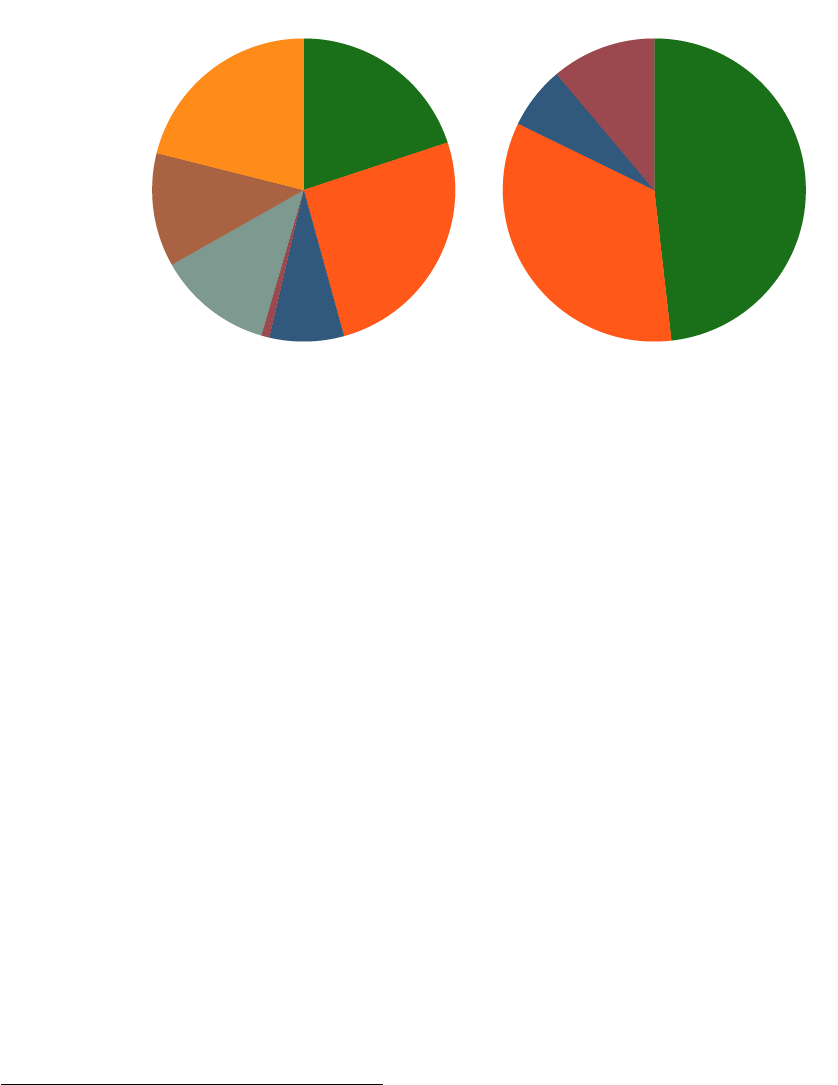
Figure I: Composition of investible assets and capital stock in the major economies
Housing
Equity
Bonds
Bills
Deposits
Other financial
Other non-financial
Investable Assets
Housing
Other buildings
Machinery
Other
Capital Stock
Note: Composition of total investible assets and capital stock. Average of the individual asset shares of France,
Germany, Japan, UK, and US, as of end-2015. Investible assets are defined as the gross total of economy-wide
assets excluding loans, derivatives, financial institutions’ deposits, insurance, and pension claims. Other
financial assets mainly consist of corporate bonds and asset-backed securities. Other non-financial assets are
other buildings, machinery and equipment, agricultural land, and intangible capital. The capital stock is
business capital plus housing. Other capital is mostly made up by intangible capital and agricultural land.
Data are sourced from national accounts and national wealth estimates published by the countries’ central
banks and statistical offices.
macrohistory database (Jord
`
a, Schularick, and Taylor, 2017).
8
Whenever data on Treasury bill
returns were unavailable, we relied on either money market rates or deposit rates of banks from
Zimmermann (2017). Since short-term government debt was rarely used and issued in the earlier
historical period, much of our bill rate data before the 1960s actually consist of deposit rates.
9
Bond returns
These are conventionally the total returns on long-term government bonds. Unlike
earlier cross-country studies, we focus on the bonds listed and traded on local exchanges and
denominated in local currency. This focus makes bond returns more comparable with the returns
of bills, equities, and housing. Moreover, this results in a larger sample of bonds, and on bonds
that are more likely to be held by the representative household in the respective country. For some
countries and periods we have made use of listings on major global exchanges to fill gaps where
domestic markets were thin, or local exchange data were not available (for example, Australian
bonds listed in New York or London). Throughout the sample we target a maturity of around
10 years. For the second half of the 20th century, the maturity of government bonds is generally
8
www.macrohistory.net/data
9
In general, it is difficult to compute the total returns on deposits because of uncertainty about losses
during banking crises, and we stick to the more easily measurable government bill and bond returns where
these data are available. Comparisons with the deposit rate data in Zimmermann (2017), however, indicate
that the interest rate differential between deposits and our bill series is very small, with deposit rates on
average roughly 0.7 percentage points below bills—a return close to zero in real terms. The returns on
government bills and deposits are also highly correlated over time.
7

accurately defined. For the pre-WW2 period we sometimes had to rely on data for perpetuals, i.e.,
very long-term government securities (such as the British consol). Although as a convention we
refer here to government bills and bonds as “safe” assets, both are naturally exposed to inflation
and default risk, for example. In fact, real returns on these assets fluctuate substantially over time as
we shall see (specifically, Sections V and VI).
Equity returns
These returns come from a broad range of sources, including articles in economic
and financial history journals, yearbooks of statistical offices and central banks, stock exchange
listings, newspapers, and company reports. Throughout most of the sample, we aim to rely
on indices weighted by market capitalization of individual stocks, and a stock selection that is
representative of the entire stock market. For some historical time periods in individual countries,
however, we also make use of indices weighted by company book capital, stock market transactions,
or weighted equally, due to limited data availability.
Housing returns
We combine the long-run house price series introduced by Knoll, Schularick,
and Steger (2017) with a novel dataset on rents drawn from the unpublished PhD thesis of Knoll
(2017). For most countries, the rent series rely on the rent components of the cost of living of
consumer price indices constructed by national statistical offices. We then combine them with
information from other sources to create long-run series reaching back to the late 19th century. To
proxy the total return on the residential housing stock, our returns include both rented housing
and owner-occupied properties.
10
Specifically, wherever possible we use house price and rental
indices that include the prices of owner-occupied properties, and the imputed rents on these houses.
Imputed rents estimate the rent that an owner-occupied house would earn on the rental market,
typically by using rents of similar houses that are rented. This means that, in principle, imputed
rents are similar to market rents, and are simply adjusted for the portfolio composition of owner-
occupied as opposed to rented housing. Imputed rents, however, are not directly observed and
hence less precisely measured than market rents, and are typically not taxed.
11
To the best of our
knowledge, we are the first to calculate total returns to housing in the literature for as long and as
comprehensive a cross section of economies as we report.
Composite returns
We compute the rate of return on safe assets, risky assets, and aggregate
wealth, as weighted averages of the individual asset returns. To obtain a representative return from
the investor’s perspective, we use the outstanding stocks of the respective asset in a given country as
weights. To this end, we make use of new data on equity market capitalization (from Kuvshinov and
Zimmermann, 2018) and housing wealth for each country and period in our sample, and combine
10
This is in line with the treatment of housing returns in the existing literature on returns to aggregate
wealth—see, for example, Piketty et al. (2018) and Rognlie (2015).
11
We discuss the issues around imputed rents measurement, and our rental yield series more generally in
Section III.C.
8

them with existing estimates of public debt stocks to obtain the weights for the individual assets. A
graphical representation of these asset portfolios, and further description of their construction is
provided in the Appendix O.3. Tables A.28 and A.29 present an overview of our four asset return
series by country, their main characteristics and coverage. The paper comes with an extensive data
appendix that specifies the sources we consulted and discusses the construction of the series in
greater detail (see the Data Appendix, Sections U, V, and W for housing returns, and Section X for
equity and bond returns).
II.C. Calculating returns
The total annual return on any financial asset can be divided into two components: the capital gain
from the change in the asset price
P
, and a yield component
Y
, that reflects the cash-flow return on
an investment. The total nominal return R for asset j in country i at time t is calculated as:
Total return: R
j
i,t
=
P
j
i,t
− P
j
i,t−1
P
j
i,t−1
+ Y
j
i,t
. (1)
Because of wide differences in inflation across time and countries, it is helpful to compare returns
in real terms. Let
π
i,t
= (CPI
i,t
− CPI
i,t−1
) /CPI
i,t−1
be the realized consumer price index (
CPI
)
inflation rate in a given country
i
and year
t
. We calculate inflation-adjusted real returns
r
for each
asset class as,
Real return: r
j
i,t
= (1 + R
j
i,t
) /(1 + π
i,t
) − 1 . (2)
These returns will be summarized in period average form, by country, or for all countries.
Investors must be compensated for risk to invest in risky assets. A measure of this “excess
return” can be calculated by comparing the real total return on the risky asset with the return on a
risk-free benchmark—in our case, the government bill rate,
r
bill
i,t
. We therefore calculate the excess
return ER for the risky asset j in country i as
Excess return: ER
j
i,t
= r
j
i,t
− r
bill
i,t
. (3)
In addition to individual asset returns, we also present a number of weighted “composite”
returns aimed at capturing broader trends in risky and safe investments, as well as the “overall
return” or “return on wealth.” Appendix O.3 provides further details on the estimates of country
asset portfolios from which we derive country-year specific weights.
For safe assets, we assume that total public debt is divided equally into bonds and bills since
there are no data on their market shares (only for total public debt) over our full sample. As a result,
we compute the safe asset return as:
Safe return: r
sa f e
i,t
=
r
bill
i,t
+ r
bond
i,t
2
. (4)
9

The risky asset return is calculated as a weighted average of the returns on equity and on
housing. The weights
w
represent the share of asset holdings of equity and of housing stocks in
the respective country
i
and year
t
, scaled to add up to 1. We use stock market capitalization and
housing wealth to calculate each share and hence compute risky returns as:
Risky return: r
risky
i,t
= r
equity
i,t
× w
equity
i,t
+ r
housing
t
× w
housing
i,t
. (5)
The difference between our risky and safe return measures then provides a proxy for the
aggregate risk premium in the economy:
Risk premium: RP
i,t
= r
risky
i,t
− r
sa f e
i,t
. (6)
The “return on wealth” measure is a weighted average of returns on risky assets (equity and
housing) and safe assets (bonds and bills). The weights
w
here are the asset holdings of risky and
safe assets in the respective country i and year t, scaled to add to 1.
12
Return on wealth: r
wealth
i,t
= r
risky
i,t
× w
risky
i,t
+ r
sa f e
i,t
× w
sa f e
i,t
. (7)
Finally, we also consider returns from a global investor perspective in Appendix I. There we
measure the returns from investing in local markets in U.S. dollars (USD). These returns effectively
subtract the depreciation of the local exchange rate vis-a-vis the dollar from the nominal return:
USD return: R
j,USD
i,t
= (1 + R
j
i,t
) /(1 +
ˆ
s
i,t
) − 1 , (8)
where
ˆ
s
i,t
is the rate of depreciation of the local currency versus the U.S. dollar in year t.
The real USD returns are then computed net of U.S. inflation π
US,t
:
Real USD return: r
j,USD
i,t
= (1 + R
j,USD
i,t
) /(1 + π
US,t
) − 1 . (9)
II.D. Constructing housing returns using the rent-price approach
This section briefly describes our methodology to calculate total housing returns. We provide
further details as needed later in Section III.C and in Appendix U. We construct estimates for total
returns on housing using the rent-price approach. This approach starts from a benchmark rent-price
ratio (
RI
0
/HPI
0
) estimated in a baseline year (
t = 0
). For this ratio we rely on net rental yields
from the Investment Property Database (IPD).
13
We can then construct a time series of returns by
12
For comparison, Appendix P provides information on the equally-weighted risky return, and the equally-
weighted rate of return on wealth, both calculated as simple averages of housing and equity, and housing,
equity and bonds respectively.
13
These net rental yields use rental income net of maintenance costs, ground rent, and other irrecoverable
expenditure. These adjustments are discussed exhaustively in the next section. We use net rather than gross
yields to improve comparability with other asset classes.
10

combining separate information from a country-specific house price index series (
HPI
t
/HPI
0
) and
a country-specific rent index series (
RI
t
/RI
0
). For these indices we rely on prior work on housing
prices (Knoll, Schularick, and Steger, 2017) and new data on rents (Knoll, 2017). This method
assumes that the indices cover a representative portfolio of houses. Under this assumption, there is
no need to correct for changes in the housing stock, and only information about the growth rates in
prices and rents is necessary.
Hence, a time series of the rent-price ratio can be derived from forward and back projection as
RI
t
HPI
t
=
(
RI
t
/RI
0
)
(
HPI
t
/HPI
0
)
RI
0
HPI
0
. (10)
In a second step, returns on housing can then be computed as:
R
housing
t+1
=
RI
t+1
HPI
t
+
HPI
t+1
− HPI
t
HPI
t
. (11)
Our rent-price approach is sensitive to the choice of benchmark rent-price-ratios and cumulative
errors from year-by-year extrapolation. We verify and adjust rent-price approach estimates using a
range of alternative sources. The main source for comparison is the balance sheet approach to rental
yields, which calculates the rent-price ratio using national accounts data on total rental income and
housing wealth. The “balance sheet” rental yield
RY
BS
t
is calculated as the ratio of total net rental
income to total housing wealth:
RY
BS
t
= Net rental income
t
/Housing Wealth
t
, (12)
This balance sheet rental yield estimate can then be added to the capital gains series in order to
compute the total return on housing from the balance sheet perspective. We also collect additional
point-in-time estimates of net rental yields from contemporary sources such as newspaper adver-
tisements. These measures are less sensitive to the accumulated extrapolation errors in equation
(10)
, but are themselves measured relatively imprecisely.
14
Wherever the rent-price approach es-
timates diverge from these historical sources, we make adjustments to benchmark the rent-price
ratio estimates to these alternative historical measures of the rental yield. We also construct two
additional housing return series—one benchmarked to all available alternative yield estimates, and
another using primarily the balance sheet approach. The results of this exercise are discussed in
Section III.C. Briefly, all the alternative estimates are close to one another, and the differences have
little bearing on any of our results.
14
We discuss the advantages and disadvantages of these different approaches in Section III.C. Broadly
speaking, the balance sheet approach can be imprecise due to measurement error in total imputed rent and
national housing wealth estimates. Newspaper advertisements are geographically biased and only cover
gross rental yields, so that the net rental yields have to be estimated.
11

III. Rates of return: Aggregate trends
Our headline summary data appear in Table II and Figure II. The top panel of Table II shows the full
sample (1870–2015) results whereas the bottom panel of the table shows results for the post-1950
sample. Note that here, and throughout the paper, rates of return are always annualized. Units are
always expressed in percent per year, for raw data as well as for means and standard deviations.
All means are arithmetic means, except when specifically referred to as geometric means.
15
Data
are pooled and equally-weighted, i.e., they are raw rather than portfolio returns. We will always
include wars so that results are not polluted by bias from omitted disasters. We do, however, exclude
hyperinflation years (but only a few) in order to focus on the underlying trends in returns, and to
avoid biases from serious measurement errors in hyperinflation years, arising from the impossible
retrospective task of matching within-year timing of asset and CPI price level readings which can
create a spurious, massive under- or over-statement of returns in these episodes.
16
The first key finding is that residential real estate, not equity, has been the best long-run
investment over the course of modern history. Although returns on housing and equities are similar,
the volatility of housing returns is substantially lower, as Table II shows. Returns on the two asset
classes are in the same ballpark—around 7%—but the standard deviation of housing returns is
substantially smaller than that of equities (
10%
for housing versus
22%
for equities). Predictably,
with thinner tails, the compounded return (using the geometric average) is vastly better for housing
than for equities—
6.6%
for housing versus
4.7%
for equities. This finding appears to contradict one
of the basic tenets of modern valuation models: higher risks should come with higher rewards.
Differences in asset returns are not driven by unusual events in the early pre-WW2 part of the
sample. The bottom panel of Table II makes this point. Compared to the full sample results in
the top panel, the same clear pattern emerges: stocks and real estate dominate in terms of returns.
Moreover, average returns post–1950 are similar to those for the full sample even though the postwar
subperiod excludes the devastating effects of the two world wars. Robustness checks are reported in
Figures A.1, A.2, and A.3. Briefly, the observed patterns are not driven by the smaller European
countries in our sample. Figure A.1 shows average real returns weighted by country-level real
GDP, both for the full sample and post–1950 period. Compared to the unweighted averages, equity
performs slightly better, but the returns on equity and housing remain very similar, and the returns
15
In what follows we focus on conventional average annual real returns. In addition, we often report
period-average geometric mean returns corresponding to the annualized return that would be achieved
through reinvestment or compounding. For any sample of years
T
, geometric mean returns are calculated as
∏
t∈T
(1 + r
j
i,t
)
!
1
T
− 1.
Note that the arithmetic period-average return is always larger than the geometric period-average return,
with the difference increasing with the volatility of the sequence of returns.
16
Appendix G and Table A.12 do, however, provide some rough proxies for returns on different asset
classes during hyperinflations.
12
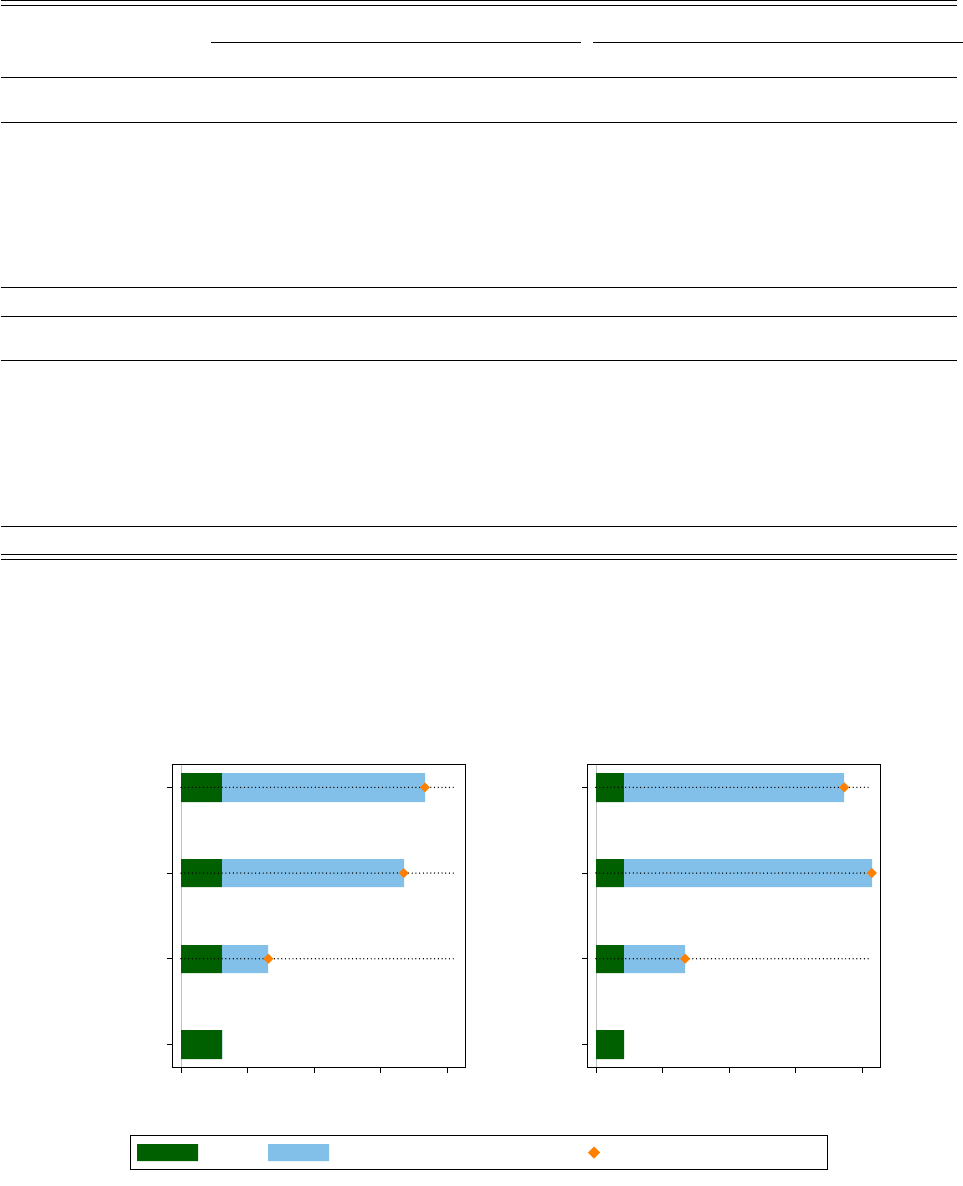
Table II: Global real returns
Real returns Nominal Returns
Bills Bonds Equity
Housing
Bills Bonds Equity
Housing
Full sample:
Mean return p.a. 1.03 2.53 6.88 7.06 4.58 6.06 10.65 11.00
Standard deviation 6.00 10.69 21.79 9.93 3.32 8.88 22.55 10.64
Geometric mean 0.83 1.97 4.66 6.62 4.53 5.71 8.49 10.53
Mean excess return p.a. . 1.51 5.85 6.03
Standard deviation . 8.36 21.27 9.80
Geometric mean . 1.18 3.77 5.60
Observations 1767 1767 1767 1767 1767 1767 1767 1767
Post-1950:
Mean return p.a. 0.88 2.79 8.30 7.42 5.39 7.30 12.97 12.27
Standard deviation 3.42 9.94 24.21 8.87 4.03 9.81 25.03 10.14
Geometric mean 0.82 2.32 5.56 7.08 5.31 6.88 10.26 11.85
Mean excess return p.a. . 1.91 7.42 6.54
Standard deviation . 9.21 23.78 9.17
Geometric mean . 1.51 4.79 6.18
Observations 1022 1022 1022 1022 1022 1022 1022 1022
Note: Annual global returns in 16 countries, equally weighted. Period coverage differs across countries.
Consistent coverage within countries: each country-year observation used to compute the statistics in this
table has data for all four asset returns. Excess returns are computed relative to bills.
Figure II: Global real rates of return
Bills
Bonds
Equity
Housing
0 2 4 6 8
Mean annual return, per cent
Full sample
Bills
Bonds
Equity
Housing
0 2 4 6 8
Mean annual return, per cent
Post-1950
Bills Excess Return vs Bills Mean Annual Return
Notes: Arithmetic average real returns p.a., unweighted, 16 countries. Consistent coverage within each
country: each country-year observation used to compute the average has data for all four asset returns.
13
and riskiness of all four asset classes are very close to the unweighted series in Table II.
The results could be biased due to the country composition of the sample at different dates given
data availability. Figure A.2 plots the average returns for sample-consistent country groups, starting
at benchmark years—the later the benchmark year, the more countries we can include. Again, the
broad patterns discussed above are largely unaffected.
We also investigate whether the results are biased due to the world wars. Figure A.3 plots the
average returns in this case. The main result remains largely unchanged. Appendix Table A.3 also
considers the risky returns during wartime in more detail, to assess the evidence for rare disasters
in our sample. Returns during both wars were indeed low and often negative, although returns
during WW2 in a number of countries were relatively robust.
Finally, our aggregate return data take the perspective of a domestic investor in a representative
country. Appendix Table A.14 instead takes the perspective of a global USD-investor, and assesses
the USD value of the corresponding returns. The magnitude and ranking of returns are similar to
those reported in Table II, although the volatilities are substantially higher. This is to be expected
given that the underlying asset volatility is compounded by the volatility in the exchange rate. We
also find somewhat higher levels of USD returns, compared to those in local currency.
What comes next in our discussion of raw rates of return? We will look more deeply at risky
rates of return, and delve into their time trends and the decomposition of housing and equity
returns into the capital gain and yield components in greater detail in Section IV. We will do the
same for safe returns in Section V. But first, to justify our estimates, since these are new data,
we have to spend considerable time to explain our sources, methods, and calculations. We next
compare our data to other literature in Section III.A. We subject the equity returns and risk premium
calculation to a variety of accuracy checks in Section III.B. We also subject the housing returns and
risk premium calculation to a variety of accuracy checks in Section III.C. Section III.D then discusses
the comparability of the housing and equity return series. For the purposes of our paper, these very
lengthy next four subsections undertake the necessary due diligence and discuss the various quality
and consistency checks we undertook to make our data a reliable source for future analysis—and
only after that is done do we proceed with analysis and interpretation based on our data.
However, we caution that all these checks may be as exhausting as they are exhaustive and a
time-constrained reader eager to confront our main findings may jump to the end of this section
and resume where the analytical core of the paper begins at the start of Section IV on page 33.
III.A. Comparison to existing literature
Earlier work on asset returns has mainly focused on equities and the corresponding risk premium
over safe assets (bills or bonds), starting with Shiller’s analysis of historical US data (Shiller, 1981),
later extended to cover post-1920 Sweden and the UK (Campbell, 1999), and other advanced
economies back to 1900 (Dimson, Marsh, and Staunton, 2009), or back to 1870 (Barro and Urs
´
ua,
2008). The general consensus in this literature is that equities earn a large premium over safe assets.
14

The cross-country estimates of this premium vary between 7% in Barro and Urs
´
ua (2008) and 6% in
Dimson, Marsh, and Staunton (2009) using arithmetic means. Campbell (1999) documents a 4.7%
geometric mean return premium instead.
We find a similarly high, though smaller, equity premium using our somewhat larger and more
consistent historical dataset. Our estimate of the risk premium stands at 5.9% using arithmetic
means, and 3.8% using geometric means (see Table II). This is lower than the estimates by Campbell
(1999) and Barro and Urs
´
ua (2008). The average risk premium is similar to that found by Dimson,
Marsh, and Staunton (2009), but our returns tend to be slightly lower for the overlapping time
period.
17
Details aside, our data do confirm the central finding of the literature on equity market
returns: stocks earn a large premium over safe assets.
Studies on historical housing returns, starting with the seminal work of Robert Shiller (see
Shiller, 2000, for a summary), have largely focused on capital gains. The rental yield component
has received relatively little attention, and in many cases is missing entirely. Most of the literature
pre-dating our work has therefore lacked the necessary data to calculate, infer, or discuss the total
rates of return on housing over the long run. The few studies that take rents into account generally
focus on the post-1970s US sample, and often on commercial real estate. Most existing evidence
either places the real estate risk premium between equities and bonds, or finds that it is similar to
that for equities (see Favilukis, Ludvigson, and Van Nieuwerburgh, 2017; Francis and Ibbotson, 2009;
Ilmanen, 2011; Ruff, 2007). Some studies have even found that over the recent period, real estate
seems to outperform equities in risk-adjusted terms (Cheng, Lin, and Liu, 2008; Shilling, 2003).
The stylized fact from the studies on long-run housing capital appreciation is that over long
horizons, house prices only grow a little faster than the consumer price index. But again, note
that this is only the capital gain component in
(1)
. Low levels of real capital gains to housing was
shown by Shiller (2000) for the US, and is also true, albeit to a lesser extent, in other countries, as
documented in Knoll, Schularick, and Steger (2017). Our long-run average capital appreciation data
for the US largely come from Shiller (2000), with two exceptions. For the 1930s, we use the more
representative index of Fishback and Kollmann (2015) that documents a larger fall in prices during
the Great Depression. From 1975 onwards, we use a Federal Housing Finance Agency index, which
has a slightly broader coverage. Appendix M compares our series with Shiller’s data and finds that
switching to Shiller’s index has no effect on our results for the US. See also the Online Appendix of
Knoll et al. (2017) for further discussion.
However, our paper turns this notion of low housing returns on its head—because we show
that including the yield component in
(1)
in the housing return calculation generates a housing risk
premium roughly as large as the equity risk premium. Prior to our work on historical rental yields
this finding could not be known. Coincidentally, in our long-run data we find that most of the real
17
Our returns are substantially lower for France and Portugal (see Appendix Table A.18). These slightly
lower returns are largely a result of more extensive consistency and accuracy checks that eliminate a number
of upward biases in the series, and better coverage of economic disasters. We discuss these data quality issues
further in Section III.B. Appendix L compares our equity return estimates with the existing literature on a
country basis.
15

equity return also comes from the dividend yield rather than from real equity capital gains which
are low, especially before the 1980s. Thus the post-1980 observation of large capital gain components
in both equity and housing total returns is completely unrepresentative of the normal long-run
patterns in the data, another fact underappreciated before now.
Data on historical returns for all major asset classes allow us to compute the return on aggregate
wealth (see equation 7). In turn, this return can be decomposed into various components by
asset class, and into capital gains and yields, to better understand the drivers of aggregate wealth
fluctuations. This connects our study to the literature on capital income, and the stock of capital (or
wealth) from a national accounts perspective. Even though national accounts and national balance
sheet estimates have existed for some time (see Goldsmith, 1985b; Kuznets, 1941), it is only recently
that scholars have systematized and compared these data to calculate a series of returns on national
wealth.
18
Piketty, Saez, and Zucman (2018) compute balance sheet returns on aggregate wealth and for
individual asset classes using post-1913 US data. Balance sheet return data outside the US are sparse,
although Piketty and Zucman (2014) provide historical estimates at benchmark years for three more
countries, and, after 1970, continuous data for an additional five countries. Appendix R compares
our market-based return estimates for the US with those of Piketty et al. (2018). Housing returns are
very similar. However, equity returns are several percentage points above our estimates, and those
in the market-based returns literature more generally. Part of this difference reflects the fact that
balance sheet returns are computed to measure income before corporate taxes, whereas our returns
take the household perspective and are therefore net of corporate tax. Another explanation for the
difference is likely to come from some measurement error in the national accounts data.
19
When it
comes to housing, our rental yield estimates are broadly comparable and similar to those derived
using the balance sheet approach, for a broad selection of countries and historical time spans.
20
Our dataset complements the market-based return literature by increasing the coverage in terms
of assets, return components, countries, and years; improving data consistency and documentation;
and making the dataset freely available for future research. This comprehensive coverage can also
help connect the market-based return estimates to those centered around national accounts concepts.
We hope that eventually, this can improve the consistency and quality of both market-based returns
and national accounts data.
18
The return on an asset from a national accounts perspective, or the “balance sheet approach” to returns,
r
BS
t
is the sum of the yield, which is capital income (such as rents or profits) in relation to wealth, and capital
gain, which is the change in wealth not attributable to investment. See Appendix R and equation
(13)
for
further details.
19
See Appendix R for more detail. In brief, the main conceptual difference between the two sets of estimates,
once our returns are grossed up for corporate tax, is the inclusion of returns on unlisted equities in the
national accounts data. But existing evidence suggests that these return differentials are not large (Moskowitz
and Vissing-Jørgensen, 2002), and the size of the unlisted sector not sufficiently large to place a large weight
of this explanation, which leads us to conjecture that there is some measurement error in the national income
and wealth estimates that is driving the remaining difference.
20
See Section III.C and Appendix U for more detail.
16

III.B. Accuracy of equity returns
The literature on equity returns has highlighted two main sources of bias in the data: weighting
and sample selection. Weighting biases arise when the stock portfolio weights for the index do
not correspond with those of a representative investor, or a representative agent in the economy.
Selection biases arise when the selection of stocks does not correspond to the portfolio of the
representative investor or agent. This second category also includes issues of survivorship bias and
missing data bias arising from stock exchange closures and restrictions.
We consider how each of these biases affect our equity return estimates in this section. An
accompanying Appendix Table A.29 summarizes the construction of the equity index for each
country and time period, with further details provided in Appendix X.
Weighting bias
The best practice when weighting equity indices is to use market capitalization
of individual stocks. This approach most closely mirrors the composition of a hypothetical represen-
tative investor’s portfolio. Equally-weighted indices are likely to overweight smaller firms, which
tend to carry higher returns and higher volatility.
The existing evidence from historical returns on the Brussels and Paris stock exchanges suggests
that using equally-weighted indices biases returns up by around 0.5 percentage points, and their
standard deviation up by 2–3 percentage points (Annaert, Buelens, Cuyvers, De Ceuster, Deloof,
and De Schepper, 2011; Le Bris and Hautcoeur, 2010). The size of the bias, however, is likely
to vary across across markets and time periods. For example, Grossman (2017) shows that the
market-weighted portfolio of UK stocks outperformed its equally-weighted counterpart over the
period 1869–1929.
To minimize this bias, we use market-capitalization-weighted indices for the vast majority of our
sample (see Appendix Table A.29 and Appendix X). Where market-capitalization weighting was not
available, we have generally used alternative weights such as book capital or transaction volumes,
rather than equally-weighted averages. For the few equally-weighted indices that remain in our
sample, the overall impact on aggregate return estimates ought to be negligible.
Selection and survivorship bias
Relying on an index whose selection does not mirror the
representative investor’s portfolio carries two main dangers. First, a small sample may be unrep-
resentative of overall stock market returns. And second, a sample that is selected ad-hoc, and
especially ex-post, is likely to focus on surviving firms, or successful firms, thus overstating invest-
ment returns. This second bias extends not only to stock prices but also to dividend payments, as
some historical studies only consider dividend-paying firms.
21
The magnitude of survivorship bias
has generally been found to be around 0.5 to 1 percentage points (Annaert, Buelens, and De Ceuster,
21
As highlighted by Brailsford, Handley, and Maheswaran (2012), this was the case with early Australian
data, and the index we use scales down the series for dividend-paying firms to proxy the dividends paid by
all firms, as suggested by these authors.
17

2012; Nielsen and Risager, 2001), but in some time periods and markets it could be larger (see
Le Bris and Hautcoeur, 2010, for France).
As a first best, we always strive to use all-share indices that avoid survivor and selection biases.
For some countries and time periods where no such indices were previously available, we have
constructed new weighted all-share indices from original historical sources (e.g., early historical data
for Norway and Spain). Where an all-share index was not available or newly constructed, we have
generally relied on “blue-chip” stock market indices. These are based on an ex-ante value-weighted
sample of the largest firms on the market. It is updated each year and tends to capture the lion’s
share of total market capitalization. Because the sample is selected ex-ante, it avoids ex-post selection
and survivorship biases. And because historical equity markets have tended to be quite concentrated,
“blue-chip” indices have been shown to be a good proxy for all-share returns (see Annaert, Buelens,
Cuyvers, De Ceuster, Deloof, and De Schepper, 2011). Finally, we include non-dividend-paying
firms in the dividend yield calculation.
Stock market closures and trading restrictions
A more subtle form of selection bias arises
when the stock market is closed and no market price data are available. One way of dealing with
closures is to simply exclude them from the baseline return comparisons. But this implicitly assumes
that the data are “missing at random”—i.e., that stock market closures are unrelated to underlying
equity returns. Existing research on rare disasters and equity premiums shows that this is unlikely
to be true (Nakamura, Steinsson, Barro, and Urs
´
ua, 2013). Stock markets tend to be closed precisely
at times when we would expect returns to be low, such as periods of war and civil unrest. Return
estimates that exclude such rare disasters from the data will thus overstate stock returns.
To guard against this bias, we include return estimates for the periods of stock market closure in
our sample. Where possible, we rely on alternative data sources to fill the gap, such as listings of
other exchanges and over-the-counter transactions—for example, in the case of WW1 Germany we
use the over-the-counter index from Ronge (2002) and for WW2 France we use the newspaper index
from Le Bris and Hautcoeur (2010). In cases where alternative data are not available, we interpolate
the prices of securities listed both before and after the exchange was closed to estimate the return (if
no dividend data are available, we also assume no dividends were paid).
22
Even though this approach only gives us a rough proxy of returns, it is certainly better than
excluding these periods, which effectively assumes that the return during stock market closures is
the same as that when the stock markets are open. In the end, we only have one instance of stock
market closure for which we are unable to estimate returns—that of the Tokyo stock exchange in
1946–1947. Appendix H further assesses the impact of return interpolation on the key moments of
our data and finds that, over the full sample, it is negligible.
22
For example, the Swiss stock exchange was closed between July 1914 and July 1916. Our data for 1914
capture the December 1913–July 1914 return, for 1915 the July 1914–July 1916 return, and for 1916 the July
1916–December 1916 return. For the Spanish Civil war, we take the prices of securities in end-1936 and
end-1940, and apportion the price change in-between equally to years 1937–1939.
18

Table III: Geometric annual average and cumulative total equity returns in periods of stock market closure
Episode Real returns Nominal returns Real capitalization
Geometric
average
Cumulative
Geometric
average
Cumulative
Geometric
average
Cumulative
Spanish Civil War, 1936–40 -4.01 -15.09 9.03 41.32 -10.22 -35.04
Portuguese Revolution, 1974–77 -54.98 -90.88 -44.23 -82.65 -75.29 -98.49
Germany WW1, 1914–18 -21.67 -62.35 3.49 14.72
Switzerland WW1, 1914–16 -7.53 -14.50 -0.84 -1.67 -8.54 -16.34
Netherlands WW2, 1944–46 -12.77 -20.39 -5.09 -8.36
Note: Cumulative and geometric average returns during periods of stock market closure. Estimated by
interpolating returns of shares listed both before an after the exchange was closed. The change in market
capitalization compares the capitalization of all firms before the market was closed, and once it was opened,
and thus includes the effect of any new listings, delistings and bankruptcies that occured during the closure.
Table III shows the estimated stock returns during the periods of stock exchange closure in
our sample. The first two columns show average and cumulative real returns, and the third and
fourth columns show the nominal returns. Aside from the case of WW1 Germany, returns are
calculated by comparing the prices of shares listed both before and after the market closure. Such a
calculation may, however, overstate returns because it selects only those companies that “survived”
the closure. As an additional check, the last two columns of Table III show the inflation-adjusted
change in market capitalization of stocks before and after the exchange was closed. This serves as a
lower bound for investor returns because it would be as if we assumed that all delisted stocks went
bankrupt (i.e., to a zero price) during the market closure.
Indeed, the hypothetical investor returns during the periods of market closure are substantially
below market averages. In line with Nakamura, Steinsson, Barro, and Urs
´
ua (2013), we label these
periods as “rare disasters.” The average per-year geometric mean return ranges from a modestly
negative –4% p.a. during the Spanish Civil War, to losses of roughly 55% p.a. during the three years
after the Portuguese Carnation Revolution. Accounting for returns of delisted firms is likely to bring
these estimates down even further, as evinced by the virtual disappearance of the Portuguese stock
market in the aftermath of the revolution.
Having said this, the impact of these rare events on the average cross-country returns (shown
in Table II) is small, around –0.1 percentage points, precisely because protracted stock market
closures are very infrequent. The impact on country-level average returns is sizeable for Portugal
and Germany (around –1 percentage point), but small for the other countries (–0.1 to –0.4 percentage
points). Appendix G provides a more detailed analysis of returns during consumption disasters. On
average, equity returns during these times are low, with an average cumulative real equity return
drop of 6.7% during the disaster years.
Lastly, Nakamura, Steinsson, Barro, and Urs
´
ua (2013) also highlight a more subtle bias arising
from asset price controls. This generally involves measures by the government to directly control
transaction prices, as in Germany during 1943–47, or to influence the funds invested in the domestic
19

stock market (and hence the prices) via controls on spending and investment, as in France during
WW2 (Le Bris, 2012). These measures are more likely to affect the timing of returns rather than their
long-run average level, and should thus have little impact on our headline estimates. For example,
Germany experienced negative nominal and real returns despite the WW2 stock price controls; and
even though the policies it enacted in occupied France succeeded in generating high nominal stock
returns, the real return on French stocks during 1940–44 was close to zero. Both of these instances
were also followed by sharp drops in stock prices when the controls were lifted.
23
III.C. Accuracy of housing returns
The biases that affect equity returns—weighting and selection—can also apply to returns on housing.
There are also other biases that are specific to housing return estimates. These include costs of
running a housing investment, and the benchmarking of rent-price ratios to construct the historical
rental yield series. We discuss each of these problematic issues in turn in this section. Our focus
throughout is mainly on rental yield data, as the accuracy and robustness of the house price series
has been extensively discussed in Knoll, Schularick, and Steger (2017) in their online appendix.
Maintenance costs
Any homeowner incurs costs for maintenance and repairs which lower the
rental yield and thus the effective return on housing. We deal with this issue by the choice of the
benchmark rent-price ratios. Specifically, we anchor to the Investment Property Database (IPD)
whose rental yields reflect net income—net of property management costs, ground rent, and other
irrecoverable expenditure—as a percentage of the capital employed. The rental yields calculated
using the rent-price approach detailed in Section II.D are therefore net yields. To enable a like-for-
like comparison, our historical benchmark yields are calculated net of estimated running costs and
depreciation. Running costs are broadly defined as housing-related expenses excluding interest,
taxes, and utilities—i.e., maintenance costs, management, and insurance fees.
Applying the rent-price approach to net yield benchmarks assumes that running costs remain
stable relative to gross rental income over time within each country. To check this, Figure III presents
historical estimates of running costs and depreciation for Australia, France, UK, and US, calculated
as the sum of the corresponding housing expenditures and fixed capital consumption items in the
national accounts. The left-hand panel presents these as a proportion of total housing value, and the
right-hand panel as a proportion of gross rent. Relative to housing value, costs have been stable over
the last 40 years, but were somewhat higher in the early-to-mid 20th century. This is to be expected
since these costs are largely related to structures, not land, and structures constituted a greater
share of housing value in the early 20th century (Knoll, Schularick, and Steger, 2017). Additionally,
structures themselves may have been of poorer quality in past times. When taken as a proportion
of gross rent, however, as shown in the right-hand panel of Figure III, housing costs have been
23
The losses in the German case are difficult to ascertain precisely because the lifting of controls was
followed by a re-denomination that imposed a 90% haircut on all shares.
20
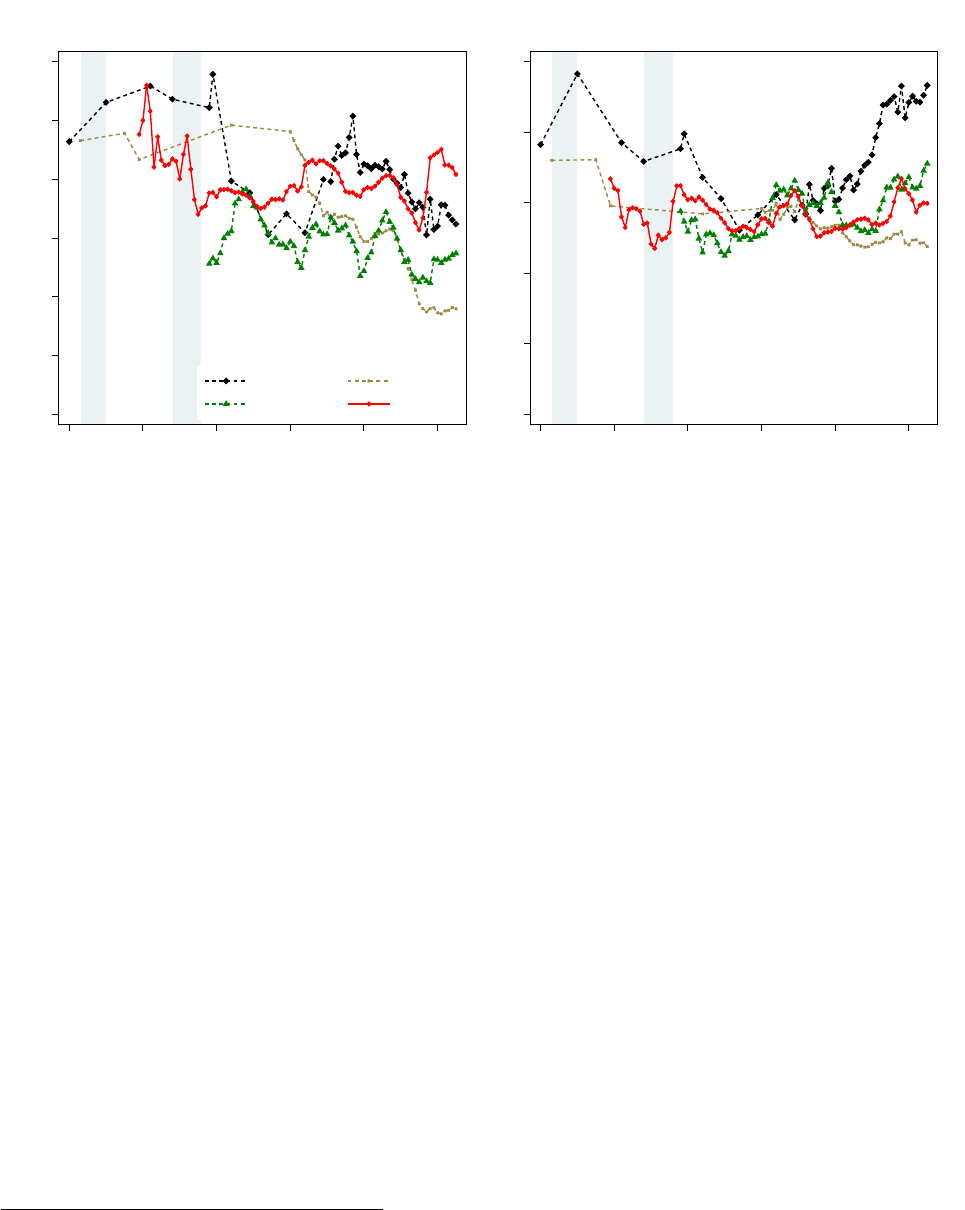
Figure III: Costs of running a housing investment
0 .5 1 1.5 2 2.5 3
1910 1930 1950 1970 1990 2010
Australia France
UK US
Proportion of Housing Value, per cent
0 10 20 30 40 50
1910 1930 1950 1970 1990 2010
Proportion of Gross Rent, per cent
Note: Total costs include depreciation and all other housing-related expenses excluding interest, taxes and
utilities (mainly maintenance and insurance payments). Costs are estimated as the household consumption of
the relevant intermediate housing input, or fixed housing capital, in proportion to total housing wealth (left
panel), or total gross rent (right panel).
relatively stable, or at least not higher historically than they are today. This is likely because both
gross yields and costs are low today, whereas historically both yields and costs were higher, with
the two effects more or less cancelling out. This suggests that the historical rental yields that we
have calculated using the rent-price approach are a good proxy for net yields.
Rental yield benchmarking
To construct historical rental yield series using the rent-price
approach, we start with a benchmark rent-price ratio from the Investment Property Database (IPD),
and extend the series back using the historical rent and house price indices (see Section II.D).
24
This
naturally implies that the level of returns is sensitive to the choice of the benchmark ratio. Moreover,
past errors in rent and house price indices can potentially accumulate over time and may cause one
to substantially over- or understate historical rental yields and housing returns. If the historical
capital gains are overstated, the historical rental yields will be overstated too.
To try to avert such problems, we corroborate our rental yield estimates using a wide range of
alternative historical and current-day sources. The main source of these independent comparisons
comes from estimates using the balance sheet approach and national accounts data. As shown in
equation 12, the “balance sheet” rental yield is the ratio of nationwide net rental income to total
housing wealth. Net rental income is computed as gross rents paid less depreciation, maintenance
24
For Australia and Belgium, we instead rely on yield estimates from transaction-level data (Fox and Tulip
(2014) and
Numbeo.com
, which are more in line with current-day and alternative historical estimates than IPD.
21

and other housing-related expenses (excluding taxes and interest), with all data taken from the
national accounts. The balance sheet approach gives us a rich set of alternative rental yield estimates
both for the present day and even going back in time to the beginning of our sample in a number of
countries. The second source for historical comparisons comes from advertisements in contemporary
newspapers and various other contemporary publications. Third, we also make use of alternative
current-day benchmarks based on transaction-level market rent data, and the rental expenditure
and house price data from
numbeo.com
.
25
For all these measures, we adjust gross yields down to
obtain a proxy for net rental yields.
Historical sources offer point-in-time estimates which avoid the cumulation of errors, but can
nevertheless be imprecise. The balance sheet approach relies on housing wealth and rental income
data, both of which are subject to potential measurement error. For housing wealth, it is inherently
difficult to measure the precise value of all dwellings in the economy. Rental income is largely
driven by the imputed rents of homeowners, which have to be estimated from market rents by
matching the market rent to owner-occupied properties based on various property characteristics.
This procedure can suffer from errors both in the survey data on property characteristics and market
rents, and the matching algorithm.
26
Newspaper advertisements are tied to a specific location, and
often biased towards cities. And transaction-level or survey data sometimes only cover the rental
sector, rather than both renters and homeowners.
Given the potential measurement error in all the series, our final rental yield series uses data
from both the rent-price approach and the alternative benchmarks listed above. More precisely, we
use the following method to construct our final “best-practice” rental yield series. If the rent-price
approach estimates are close to alternative measures, we keep the rent-price approach data. This is
the case for most historical periods in our sample. If there is a persistent level difference between
the rent-price approach and alternative estimates, we adjust the benchmark yield to better match the
historical and current data across the range of sources. This is the case for Australia and Belgium.
If the levels are close for recent data but diverge historically, we adjust the historical estimates to
match the alternative benchmarks. For most countries such adjustments are small or only apply
to a short time span, but for Finland and Spain they are more substantial. Appendix U details the
alternative sources and rental yield construction, including any such adjustments, for each country.
How large is the room for error in our final housing return series? To get a sense of the differences,
Figure IV compares the rent-price approach of net rental yield estimates (black diamonds) with
those using the balance sheet approach (brown triangles). The first three panels show the time series
of the two measures for France, Sweden, and US, and the bottom-right panel shows the correlation
25
The high-quality transaction level data are available for Australia and the US, from Fox and Tulip (2014)
(sourced from RP Data) and Giglio, Maggiori, and Stroebel (2015) (sourced from Trulia) respectively. We use
the Fox and Tulip (2014) yield as benchmark for Australia. For the US, we use IPD because it is in line with
several alternative estimates, unlike Trulia data which are much higher. See Appendix U for further details.
26
For example, in the UK a change to imputation procedures in 2016 and the use of new survey data
resulted in historical revisions which almost tripled imputed rents (see Office for National Statistics, 2016).
We use a mixture of the old and new/revised data for our historical estimates.
22
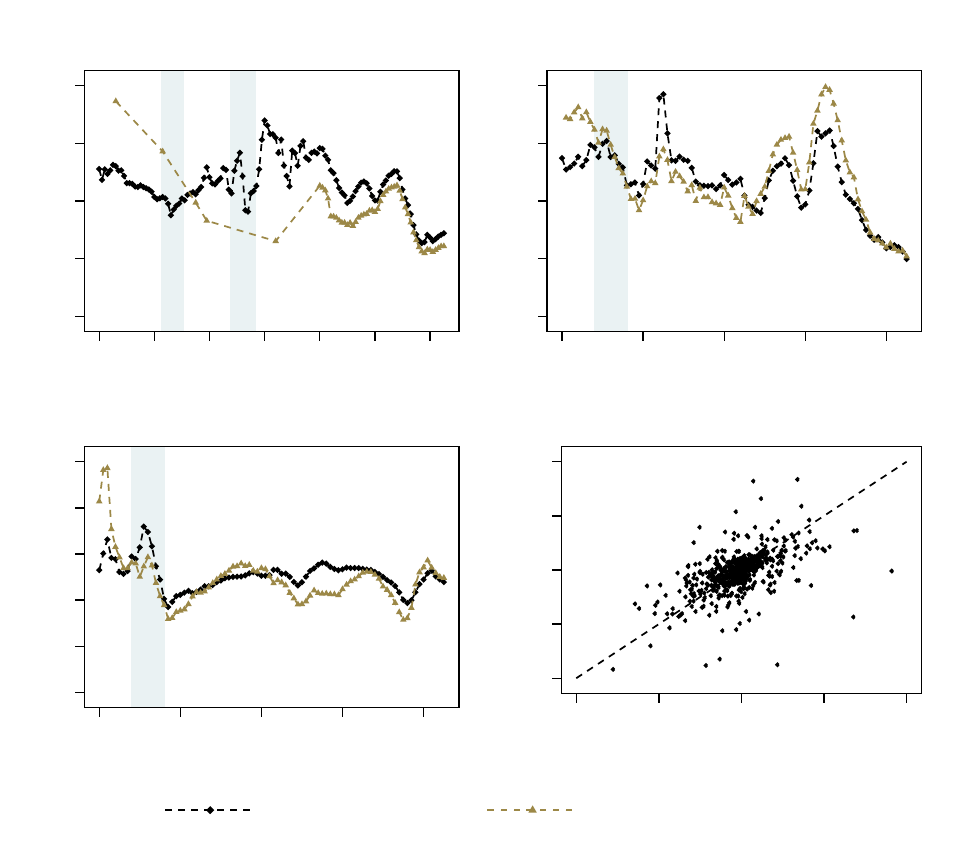
Figure IV: Comparison of the rent-price and balance-sheet approaches for historical rental yields
0 2 4 6 8
1890 1910 1930 1950 1970 1990 2010
France
0 3 6 9 12
1930 1950 1970 1990 2010
Sweden
0 2 4 6 8 10
1930 1950 1970 1990 2010
USA
-2 -1 0 1 2
Change in rent-price yield
-2 -1 0 1 2
Change in balance-sheet yield
Yield co-movement
Rent-price approach Balance sheet approach
Note: The rent-price approach uses the baseline estimates in this paper. The balance sheet approach estimates
the net yield in each year as total rental expenditure less housing running costs and depreciation, in proportion
to total housing wealth.
23

Table IV: Impact of using different rental yield benchmarks
Equity Housing
Baseline Low initial
benchmark
High intial
benchmark
Historical
bench-
marks
Balance
sheet
approach
Mean return p.a. 6.88 7.06 6.29 7.89 6.83 6.30
Standard deviation 21.79 9.93 9.89 10.03 9.93 9.95
Geometric mean 4.66 6.62 5.85 7.45 6.39 5.86
Observations 1767 1767 1767 1767 1767 1767
Note: Average total real returns across 16 countries, equally weighted.
between changes in rent-price and balance sheet yields in nine countries (Australia, Denmark,
France, Germany, Italy, Japan, Sweden, UK, and US).
27
The level of the rent-price ratio using the
two approaches is similar, both in the modern day and historically.
28
The two yield measures also
follow a very similar time series pattern, both in the three countries depicted in panels 1–3, and the
broader sample of countries summarized in the bottom-right panel.
Table IV provides a more comprehensive comparison. Columns 1 and 2 present the arithmetic
and geometric mean, and the standard deviation, for the baseline measures of equity and housing
annual real total returns in our sample (also shown in Table II). Column 3 instead uses the lowest
possible initial benchmark for the housing series.
29
The resulting returns are around 0.8 percentage
points (henceforth, pps) lower, in both arithmetic and geometric mean terms. Column 4 instead
uses the highest available benchmark, thus raising housing returns by 0.8 pps. Column 5 uses
historical benchmarks for all rental yield series before 1980, i.e., we use these benchmarks as the
main source for the yields, and only use the rent-price approach for interpolation.
30
This makes very
little difference to the returns, lowering them by around 0.2 pps. The last column 6 instead uses the
balance sheet approach as the baseline estimate, both for the current and historical period. It then
uses the rent-price approach to fill the gaps and interpolate between the balance sheet estimates.
31
Finally, we compute the total balance sheet return on housing as the sum of capital gains and the
27
We limit our analysis to countries where the balance sheet approach data goes back at least several
decades.
28
For France, the historical data disagree somewhat, with balance sheet approach estimates both above and
below the rent-price approach for some years. We further confirm the housing return series for France using
returns on housing investment trusts, documented in the subsequent sections.
29
For example, the balance sheet approach yield in 2013 Danish data is lower than the IPD yield; hence
column 3 uses the 2013 balance sheet yield as the initial benchmark. For countries where we benchmark to
historical rental yields, we use the same historical benchmark for all three series. For example, for Australia,
we use a historical benchmark yield in 1949. So the “high” housing return series uses the high rental yield
benchmark for 1950–2015, and the historical benchmark for 1900–1949.
30
For example, the series for Denmark is benchmarked to the lower balance sheet approach yield estimates
for 1890–1910 and 1950–1970, and newspaper estimates for 1920–1940 (also see Appendix Figure A.14).
31
Newspaper yield estimates are used as additional benchmarks for interpolation
24

balance sheet yield.
32
The resulting return is 0.8 pps lower than our baseline estimates.
Taken together, this analysis suggests that the potential margins for error are small. Even
under the more stringent checks, housing returns remain within a percentage point of our baseline
estimates. The average return is always similar to equities in arithmetic mean terms, and always
above equities when using the geometric mean.
Geographic coverage and selection biases
Our data aim to approximate the return on a
representative agent’s housing portfolio. Selection bias means that the selection of properties in our
dataset does not mirror the balance sheet of the representative agent. The main reason for this bias
is selective geographical coverage. Housing returns can vary a lot by location, and our data are
based on a sample of housing transactions.
To make our samples as representative as possible, we strive to attain a broad geographic
coverage for both house price and rental data. Knoll, Schularick, and Steger (2017) discuss the
potential location biases in house price data, but find that the house price trends in their, and
hence our, dataset should be representative of country-level trends. When it comes to rents, the
benchmark IPD yields are based on portfolios of institutional investors, which are slightly biased
towards cities. This would lead to lower yields than the national average. On the other hand,
investors may select higher-yielding properties within any given city. Comparisons with aggregate
balance sheet approach data and alternative estimates indicate that, on average, IPD yields tend
to be representative at country level. Further, IPD yields are capitalization weighted, which again
better captures the yield on a representative portfolio. Finally, we aim for national coverage with the
historical rental indices used for extrapolation, and historical balance sheet benchmarks.
Despite this, it is likely that both our house price and rental data are somewhat biased towards
cities and urban areas, especially for historical periods—simply because urban housing data are
more widely available and researched. Even though this would affect the level of capital gain and
yield, it should have little influence on total returns, since cities tend to have higher capital gains, but
lower rental yields.
33
Additionally, Knoll, Schularick, and Steger (2017) show that the rural-urban
divide has a relatively small impact on capital gains. Relatedly, we can establish some bounds on
how much our rental yields can vary with the choice of location. In 2013,
Numbeo.com
data suggest
that price-rent ratios in and out of city centres differ by less than 3 times annual rent. The rental yield
is the inverse of these price-rent ratios. This motivates us to construct a lower bound rent-price ratio
as
RP
low
= 1/(1/RP
actual
+ 3)
and an upper bound rent-price ratio as
RP
high
= 1/(1/RP
actual
− 3)
for each country in 2013 to estimate upper and lower bounds of our housing returns depending on
32
This means that we use market-based house price data for capital gains, which is also common practice
in the balance sheet approach computation, due to the large potential for error when estimating housing
capital gains as a residual between wealth changes and investment. Piketty et al. (2018) use Shiller (2000)
house price data for the balance sheet return computation.
33
Eisfeldt and Demers (2015) study the geographical distribution of returns on single family rentals in the
US from 1970s to today and find that lower capital gain areas tend to have much higher rental yields, and
there is very little geographic variation in total returns.
25
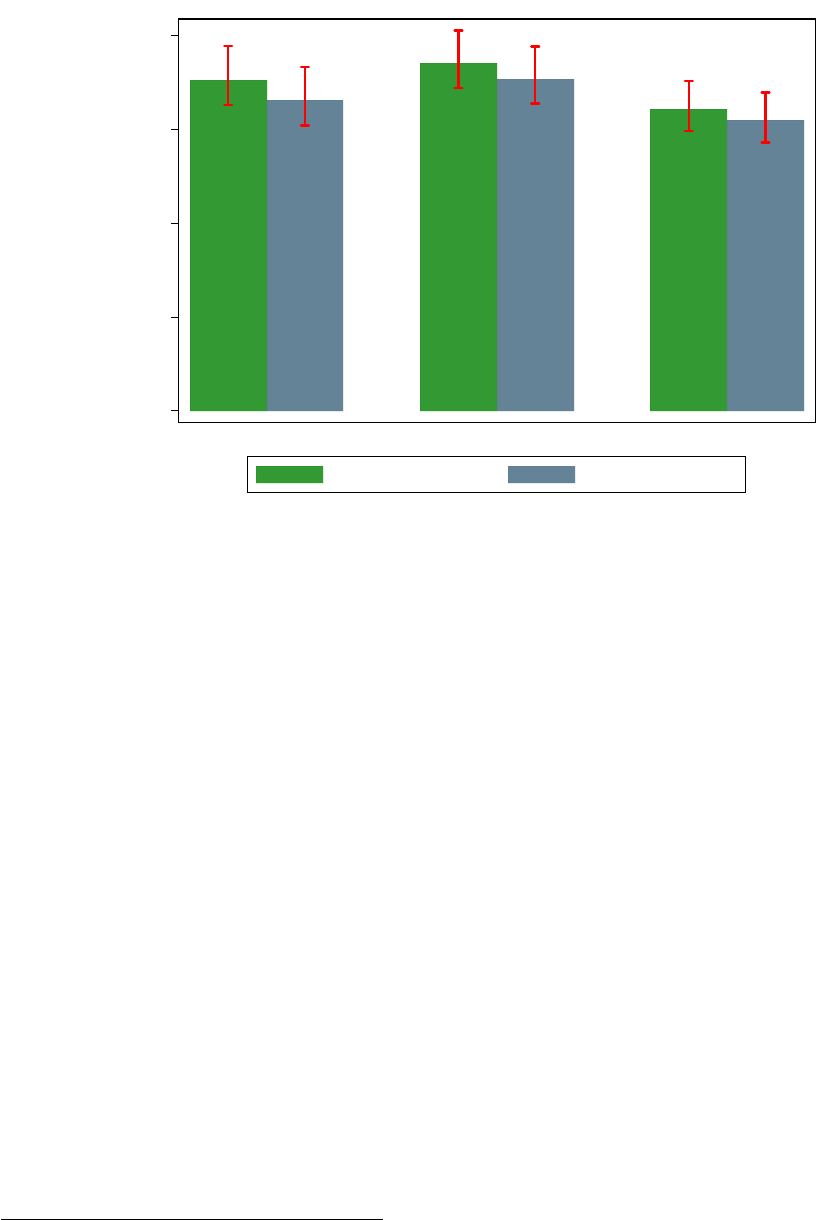
Figure V: Sensitivity of housing returns to a rent-price location correction
0 2 4 6 8
Full sample Post-1950 Post-1980
Arithmetic mean Geometric mean
Note: Bars show the arithmetic- and geometric- average housing returns for selected sub-periods. Error bars
show the impact on historical returns of increasing or reducing the benchmark price/rent ratio by
±
3, which
broadly captures the difference between in- and out-of-city-center locations.
the choice of location. Given the currently high price-rent ratios, these adjustments have a relatively
small impact on our data. Figure V shows that increasing or reducing the price-rent ratio by 3
changes annual return estimates by about ±1 pps per year relative to our preferred baseline.
This suggests that the level of housing returns in our dataset should be representative of a
country-wide portfolio. Still, it could be that returns on locations not included in our sample display
higher volatility. For example, the post-1975 US indices are based on conforming mortgages and
may exclude the more volatile segments of the market. To assess the likely magnitude of this bias,
Table V compares the recent level and volatility of the US conforming mortgage based OFHEO
house price indices with those that cover other segments of the market as well, which are sourced
from Zillow.
34
Comparing columns 2 and 3 of Table V, the nationwide moments of the data are
similar across the two measures—but, as expected, the OFHEO data display slightly higher real
capital gains and slightly lower volatility, because they have a less comprehensive coverage of the
areas that were hit hardest by the subprime crisis, which receives a relatively high weight in the
1995–2015 US sample used here.
Columns 3–5 of Table V also show that the volatility of the housing series increases as we move
from the aggregate portfolio (column 2) to the subnational and local level. The standard deviation of
Zipcode-level housing returns is roughly one-third higher than that in the national data. If investors
34
As we show later in Section IV.C, almost all the volatility in housing returns comes about from house
prices. Therefore for the analysis of volatility, we focus on house prices rather than rental yields.
26

Table V: Level and volatility of real housing capital gains at different levels of coverage and aggregation
Baseline Zillow
National National State County Zipcode
Mean real capital gain p.a. 1.42 0.79 1.07 0.53 0.92
Standard deviation 4.67 5.67 6.05 6.28 7.46
Note: US data, 1995–2015. Average annual real capital gain and standard deviation of house prices. Baseline
data are sourced from the OFHEO index. Zillow data are sourced from the Zillow Home Value Index which
covers around 95% of the US housing stock, and are averages of monthly values. National data are the returns
and volatility of prices for a nationwide housing, and the other figures cover a representative state, county or
zipcode level porftolio respectively.
owned one undiversified house whose price tracks the neighborhood index, the risk and return
characteristics of this portfolio would be somewhat closer to those of the aggregate equity index,
although the gap would still be large.
Of course, it is much more difficult to invest in a diversified housing portfolio than a well-
diversified equity portfolio. That being said, Benhabib and Bisin (2016) show that most equity is
also held in an undiversified manner. The data regarding returns on individual housing and private
equity returns are, however, at this point in time, very sparse. To understand exactly how these
risk-return characteristics play out at a disaggregated level, a more detailed study of individual
portfolios and returns is necessary. This would be a worthy goal of future research.
Another selection bias comes about from the fact that rent data largely come from the rental
market, whereas the majority of housing stock is held by owner-occupiers. To guard against this, we
rely on rental indices that, whenever possible, account for the growth of imputed rents. Additionally,
we benchmark our series to the balance sheet yield data that are constructed to cover the total
housing stock. Still, imputed rents are measured with error, and may not reflect the cost that the
homeowner would pay on the rental market. If owning is relatively cheaper than renting—for
example, due to tax exemptions or long-run house price appreciation—homeowners would purchase
larger or better houses than they would rent, and imputed rents would overstate the value of housing
services accruing to homeowners. On the other hand, buying a house is subject to credit constraints,
which means that renters can afford better houses than homeowners all else equal. In this case,
imputed rents would understate the flow value of housing services. Overall, the direction of any
potential bias is unclear and leaves much scope for future work.
Finally, the portfolio selection in the price and rent series is subject to survivorship bias. In
general, our price and rental yield estimates aim to capture transaction or appraisal values, and
rental costs on a broad and impartially selected portfolio of properties. Some survivorship bias may,
however, enter the series for the following reasons. First, indices that rely on an ex-post selection of
cities may inadvertently choose the more “successful” cities over the less successful ones. Second,
houses that decline in value are likely to lose liquidity and be sold less frequently, hence carrying
27

a lower weight in the index. And third, chain-linking historical house price and rent indices to
compute annual returns will generally ignore the impact of large destructions of the housing stock,
in particular those occurring during wartime.
Several factors suggest that the impact of survivorship bias on housing returns should be limited.
First, Figure V and Knoll, Schularick, and Steger (2017) show that any location-specific bias in our
estimates is likely to be small. Second, if the magnitude of survivorship bias is similar to that in
equity markets (Section III.B), then the bias is also unlikely to be large. Third, the low liquidity and
weight of houses with declining prices is in some ways similar to the documented negative returns
on delisted equities (Shumway, 1997; Shumway and Warther, 1999), which in general cannot be
incorporated into the stock return series due to the lack of data. Therefore this bias should be less
of a concern when comparing housing and equity returns. Finally, similarly to the stock market
closures discussed in Section III.B, even though capital stock destruction during wars can have
a substantial impact on returns in specific years, it is unlikely to profoundly affect cross-country
long-run returns due to the rarity of such events.
35
And as Figure IX later shows, the main facts
in the data are similar for countries that experienced major war destruction on their own territory
versus countries that did not (e.g., Australia, Canada, Sweden, Switzerland, and US). Further,
Appendix Table A.5 shows that housing offers a similar return relative to equity on average even
after wars are excluded.
Returns on real estate investment trusts
Another way to check our housing returns is to
compare them to the historical returns on housing investment trusts. These trusts offer independent
estimates of returns. Real estate investment trusts, or REITs, are investment funds that specialize in
the purchase and management of residential and commercial real estate. Many of these funds list
their shares on the local stock exchange. The return on these shares should closely track total real
estate returns. Differences will arise because the REIT portfolio is more geographically concentrated,
its assets often contain non-residential property, and share price fluctuations may reflect expectations
of future earnings and sentiment, as well as underlying portfolio returns. Further, the REIT portfolio
returns should be net of taxes and transaction costs as well as housing running costs, and may
therefore be somewhat lower than our housing series. Still, returns on the REIT portfolio should be
comparable to housing and can be used to check the general plausibility of our return series.
Figure VI compares our historical housing returns (dashed line) with those on investments
in REITs (solid line) in France and US, two countries for which longer-run REIT return data are
available. The REIT returns series for France refers to shares of the fund “La Fourmi Immobiliere”
(see Simonnet, Gallais-Hamonno, and Arbulu, 1998). The fund acquired a portfolio of 15 properties
in Paris between 1900 and 1913, worth around 36 million euros at 2015 prices, and its shares were
listed on the Paris stock exchange between 1904 and 1997. We exclude the period after 1985, when
35
As a reasonable upper bound, existing estimates suggest that around 33%–40% of the German housing
stock was destroyed by Allied bombing during WW2 (Akbulut-Yuksel, 2014; Diefendorf, 1993), but this would
lower the full-sample country-specific average annual real total return by only about 0.30 pps per year.
28
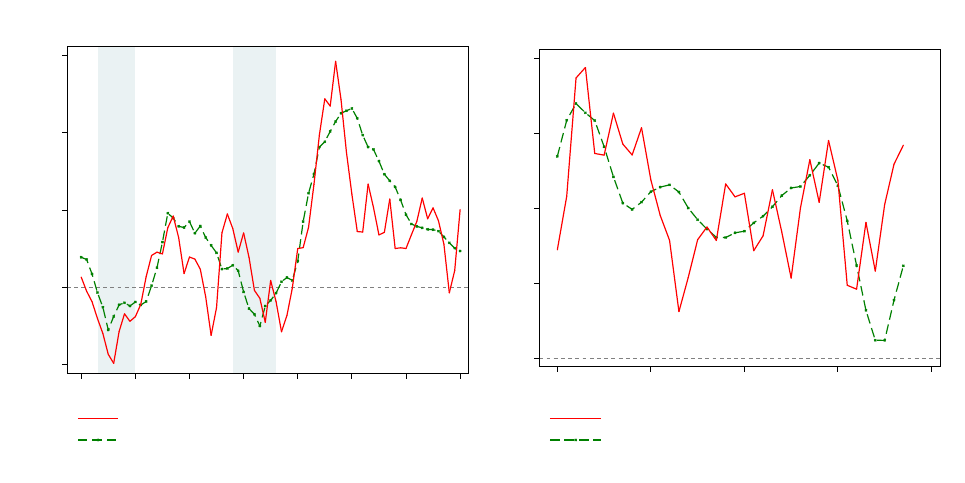
Figure VI: Returns on housing compared to real estate investment funds
-10 0 10 20 30
Per cent
1910 1920 1930 1940 1950 1960 1970 1980
La Fourmi immobiliere: decadal moving average
French Housing: decadal moving average
France
0 5 10 15 20
Per cent
1975 1985 1995 2005 2015
US REITs, unlevered: 5-year moving average
US Housing: 5-year moving average
USA
Note: Total real return on housing, and shares of housing investment firms in France and US. Moving averages.
Following Giacomini, Ling, and Naranjo (2015), we assume a 45% leverage ratio for US REITs.
“La Fourmi Immobiliere” was taken over by AGF. For the US, we use the FTSE NAREIT residential
total return index after 1994, and the general FTSE equity NAREIT before. REIT returns have to be
unlevered to capture the returns on the REIT housing portfolio. “La Fourmi Immobiliere” had an
unlevered balance sheet structure, hence we do not adjust their returns. We assume a REIT leverage
of 45% for the U.S. following Giacomini, Ling, and Naranjo (2015). Returns for France are presented
as decadal moving averages, and for the US as five-year moving averages, given the shorter span of
the US data.
Comparing the solid and dashed lines in Figure VI, the long-run levels of unlevered REIT and
housing returns are remarkably similar. The time trend also follows a similar pattern, especially
in France. The REIT returns, however, tend to be somewhat more volatile—most likely because
they reflect changes in the market’s valuations of future earnings, as well as the current portfolio
performance. The REIT returns also seem to be affected by the general ups and downs of the stock
market: for example, the 1987 “Black Monday” crash and dot-com bust in the U.S., as well as
the 1930s Great Depression and 1960s stock crises in France. This suggests that the valuations of
the funds’ housing portfolios may have been affected by shifts in general stock market sentiment,
possibly unrelated to housing market fundamentals.
Overall, the returns on real estate investment funds serve to confirm the general housing return
level in our dataset. The comparison also suggests that returns in housing markets tend to be
smoother than those in stock markets. The next section examines various factors that can affect the
comparability of housing and equity returns more generally.
29

III.D. Comparability of housing and equity returns
Even if the fundamentals driving housing and equity returns (expected dividend/profit, and rental
flows) are similar, investor returns for the two asset classes may differ for a number of reasons
including taxes, transaction costs, and the financial structure of the investment claim. In this
subsection we consider such comparability issues.
Transaction costs
The conventional wisdom is that while bonds and equities can be purchased
with low transaction costs and at short notice, the seller of a house typically incurs significant
costs. We provide a rough estimate of how transaction costs affect our return estimates for housing.
We perform a simple back-of-the-envelope calculation to do this using contemporary data on
average holding periods of residential real estate and average transaction costs incurred by the buyer.
According to the (OECD, 2012), average round-trip transaction costs across 13 of the 16 countries in
our sample amount to about 7.7 percent of the property’s value.
36
However, these simple cost ratios need to be adjusted for the typical trading frequency of
each asset. According to the American Community Survey of 2007, more than 50 percent of U.S.
homeowners had lived in their current home for more than 10 years. Current average holding
periods are similar in, e.g., the U.K., Australia and the Netherlands. Another way to estimate
housing turnover is using housing sales data, which for the US gives us an average holding period
of close to 20 years.
37
Either way, accounting for transaction costs would thus lower the average
annual return to housing to less than 100 basis points (e.g., 77 basis points per year based on a 7.7%
cost incurred every 10 years).
For equities, the cost of each individual transaction is much smaller, but the number of transac-
tions is much higher. Jones (2002) estimates that at the New York Stock exchange over the period
1900–2001, the average transaction cost was around 80 bps (half bid-ask spread of 30 bps plus
commission rate of 50 bps), while turnover was roughly 60% per year, resulting in the annual
average equity transaction costs of 40 bps. Comparing this number to the back-of-the-envelope
housing transaction cost estimates reported above, it seems that even though equity transaction costs
are probably somewhat lower, the difference between two asset classes is likely to be small—and no
more than 0.5 pps per year.
The fact that housing faces much higher costs per each transaction, however, means that the
realized housing transaction costs may understate the “shadow” utility cost which would include
the suboptimal allocation choices from staying in the same house and not moving, for example. It
might also reduce the volatility of housing returns, making them react more sluggishly to shocks.
This means that the relatively modest short-run volatility of housing returns could mask more
36
Data are available for Australia, Belgium, Switzerland, Germany, Denmark, Finland, France, U.K., Japan,
the Netherlands, Norway, Sweden, and the U.S. Transaction costs are highest in Belgium amounting to nearly
15 percent of the property value and lowest in Denmark amounting to only 1 percent of the property value.
37
Between April 2017 and March 2018, 5.5 millions existing homes were sold in the US at an average price
of $250,000, which amounts to roughly one-twentieth of the total US housing stock.
30

pronounced fluctuations at lower frequencies. Appendix K and Table A.17 compare equity and
housing return volatility over longer horizons of up to 20 years. It turns out that the standard
deviation of housing returns is always around one-half that of equity returns, regardless of the time
horizon, which suggests that housing returns not only have lower short-run volatility, but also less
pronounced swings at all longer horizons.
Leverage
Household-level returns on real estate and equity will be affected by the structure of
the household balance sheet, and how these investments are financed. Jord
`
a, Schularick, and Taylor
(2016) show that advanced economies in the second half of the 20th century experienced a boom in
mortgage lending and borrowing. This surge in household borrowing did not only reflect rising
house prices, it also reflected substantially higher household debt levels relative to asset values (and
relative to household incomes). The majority of households in advanced economies today hold a
leveraged portfolio in their local real estate market. As with any leveraged portfolio, this significantly
increases both the risk and the return associated with the investment. And today, unlike in the
early twentieth century, houses can be levered much more than equities. The benchmark rent-price
ratios from the IPD used to construct estimates of the return to housing refer to rent-price ratios of
unleveraged real estate. Consequently, the estimates presented so far constitute only un-levered
housing returns of a hypothetical long-only investor, which is symmetric to the way we (and the
literature) have treated equities.
However, computing raw returns to housing and equity indices neglects the fact that an equity
investment contains embedded leverage. The underlying corporations have balance sheets with
both debt and equity liabilities. Thus, reconciliation is needed, and two routes can be taken. For
truly comparable raw un-levered returns, equity returns could be de-levered. Alternatively, for truly
comparable levered returns, housing returns would have to be levered up to factor in the actual
leverage (using mortgages) seen on household balance sheets. Is this a big deal in practice? We
argue that it does not bias our conclusions significantly based on some elementary calculations.
Consider, for example, the second reconciliation of levering up housing returns. Let the real
long-term mortgage borrowing rate be
r
0
, and
α
be the leverage of the average house proxied
by total mortgages divided by the value of the housing stock. Then we can solve for levered
real housing returns
TR
0
as a function of un-levered real housing returns
TR
using the formula
TR
0
= (TR − αr
0
))/(1 − α)
. In our data,
TR ≈ 7.0%
and
α ≈ 0.2
. Using long bond return as
a proxy for
r
0
of around
2.5%
p.a., this would imply
TR
0
= 8.1%
.
38
In other words, for the
representative agent the levered housing return is about 110 bps higher than the unlevered housing
return (8.1% versus 7%), a small difference. Such adjustments appear to be inconsequential for the
main conclusions we present in this paper. In fact, they would bolster one of our central new claims
38
For evidence on
α
, the average economy wide housing leverage measured by total mortgages divided by
the value of the housing stock, see Jord
`
a, Schularick, and Taylor (2016). If one preferred to use the mortgage
rate rather than the long bond in this calculation, the evidence in Zimmermann (2017) points to an average
real mortgage rate
r
m
of around
3%
p.a. This would imply
TR
0
= 8%
, only slightly lower than the figure
quoted in the main text.
31

which is that real housing returns at least match or even exceed real equity returns in the long run
when the two are compared on an equal footing.
Taxes
When computing equity and housing returns we do not account for taxes. From an
investor’s perspective accounting for taxes is clearly important. Typically, equity capital gains—and,
for some countries and periods, even dividend income—have been subject to a capital gains tax.
When dividends are not taxed as capital gains, they tend to be taxed as income. In some countries,
housing capital gains are subject to capital gains taxes, but owner-occupied houses in particular
have been granted exemptions in many cases. Imputed rents of homeowners are, unlike dividend
income, almost never taxed. Additionally, housing tends to be subject to asset-specific levies in the
form of property taxes, documented extensively in Appendix Y.
For both equities and housing, the level and applicability of taxes has varied over time. For
housing, this variation in treatment also extends to assessment rules, valuations, and tax band
specifications. As a ballpark estimate, the impact of property taxes would lower real estate returns
by less than 1.0 pps per year relative to equity (see Appendix Y for further details). The various
exemptions for homeowners make the impact of capital gains taxes on real estate returns even
harder to quantify but such exemptions also imply that differential tax treatment is unlikely to play
an important role in explaining differences in the return between equities and housing.
39
Since quantifying the time- and country-varying effect of taxes on returns with precision is
beyond the scope of this study, throughout this paper we focus on pre-tax returns from an investor
perspective. Importantly, these pre-tax returns are net of corporate profit taxes, which are netted
out before the cashflow payment to the investor. Studies of returns from an aggregate wealth
perspective such as Piketty, Saez, and Zucman (2018) typically compute business equity returns
gross of corporate tax. Appendix S discusses the impact of adding back corporate taxes on our
return data. Equity returns before corporate tax would be roughly 1 percentage point higher than
our baseline estimates (Table A.27). This adjustment is, however, very much an upper bound on the
housing-equity return differential for the following reasons. First, as noted above, a true like-for-like
comparison should also delever equity returns and compare the returns on business and housing
wealth. Appendix S Table A.27 estimates that first adding back corporate taxes, and then delevering
equity returns leaves them approximately equal to the baseline estimates that we report. Second, the
total tax burden on the pre-corporate-tax equity returns is likely to be higher than on housing, since
in light of the various homeowner exemptions, the post-corporate-tax burden on the two assets
appears to be roughly similar. Third, the returns on the two asset classes are similar before 1920,
when the corporate tax rate was close to zero.
39
Note that whilst this is true for aggregate or owner-occupied housing, the tax burden on landlords is
likely to be somewhat higher than that on holders of listed equity, because landlords do not benefit from the
homeowner exemptions to property taxes, and their rental income is taxed.
32

Table VI: Impact of using end-of-year versus yearly-average asset prices
Equity (MSCI index) Housing (this paper)
End-of-year Yearly average Yearly average
Mean return p.a. 8.70 7.51 6.55
Standard deviation 27.56 22.00 7.45
Observations 694 694 694
Note: Annual global real returns in 16 countries, equally weighted, 1970–2015. End-of-year returns are
computed using the return index value for the last day of the year. Yearly average returns are computed
using the average index value throughout the year.
Temporal aggregation and return averaging
The way house and equity price indices are
constructed is likely to influence the volatility of the return series. The house price indices used
for return calculations (e.g., indices from national statistical agencies) tend to be an average of all
transactions in a given year, or use a sample of transactions or appraisal values throughout the year.
But the equity prices used for return calculations, by the usual convention followed here, on the
contrary, compare end-of-year prices of shares. The use of end-of-year rather than yearly-average
prices mechanically makes equity returns more volatile.
We can assess the magnitude of this effect by constructing an equity return index based on
annual averages of daily data, to mimic the way housing returns are computed, and then comparing
it to a “normal” return using end-of-year index values. For this robustness exercise we use daily
MSCI equity returns data for 1970–2015. Table VI presents the end-of-year and yearly-average real
equity returns in the first two columns, and our yearly-average housing returns for the same time
period in the third column. Comparing the first two columns shows that yearly averaging lowers
the standard deviation of returns by around one-fifth, or 5 pps. It also lowers the average return by
around 1 ppt, because the return series is a transformation of the raw price data, and lowering the
variance reduces the mean of the return. But the standard deviation of the smoothed yearly-average
equity series is still almost three times that of housing over the same time period.
Because historical house price data sometimes rely on relatively few transactions, they are likely
to be somewhat less smooth than averages of daily data. Therefore Table VI provides an upper
bound of the impact of averaging on our return series. Even taking this upper bound at face value,
the averaging of house price indices is likely to explain some, but far from all, of the differences in
volatility of equity and housing returns.
IV. Risky rates of return
At this waystation the lengthy pilgrimage of Section III ends: the numerous details of how we
compiled our data; the many important, but somewhat technical, aspects of data construction;
the extensive accuracy checks. In these next sections the pace picks up and the focus turns to
33
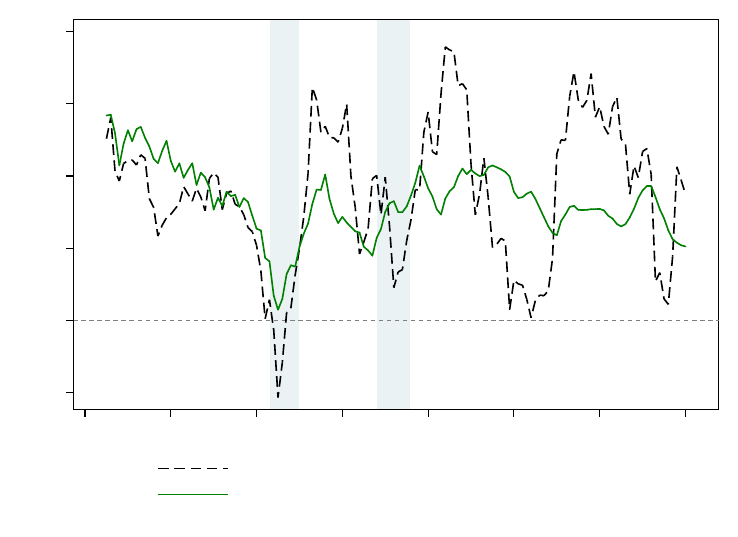
Figure VII: Trends in real returns on equity and housing
-4 0 4 8 12 16
Per cent
1870 1890 1910 1930 1950 1970 1990 2010
Real equity return: decadal moving average
Real housing return: decadal moving average
Note: Mean returns for 16 countries, weighted by real GDP. Decadal moving averages.
analysis and interpretation of the data. We examine broad trends and explore their implications
for how we think about macroeconomics and finance, confronting the four big themes laid out in
the introduction: the long-run behavior of risky returns, safe returns, risk premia, and “
r
minus
g
.”
Readers who skipped the better part of Section III are welcomed to rejoin the flow here.
IV.A. Global returns
We first turn in Figure VII to a more detailed inspection of the returns on the risky assets, equity and
housing. The global returns are GDP-weighted averages of the 16 countries in our sample. Although
we do not show the unweighted data, the corresponding figure would look very similar. We smooth
the data using a decadal moving averages as explained earlier. For example, the observation reported
in 1900 is the average of data from 1895 to 1905. Figure VII shows the trends in decadal-average
real returns on housing (solid line) and equity (dashed line) for our entire sample. In addition,
Figure VIII displays the average rolling decadal correlation of annual risky returns between asset
classes, across countries, and with inflation.
Risky returns were high in the 1870s and 1880s, fell slowly at first, but then sharply after 1900,
with the decade-average real equity returns turning negative during WW1. Risky returns recovered
quickly in the 1920s, before experiencing a drop in the the Great Depression, especially for equities.
Strikingly, after WW2 the trajectories of returns for the two risky asset classes had similar long-run
means but over shorter periods diverged markedly from each other.
34

Figure VIII: Correlations across risky asset returns
0 .2 .4 .6
1870 1890 1910 1930 1950 1970 1990 2010
Equity vs Housing
-.4 -.2 0 .2 .4 .6
1870 1890 1910 1930 1950 1970 1990 2010
Equity (nom.) Housing (nominal)
Comovement with inflation
-.2 0 .2 .4 .6 .8
1870 1890 1910 1930 1950 1970 1990 2010
Equity (real) Housing (real)
Cross-country comovement
Note: Rolling decadal correlations. The global correlation coefficient is the average of individual countries for
the rolling window. Cross-country correlation coefficient is the average of all country pairs for a given asset
class. Country coverage differs across time periods.
Equity returns have experienced many pronounced global boom-bust cycles, much more so than
housing returns, with average real returns as high as +16% and as low as –4% over entire decades.
Equity returns fell in WW2, boomed in the post-war reconstruction, and fell off again in the climate
of general macroeconomic instability in the 1970s. Equity returns bounced back following a wave of
deregulation and privatization in the 1980s. The next major event was the Global Financial Crisis,
which exacted its toll on equities and to some extent housing, as we shall see.
Housing returns, on the other hand, have remained remarkably stable over almost the entire
post-WW2 period. As a consequence, the correlation between equity and housing returns, depicted
in the top left panel of Figure VIII, was highly positive before WW2, but has all but disappeared
35

over the past five decades. The low covariance of equity and housing returns over the long run
reveals potential attractive gains from diversification across these two asset classes that economists,
up to now, have been unable to measure or analyze.
In terms of relative returns, we see that housing persistently outperformed equity up until WW1,
even though both of these asset returns followed a broadly similar temporal pattern. In recent
decades, equities have slightly outperformed housing in (arithmetic, not geometric) average, but
with much higher volatility and cyclicality. Furthermore, upswings in equity prices have generally
not coincided with times of low growth or high inflation, when standard asset pricing theory would
say high returns would have been particularly valuable.
The top-right panel of Figure VIII examines the correlation between risky rates of return and
inflation. It shows that equity co-moved negatively with inflation in the 1970s, while housing
provided a more robust hedge against an unusually rapid surge consumer prices. In fact, apart from
the interwar period, when the world was gripped by a broad deflationary bias, we find that equity
returns have co-moved negatively with inflation in almost all eras. Moreover, the big downswings
in equity returns in the two world wars and the 1970s coincided with periods of generally poor
economic performance.
In the past two decades equity returns have also become highly correlated across countries,
as shown by the sharp rise in the degree of cross-country comovement in the bottom-left panel
of Figure VIII, measured as the average of all country-pair correlations for a given window.
40
A
well-diversified global equity portfolio has thus become less of a hedge against country-specific risk
(Quinn and Voth, 2008). As is a matter of debate, this may reflect greater freedom to arbitrage and
trade across equity markets globally, or an increase in the global shocks to which firms, especially
those in the typical equity index, are increasingly exposed. In contrast to equities, cross-country
housing returns have remained relatively uncorrelated, perhaps because housing assets remain less
globally tradable than equities, or because they are more exposed to idiosyncratic country-level
shocks.
IV.B. Country returns
Next we explore risky returns in individual countries. Table VII shows returns on equities and
housing by country for the full sample and for the post-1950 and post-1980 subsamples. Long-run
risky asset returns for most countries are close to 6%–8% per year, a figure which we think represents
a robust and strong real return to risky capital. Still, the figures also show an important degree of
40
We report the average of all country-pair combinations for a given window, calculated as
Corr
i,t
=
∑
j
∑
k6=j
Corr(r
i,j,t∈T
, r
i,k,t∈T
)
∑
j
∑
k6=j
1
for asset
i
(here: equities or housing), and time window
T = (t − 5, t + 5)
. Here
j
and
k
denote the country
pairs, and r denotes real returns, constructed as described in Section II.C.
36

Table VII: Real rates of return on equity and housing
Country Full Sample Post 1950 Post 1980
Equity Housing Equity Housing Equity Housing
Australia 7.79 6.37 7.53 8.29 8.70 7.16
Belgium 6.23 7.89 9.65 8.14 11.49 7.20
Denmark 7.49 8.22 9.73 7.04 13.30 5.14
Finland 10.03 9.58 12.89 11.18 16.32 9.47
France 3.21 6.39 6.01 9.68 9.61 5.78
Germany 7.11 7.82 7.53 5.30 10.07 4.13
Italy 7.25 4.77 6.09 5.55 9.45 4.57
Japan 6.00 6.54 6.21 6.74 5.62 3.58
Netherlands 6.96 7.28 9.19 8.53 11.51 6.41
Norway 5.67 8.03 7.33 9.10 12.22 9.82
Portugal 4.51 6.31 4.84 6.01 8.60 7.15
Spain 5.83 5.21 7.75 5.83 11.96 4.62
Sweden 8.02 8.30 11.37 8.94 15.87 9.00
Switzerland 6.51 5.63 8.37 5.64 9.29 6.19
UK 6.83 5.44 9.10 6.57 9.11 6.81
USA 8.46 6.10 8.89 5.76 9.31 5.86
Average, unweighted 6.67 7.26 8.30 7.47 10.78 6.43
Average, weighted 7.12 6.72 8.19 6.40 9.08 5.50
Note: Average annual real returns. Period coverage differs across countries. Consistent coverage within
countries: each country-year observation used to compute the statistics in this table has data for both real
housing and equity returns. The average, unweighted and average, weighted figures are respectively the
unweighted and real-GDP-weighted arithmetic averages of individual country returns.
heterogeneity among countries. Many of the countries that experienced large political shocks show
lower equity returns. This is the case for Portugal and Spain which both underwent prolonged civil
strife, and France which undertook a wave of nationalizations in the aftermath of WW2. French
equity returns are also negatively affected by the fallout from the world wars, and the fallout from
an oil crisis in the 1960s (for more detail, see Blancheton, Bonin, and Le Bris, 2014; Le Bris and
Hautcoeur, 2010). In contrast, real equity returns in Finland have been as high as
10%
, on average
throughout the sample. Housing returns also show considerable heterogeneity. Returns on housing
have been high on average in the Nordic countries, but low in Italy and Spain. US risky asset returns
fall roughly in the middle of the country-specific figures, with equity returns slightly above average,
and housing returns slightly below. Our estimates of post-WW2 US housing returns are in line with
those in Favilukis, Ludvigson, and Van Nieuwerburgh (2017).
41
The degree of heterogeneity and
the relative ranking of returns is broadly similar when comparing the full sample to the post-1950
period.
This country-level evidence reinforces one of our main findings: housing has been as good a
long-run investment as equities, and possibly better. Housing has offered a similar return to equity
in the majority of countries and time periods. In the long-run, housing outperformed equities in
41
Favilukis, Ludvigson, and Van Nieuwerburgh (2017) estimate a gross nominal return on US housing of
9%–11%, based on three data sources going back to 1950s and 1970s. This implies a net real return of around
5%–7% (once inflation, maintenance and running costs are subtracted), in line with our estimates in Table VII.
37
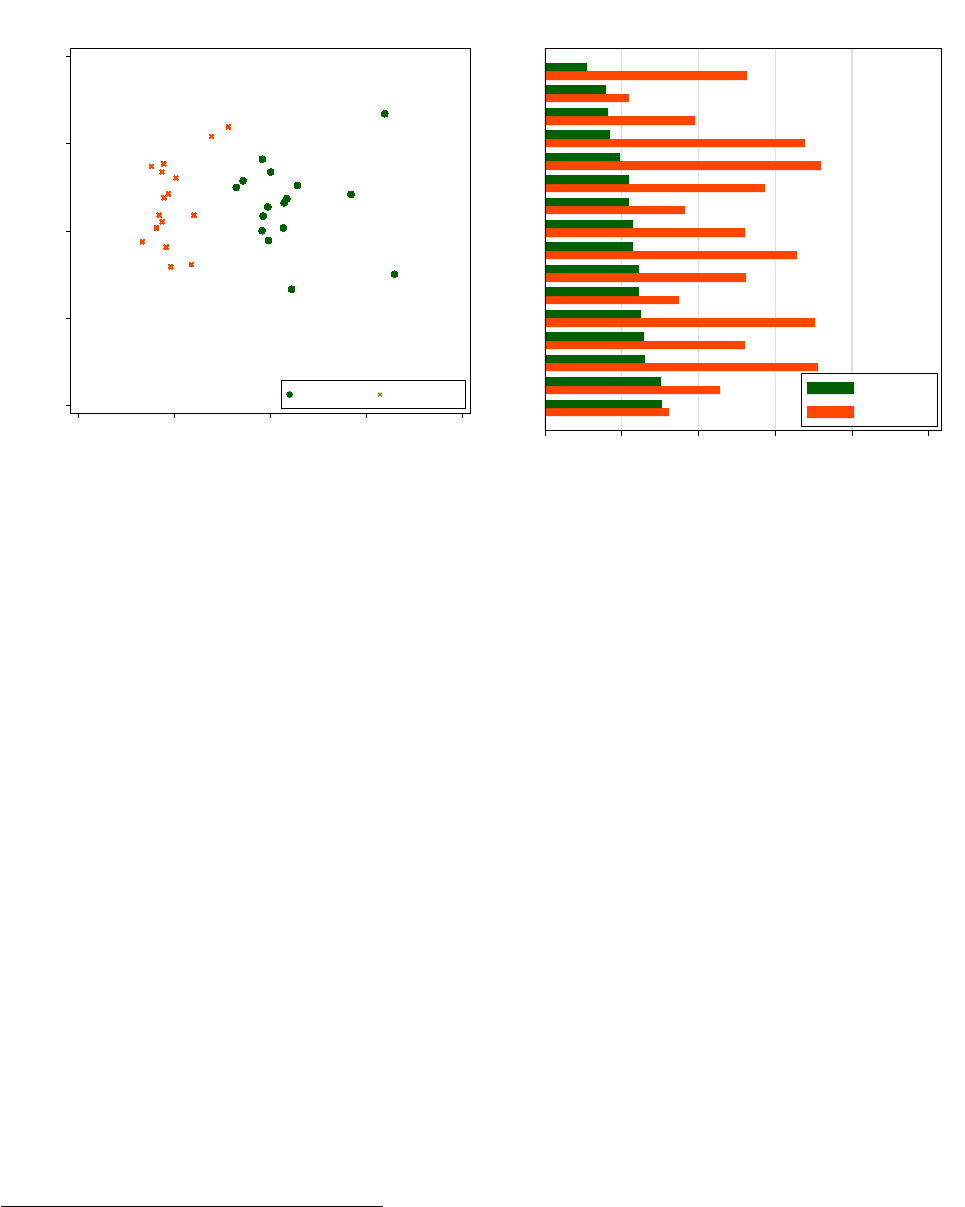
Figure IX: Risk and return of equity and housing
AUSAUSAUSAUSAUSAUSAUSAUSAUSAUSAUSAUSAUSAUSAUSAUSAUSAUSAUSAUSAUSAUSAUSAUSAUSAUSAUSAUSAUSAUSAUSAUSAUSAUSAUSAUSAUSAUSAUSAUSAUSAUSAUSAUSAUSAUSAUSAUSAUSAUSAUSAUSAUSAUSAUSAUSAUSAUSAUSAUSAUSAUSAUSAUSAUSAUSAUSAUSAUSAUSAUSAUSAUSAUSAUSAUSAUSAUSAUSAUSAUSAUSAUSAUSAUSAUSAUSAUSAUSAUSAUSAUSAUSAUSAUSAUSAUSAUSAUSAUSAUSAUSAUSAUSAUSAUSAUSAUSAUSAUSAUSAUSAUSAUSAUSAUSAUSAUSAUSAUSAUSAUSAUSAUSAUSAUSAUSAUSAUSAUSAUSAUSAUSAUSAUSAUSAUSAUSAUSAUSAUSAUSAUSAUSAUSAUS
BELBELBELBELBELBELBELBELBELBELBELBELBELBELBELBELBELBELBELBELBELBELBELBELBELBELBELBELBELBELBELBELBELBELBELBELBELBELBELBELBELBELBELBELBELBELBELBELBELBELBELBELBELBELBELBELBELBELBELBELBELBELBELBELBELBELBELBELBELBELBELBELBELBELBELBELBELBELBELBELBELBELBELBELBELBELBELBELBELBELBELBELBELBELBELBELBELBELBELBELBELBELBELBELBELBELBELBELBELBELBELBELBELBELBELBELBELBELBELBELBELBELBELBELBELBELBELBELBELBELBELBELBELBELBELBELBELBELBELBELBELBELBELBELBELBEL
DNKDNKDNKDNKDNKDNKDNKDNKDNKDNKDNKDNKDNKDNKDNKDNKDNKDNKDNKDNKDNKDNKDNKDNKDNKDNKDNKDNKDNKDNKDNKDNKDNKDNKDNKDNKDNKDNKDNKDNKDNKDNKDNKDNKDNKDNKDNKDNKDNKDNKDNKDNKDNKDNKDNKDNKDNKDNKDNKDNKDNKDNKDNKDNKDNKDNKDNKDNKDNKDNKDNKDNKDNKDNKDNKDNKDNKDNKDNKDNKDNKDNKDNKDNKDNKDNKDNKDNKDNKDNKDNKDNKDNKDNKDNKDNKDNKDNKDNKDNKDNKDNKDNKDNKDNKDNKDNKDNKDNKDNKDNKDNKDNKDNKDNKDNKDNKDNKDNKDNKDNKDNKDNKDNKDNKDNKDNKDNKDNKDNKDNKDNKDNKDNKDNKDNKDNKDNKDNKDNKDNKDNKDNKDNKDNKDNK
FINFINFINFINFINFINFINFINFINFINFINFINFINFINFINFINFINFINFINFINFINFINFINFINFINFINFINFINFINFINFINFINFINFINFINFINFINFINFINFINFINFINFINFINFINFINFINFINFINFINFINFINFINFINFINFINFINFINFINFINFINFINFINFINFINFINFINFINFINFINFINFINFINFINFINFINFINFINFINFINFINFINFINFINFINFINFINFINFINFINFINFINFINFINFINFINFINFINFINFINFINFINFINFINFINFINFINFINFINFINFINFINFINFINFINFINFINFINFINFINFINFINFINFINFINFINFINFINFINFINFINFINFINFINFINFINFINFINFINFINFINFINFINFINFINFIN
FRAFRAFRAFRAFRAFRAFRAFRAFRAFRAFRAFRAFRAFRAFRAFRAFRAFRAFRAFRAFRAFRAFRAFRAFRAFRAFRAFRAFRAFRAFRAFRAFRAFRAFRAFRAFRAFRAFRAFRAFRAFRAFRAFRAFRAFRAFRAFRAFRAFRAFRAFRAFRAFRAFRAFRAFRAFRAFRAFRAFRAFRAFRAFRAFRAFRAFRAFRAFRAFRAFRAFRAFRAFRAFRAFRAFRAFRAFRAFRAFRAFRAFRAFRAFRAFRAFRAFRAFRAFRAFRAFRAFRAFRAFRAFRAFRAFRAFRAFRAFRAFRAFRAFRAFRAFRAFRAFRAFRAFRAFRAFRAFRAFRAFRAFRAFRAFRAFRAFRAFRAFRAFRAFRAFRAFRAFRAFRAFRAFRAFRAFRAFRAFRAFRAFRAFRAFRAFRAFRAFRAFRAFRAFRAFRAFRA
DEUDEUDEUDEUDEUDEUDEUDEUDEUDEUDEUDEUDEUDEUDEUDEUDEUDEUDEUDEUDEUDEUDEUDEUDEUDEUDEUDEUDEUDEUDEUDEUDEUDEUDEUDEUDEUDEUDEUDEUDEUDEUDEUDEUDEUDEUDEUDEUDEUDEUDEUDEUDEUDEUDEUDEUDEUDEUDEUDEUDEUDEUDEUDEUDEUDEUDEUDEUDEUDEUDEUDEUDEUDEUDEUDEUDEUDEUDEUDEUDEUDEUDEUDEUDEUDEUDEUDEUDEUDEUDEUDEUDEUDEUDEUDEUDEUDEUDEUDEUDEUDEUDEUDEUDEUDEUDEUDEUDEUDEUDEUDEUDEUDEUDEUDEUDEUDEUDEUDEUDEUDEUDEUDEUDEUDEUDEUDEUDEUDEUDEUDEUDEUDEUDEUDEUDEUDEUDEUDEUDEUDEUDEUDEUDEUDEU
ITAITAITAITAITAITAITAITAITAITAITAITAITAITAITAITAITAITAITAITAITAITAITAITAITAITAITAITAITAITAITAITAITAITAITAITAITAITAITAITAITAITAITAITAITAITAITAITAITAITAITAITAITAITAITAITAITAITAITAITAITAITAITAITAITAITAITAITAITAITAITAITAITAITAITAITAITAITAITAITAITAITAITAITAITAITAITAITAITAITAITAITAITAITAITAITAITAITAITAITAITAITAITAITAITAITAITAITAITAITAITAITAITAITAITAITAITAITAITAITAITAITAITAITAITAITAITAITAITAITAITAITAITAITAITAITAITAITAITAITAITAITAITAITAITAITA
JPNJPNJPNJPNJPNJPNJPNJPNJPNJPNJPNJPNJPNJPNJPNJPNJPNJPNJPNJPNJPNJPNJPNJPNJPNJPNJPNJPNJPNJPNJPNJPNJPNJPNJPNJPNJPNJPNJPNJPNJPNJPNJPNJPNJPNJPNJPNJPNJPNJPNJPNJPNJPNJPNJPNJPNJPNJPNJPNJPNJPNJPNJPNJPNJPNJPNJPNJPNJPNJPNJPNJPNJPNJPNJPNJPNJPNJPNJPNJPNJPNJPNJPNJPNJPNJPNJPNJPNJPNJPNJPNJPNJPNJPNJPNJPNJPNJPNJPNJPNJPNJPNJPNJPNJPNJPNJPNJPNJPNJPNJPNJPNJPNJPNJPNJPNJPNJPNJPNJPNJPNJPNJPNJPNJPNJPNJPNJPNJPNJPNJPNJPNJPNJPNJPNJPNJPNJPNJPNJPNJPNJPNJPNJPNJPNJPN
NLDNLDNLDNLDNLDNLDNLDNLDNLDNLDNLDNLDNLDNLDNLDNLDNLDNLDNLDNLDNLDNLDNLDNLDNLDNLDNLDNLDNLDNLDNLDNLDNLDNLDNLDNLDNLDNLDNLDNLDNLDNLDNLDNLDNLDNLDNLDNLDNLDNLDNLDNLDNLDNLDNLDNLDNLDNLDNLDNLDNLDNLDNLDNLDNLDNLDNLDNLDNLDNLDNLDNLDNLDNLDNLDNLDNLDNLDNLDNLDNLDNLDNLDNLDNLDNLDNLDNLDNLDNLDNLDNLDNLDNLDNLDNLDNLDNLDNLDNLDNLDNLDNLDNLDNLDNLDNLDNLDNLDNLDNLDNLDNLDNLDNLDNLDNLDNLDNLDNLDNLDNLDNLDNLDNLDNLDNLDNLDNLDNLDNLDNLDNLDNLDNLDNLDNLDNLDNLDNLDNLDNLDNLDNLDNLDNLD
NORNORNORNORNORNORNORNORNORNORNORNORNORNORNORNORNORNORNORNORNORNORNORNORNORNORNORNORNORNORNORNORNORNORNORNORNORNORNORNORNORNORNORNORNORNORNORNORNORNORNORNORNORNORNORNORNORNORNORNORNORNORNORNORNORNORNORNORNORNORNORNORNORNORNORNORNORNORNORNORNORNORNORNORNORNORNORNORNORNORNORNORNORNORNORNORNORNORNORNORNORNORNORNORNORNORNORNORNORNORNORNORNORNORNORNORNORNORNORNORNORNORNORNORNORNORNORNORNORNORNORNORNORNORNORNORNORNORNORNORNORNORNORNORNORNOR
PRTPRTPRTPRTPRTPRTPRTPRTPRTPRTPRTPRTPRTPRTPRTPRTPRTPRTPRTPRTPRTPRTPRTPRTPRTPRTPRTPRTPRTPRTPRTPRTPRTPRTPRTPRTPRTPRTPRTPRTPRTPRTPRTPRTPRTPRTPRTPRTPRTPRTPRTPRTPRTPRTPRTPRTPRTPRTPRTPRTPRTPRTPRTPRTPRTPRTPRTPRTPRTPRTPRTPRTPRTPRTPRTPRTPRTPRTPRTPRTPRTPRTPRTPRTPRTPRTPRTPRTPRTPRTPRTPRTPRTPRTPRTPRTPRTPRTPRTPRTPRTPRTPRTPRTPRTPRTPRTPRTPRTPRTPRTPRTPRTPRTPRTPRTPRTPRTPRTPRTPRTPRTPRTPRTPRTPRTPRTPRTPRTPRTPRTPRTPRTPRTPRTPRTPRTPRTPRTPRTPRTPRTPRTPRTPRTPRT
ESPESPESPESPESPESPESPESPESPESPESPESPESPESPESPESPESPESPESPESPESPESPESPESPESPESPESPESPESPESPESPESPESPESPESPESPESPESPESPESPESPESPESPESPESPESPESPESPESPESPESPESPESPESPESPESPESPESPESPESPESPESPESPESPESPESPESPESPESPESPESPESPESPESPESPESPESPESPESPESPESPESPESPESPESPESPESPESPESPESPESPESPESPESPESPESPESPESPESPESPESPESPESPESPESPESPESPESPESPESPESPESPESPESPESPESPESPESPESPESPESPESPESPESPESPESPESPESPESPESPESPESPESPESPESPESPESPESPESPESPESPESPESPESPESPESP
SWESWESWESWESWESWESWESWESWESWESWESWESWESWESWESWESWESWESWESWESWESWESWESWESWESWESWESWESWESWESWESWESWESWESWESWESWESWESWESWESWESWESWESWESWESWESWESWESWESWESWESWESWESWESWESWESWESWESWESWESWESWESWESWESWESWESWESWESWESWESWESWESWESWESWESWESWESWESWESWESWESWESWESWESWESWESWESWESWESWESWESWESWESWESWESWESWESWESWESWESWESWESWESWESWESWESWESWESWESWESWESWESWESWESWESWESWESWESWESWESWESWESWESWESWESWESWESWESWESWESWESWESWESWESWESWESWESWESWESWESWESWESWESWESWESWE
CHECHECHECHECHECHECHECHECHECHECHECHECHECHECHECHECHECHECHECHECHECHECHECHECHECHECHECHECHECHECHECHECHECHECHECHECHECHECHECHECHECHECHECHECHECHECHECHECHECHECHECHECHECHECHECHECHECHECHECHECHECHECHECHECHECHECHECHECHECHECHECHECHECHECHECHECHECHECHECHECHECHECHECHECHECHECHECHECHECHECHECHECHECHECHECHECHECHECHECHECHECHECHECHECHECHECHECHECHECHECHECHECHECHECHECHECHECHECHECHECHECHECHECHECHECHECHECHECHECHECHECHECHECHECHECHECHECHECHECHECHECHECHECHECHECHE
GBRGBRGBRGBRGBRGBRGBRGBRGBRGBRGBRGBRGBRGBRGBRGBRGBRGBRGBRGBRGBRGBRGBRGBRGBRGBRGBRGBRGBRGBRGBRGBRGBRGBRGBRGBRGBRGBRGBRGBRGBRGBRGBRGBRGBRGBRGBRGBRGBRGBRGBRGBRGBRGBRGBRGBRGBRGBRGBRGBRGBRGBRGBRGBRGBRGBRGBRGBRGBRGBRGBRGBRGBRGBRGBRGBRGBRGBRGBRGBRGBRGBRGBRGBRGBRGBRGBRGBRGBRGBRGBRGBRGBRGBRGBRGBRGBRGBRGBRGBRGBRGBRGBRGBRGBRGBRGBRGBRGBRGBRGBRGBRGBRGBRGBRGBRGBRGBRGBRGBRGBRGBRGBRGBRGBRGBRGBRGBRGBRGBRGBRGBRGBRGBRGBRGBRGBRGBRGBRGBRGBRGBRGBRGBRGBRGBR
USAUSAUSAUSAUSAUSAUSAUSAUSAUSAUSAUSAUSAUSAUSAUSAUSAUSAUSAUSAUSAUSAUSAUSAUSAUSAUSAUSAUSAUSAUSAUSAUSAUSAUSAUSAUSAUSAUSAUSAUSAUSAUSAUSAUSAUSAUSAUSAUSAUSAUSAUSAUSAUSAUSAUSAUSAUSAUSAUSAUSAUSAUSAUSAUSAUSAUSAUSAUSAUSAUSAUSAUSAUSAUSAUSAUSAUSAUSAUSAUSAUSAUSAUSAUSAUSAUSAUSAUSAUSAUSAUSAUSAUSAUSAUSAUSAUSAUSAUSAUSAUSAUSAUSAUSAUSAUSAUSAUSAUSAUSAUSAUSAUSAUSAUSAUSAUSAUSAUSAUSAUSAUSAUSAUSAUSAUSAUSAUSAUSAUSAUSAUSAUSAUSAUSAUSAUSAUSAUSAUSAUSAUSAUSAUSAUSA
AUSAUSAUSAUSAUSAUSAUSAUSAUSAUSAUSAUSAUSAUSAUSAUSAUSAUSAUSAUSAUSAUSAUSAUSAUSAUSAUSAUSAUSAUSAUSAUSAUSAUSAUSAUSAUSAUSAUSAUSAUSAUSAUSAUSAUSAUSAUSAUSAUSAUSAUSAUSAUSAUSAUSAUSAUSAUSAUSAUSAUSAUSAUSAUSAUSAUSAUSAUSAUSAUSAUSAUSAUSAUSAUSAUSAUSAUSAUSAUSAUSAUSAUSAUSAUSAUSAUSAUSAUSAUSAUSAUSAUSAUSAUSAUSAUSAUSAUSAUSAUSAUSAUSAUSAUSAUSAUSAUSAUSAUSAUSAUSAUSAUSAUSAUSAUSAUSAUSAUSAUSAUSAUSAUSAUSAUSAUSAUSAUSAUSAUSAUSAUSAUSAUSAUSAUSAUSAUSAUSAUSAUSAUSAUSAUSAUS
BELBELBELBELBELBELBELBELBELBELBELBELBELBELBELBELBELBELBELBELBELBELBELBELBELBELBELBELBELBELBELBELBELBELBELBELBELBELBELBELBELBELBELBELBELBELBELBELBELBELBELBELBELBELBELBELBELBELBELBELBELBELBELBELBELBELBELBELBELBELBELBELBELBELBELBELBELBELBELBELBELBELBELBELBELBELBELBELBELBELBELBELBELBELBELBELBELBELBELBELBELBELBELBELBELBELBELBELBELBELBELBELBELBELBELBELBELBELBELBELBELBELBELBELBELBELBELBELBELBELBELBELBELBELBELBELBELBELBELBELBELBELBELBELBELBEL
DNKDNKDNKDNKDNKDNKDNKDNKDNKDNKDNKDNKDNKDNKDNKDNKDNKDNKDNKDNKDNKDNKDNKDNKDNKDNKDNKDNKDNKDNKDNKDNKDNKDNKDNKDNKDNKDNKDNKDNKDNKDNKDNKDNKDNKDNKDNKDNKDNKDNKDNKDNKDNKDNKDNKDNKDNKDNKDNKDNKDNKDNKDNKDNKDNKDNKDNKDNKDNKDNKDNKDNKDNKDNKDNKDNKDNKDNKDNKDNKDNKDNKDNKDNKDNKDNKDNKDNKDNKDNKDNKDNKDNKDNKDNKDNKDNKDNKDNKDNKDNKDNKDNKDNKDNKDNKDNKDNKDNKDNKDNKDNKDNKDNKDNKDNKDNKDNKDNKDNKDNKDNKDNKDNKDNKDNKDNKDNKDNKDNKDNKDNKDNKDNKDNKDNKDNKDNKDNKDNKDNKDNKDNKDNKDNKDNK
FINFINFINFINFINFINFINFINFINFINFINFINFINFINFINFINFINFINFINFINFINFINFINFINFINFINFINFINFINFINFINFINFINFINFINFINFINFINFINFINFINFINFINFINFINFINFINFINFINFINFINFINFINFINFINFINFINFINFINFINFINFINFINFINFINFINFINFINFINFINFINFINFINFINFINFINFINFINFINFINFINFINFINFINFINFINFINFINFINFINFINFINFINFINFINFINFINFINFINFINFINFINFINFINFINFINFINFINFINFINFINFINFINFINFINFINFINFINFINFINFINFINFINFINFINFINFINFINFINFINFINFINFINFINFINFINFINFINFINFINFINFINFINFINFINFIN
FRAFRAFRAFRAFRAFRAFRAFRAFRAFRAFRAFRAFRAFRAFRAFRAFRAFRAFRAFRAFRAFRAFRAFRAFRAFRAFRAFRAFRAFRAFRAFRAFRAFRAFRAFRAFRAFRAFRAFRAFRAFRAFRAFRAFRAFRAFRAFRAFRAFRAFRAFRAFRAFRAFRAFRAFRAFRAFRAFRAFRAFRAFRAFRAFRAFRAFRAFRAFRAFRAFRAFRAFRAFRAFRAFRAFRAFRAFRAFRAFRAFRAFRAFRAFRAFRAFRAFRAFRAFRAFRAFRAFRAFRAFRAFRAFRAFRAFRAFRAFRAFRAFRAFRAFRAFRAFRAFRAFRAFRAFRAFRAFRAFRAFRAFRAFRAFRAFRAFRAFRAFRAFRAFRAFRAFRAFRAFRAFRAFRAFRAFRAFRAFRAFRAFRAFRAFRAFRAFRAFRAFRAFRAFRAFRAFRA
DEUDEUDEUDEUDEUDEUDEUDEUDEUDEUDEUDEUDEUDEUDEUDEUDEUDEUDEUDEUDEUDEUDEUDEUDEUDEUDEUDEUDEUDEUDEUDEUDEUDEUDEUDEUDEUDEUDEUDEUDEUDEUDEUDEUDEUDEUDEUDEUDEUDEUDEUDEUDEUDEUDEUDEUDEUDEUDEUDEUDEUDEUDEUDEUDEUDEUDEUDEUDEUDEUDEUDEUDEUDEUDEUDEUDEUDEUDEUDEUDEUDEUDEUDEUDEUDEUDEUDEUDEUDEUDEUDEUDEUDEUDEUDEUDEUDEUDEUDEUDEUDEUDEUDEUDEUDEUDEUDEUDEUDEUDEUDEUDEUDEUDEUDEUDEUDEUDEUDEUDEUDEUDEUDEUDEUDEUDEUDEUDEUDEUDEUDEUDEUDEUDEUDEUDEUDEUDEUDEUDEUDEUDEUDEUDEUDEU
ITAITAITAITAITAITAITAITAITAITAITAITAITAITAITAITAITAITAITAITAITAITAITAITAITAITAITAITAITAITAITAITAITAITAITAITAITAITAITAITAITAITAITAITAITAITAITAITAITAITAITAITAITAITAITAITAITAITAITAITAITAITAITAITAITAITAITAITAITAITAITAITAITAITAITAITAITAITAITAITAITAITAITAITAITAITAITAITAITAITAITAITAITAITAITAITAITAITAITAITAITAITAITAITAITAITAITAITAITAITAITAITAITAITAITAITAITAITAITAITAITAITAITAITAITAITAITAITAITAITAITAITAITAITAITAITAITAITAITAITAITAITAITAITAITAITA
JPNJPNJPNJPNJPNJPNJPNJPNJPNJPNJPNJPNJPNJPNJPNJPNJPNJPNJPNJPNJPNJPNJPNJPNJPNJPNJPNJPNJPNJPNJPNJPNJPNJPNJPNJPNJPNJPNJPNJPNJPNJPNJPNJPNJPNJPNJPNJPNJPNJPNJPNJPNJPNJPNJPNJPNJPNJPNJPNJPNJPNJPNJPNJPNJPNJPNJPNJPNJPNJPNJPNJPNJPNJPNJPNJPNJPNJPNJPNJPNJPNJPNJPNJPNJPNJPNJPNJPNJPNJPNJPNJPNJPNJPNJPNJPNJPNJPNJPNJPNJPNJPNJPNJPNJPNJPNJPNJPNJPNJPNJPNJPNJPNJPNJPNJPNJPNJPNJPNJPNJPNJPNJPNJPNJPNJPNJPNJPNJPNJPNJPNJPNJPNJPNJPNJPNJPNJPNJPNJPNJPNJPNJPNJPNJPNJPN
NLDNLDNLDNLDNLDNLDNLDNLDNLDNLDNLDNLDNLDNLDNLDNLDNLDNLDNLDNLDNLDNLDNLDNLDNLDNLDNLDNLDNLDNLDNLDNLDNLDNLDNLDNLDNLDNLDNLDNLDNLDNLDNLDNLDNLDNLDNLDNLDNLDNLDNLDNLDNLDNLDNLDNLDNLDNLDNLDNLDNLDNLDNLDNLDNLDNLDNLDNLDNLDNLDNLDNLDNLDNLDNLDNLDNLDNLDNLDNLDNLDNLDNLDNLDNLDNLDNLDNLDNLDNLDNLDNLDNLDNLDNLDNLDNLDNLDNLDNLDNLDNLDNLDNLDNLDNLDNLDNLDNLDNLDNLDNLDNLDNLDNLDNLDNLDNLDNLDNLDNLDNLDNLDNLDNLDNLDNLDNLDNLDNLDNLDNLDNLDNLDNLDNLDNLDNLDNLDNLDNLDNLDNLDNLDNLDNLD
NORNORNORNORNORNORNORNORNORNORNORNORNORNORNORNORNORNORNORNORNORNORNORNORNORNORNORNORNORNORNORNORNORNORNORNORNORNORNORNORNORNORNORNORNORNORNORNORNORNORNORNORNORNORNORNORNORNORNORNORNORNORNORNORNORNORNORNORNORNORNORNORNORNORNORNORNORNORNORNORNORNORNORNORNORNORNORNORNORNORNORNORNORNORNORNORNORNORNORNORNORNORNORNORNORNORNORNORNORNORNORNORNORNORNORNORNORNORNORNORNORNORNORNORNORNORNORNORNORNORNORNORNORNORNORNORNORNORNORNORNORNORNORNORNORNOR
PRTPRTPRTPRTPRTPRTPRTPRTPRTPRTPRTPRTPRTPRTPRTPRTPRTPRTPRTPRTPRTPRTPRTPRTPRTPRTPRTPRTPRTPRTPRTPRTPRTPRTPRTPRTPRTPRTPRTPRTPRTPRTPRTPRTPRTPRTPRTPRTPRTPRTPRTPRTPRTPRTPRTPRTPRTPRTPRTPRTPRTPRTPRTPRTPRTPRTPRTPRTPRTPRTPRTPRTPRTPRTPRTPRTPRTPRTPRTPRTPRTPRTPRTPRTPRTPRTPRTPRTPRTPRTPRTPRTPRTPRTPRTPRTPRTPRTPRTPRTPRTPRTPRTPRTPRTPRTPRTPRTPRTPRTPRTPRTPRTPRTPRTPRTPRTPRTPRTPRTPRTPRTPRTPRTPRTPRTPRTPRTPRTPRTPRTPRTPRTPRTPRTPRTPRTPRTPRTPRTPRTPRTPRTPRTPRTPRT
ESPESPESPESPESPESPESPESPESPESPESPESPESPESPESPESPESPESPESPESPESPESPESPESPESPESPESPESPESPESPESPESPESPESPESPESPESPESPESPESPESPESPESPESPESPESPESPESPESPESPESPESPESPESPESPESPESPESPESPESPESPESPESPESPESPESPESPESPESPESPESPESPESPESPESPESPESPESPESPESPESPESPESPESPESPESPESPESPESPESPESPESPESPESPESPESPESPESPESPESPESPESPESPESPESPESPESPESPESPESPESPESPESPESPESPESPESPESPESPESPESPESPESPESPESPESPESPESPESPESPESPESPESPESPESPESPESPESPESPESPESPESPESPESPESPESP
SWESWESWESWESWESWESWESWESWESWESWESWESWESWESWESWESWESWESWESWESWESWESWESWESWESWESWESWESWESWESWESWESWESWESWESWESWESWESWESWESWESWESWESWESWESWESWESWESWESWESWESWESWESWESWESWESWESWESWESWESWESWESWESWESWESWESWESWESWESWESWESWESWESWESWESWESWESWESWESWESWESWESWESWESWESWESWESWESWESWESWESWESWESWESWESWESWESWESWESWESWESWESWESWESWESWESWESWESWESWESWESWESWESWESWESWESWESWESWESWESWESWESWESWESWESWESWESWESWESWESWESWESWESWESWESWESWESWESWESWESWESWESWESWESWESWE
CHECHECHECHECHECHECHECHECHECHECHECHECHECHECHECHECHECHECHECHECHECHECHECHECHECHECHECHECHECHECHECHECHECHECHECHECHECHECHECHECHECHECHECHECHECHECHECHECHECHECHECHECHECHECHECHECHECHECHECHECHECHECHECHECHECHECHECHECHECHECHECHECHECHECHECHECHECHECHECHECHECHECHECHECHECHECHECHECHECHECHECHECHECHECHECHECHECHECHECHECHECHECHECHECHECHECHECHECHECHECHECHECHECHECHECHECHECHECHECHECHECHECHECHECHECHECHECHECHECHECHECHECHECHECHECHECHECHECHECHECHECHECHECHECHECHE
GBRGBRGBRGBRGBRGBRGBRGBRGBRGBRGBRGBRGBRGBRGBRGBRGBRGBRGBRGBRGBRGBRGBRGBRGBRGBRGBRGBRGBRGBRGBRGBRGBRGBRGBRGBRGBRGBRGBRGBRGBRGBRGBRGBRGBRGBRGBRGBRGBRGBRGBRGBRGBRGBRGBRGBRGBRGBRGBRGBRGBRGBRGBRGBRGBRGBRGBRGBRGBRGBRGBRGBRGBRGBRGBRGBRGBRGBRGBRGBRGBRGBRGBRGBRGBRGBRGBRGBRGBRGBRGBRGBRGBRGBRGBRGBRGBRGBRGBRGBRGBRGBRGBRGBRGBRGBRGBRGBRGBRGBRGBRGBRGBRGBRGBRGBRGBRGBRGBRGBRGBRGBRGBRGBRGBRGBRGBRGBRGBRGBRGBRGBRGBRGBRGBRGBRGBRGBRGBRGBRGBRGBRGBRGBRGBRGBR
USAUSAUSAUSAUSAUSAUSAUSAUSAUSAUSAUSAUSAUSAUSAUSAUSAUSAUSAUSAUSAUSAUSAUSAUSAUSAUSAUSAUSAUSAUSAUSAUSAUSAUSAUSAUSAUSAUSAUSAUSAUSAUSAUSAUSAUSAUSAUSAUSAUSAUSAUSAUSAUSAUSAUSAUSAUSAUSAUSAUSAUSAUSAUSAUSAUSAUSAUSAUSAUSAUSAUSAUSAUSAUSAUSAUSAUSAUSAUSAUSAUSAUSAUSAUSAUSAUSAUSAUSAUSAUSAUSAUSAUSAUSAUSAUSAUSAUSAUSAUSAUSAUSAUSAUSAUSAUSAUSAUSAUSAUSAUSAUSAUSAUSAUSAUSAUSAUSAUSAUSAUSAUSAUSAUSAUSAUSAUSAUSAUSAUSAUSAUSAUSAUSAUSAUSAUSAUSAUSAUSAUSAUSAUSAUSAUSA
0 3 6 9 12
Mean annual return, per cent
0 10 20 30 40
Standard Deviation
Equity Housing
Return and Risk
0 .25 .5 .75 1 1.25
AUS
USA
SWE
FIN
CHE
ESP
JPN
BEL
NLD
GBR
DNK
NOR
FRA
DEU
ITA
PRT
Sharpe ratios
Equity
Housing
Note: Left panel: average real return p.a. and standard deviation. Right panel: Sharpe ratios, measured
as
(
¯
r
i
−
¯
r
bill
)/σ
i
, where
i
is the risky asset with
¯
r
i
mean return and
σ
i
standard deviation. 16 countries.
Consistent coverage within each country.
absolute terms in 6 countries, and equities outperformed housing in 5. Returns on the two assets
were about the same in the remaining 5 countries. After WW2, housing was the best-performing
asset class in 3 countries, and equities in 9.
However, although aggregate total returns on equities exceed those on housing for certain
countries and time periods, equities do not outperform housing in simple risk-adjusted terms.
Figure IX compares the risk and returns of housing and equities for each country. The left panel
plots average annual real returns on housing and equities against their standard deviation. The right
panel shows the Sharpe ratios for equities and housing for each country in the sample.
42
Housing
provides a higher return per unit of risk in each of the 16 countries in our sample, with Sharpe
ratios on average more than double those for equities.
IV.C. Decomposition of returns
To further look into the underlying drivers of housing and equity returns, we decompose them into
the capital gain (price) and yield (dividend or rent) components. To be consistent with the data
in Section III and Table II, we decompose real total return into real capital gain—that is, the price
change net of inflation—and dividend or rental yield—that is, the nominal yield as proportion of
42
The Sharpe ratio is calculated as
(
¯
r
i
−
¯
r
bill
)/σ
i
, where
i
is the risky asset (housing or equity) with
¯
r
i
mean
return and σ
i
standard deviation.
38

Table VIII: Total return components for equity and housing
Equity Housing
Real capital
gain
Dividend
income
Real total
return
Real capital
gain
Rental
income
Real total
return
Full sample:
Mean return p.a. 2.78 4.17 6.82 1.61 5.50 6.92
Standard deviation 21.37 1.74 21.89 9.87 2.05 10.40
Geometric mean 0.57 4.16 4.58 1.15 5.48 6.43
Observations 1707 1707 1707 1707 1707 1707
Post-1950:
Mean return p.a. 4.73 3.80 8.36 2.39 5.22 7.38
Standard deviation 23.70 1.81 24.24 8.59 1.93 8.95
Geometric mean 2.03 3.79 5.62 2.06 5.21 7.04
Observations 995 995 995 995 995 995
Note: Average annual real capital gain, dividend or rental income, and total return across 16 countries,
unweighted. Standard deviation in parentheses. Period coverage differs across countries. Consistent coverage
within countries: each country-year observation used to compute the statistics in this table has data for both
equity and housing returns, capital gains and yields. Dividend and rental income expressed in percent of
previous year’s asset price.
the previous year’s share or house price.
43
Yet caveats arise. In principle, it is not entirely clear
whether inflation should be subtracted from the capital gain or yield component. Moreover, firms
may buyback shares to generate low-tax capital gains instead of paying out higher-taxed dividends;
thus, the manner of distribution of total returns may not be invariant to circumstances.
Table VIII decomposes equity and housing returns into capital gains and dividends or rents, for
the full cross-country sample and the period after 1950. Over the full sample, most of the real return
is attributable to the yield. Dividends account for roughly 60% of real equity returns, and rents for
roughly 80% of real housing returns. In terms of geometric means (Table VIII, row 3), almost all of
both equity and housing returns are attributable to, respectively, dividend and rental income. After
1950, capital gains become more important for both equities and housing. For equities, real capital
gains account for the majority of the total return after 1950, and for housing for roughly one-third.
The importance of dividends and rents is partly a matter of convention. Appendix N and
Appendix Table A.20 computes the equivalent decomposition for nominal returns, and finds that
the capital gain versus dividend/rental income split is then closer to roughly 50/50. Nevertheless,
43
The small residual difference between combined capital gain and dividend income, and the equity total
return, accounts for gain and loss from capital operations such as stock splits or share buybacks, and income
from reinvestment of dividends.
39

Table IX: Total return components for equity and housing by country
Equity Housing
Real
capital
gain
Dividend
income
Real
total
return
Capital
gain
share
Real
capital
gain
Rental
income
Real
total
return
Capital
gain
share
Australia 3.06 4.90 7.79 0.38 2.53 3.99 6.37 0.24
(16.30) (1.08) (16.94) (11.94) (0.92) (11.92)
Belgium 2.53 3.83 6.23 0.40 1.95 6.15 7.89 0.14
(22.92) (1.64) (23.61) (15.05) (1.46) (15.51)
Denmark 2.71 4.95 7.49 0.35 1.26 7.13 8.22 0.08
(16.14) (2.09) (16.45) (7.02) (2.42) (7.60)
Finland 5.19 5.08 10.03 0.51 2.82 7.14 9.58 0.17
(31.18) (1.95) (31.93) (14.61) (2.86) (15.62)
France -0.37 3.73 3.21 0.09 1.55 5.09 6.39 0.13
(21.57) (1.33) (22.14) (9.39) (1.14) (10.03)
Germany 2.74 4.08 7.11 0.40 1.86 6.03 7.82 0.13
(20.99) (1.58) (21.72) (9.24) (2.61) (10.16)
Italy 3.78 3.61 7.25 0.51 1.45 3.49 4.77 0.18
(27.99) (1.34) (28.42) (9.28) (1.59) (9.61)
Japan 3.12 2.65 6.00 0.54 2.00 4.70 6.54 0.18
(18.94) (1.77) (19.15) (7.99) (1.24) (8.41)
Netherlands 3.38 4.87 8.10 0.41 1.75 5.96 7.51 0.13
(19.21) (1.57) (19.61) (8.22) (1.68) (8.76)
Norway 1.61 4.21 5.67 0.28 1.49 6.72 8.03 0.10
(19.33) (1.60) (19.82) (8.26) (1.19) (8.70)
Portugal 2.92 2.28 5.11 0.56 1.13 4.47 5.21 0.12
(34.34) (1.22) (34.73) (9.26) (1.98) (9.37)
Spain 1.80 4.53 5.83 0.28 1.26 4.16 5.21 0.13
(20.48) (2.30) (21.15) (11.59) (1.60) (12.00)
Sweden 4.08 4.12 8.02 0.50 1.39 7.12 8.30 0.09
(19.54) (1.05) (20.03) (8.46) (1.61) (8.88)
Switzerland 3.17 3.20 6.27 0.50 0.81 4.54 5.24 0.08
(20.61) (1.46) (20.73) (6.50) (0.62) (6.74)
UK 2.48 4.53 6.83 0.35 1.63 3.94 5.44 0.17
(19.12) (1.39) (19.73) (8.94) (0.86) (9.15)
USA 4.19 4.38 8.46 0.49 0.90 5.33 6.10 0.08
(18.90) (1.57) (19.17) (7.84) (0.75) (8.12)
Note: Arithmetic average of annual real capital gain, dividend or rental income, and total return, full sample.
Standard deviation in parentheses. Period coverage differs across countries. Consistent coverage within
countries: each country-year observation used to compute the statistics in this table has data for both equity
and housing returns, capital gains and yields. Dividend and rental income expressed as percentage of
previous year’s asset price. Capital gain share is the proportion of real total return attributable to real capital
gains.
40
without dividends or rents, the real returns on both assets would be low, especially in geometric
mean terms. This is consistent with the existing literature on real house prices: Shiller (2000)
documents that house prices in the US moved in line with inflation before the 2000s bubble, and
Knoll, Schularick, and Steger (2017) show that real house prices in advanced economies were more
or less flat before 1950. This is also true in our data: the pre-1950 annual real housing capital gains
are just 0.5%. Post-1950 capital gains are somewhat higher at 2.5%, but still only half the magnitude
of the rental yields. Adding rents to the equation radically changes the picture, and brings the
long-run housing total return close to 7%. Interestingly, the broad picture is similar for equities: the
real equity capital gain before 1950 is, on average, just 0.4%, compared to 4.7% per year after 1950.
However, the contribution of dividend and rental income means that housing and equity returns
were high both before and after 1950.
While most of the return can be attributed to dividends and rents, almost all of the volatility
comes from equity and house prices, i.e., the capital gains component. Table VIII row 2 shows that
both dividends and rents are very stable, with a standard deviation of dividend/rental yields of
about 2%. Prices, on the contrary, move around much more, with standard deviation roughly equal
to that of total returns (21.4% for equities and 9.9% for housing). The higher variability of equity
returns, and the superior risk-adjusted performance of housing can, therefore, largely be attributed
to the lower volatility of house prices compared to those of equities. An additional factor is that
capital gains—the more volatile component—account for a relatively larger share of equity returns.
Since aggregate equity prices are subject to large and prolonged swings, a representative investor
would have to hold on to his equity portfolio for longer in order to ensure a high real return.
Aggregate housing returns, on the other hand, are more stable because swings in aggregate house
prices are generally less pronounced. National aggregate housing portfolios have had comparable
real returns to national aggregate equity portfolios, but with only half the volatility.
Table IX examines the relative importance of capital gains versus dividends/rents at the country
level (figures are arithmetic means and standard deviations). Additionally we report the share of
real total return accounted for by capital gains. The fact that the majority of housing returns come
from yields is true across all countries. The lowest real capital gains are observed in Switzerland,
and the highest in Finland, but none exceed 3% per year in the full sample. Rents are relatively
more important in the US, accounting for roughly 90% of returns, but this is not unusual: Denmark,
Sweden and Switzerland have the same share of capital gains as the US. For equities, the picture is
more mixed. Seven countries, including the US, have a roughly 50/50 split between real capital gain
and dividend yield shares. Other countries record low or negative real capital gains over the full
sample, and especially so in geometric mean terms (see Appendix Table A.22).
V. Safe rates of return
Turning to safe asset returns, Figure X shows the trends in real returns on government bonds
(solid line) and bills (dashed line) since 1870. Again, returns are GDP-weighted averages of the 16
41
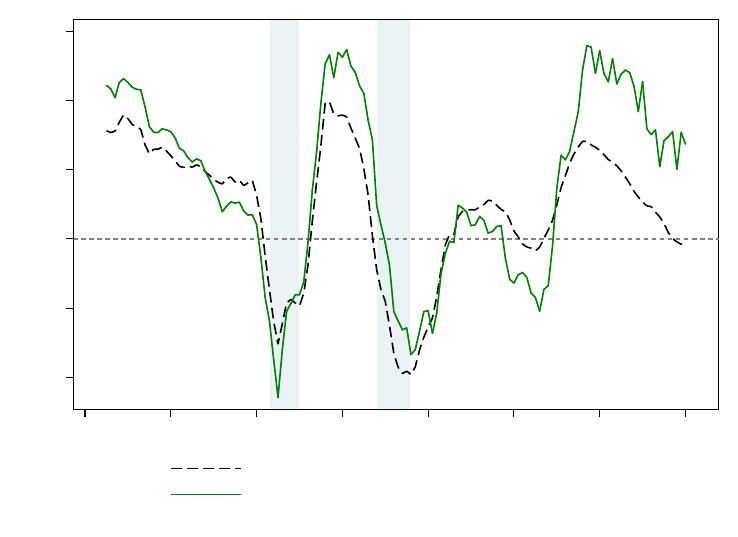
Figure X: Trends in real returns on bonds and bills
-6 -3 0 3 6 9
Per cent
1870 1890 1910 1930 1950 1970 1990 2010
Real bill rate: decadal moving average
Real bond return: decadal moving average
Note: Mean returns for 16 countries, weighted by real GDP. Decadal moving averages.
countries in our sample; the corresponding unweighted figure would look very similar. We smooth
the data using a decadal moving averages as explained earlier.
Three striking features of Figure X deserve comment. First, low real rates and, in fact, negative
real rates have been relatively common during modern financial history. Second, for the most
part, returns to long-term and short-term safe assets have tracked each other very closely—with
a premium of about 1% that has widened considerably since the well-documented decline of the
mid-1980s (see, e.g., Holston, Laubach, and Williams, 2017). Third, a major stylized fact leaps
out once we compare the safe rates of return in Figure X to the risky rates of return in Figure VII
above. Prior to WW2, real returns on housing, safe assets, and equities followed remarkably similar
trajectories. After WW2 this was no longer the case.
Safe rates are far from stable in the medium-term. There is enormous time-series, as well as
cross-country, variability. In fact, real safe rates appear to be as volatile as real risky rates (sometimes
more volatile), a topic we return to in the next section. Considerable variation in the risk premium
often comes from sharp changes in safe real returns, not from real returns on risky assets.
Two four-decade-long declines in real rates stand out: (1) from 1870 to WW1 (with a subsequent
further collapse during the war); and (2) the well-documented decline that started in the mid-1980s.
We could add to this list the briefer, albeit more dramatic decline that followed the Great Depression
into WW2. Some observers have therefore interpreted the recent downward trend in safe rates as a
sign of a new era of “secular stagnation” (see, e.g., Summers, 2014).
42

However, in contrast to 1870–1913 and the 1930s, the more recent decline is characterized by
a much higher term premium—a feature with few precedents in our sample.
44
There are other
periods in which real rates remained low, such as in the 1960s. They were pushed below zero,
particularly for the longer tenor bonds, during the 1970s inflation spike, although here too term
premiums remained relatively tight. Returns also dipped dramatically during both world wars. This
is perhaps to be expected: demand for safe assets spikes during disasters although the dip may also
reflect periods of financial repression and high inflation that usually emerge during times of conflict,
and which often persist into peacetime. Thus, from a broad historical perspective, high rates of
return on safe assets and high term premiums are more the exception than the rule.
Summing up, over more than 140 years from the late 19th to the 21st century, real returns
on safe assets have been low—on average
1%
for bills and
2.5%
for bonds—relative to alternative
investments. Although the return volatility—measured as annual standard deviation—is lower than
that of housing and equities, these assets offered little protection during high-inflation eras and
during the two world wars, both periods of low consumption growth.
Again moving on to examine correlations, Figure XI explores additional key moments of the
data. The top-left panel plots the correlation between real bond and real bill returns, again using
decadal rolling windows and computed as the cross-sectional average of correlations. In parallel to
our discussion of the term premium, real returns on bonds and bills have been highly correlated for
most of the sample up until the 1960s. From the 1970s onwards, the era of fiat money and higher
average inflation, this correlation has become much weaker, and near zero at times, coinciding with
a widening term premium.
The top right panel of Figure XI displays the correlation between nominal safe asset returns and
inflation, both for real bond and real bill returns. The figure shows that safe assets provided more
of an inflation hedge starting in the 1970s, around the start of the era of modern central banking.
However, as Figure X showed, both bonds and bills have experienced prolonged periods of negative
real returns—both during wartime inflations, and in the high-inflation period of the late 1970s.
Although safe asset rates usually comove positively with inflation, they do not always compensate
the investor fully.
The bottom panel of Figure XI displays the cross correlation of safe returns over rolling decadal
windows, averaged for all country-pair combinations, to examine how much risk can be diversified
with debt instruments. Cross-country real safe returns have exhibited positive comovement through-
out history. The degree of comovement shows a few marked increases in WW1 and in the 1930s.
The effect of these major global shocks on individual countries seems to have resulted in a higher
correlation of cross-country asset returns.
Turning to cross-sectional features, Table X shows country-specific safe asset returns for three
44
One important qualification is that this is the ex post, not ex ante term premium. It therefore includes any
unexpected shocks that affect either the short rate or the long-run bond return series. Furthermore, because
the long-run bond return measure includes capital gains, and the short-term rate measure is the yield only
(since the security matures within one year), most of the post-1980 increase in the term premium is driven by
higher capital gains on long-term government bonds.
43
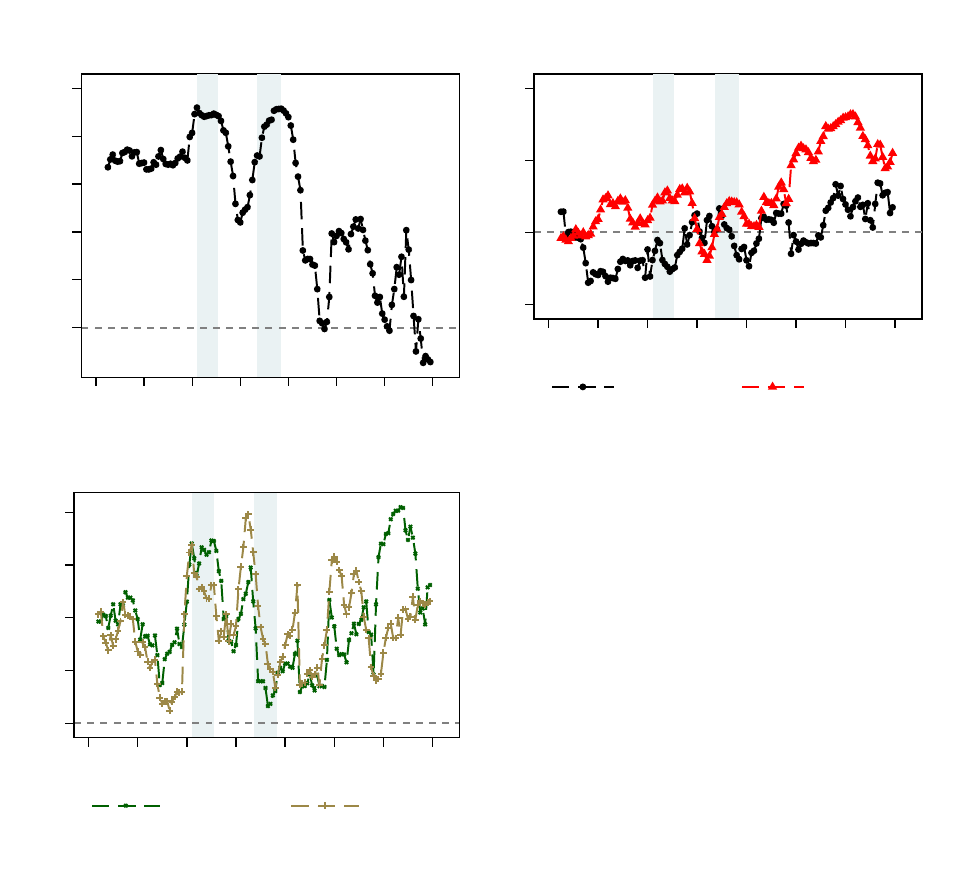
Figure XI: Correlations across safe asset returns
0 .2 .4 .6 .8 1
1870 1890 1910 1930 1950 1970 1990 2010
Bonds vs Bills
-.5 0 .5 1
1870 1890 1910 1930 1950 1970 1990 2010
Bonds (nom.) Bills (nominal)
Comovement with inflation
0 .2 .4 .6 .8
1870 1890 1910 1930 1950 1970 1990 2010
Bonds (real) Bills (real)
Cross-country comovement
Note: Rolling decadal correlations. The global correlation coefficient is the average of individual countries for
the rolling window. Cross-country correlation coefficient is the average of all country pairs for a given asset
class. Country coverage differs across time periods.
samples: all years, post-1950, and post-1980. Here the experiences of a few countries stand out.
In France, real bill returns have been negative when averaged over the full sample. In Portugal
and Spain, they have been approximately zero. In Norway, the average return on bills has been
negative for the post-1950 sample. However, most other countries have experienced reasonably
similar returns on safe assets, in the ballpark of 1%–3%.
Aside from the investor perspective discussed above, safe rates of return have important
implications for government finances, as they measure the cost of raising and servicing government
debt. What matters for this is not the level of real return per se, but its comparison to real GDP
growth, or
r
sa f e
− g
. If the rate of return exceeds real GDP growth,
r
sa f e
> g
, reducing the debt/GDP
44

Table X: Real rates of return on bonds and bills
Country Full Sample Post 1950 Post 1980
Bills Bonds Bills Bonds Bills Bonds
Australia 1.29 2.24 1.32 2.45 3.23 5.85
Belgium 1.21 3.01 1.61 3.86 2.51 6.24
Denmark 3.08 3.58 2.18 3.50 2.80 7.13
Finland 0.64 3.22 0.63 4.86 2.61 5.76
France -0.47 1.54 0.96 2.97 2.24 6.96
Germany 1.51 3.15 1.86 3.70 1.97 4.23
Italy 1.20 2.53 1.30 2.83 2.42 5.85
Japan 0.68 2.54 1.36 2.83 1.48 4.53
Netherlands 1.37 2.71 1.04 2.14 2.08 5.59
Norway 1.10 2.55 -0.26 1.94 1.50 5.62
Portugal -0.01 2.23 -0.65 1.59 0.65 6.25
Spain -0.04 1.41 -0.32 1.21 2.20 5.72
Sweden 1.77 3.25 0.82 2.71 1.52 6.60
Switzerland 0.89 2.41 0.12 2.33 0.33 3.35
UK 1.16 2.29 1.14 2.63 2.70 6.67
USA 2.23 2.85 1.43 2.77 1.91 5.90
Average, unweighted 1.14 2.61 0.91 2.77 2.01 5.77
Average, weighted 1.34 2.51 1.23 2.70 1.98 5.64
Note: Average annual real returns. Period coverage differs across countries. Consistent coverage within
countries: each country-year observation used to compute the statistics in this table has data for both real bill
and bond returns. The average, unweighted and average, weighted figures are respectively the unweighted
and real-GDP-weighted arithmetic averages of individual country returns.
ratio requires continuous budget surpluses. When
r
sa f e
is less than
g
, however, a reduction in
debt/GDP is possible even with the government running modest deficits. Existing evidence points
to
r
sa f e
< g
being the norm rather than the exception, both in recent years and broader historical
data (Ball, Elmendorf, and Mankiw, 1998; Mehrotra, 2017).
Figure XII plots the representative “safe rate of return” as the arithmetic average of bond
and bill returns (dashed line) alongside real GDP growth (solid line), again as decadal moving
averages. Starting in the late 19th century, safe rates were higher than GDP growth, meaning that
any government wishing to reduce debt had to run persistent budget surpluses. Indeed, this was the
strategy adopted by Britain to pay off the debt incurred during the Napoleonic War (Crafts, 2016).
The two world wars saw low real returns, but nevertheless a large debt accumulation to finance the
wartime effort. The aftermath of these two wars, however, offered vastly different experiences for
public finances. After WW1, safe returns were high and growth low, requiring significant budgetary
efforts to repay the war debts. This was particularly difficult for many countries given the large
interlocking reparations imposed by the Treaty of Versailles, and the turbulent macroeconomic
environment at the time. After WW2, on the contrary, high growth and inflation helped greatly
reduce the value of national debt, creating r
sa f e
− g gaps as large as –10 percentage points.
45
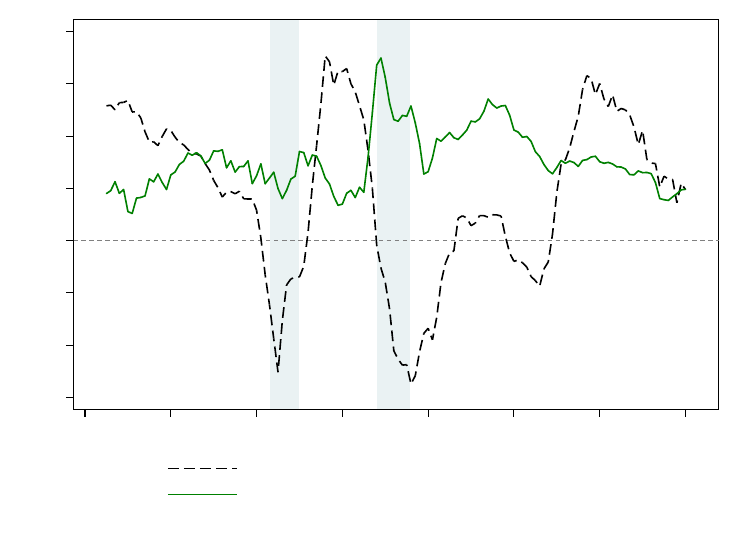
Figure XII: Trends in real return on safe assets and GDP growth
-6 -4 -2 0 2 4 6 8
Per cent
1870 1890 1910 1930 1950 1970 1990 2010
Real safe return: decadal moving average
Real GDP growth: decadal moving average
Note: Mean returns and GDP growth for 16 countries, weighted by real GDP. Decadal moving averages. The
safe rate of return is an arithmetic average of bonds and bills.
More recently, the Great Moderation saw a reduction in inflation rates and a corresponding
increase in the debt financing burden, whereas the impact of
r
sa f e
− g
in the aftermath of the Global
Financial Crisis remains broadly neutral, with the two rates roughly equal. On average throughout
our sample, the real growth rate has been around 1 percentage point higher than the safe rate of
return (3% growth versus 2% safe rate), meaning that governments could run small deficits without
increasing the public debt burden.
In sum, real returns on safe assets have been quite low across the advanced countries over the last
150 years. In fact, for some countries, these returns have often been persistently negative. Periods of
unexpected inflation, in war and peace, have often diluted returns, and flights to safety may have
depressed safe returns even further in the more turbulent periods of global financial history. The
low return for investors has, on the flipside, implied a low financing cost for governments, which
was particularly important in reducing the debts incurred during WW2.
VI. Risky versus safe returns
Having established the general trends in each risky and safe asset class, we now turn to examine
broader patterns of returns across the different asset classes. We start by comparing returns on risky
and safe assets. Figure XIII depicts the trends in global safe and risky asset returns, again using
decadal moving averages of GDP-weighted global return series.
46
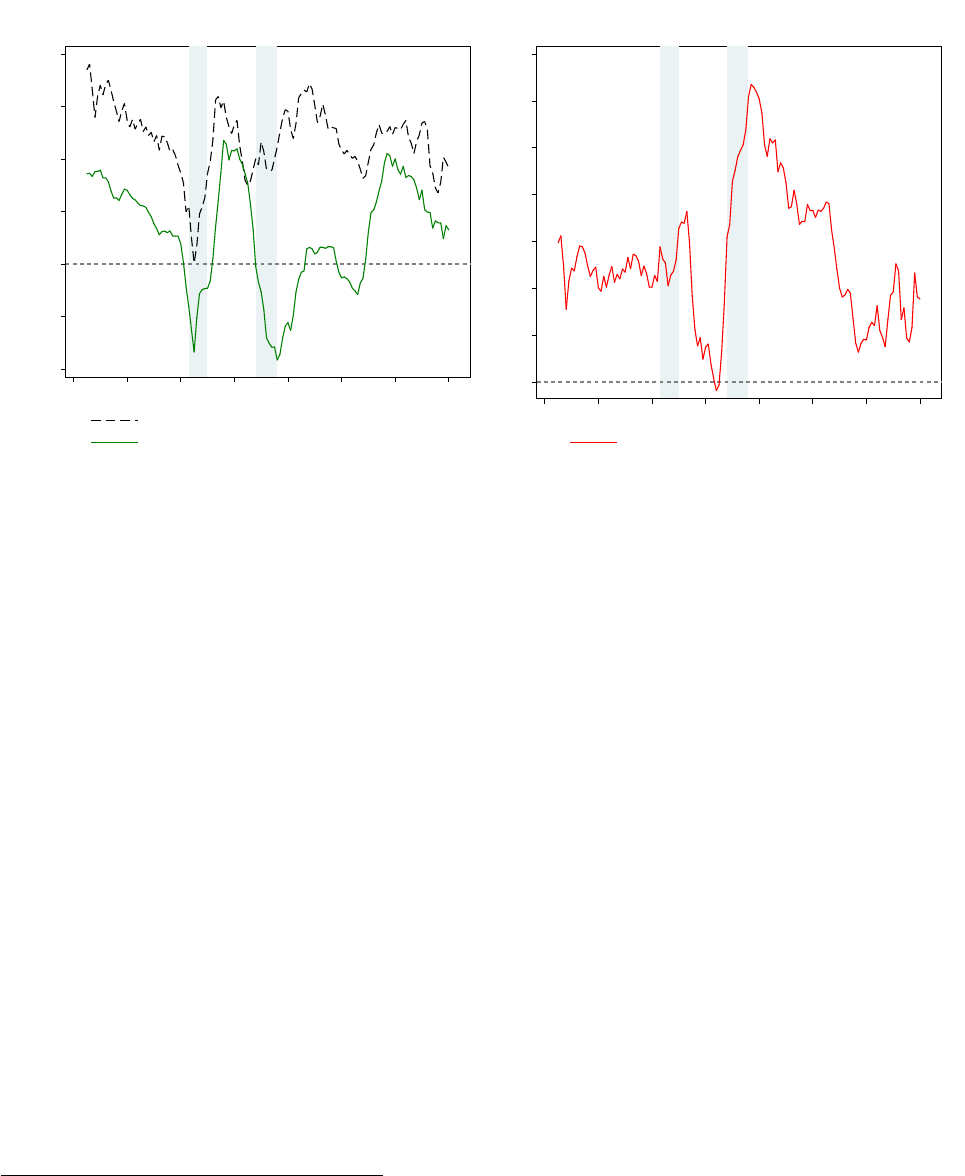
Figure XIII: Global real risky vs. real safe return
-6 -3 0 3 6 9 12
Per cent
1870 1890 1910 1930 1950 1970 1990 2010
Real risky return: decadal moving average
Real safe return: decadal moving average
Risky and Safe returns
0 2 4 6 8 10 12 14
Per cent
1870 1890 1910 1930 1950 1970 1990 2010
Risk premium. Decadal moving average
Risk Premium
Note: Mean returns for 16 countries, weighted by real GDP. Decadal moving averages. Within each country,
the real risky return is a weighted average of equities and housing, and safe return - of bonds and bills. The
within-country weights correspond to the shares of the respective asset in the country’s wealth portfolio. Risk
premium = risky return - safe return.
The risky return in each country is a weighted average of housing and equity returns, with
weights corresponding to equity market capitalization and housing wealth in each respective country.
The safe return is a simple unweighted average of bonds and bills.
45
The left panel of Figure XIII
shows the risky and safe asset returns, and the right panel depicts the risk premium, calculated as
the risky minus safe difference.
As in Sections IV and V, the data presented in this Section measure ex post returns and risk
premiums, inclusive of capital gains. For some of the debates that we touch on, however, a forward-
looking expected return measure would have been preferable. Realized returns are likely to fall
below ex ante return expectations during periods of large negative shocks, such as the two world
wars, and rise above them in times of high capital gains, such as that between 1980 and today.
Long-run data on expected returns are, however, difficult to obtain. Our focus on long run trends,
to an extent, allows us to look through some of the unexpected shocks that drive a wedge between
ex ante and ex post returns. Nevertheless, the discussion in this section should be treated with a
note of caution.
Both risky and safe returns were high during the 19th century but had been gradually declining
in the run up to WW1, after which they declined sharply, as is to be expected. After the war, returns
45
For details on the construction of the weighted returns and the asset weights, see Section II.C and
Appendix O.3. Appendix P further compares the portfolio-weighted returns to equally-weighted returns, i.e.,
a simple average of housing and equity.
47

were recovering during the 1920s. From 1930 onwards, the risky return stayed high and relatively
stable, whereas the safe return dropped sharply and remained low until the late 1970s, before
increasing and falling back again during the past three decades. These findings have implications
for current debates around secular stagnation and the pricing, or mis-pricing, of risk.
Secular stagnation is associated with low rates of return, driven by an excess of savings or a
general unwillingness to borrow and invest. These in turn reflect a variety of potential factors,
including: (1) lower rates of productivity growth; (2) lower fertility and mortality rates; (3) a decline
in the relative price of investment goods; (4) greater firm level market power; and (5) higher income
inequality (Eggertsson, Mehrotra, and Robbins, 2017; Rachel and Smith, 2015; Thwaites, 2015).
Indeed, we can see that the safe return fell sharply during the 1930s, when Hansen (1939)
originally proposed the secular stagnation hypothesis. That time also coincided with a demographic
bust and was preceded by a big rise in income inequality in the run-up to the Great Depression.
The safe return has been falling again since the mid-1980s as many have noted.
46
Understandably,
this has led some observers to suggest that advanced economies are again in danger of entering
secular stagnation, e.g., Summers (2014), and Eggertsson and Mehrotra (2014).
But the picture changes radically when we consider the trend in risky returns in addition to
safe returns. Unlike safe returns, risky returns have remained high and broadly stable through the
best part of the last 100 years, and show little sign of a secular decline. Turning back to the trend
for safe assets, even though the safe return has declined recently, much as it did at the start of our
sample, it remains close to its historical average. These two observations call into question whether
secular stagnation is quite with us. The high and stable risky return coupled with falling safe rates
could also be consistent with the notion of a “safety trap” brought about by the relative shortage of
safe assets (Caballero and Farhi, 2017). However with risk premiums still not far off their historical
averages, the evidence for a safety trap is thus far also not clear-cut.
We now turn to examine the long-run developments in the ex post risk premium, i.e., the spread
between safe and risky returns (right panel of Figure XIII). This spread was low and stable at around
5 percentage points before WW1. It rose slightly after WW1, before falling to an all-time low of near
zero by around 1930. The decades following the onset of WW2 saw a dramatic widening in the risk
premium, with the spread reaching its historical high of around 14 percentage points in the 1950s,
before falling back to around its historical average.
Interestingly, the period of high risk premiums coincided with an era of few systemic banking
crises. In fact, not a single such crisis occurred in our advanced-economy sample between 1946 and
1973. By contrast, banking crises appear to have been relatively more frequent when risk premiums
were low. This finding speaks to the recent literature on the mispricing of risk around financial
crises. Among others, Krishnamurthy and Muir (2017) argue that when risk is underpriced, i.e., risk
premiums are excessively low, severe financial crises become more likely.
46
Note that the safe interest rate—i.e. the component of the safe return that excludes capital gains, and is
more relevant for the secular stagnation and safety trap debates, has also fallen sharply since 1980. However,
like the bill rate in Figure X, it remains close to its historical average.
48

Table XI: Real risky and safe asset returns across countries and time
Country Full Sample 1950–1980 Post 1980
Risky
return
Safe
return
Risky
return
Safe
return
Risky
return
Safe
return
Australia 6.96 1.77 6.51 -1.34 7.71 4.54
Belgium 8.31 1.82 9.68 1.05 7.99 4.38
Denmark 8.02 3.05 8.57 0.49 6.84 4.97
Finland 10.87 2.16 13.47 1.28 13.06 4.18
France 6.54 0.54 12.33 -1.15 6.61 4.60
Germany 7.90 3.34 7.00 1.77 5.20 3.10
Italy 5.32 2.28 7.08 -0.83 5.21 4.14
Japan 6.79 1.29 10.86 0.05 4.81 3.00
Netherlands 7.30 1.31 10.26 -0.89 7.42 3.83
Norway 7.96 1.59 7.75 -2.34 10.65 3.56
Portugal 6.46 0.45 5.19 -3.30 7.41 3.45
Spain 5.39 0.68 7.27 -3.56 5.46 3.96
Sweden 8.52 2.35 8.67 -1.12 11.42 4.06
Switzerland 6.51 1.57 6.07 0.25 7.76 1.84
UK 6.35 1.51 8.33 -1.36 7.66 4.69
USA 7.12 1.92 6.44 -0.32 7.28 3.91
Average, unweighted 7.44 1.88 8.48 -0.81 7.65 3.89
Average, weighted 7.22 1.89 7.88 -0.56 6.66 3.81
Note: Average annual real returns. Real risky return is a weighted average of equity and housing, and safe
return - of bonds and bills. The weights correspond to the shares of the respective asset in the country’s wealth
portfolio. Period coverage differs across countries. Consistent coverage within countries: each country-year
observation used to compute the statistics in this table has data for both the risky and safe return. The
average, unweighted and average, weighted figures are respectively the unweighted and real-GDP-weighted
arithmetic averages of individual country returns.
The long-run trends in risk premiums presented here seem to confirm this hypothesis. Appendix
F further examines how these long-run movements in the risk premium, and the returns on the
individual risky and safe asset classes, correspond to the changing monetary regimes, and finds, in
accordance with Figure XIII, that the risk premium during the Bretton-Woods fixed exchange rate
era was unusually high by historical standards, driven largely by the low, even negative, safe asset
returns, but also by reasonably high housing returns.
Table XI zooms in to examine the evolution of safe and risky asset returns across different
countries, as well as time periods. To enable a comparison with the aggregate trends in Figure XIII,
we split the post-WW2 period into two subperiods: 1950–1980, when global risk premiums were
high and global safe returns low, and post-1980, which saw an initial recovery, and subsequent
decline in global safe returns.
The vast majority of countries in our sample follow similar patterns. The risky return is largely
stable across time, even though it varies somewhat across countries: from just over 5% in Italy and
Spain to 11% in Finland. Risk premiums were at or near their highest level in almost every country
49
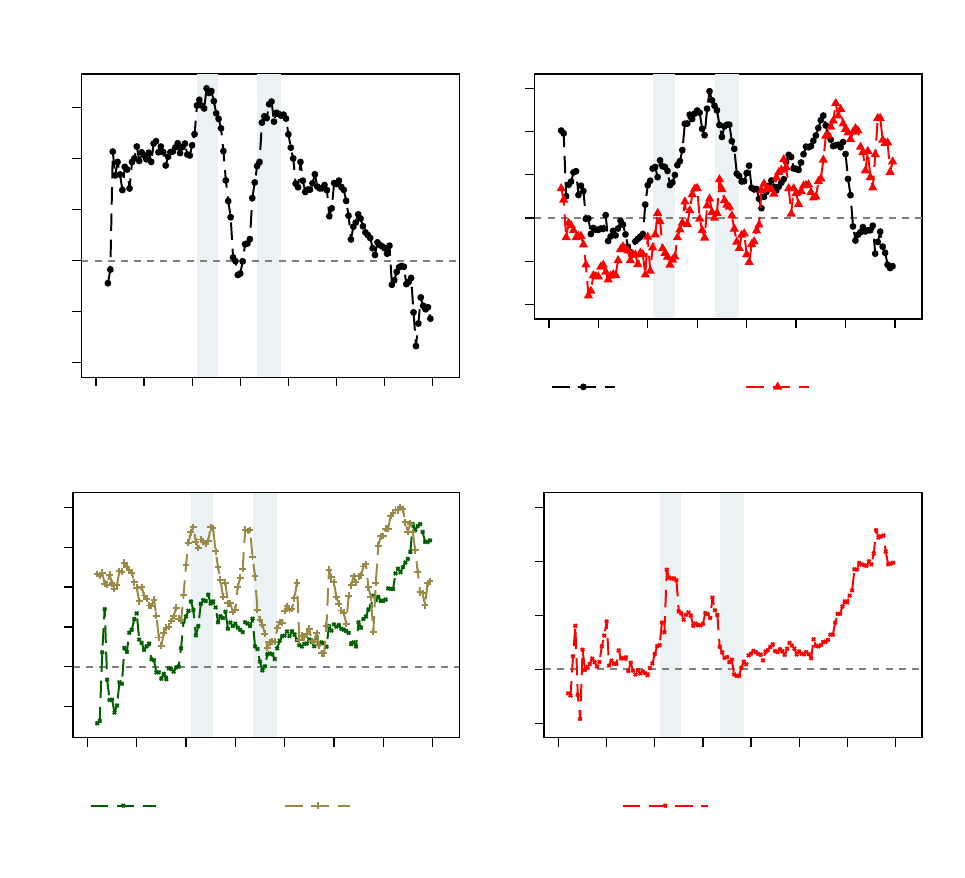
Figure XIV: Correlations across risky and safe asset returns
-.4 -.2 0 .2 .4 .6
1870 1890 1910 1930 1950 1970 1990 2010
Risky vs Safe
-.4 -.2 0 .2 .4 .6
1870 1890 1910 1930 1950 1970 1990 2010
Risky r (nom.) Safe r (nom.)
Comovement with inflation
-.2 0 .2 .4 .6 .8
1870 1890 1910 1930 1950 1970 1990 2010
Risky r (real) Safe r (real)
Cross-country returns
-.3 0 .3 .6 .9
1870 1890 1910 1930 1950 1970 1990 2010
Risk premium
Cross-country risk
Note: Rolling decadal correlations. The global correlation coefficient is the average of individual countries for
the rolling window. Cross-country correlation coefficient is the average of all country pairs for a given asset
class. Country coverage differs across time periods.
during the period 1950–1980, largely due to low returns on safe assets. The real safe rate of return
was close to zero or negative for the majority of the countries in the sample, with the lowest level
of –3.5% observed in Spain and Portugal, and only Belgium, Finland and Germany experiencing
robustly positive real returns. Meanwhile, risky returns were also somewhat above their long-run
level in a number of countries, but the differences are relatively smaller than those for safe rates.
The post-1980 period saw a recovery in safe returns across the board, with the recent downward
trend not yet apparent in these longer-run period averages. Risky returns, meanwhile, were close to
their historical levels in most countries, with only Japan experiencing a strong decline following the
bursting of its asset price bubble in the 1990s.
50
We now turn to examine the correlations between risky and safe returns, which are displayed
in Figure XIV. The top-left panel of this figure shows the rolling decadal correlation between the
risky and safe returns, calculated as the average of rolling correlations in individual countries in a
similar fashion to the calculations in Figure VIII. Throughout most of the historical period under
consideration, risky and safe returns had been positively correlated. In other words, safe assets have
not generally provided a hedge against risk since safe returns were low when risky returns were
low—in particular during both world wars—and vice versa. This positive correlation has weakened
over the more recent decades, and turned negative from the 1990s onwards. This suggests that safe
assets have acted as a better hedge for risk during both the Great Moderation and the recent Global
Financial Crisis.
The top-right panel of Figure XIV shows the comovement of risky and safe nominal returns
with inflation. Mirroring our findings presented in the preceding sections, safe returns have tended
to comove more strongly with inflation, particularly during the post-WW2 period. Moving to
cross-country correlations depicted in the bottom two panels of Figure XIV, historically safe returns
in different countries have been more correlated than risky returns. This has reversed over the past
decades, however, as cross-country risky returns have become substantially more correlated. This
seems to be mainly driven by a remarkable rise in the cross-country correlations in risk premiums,
depicted in the bottom-right panel of Figure XIV. This increase in global risk comovement may pose
new challenges to the risk-bearing capacity of the global financial system, a trend consistent with
other macro indicators of risk-sharing (Jord
`
a, Schularick, and Taylor, 2017).
VII. r versus g
Our analysis also provides insights into the debate on inequality. Piketty (2014) and Piketty and
Zucman (2014) argue that inequality and wealth-to-income ratios in advanced economies have
followed a U-shaped pattern over the past century and a half. They further hypothesize that wealth
inequality may continue to rise in the future, along with a predicted decline in the rate of economic
growth. The main theoretical argument for this comes about from a simple relation:
r > g
. In their
approach, a higher spread between the real rate of return on wealth, denoted
r
, and the rate of
real GDP growth,
g
, tends to magnify the steady-state level of wealth inequality. Benhabib and
Bisin (2016) show that in a wide class of models featuring stochastic returns to wealth, a higher gap
between
r
and
g
increases the Pareto index of the steady-state wealth distribution, making it more
unequal.
Of course, this is not the only channel through which rates of return can impact the wealth
distribution. Rate of return differentials between asset classes can affect the wealth distribution if
there are systematic differences in the portfolio composition between rich and poor households as
Kuhn, Schularick, and Steins (2017) show, or if rates of returns vary with portfolio size as stressed
by Piketty (2014). Studying administrative Swedish data, Bach, Calvet, and Sodini (2016) find
that wealthy households earn higher returns on their portfolios, and Fagereng, Guiso, Malacrino,
51
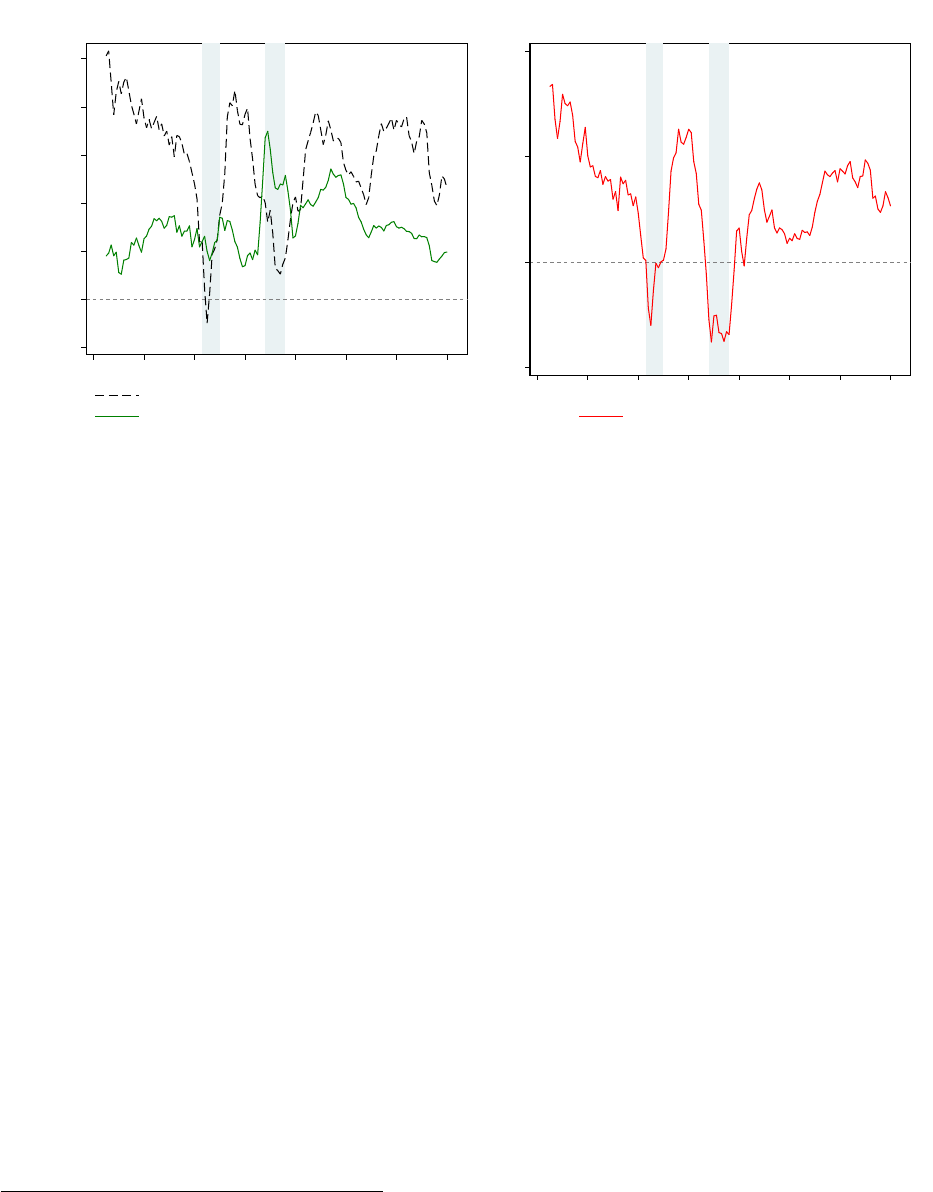
Figure XV: Real return on wealth and real GDP growth
-2 0 2 4 6 8 10
Per cent
1870 1890 1910 1930 1950 1970 1990 2010
Real return on wealth: decadal moving average
Real GDP growth: decadal moving average
Return on wealth and growth
-5 0 5 10
Per cent
1870 1890 1910 1930 1950 1970 1990 2010
r - g gap. Decadal moving average
r minus g
Note: Mean returns and real GDP growth for 16 countries, weighted by real GDP. Decadal moving averages.
Within each country, the real return on wealth is a weighted average of bonds, bills, equity and housing. The
within-country weights correspond to the shares of the respective asset in each country’s wealth portfolio.
and Pistaferri (2016) use Norwegian tax data to document substantial heterogeneity in wealth
returns. Rates of return on wealth are beginning to receive attention in the theoretical literature. For
instance, Benhabib and Bisin (2016) point to return differences of assets as one potential channel
to explain diverging trends between income and wealth inequality, and Garbinti, Goupille-Lebret,
and Piketty (2017) show that asset price effects played an important role in shaping the French
wealth distribution over the past 200 years. Further, wealth inequality may depend not only on the
magnitude of
r
in relation to
g
, but also on return volatility. Higher return volatility can increase the
dispersion of wealth outcomes, and make the distribution of wealth more unequal.
To bring our data to bear on these debates, we construct a measure of the world’s real return on
wealth as a weighted average of real returns on bonds, equities, and housing—reflecting the typical
portfolio of a private household end-investor. We then compare this measure to the rate of real GDP
growth of economies over the long-run. Importantly, our approach differs from Piketty (2014) in
that we rely on annual returns from observed market prices and yields for each individual asset
class, rather than implicit returns derived from aggregate balance sheet data at selected benchmark
dates. This, we think, is more robust and provides a vital cross check for the core argument.
Similarly to the risky returns in Section VI, we weight the individual returns by the size of the
respective asset portfolio: stock market capitalization, housing wealth, and public debt (divided
equally between bonds and bills).
47
Figure XV displays the long-run trends in the global real rate of
47
For details on the construction of the weighted returns and the asset weights, see Section II.C and
Appendix O.3. Appendix P further compares the portfolio-weighted returns to equally-weighted returns,
with the equally-weighted return on wealth a simple average of equity, housing, and bonds.
52
return on wealth (dashed line) and the global real GDP growth rate (solid line) since the late 19th
century, again using decadal moving averages of GDP-weighted data.
Our data show that the trend long-run real rate of return on wealth has consistently been much
higher than the real GDP growth rate. Over the past 150 years, the real return on wealth has
substantially exceeded real GDP growth in 13 decades, and has only been below GDP growth in the
two decades corresponding to the two world wars. That is, in peacetime,
r
has always exceeded
g
.
The gap between
r
and
g
has been persistently large. Since 1870, the weighted average return on
wealth (
r
) has been about 6.0%, compared to a weighted average real GDP growth rate (
g
) of 3.0%,
with the average
r − g
gap of 3.0 percentage points, which is about the same magnitude as the real
GDP growth rate itself. The peacetime gap between
r
and
g
has been larger still, averaging around
3.8 percentage points.
Table XII shows how the rate of return on wealth and the GDP growth rate have varied across
different countries and time periods. Despite some variation, the positive gap between
r
and
g
is
a persistent feature of the data:
r
is bigger than
g
in every country and every time period that we
consider. The last few decades prior to the Global Financial Crisis saw a general widening of this
gap, mirroring the aggregate pattern shown in Figure XV.
As previously discussed, returns on housing play an important part in this story—but with
scant data until now, their exact role was unclear. The high level of housing returns that we have
uncovered serves to push up the level of
r
, and thus, potentially, wealth inequality. But what is the
counterfactual? We need to bear in mind that housing wealth is more equally distributed than, for
instance, equities (see, e.g., Kuhn et al., 2017), and returns on housing are less volatile than those on
shares—with both of these factors serving to flatten the distribution of wealth changes, making the
overall impact of housing returns on wealth inequality less clear-cut and offering substantial scope
for further research.
Rognlie (2015) notes that recent trends in wealth and income could be influenced primarily by
what has happened in housing. Real house prices have experienced a dramatic increase in the past
40 years, coinciding with the rapid expansion of mortgage lending (Jord
`
a, Schularick, and Taylor,
2015, 2016; Knoll, Schularick, and Steger, 2017). This is very much evident from Table IX. Measured
as a ratio to GDP, rental income has been growing, as Rognlie (2015) argues. However, the rental
yield has declined slightly—given the substantial increase in house prices—so that total returns on
housing have remained pretty stable, as we have discussed. In this sense, recent housing trends
have diverged little.
Our data allow us to more formally examine whether movements in the
r − g
gap are more
closely related to return fluctuations or movements in the real GDP growth rate. Appendix Q and
Table A.26 document the correlations between
r − g
and
g
, and
r − g
and
r
across different time
horizons, for the full sample and the period after 1950. Overall, the correlation between
r − g
and
g
is negative, and somewhat stronger at longer horizons, with the correlation coefficients ranging
between –0.2 and –0.6 depending on the historical subperiod and time window. At the same time,
the
r − g
gap is even more robustly related to changes in the return on wealth
r
, with a positive
53

Table XII: Return on wealth and GDP growth across countries and time
Country Full Sample Post 1950 Post 1980
Return on
wealth
GDP
growth
Return on
wealth
GDP
growth
Return on
wealth
GDP
growth
Australia 5.91 3.51 7.39 3.73 7.53 3.19
Belgium 6.38 2.32 7.29 2.68 6.90 2.17
Denmark 7.37 2.70 7.21 2.51 6.62 1.60
Finland 9.76 3.49 11.92 3.16 11.81 2.16
France 4.92 2.55 7.76 3.17 6.29 1.92
Germany 7.07 2.81 5.26 2.80 4.72 2.40
Italy 5.08 3.82 5.07 3.30 5.01 1.37
Japan 5.59 4.18 6.35 4.20 4.23 2.09
Netherlands 5.33 3.16 6.67 3.21 6.71 2.29
Norway 6.86 3.06 7.67 3.45 9.35 2.80
Portugal 5.87 3.39 5.65 3.48 6.99 2.13
Spain 4.58 3.21 5.50 4.03 5.34 2.56
Sweden 7.41 2.89 8.69 2.86 9.87 2.36
Switzerland 5.63 2.33 5.98 2.69 7.03 1.95
UK 4.75 2.09 5.90 2.49 7.23 2.45
USA 6.03 3.38 5.91 3.33 6.58 2.82
Average, unweighted 6.30 2.86 6.92 3.23 7.01 2.26
Average, weighted 5.98 3.04 6.09 3.33 6.08 2.48
Note: Average annual real returns. Real return on wealth is a weighted average of bonds, bills, equity and
housing. The weights correspond to the shares of the respective asset in each country’s wealth portfolio.
Period coverage differs across countries. Consistent coverage within countries: each country-year observation
used to compute the statistics in this table has data for both the real return on wealth and the real GDP
growth rate. The average, unweighted and average, weighted figures are respectively the unweighted and
real-GDP-weighted arithmetic averages of individual country returns.
correlation between the two and a correlation coefficient of around 0.9, both over short and long run.
This suggests that both falling GDP growth and higher returns would tend to increase the
r − g
gap,
although historically much of the changes in
r − g
have come about from movements in the return
on wealth. During peacetime r has been quite stable, and so has been the r − g gap.
Since the 1970s, the stable and high levels of the rate of return on wealth have coincided with
high and rising wealth-to-income ratios (see Piketty and Zucman, 2014, and Appendix Figure A.7).
Together, these two facts have meant that the capital share of GDP has increased across advanced
economies (Karabarbounis and Neiman, 2014). A large part of these high returns, and of the
increase in wealth ratios, can be attributed to high capital gains on risky assets, namely housing and
equity. Rognlie (2015) argues that house prices have played an important role in the evolution of
wealth-to-income ratios in the US. Kuvshinov and Zimmermann (2018) show that most of the recent
increase in the value of listed firms in our cross-country sample is accounted for by higher equity
valuations.
These high capital gains in recent decades have allowed the stock of measured wealth to rise
54
without running into diminishing returns. Understanding the drivers behind these long-run trends
in returns and valuations seems key to disentangling the underlying causes behind the recent
upsurge in wealth, inequality, and the capital share of income.
VIII. Conclusion
In this paper we provide an investigation of the long history of advanced economy asset returns for
all the major categories of the investible wealth portfolio. Our work brings new stylized facts to
light and rigorously documents many broad patterns that have stimulated so much research in core
areas of economics and finance over the last two centuries.
The returns to risky assets and risk premiums have been high and stable over the past 150
years. Substantial diversification opportunities exist between risky asset classes, and across countries.
Arguably the most surprising result of our study is that long run returns on housing and equity
look remarkably similar. Yet while returns are comparable, residential real estate is less volatile on a
national level, opening up new and interesting risk premium puzzles.
Our research speaks directly to the relationship between
r
, the rate of return on wealth, and
g
,
the growth rate of the economy, that figures prominently in the current debate on inequality. One
robust finding in this paper is that
r g
: globally, and across most countries, the weighted rate of
return on capital was twice as high as the growth rate in the past 150 years.
These and other discoveries can provide a rich agenda for future research, by us and by others.
Many issues remain to be studied, among them determining the particular fundamentals that drive
the returns on each of the asset classes in typical economies. For now, we hope our introduction
of this new compilation of asset return data can provide the evidentiary basis for new lines of
exploration in years to come.
References
Akbulut-Yuksel, Mevlude. 2014. Children of War. The Long-Run Effects of Large-Scale Physical
Destruction and Warfare on Children. Journal of Human Resources 49(3): 634–662.
Annaert, Jan, Frans Buelens, Ludo Cuyvers, Marc De Ceuster, Marc Deloof, and Ann De Schepper.
2011. Are Blue Chip Stock Market Indices Good Proxies for All-Shares Market Indices? The Case
of the Brussels Stock Exchange 1833–2005. Financial History Review 18(3): 277–308.
Annaert, Jan, Frans Buelens, and Marc De Ceuster. 2012. New Belgian Stock Market Returns:
1832–1914. Explorations in Economic History 49(2): 189–204.
Bach, Laurent, Laurent E. Calvet, and Paolo Sodini. 2016. Rich Pickings? Risk, Return, and Skill in
the Portfolios of the Wealthy. CEPR Discussion Paper 11734.
Ball, Laurence, Douglas W. Elmendorf, and N. Gregory Mankiw. 1998. The Deficit Gamble. Journal
of Money, Credit and Banking 30(4): 699–720.
Barro, Robert J., and Jos
´
e Urs
´
ua. 2008. Macroeconomic Crises since 1870. Brookings Papers on Economic
Activity 39(1): 225—350.
Benhabib, Jess, and Alberto Bisin. 2016. Skewed Wealth Distributions: Theory and Empirics. NBER
Working Paper 21924.
55
Blancheton, Bertrand, Hubert Bonin, and David Le Bris. 2014. The French Paradox: A Financial
Crisis During the Golden Age of the 1960s. Business History 56(3): 391–413.
Brailsford, Tim, John C. Handley, and Krishnan Maheswaran. 2012. The Historical Equity Risk
Premium in Australia: Post-GFC and 128 Years of Data. Accounting and Finance 52(1): 237–247.
Caballero, Ricardo J., and Emmanuel Farhi. 2017. The Safety Trap. Review of Economic Studies.
Forthcoming.
Campbell, John Y. 1999. Asset Prices, Consumption, and the Business Cycle. volume 1 of Handbook
of Macroeconomics, chapter 19, 1231–1303. Elsevier.
Cheng, Ping, Zhenguo Lin, and Yingchun Liu. 2008. The Real Estate Risk Premium Puzzle: A
Solution. Working paper.
Crafts, Nicholas. 2016. Reducing High Public Debt Ratios: Lessons from UK Experience. Fiscal
Studies 37(2): 201–223.
Diefendorf, Jeffry M. 1993. In the Wake of War: The Reconstruction of German Cities After World War II.
Oxford: Oxford University Press.
Dimson, Elroy, Paul Marsh, and Mike Staunton. 2009. Triumph of the Optimists: 101 Years of Global
Investment Returns. Princeton, N.J.: Princeton University Press.
Eggertsson, Gauti B., and Neil R. Mehrotra. 2014. A Model of Secular Stagnation. NBER Working
Paper 20574.
Eggertsson, Gauti B., Neil R. Mehrotra, and Jacob A. Robbins. 2017. A Model of Secular Stagnation:
Theory and Quantitative Evaluation. NBER Working Paper 23093.
Eisfeldt, Andrea, and Andrew Demers. 2015. Total Returns to Single Family Rentals. NBER Working
Paper 21804.
Fagereng, Andreas, Luigi Guiso, Davide Malacrino, and Luigi Pistaferri. 2016. Heterogeneity and
Persistence in Returns to Wealth. NBER Working Paper 22822.
Favilukis, Jack, Sydney C. Ludvigson, and Stijn Van Nieuwerburgh. 2017. The macroeconomic
effects of housing wealth, housing finance, and limited risk sharing in general equilibrium. Journal
of Political Economy 125(1): 140–223.
Fishback, Price V., and Trevor Kollmann. 2015. Hedonic Housing Indexes During the Great
Depression. Unpublished manuscript.
Fox, Ryan, and Peter Tulip. 2014. Is Housing Overvalued? RBA Research Discussion Paper 2014-06.
Francis, Jack Clark, and Roger G. Ibbotson. 2009. Contrasting Real Estate with Comparable
Investments, 1978 to 2008. The Journal of Portfolio Management 36(1): 141–155.
Garbinti, Bertrand, Jonathan Goupille-Lebret, and Thomas Piketty. 2017. Accounting for Wealth In-
equality Dynamics: Methods, Estimates and Simulations for France (1800–2014). CEPR Discussion
Paper 11848.
Giacomini, Emanuela, David C. Ling, and Andy Naranjo. 2015. Leverage and Returns: A Cross-
Country Analysis of Public Real Estate Markets. Journal of Real Estate Finance and Economics 51(2):
125–159.
Giglio, Stefano, Matteo Maggiori, and Johannes Stroebel. 2015. Very Long-Run Discount Rates.
Quarterly Journal of Economics 130(1): 1–53.
Goldsmith, Raymond W. 1985a. Comparative National Balance Sheets: A Study of Twenty Countries,
1688–1978. Chicago, Ill.: University of Chicago Press.
Goldsmith, Raymond W. 1985b. Comparative National Balance Sheets: A Study of Twenty Countries,
1688–1978. Chicago, Ill.: University of Chicago Press.
Grossman, Richard S. 2017. Stocks for the Long Run: New Monthly Indices of British Equities,
1869–1929. CEPR Discussion Paper 12042.
Hansen, Alvin H. 1939. Economic Progress and Declining Population Growth. American Economic
Review 29(1): 1–15.
56
Holston, Kathryn, Thomas Laubach, and John C. Williams. 2017. Measuring the Natural Rate of
Interest: International Trends and Determinants. Journal of International Economics 108(S1): 59–75.
Homer, Sidney, and Richard E. Sylla. 2005. A History of Interest Rates. Hoboken, N.J.: Wiley, 4th
edition.
Ilmanen, Antti. 2011. Expected Returns: An Investor’s Guide to Harvesting Market Rewards. Hoboken,
N.J.: Wiley.
Jones, Charles M. 2002. A Century of Stock Market Liquidity and Trading Costs. Working paper,
New York.
Jord
`
a,
`
Oscar, Moritz Schularick, and Alan M. Taylor. 2015. Betting the House. Journal of International
Economics 96(S1): 2–18.
Jord
`
a,
`
Oscar, Moritz Schularick, and Alan M. Taylor. 2016. The Great Mortgaging: Housing Finance,
Crises and Business Cycles. Economic Policy 31(85): 107–152.
Jord
`
a,
`
Oscar, Moritz Schularick, and Alan M. Taylor. 2017. Macrofinancial History and the New Busi-
ness Cycle Facts. In NBER Macroeconomics Annual 2016, Volume 31, edited by Martin Eichenbaum,
Jonathan A. Parker, pp. 213–263. Chicago, Ill.: University of Chicago Press.
Karabarbounis, Loukas, and Brent Neiman. 2014. The Global Decline of the Labor Share. Quarterly
Journal of Economics 129(1): 61–103.
Knoll, Katharina. 2017. Our Home in Days Gone By: Housing Markets in Advanced Economies in Historical
Perspective. Ph.D. thesis, Free University of Berlin. Chapter 3. As Volatile As Houses: Return
Predictability in International Housing Markets, 1870–2015.
Knoll, Katharina, Moritz Schularick, and Thomas M. Steger. 2017. No Price like Home: Global
House Prices, 1870–2012. American Economic Review 107(2): 331–352.
Krishnamurthy, Arvind, and Tyler Muir. 2017. How Credit Cycles Across a Financial Crisis. NBER
Working Paper 23850.
Kuhn, Moritz, Moritz Schularick, and Ulrike I. Steins. 2017. Income and Wealth Inequality in
America , 1949–2013. CEPR Discussion Paper 20547.
Kuvshinov, Dmitry, and Kaspar Zimmermann. 2018. The Big Bang: Stock Market Capitalization in
the Long Run. EHES Working Paper 136.
Kuznets, Simon. 1941. National Income and its Composition. Cambridge, Mass.: National Bureau of
Economic Research.
Le Bris, David. 2012. Wars, Inflation and Stock Market Returns in France, 1870–1945. Financial
History Review 19(3): 337–361.
Le Bris, David, and Pierre-Cyrille Hautcoeur. 2010. A Challenge to Triumphant Optimists? A Blue
Chips Index for the Paris Stock Exchange, 1854–2007. Financial History Review 17(2): 141–183.
Lustig, Hanno, Stijn Van Nieuwerburgh, and Adrien Verdelhan. 2013. The Wealth-Consumption
Ratio. Review of Asset Pricing Studies 3(1): 38–94.
Mehra, Rajnish, and Edward C. Prescott. 1985. The Equity Premium: A Puzzle. Journal of Monetary
Economics 15(2): 145–161.
Mehrotra, Neil. 2017. Debt Sustainability in a Low Interest Rate World. Hutchins Center Working
Paper 32.
Moskowitz, Tobias J., and Annette Vissing-Jørgensen. 2002. The Returns to Entrepreneurial Invest-
ment: A Private Equity Premium Puzzle? American Economic Review 92(4): 745–778.
Nakamura, Emi, J
´
on Steinsson, Robert Barro, and Jos
´
e Urs
´
ua. 2013. Crises and Recoveries in an
Empirical Model of Consumption Disasters. American Economic Journal: Macroeconomics 5(3):
35–74.
Nielsen, Steen, and Ole Risager. 2001. Stock Returns and Bond Yields in Denmark, 1922–1999.
Scandinavian Economic History Review 49(1): 63–82.
OECD. 2012. OECD Economic Surveys: European Union 2012. Paris: OECD Publishing.
57
Office for National Statistics. 2016. Changes to National Accounts: Imputed Rental.
https://www.ons.gov.uk/economy/nationalaccounts/uksectoraccounts/articles/
changestonationalaccounts/imputedrental.
Piketty, Thomas. 2014. Capital in the Twenty-First Century. Cambridge, Mass.: Harvard University
Press.
Piketty, Thomas, Emmanuel Saez, and Gabriel Zucman. 2018. Distributional National Accounts:
Methods and Estimates for the United States. Quarterly Journal of Economics 133(2): 553–609.
Piketty, Thomas, and Gabriel Zucman. 2014. Capital is Back: Wealth-Income Ratios in Rich Countries
1700–2010. Quarterly Journal of Economics 129(3): 1255–1310.
Quinn, Dennis P., and Hans-Joachim Voth. 2008. A Century of Global Equity Market Correlations.
American Economic Review 98(2): 535–540.
Rachel, Lukasz, and Thomas Smith. 2015. Secular Drivers of the Global Real Interest Rate. Bank of
England Working Paper 571.
Rognlie, Matthew. 2015. Deciphering the Fall and Rise in the Net Capital Share. Brookings Papers on
Economic Activity 46(1): 1–69.
Ronge, Ulrich. 2002. Die Langfristige Rendite Deutscher Standardaktien: Konstruktion eines Historischen
Aktienindex ab Ultimo 1870 bis Ultimo 1959. Frankfurt am Main: Lang.
Ruff, Jon. 2007. Commercial Real Estate: New Paradigm or Old Story? Journal of Portfolio Management
27.
Shiller, Robert J. 1981. Do Stock Prices Move Too Much to be Justified by Subsequent Changes in
Dividends? American Economic Review 71(3): 421–436.
Shiller, Robert J. 2000. Irrational Exuberance. Princeton, N.J.: Princeton University Press.
Shilling, James D. 2003. Is There a Risk Premium Puzzle in Real Estate? Real Estate Economics 31(4):
501–525.
Shumway, Tyler. 1997. The Delisting Bias in CRSP Data. Journal of Finance 52(1): 327–340.
Shumway, Tyler, and Vincent A. Warther. 1999. The Delisting Bias in CRSP’s Nasdaq Data and Its
Implications for the Size Effect. Journal of Finance 54(6): 2361–2379.
Simonnet, Fran
c¸
ois, Georges Gallais-Hamonno, and Pedro Arbulu. 1998. Un Si
`
ecle de Placement
Immobilier. L’exemple de La Fourmi Immobili
`
ere. Journal de la Soci
´
et
´
e Fran
c¸
aise de Statistique 139(2):
95–135.
Summers, Lawrence H. 2014. US Economic Prospects: Secular Stagnation, Hysteresis, and the Zero
Lower Bound. Business Economics 49(2): 65–73.
Thwaites, Gregory. 2015. Why are Real Interest Rates So Low? Secular Stagnation and the Relative
Price of Investment Goods. Bank of England Working Paper 564.
Zimmermann, Kaspar. 2017. Breaking Banks? Bank Profitability and Monetary Policy. Unpublished.
58
Online Appendix
The Rate of Return on Everything, 1870–2015
A1
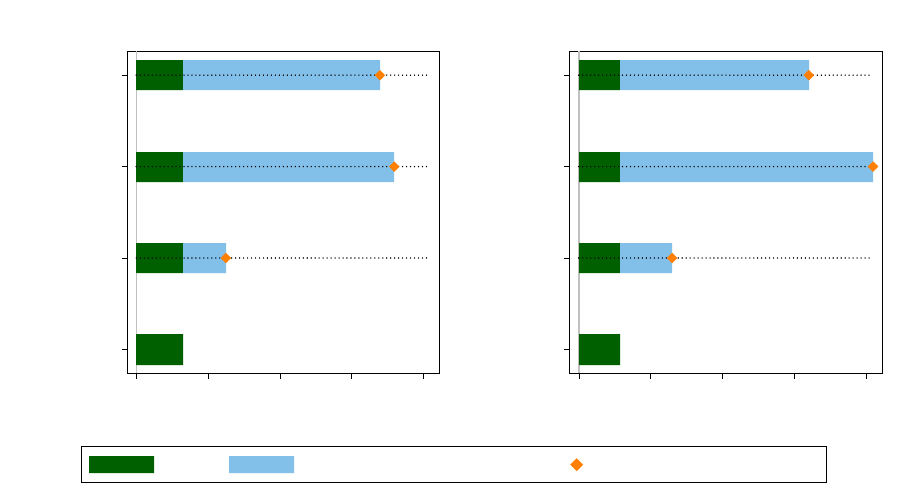
Aggregate rates of return: Robustness checks
A. The effect of GDP weighting
Figure A.1: GDP-weighted returns
Bills
Bonds
Equity
Housing
0 2 4 6 8
Mean annual return, per cent
Full sample
Bills
Bonds
Equity
Housing
0 2 4 6 8
Mean annual return, per cent
Post-1950
Bills Excess Return vs Bills Mean Annual Return
Notes: Arithmetic average real returns p.a., weighted by real GDP. Consistent coverage within each country:
each country-year observation used to compute the average has data for all four asset returns.
This chart shows global average returns for the four asset classes weighted by country GDP,
effectively giving greater weight to the largest economies in our sample, namely the U.S., Japan, and
Germany. The overall effects are relatively minor. For the full sample, returns on equity and housing
are similar at around 7% in real terms. For the post-1950 period, equities outperform housing by
about 2pps. on average. The post-1990 housing bust in Japan and the underperformance of the
German housing market contribute to this result.
A2
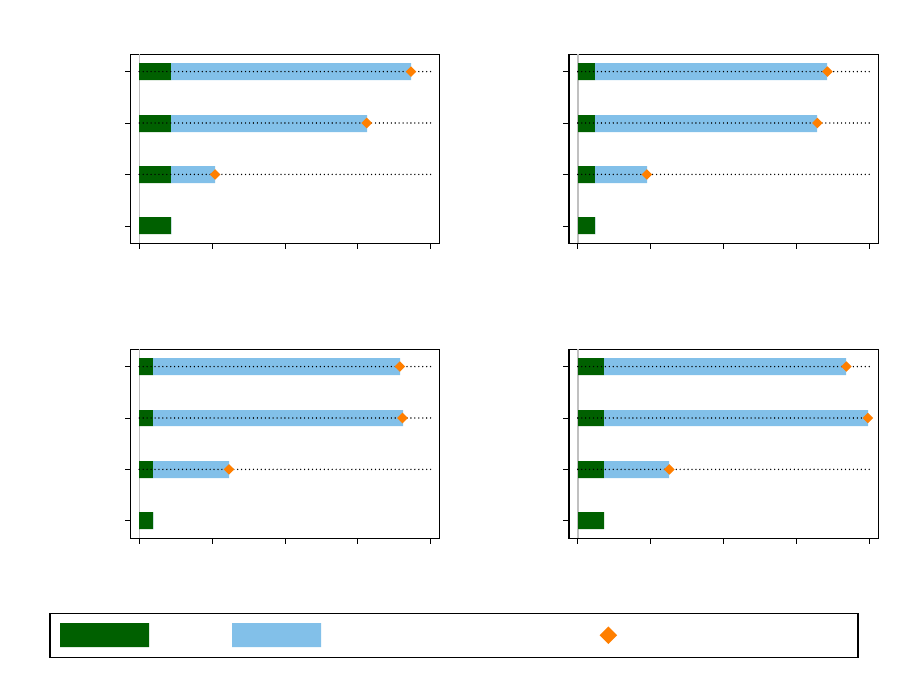
B. More on sample consistency
Throughout the paper, we always use a sample that is consistent within each table and graph, that
is, for any table that shows returns on bills, bonds, equity, and housing, each yearly observation has
data for all four asset returns. For tables showing bonds versus bills only, each yearly observation
has data on both bonds and bills, but may be missing data for equities or housing. At the same
time, returns for different countries generally cover different time periods.
Here we investigate whether adjusting for sample consistency affects our results. First, Figure A.2
plots returns for samples that are consistent both within and across countries, starting at benchmark
years. The later the benchmark year, the more countries we can include. The resulting return
patterns confirm that the basic stylized facts reported earlier continue to hold even under these
more stringent sampling restrictions, and regardless of the time period under consideration.
Next, we consider whether going to a fully “inconsistent” sample —that is, taking the longest
time period available for each asset, without within-country consistency— would change the results.
Table A.1 thus shows returns for the maximum possible sample for each asset. Table A.2, on the
contrary, shows returns for a sample that is consistent within each country, across all four asset
classes. The results in this table can be compared to Table II in the main text. On balance, the choice
of the sample makes almost no difference to our headline results.
Figure A.2: Consistent samples
Bills
Bonds
Equity
Housing
0 2 4 6 8
Mean annual return, per cent
Post-1890 (7 countries)
Bills
Bonds
Equity
Housing
0 2 4 6 8
Mean annual return, per cent
Post-1910 (12 countries)
Bills
Bonds
Equity
Housing
0 2 4 6 8
Mean annual return, per cent
Post-1930 (15 countries)
Bills
Bonds
Equity
Housing
0 2 4 6 8
Mean annual return, per cent
Post-1948 (16 countries)
Bills Excess Return vs Bills Mean Annual Return
Note: Average real returns p.a. (unweighted). Consistent coverage across and within countries.
A3

Table A.1: Returns using longest possible sample for each asset
Country Bills Bonds Equity Housing
Australia 2.02 2.17 8.39 6.37
Belgium 1.68 3.01 5.89 7.89
Denmark 2.98 3.59 7.54 8.22
Finland 0.64 3.22 9.42 9.58
France -0.47 0.84 3.21 6.39
Germany 1.50 3.12 8.83 7.82
Italy 1.20 2.11 6.09 4.77
Japan 0.63 2.54 9.64 6.54
Netherlands 1.37 2.71 6.96 7.22
Norway 1.10 2.55 5.67 8.33
Portugal -0.01 2.76 4.05 6.31
Spain 0.70 1.34 5.77 5.21
Sweden 1.77 3.25 8.00 8.30
Switzerland 1.64 2.41 6.50 5.63
UK 1.16 2.29 6.86 5.44
USA 2.23 2.85 8.40 6.10
Average, unweighted 1.18 2.61 7.02 7.18
Average, weighted 1.34 2.48 7.40 6.69
Note: Average annual real returns. Longest possible sample used for each asset class, i.e. returns are not
consistent across assets or within countries. The average, unweighted and average, weighted figures are
respectively the unweighted and real-GDP-weighted arithmetic averages of individual country returns.
Table A.2: Returns using the full within-country-consistent sample
Country Bills Bonds Equity Housing
Australia 1.29 2.26 7.72 6.54
Belgium 0.77 2.87 6.78 8.64
Denmark 2.99 3.50 7.39 8.29
Finland 0.08 4.25 10.03 9.58
France -0.47 1.54 3.99 7.14
Germany 2.65 4.03 7.11 7.82
Italy 1.37 3.19 7.25 4.77
Japan 0.39 2.18 6.00 6.54
Netherlands 0.78 1.85 6.96 7.28
Norway 0.90 2.29 5.67 8.03
Portugal -0.48 1.37 4.51 6.31
Spain -0.03 1.39 6.32 5.09
Sweden 1.56 3.14 8.02 8.30
Switzerland 0.81 2.33 6.69 5.77
UK 1.15 1.88 6.83 5.44
USA 1.52 2.33 8.46 6.10
Average, unweighted 1.21 2.62 6.70 7.33
Average, weighted 1.29 2.49 7.18 6.78
Note: Average annual real returns. Returns consistent within countries, i.e. each yearly observation for a
country has data on each of the four asset classes. The average, unweighted and average, weighted figures
are respectively the unweighted and real-GDP-weighted arithmetic averages of individual country returns.
A4

C. Returns during world wars
Table A.3: Real returns on risky assets during world wars
Country World War 1 World War 2
Equity Housing Equity Housing
Australia 0.20 1.22 4.86 4.12
Belgium -3.75 -5.84 3.12 8.69
Denmark 6.70 4.35 2.85 11.75
Finland 4.68 0.55 -9.79
France -12.48 -9.37 -4.05 -1.51
Germany -12.37 -26.53 3.82
Italy -6.11
Japan 15.88
Netherlands -0.20 5.07 5.71 9.10
Norway -6.00 -1.38 0.62 2.54
Portugal -3.99 3.96
Spain -5.77 -0.71 -0.73 -4.56
Sweden -15.72 -3.93 5.56 7.89
Switzerland -11.19 -4.46 1.32 3.08
UK -6.67 -0.72 4.56 1.60
USA 0.96 0.06 4.90 8.47
Average, unweighted -3.70 -1.84 2.65 3.85
Average, weighted -3.69 -2.02 5 .39 6.77
Note: Average annual real returns. We include one year from the immediate aftermath of the war, such that
World war 1 covers years 1914—1919, and World War 2 – 1939—1946. Period coverage differs across and
within countries. We exclude World War 2 periods for Italy and Japan because of hyperinflation. The average,
unweighted and average, weighted figures are respectively the unweighted and real-GDP-weighted arithmetic
averages of individual country returns.
The performance of different assets during the major wars is an important issue for asset pricing
models that argue that high risk premiums on equities reflect the risk of economy-wide disasters.
This argument rests on the work of Barro (2006), developed further in collaboration with Emi
Nakamura, John Steinsson and Jose Ursua (Barro and Ursua, 2008; Nakamura, Steinsson, Barro, and
Urs
´
ua, 2013). Table A.3 shows the returns of housing and equity markets during WW1 and WW2.
The data confirm large negative returns in different countries, especially during WW1. In both wars,
housing markets tended to outperform equity, making it potentially more difficult to explain the
large housing risk premium that we find. This being said, the positive returns in various countries
during WW2 are in some cases influenced by price controls affecting our CPI measure and direct
government interventions into asset markets that aimed at keeping prices up (see Le Bris, 2012, for
the case of France). Further, as we do not adjust our return series for changes in the housing stock,
the series here underestimate the negative impact of wartime destruction on housing investments.
As a result, the war time returns shown here likely mark an upper bound, and wars can still be seen
as periods with typically low returns on risky assets.
A5
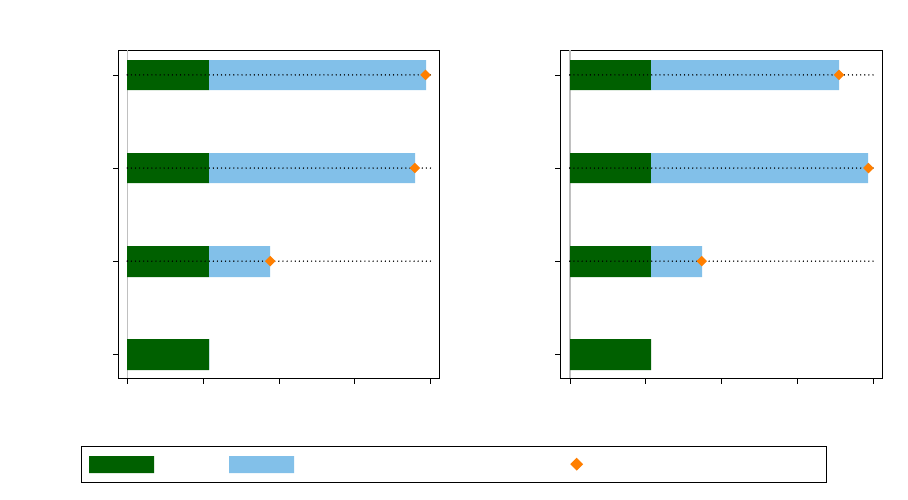
D. Returns excluding world wars
Figure A.3: Returns excluding world wars, full sample
Bills
Bonds
Equity
Housing
0 2 4 6 8
Mean annual return, per cent
Unweighted
Bills
Bonds
Equity
Housing
0 2 4 6 8
Mean annual return, per cent
GDP-weighted
Bills Excess Return vs Bills Mean Annual Return
Note: Average real returns p.a., excluding world wars. Consistent coverage within each country.
In Figure A.3 we exclude WW1 and WW2 from the calculation of aggregate returns, but maintain
the within country consistency of the sample, as before. As expected, excluding the wars pushes up
aggregate returns somewhat, but overall risk premiums and the relative performance of the different
assets classes remain comparable.
A6

Table A.4: Real returns on bonds and bills, including and excluding world wars
Country Full Sample Excluding wars
Bills Bonds Bills Bonds
Australia 1.29 2.24 1.73 2.65
Belgium 1.21 3.01 1.83 3.65
Denmark 3.08 3.58 3.80 4.39
Finland 0.64 3.22 2.17 5.34
France -0.47 1.54 0.89 3.12
Germany 1.51 3.15 2.46 4.06
Italy 1.20 2.53 2.63 4.23
Japan 0.68 2.54 1.85 3.80
Netherlands 1.37 2.71 2.22 3.70
Norway 1.10 2.55 1.91 3.56
Portugal -0.01 2.23 0.94 3.30
Spain -0.04 1.41 1.17 2.73
Sweden 1.77 3.25 2.59 4.39
Switzerland 0.89 2.41 1.67 3.47
UK 1.16 2.29 2.03 3.22
USA 2.23 2.85 3.00 3.60
Average, unweighted 1.14 2.61 2.19 3.84
Average, weighted 1.34 2.51 2.27 3.52
Note: Average annual real returns. Returns excluding wars omit periods 1914—1919 and 1939—1947. Period
coverage differs across countries. Consistent coverage within countries: each country-year observation used
to compute the statistics in this table has data for both real bill and bond returns. The average, unweighted
and average, weighted figures are respectively the unweighted and real-GDP-weighted arithmetic averages of
individual country returns.
Table A.4 displays country returns for bills and bonds including and excluding war periods. The
effect on returns on bonds and bills, both weighted and unweighted, is substantial. The rate of
return on bills almost doubles in real terms when the two war windows are excluded, and returns
on bonds jump by about 1 percentage point.
A7

Table A.5: Real returns on equity and housing, including and excluding world wars
Country Full Sample Excluding wars
Equity Housing Equity Housing
Australia 7.79 6.37 8.47 6.95
Belgium 6.23 7.89 7.47 8.73
Denmark 7.49 8.22 7.87 8.08
Finland 10.03 9.58 11.73 11.31
France 3.21 6.39 4.75 7.76
Germany 7.11 7.82 7.28 8.13
Italy 7.25 4.77 6.60 4.51
Japan 6.00 6.54 6.75 6.79
Netherlands 6.96 7.28 7.39 7.22
Norway 5.67 8.03 6.56 8.85
Portugal 4.51 6.31 4.51 6.31
Spain 5.83 5.21 6.92 6.41
Sweden 8.02 8.30 9.51 8.98
Switzerland 6.51 5.63 8.01 6.44
UK 6.83 5.44 7.82 5.69
USA 8.46 6.10 9.28 6.22
Average, unweighted 6.67 7.26 7.57 7.88
Average, weighted 7.12 6.72 7.86 7.10
Note: Average annual real returns. Returns excluding wars omit periods 1914—1919 and 1939—1947. Period
coverage differs across countries. Consistent coverage within countries: each country-year observation used to
compute the statistics in this table has data for both real housing and equity returns. The average, unweighted
and average, weighted figures are respectively the unweighted and real-GDP-weighted arithmetic averages of
individual country returns.
In Table A.5 we look at the performance of risky assets for the full sample and excluding war
periods. The effects are visible, but less strong than in the case of bonds and bills before. Excluding
war years pushes up returns on equity and housing by 50 to 80 basis points. These effects are largely
independent of the GDP-weighting.
A8

Table A.6: Real risky and safe asset returns, including and excluding world wars
Country Full Sample Excluding wars
Risky return Safe return Risky return Safe return
Australia 6.96 1.77 7.46 2.20
Belgium 8.31 1.82 8.53 2.61
Denmark 8.02 3.05 7.88 3.82
Finland 10.87 2.16 12.68 3.55
France 6.54 0.54 7.39 2.01
Germany 7.90 3.34 8.19 3.36
Italy 5.32 2.28 5.01 2.94
Japan 6.79 1.29 7.11 2.08
Netherlands 7.30 1.31 7.36 2.39
Norway 7.96 1.59 8.83 2.55
Portugal 6.46 0.45 6.46 0.45
Spain 5.39 0.68 6.26 1.96
Sweden 8.52 2.35 9.51 3.41
Switzerland 6.51 1.57 7.37 2.50
UK 6.35 1.51 6.91 2.39
USA 7.12 1.92 7.45 2.73
Average, unweighted 7.44 1.88 8.09 2.93
Average, weighted 7.22 1.89 7.67 2.80
Note: Average annual real returns. Returns excluding wars omit periods 1914—1919 and 1939—1947. Real
risky return is a weighted average of equity and housing, and safe return - of bonds and bills. The weights
correspond to the shares of the respective asset in the country’s wealth portfolio. Period coverage differs
across countries. Consistent coverage within countries: each country-year observation used to compute the
statistics in this table has data for both the risky and safe return. The average, unweighted and average,
weighted figures are respectively the unweighted and real-GDP-weighted arithmetic averages of individual
country returns.
Table A.6 underlines the outperformance of risky assets once we exclude the wars. Average safe
returns are about 1 percentage point lower in the full sample, relative to the sample that exclude
war years. By contrast, risky returns only rise by between 40 and 60 basis points when we exclude
wars. As discussed above the measurement of returns in wars is problematic and we are inclined
not to read too much into the relative outperformance of risky assets in war times.
A9

Table A.7: Return on capital and GDP growth, including and excluding world wars
Country Full Sample Excluding wars
Return on
wealth
GDP growth Return on
wealth
GDP growth
Australia 5.91 3.51 6.48 3.64
Belgium 6.38 2.32 6.77 2.51
Denmark 7.37 2.70 7.32 2.75
Finland 9.76 3.49 11.63 3.63
France 4.92 2.55 6.03 2.75
Germany 7.07 2.81 7.30 2.98
Italy 5.08 3.82 4.94 3.23
Japan 5.59 4.18 6.31 4.31
Netherlands 5.33 3.16 5.86 3.16
Norway 6.86 3.06 7.71 3.13
Portugal 5.87 3.39 5.87 3.39
Spain 4.58 3.21 5.69 3.44
Sweden 7.41 2.89 8.45 2.97
Switzerland 5.63 2.33 6.56 2.55
UK 4.75 2.09 5.50 2.23
USA 6.03 3.38 6.63 3.19
Average, unweighted 6.30 2.86 7.12 2.93
Average, weighted 5.98 3.04 6.69 2.97
Note: Average annual real returns. Returns excluding wars omit periods 1914—1919 and 1939—1947. Real
return on wealth is a weighted average of bonds, bills, equity and housing. The weights correspond to the
shares of the respective asset in each country’s wealth portfolio. Period coverage differs across countries.
Consistent coverage within countries: each country-year observation used to compute the statistics in this
table has data for both the real return on wealth and the real GDP growth rate. The average, unweighted and
average, weighted figures are respectively the unweighted and real-GDP-weighted arithmetic averages of
individual country returns.
Table A.7 looks at the effects of war periods on the aggregate return on capital and GDP growth on
a country level and for the global sample. The aggregate return on capital is about 75 basis points
higher outside world wars, while GDP growth rates are barely affected as the war effort boosted
GDP in many countries in the short term.
A10

E. Returns before the Global Financial Crisis
Table A.8: Asset returns before the Global Financial Crisis
Country Bills Bonds Equity Housing
Australia 1.30 1.95 8.20 6.49
Belgium 1.35 2.86 6.07 8.22
Denmark 3.31 3.56 7.18 8.73
Finland 0.76 3.10 10.65 9.96
France -0.46 1.17 3.20 6.69
Germany 1.64 3.13 7.21 7.80
Italy 1.30 2.24 8.16 5.32
Japan 0.74 2.51 6.25 6.88
Netherlands 1.48 2.50 7.19 7.77
Norway 1.14 2.41 5.63 8.14
Portugal -0.00 1.64 5.50 7.19
Spain 0.01 0.95 6.21 5.89
Sweden 1.86 3.09 7.81 8.32
Switzerland 0.99 2.17 6.59 5.40
UK 1.32 2.16 7.11 5.74
USA 2.43 2.71 8.55 6.29
Average, unweighted 1.24 2.42 6.79 7.50
Average, weighted 1.46 2.36 7.23 6.93
Note: Average annual real returns excluding the Global Financial Crisis (i.e. sample ends in 2007). Period
coverage differs across countries. Consistent coverage within countries: each country-year observation used
to compute the statistics in this table has data for returns on all four asset classes. The average, unweighted
and average, weighted figures are respectively the unweighted and real-GDP-weighted arithmetic averages of
individual country returns.
This Table cuts the sample off in 2007, i.e., before the Global Financial Crisis. Comparing this table
to Tables 4 and 5 in the main text shows that the effects are relatively minor. The crisis only shaves
off about 10-20 basis points from equity and housing returns, and adds about 10 basis points to bills
and bonds.
A11

Table A.9: Risky and safe returns, including and excluding the GFC
Country Full Sample Excluding the GFC
Risky return Safe return Risky return Safe return
Australia 6.96 1.77 7.16 1.63
Belgium 8.31 1.82 8.58 1.80
Denmark 8.02 3.05 8.28 3.15
Finland 10.87 2.16 11.38 2.19
France 6.54 0.54 6.82 0.36
Germany 7.90 3.34 7.90 3.49
Italy 5.32 2.28 5.93 2.18
Japan 6.79 1.29 7.03 1.28
Netherlands 7.30 1.31 7.70 1.19
Norway 7.96 1.59 8.04 1.52
Portugal 6.46 0.45 7.36 -0.26
Spain 5.39 0.68 6.06 0.47
Sweden 8.52 2.35 8.44 2.30
Switzerland 6.51 1.57 6.44 1.49
UK 6.35 1.51 6.66 1.52
USA 7.12 1.92 7.22 1.91
Average, unweighted 7.44 1.88 7.65 1.84
Average, weighted 7.22 1.89 7.38 1.87
Note: Average annual real returns excluding the Global Financial Crisis (i.e. sample ends in 2007). Real
risky return is a weighted average of equity and housing, and safe return - of bonds and bills. The weights
correspond to the shares of the respective asset in the country’s wealth portfolio. Period coverage differs
across countries. Consistent coverage within countries: each country-year observation used to compute the
statistics in this table has data for both the real risky and the real safe return. The average, unweighted and
average, weighted figures are respectively the unweighted and real-GDP-weighted arithmetic averages of
individual country returns.
This Table recalculates risky and safe returns including and excluding the Global Financial Crisis
on a country level and for the global average. As noted before, the effects are quantitatively small.
Excluding the crisis boosts risky returns by 10-20 basis, and lower safe returns by no more than 5
basis points. In light of the long time horizon of nearly 150 years, asset performance in the recent
crisis plays a minor role for the returns presented here.
A12

F. Returns across different monetary regimes
Table A.10: Returns across different monetary regimes
Bills Bonds Equity Housing Risk
premium
Gold standard (1870–1913)
Mean return p.a. 3.06 2.81 5.96 7.49 4.25
Standard deviation 3.22 5.00 8.65 8.87 7.29
Geometric mean 3.01 2.69 5.60 7.14 4.01
Observations 305 305 305 305 301
Amended gold standard (1919–1938)
Mean return p.a. 4.25 7.11 7.63 7.86 2.39
Standard deviation 7.77 13.58 21.58 12.04 13.53
Geometric mean 3.96 6.29 5.52 7.25 1.51
Observations 264 264 264 264 264
Bretton-Woods (1946–1973)
Mean return p.a. -0.82 -1.01 6.43 8.98 9.70
Standard deviation 5.59 8.85 21.00 11.17 10.00
Geometric mean -1.00 -1.44 4.44 8.45 9.29
Observations 403 403 403 403 403
Floating exchange rates (1974–2015)
Mean return p.a. 1.38 4.34 8.56 6.30 4.42
Standard deviation 3.39 10.82 26.29 7.61 11.49
Geometric mean 1.32 3.79 5.27 6.03 3.84
Observations 670 670 670 670 670
Note: Annual global returns and risk premiums in 16 countries, equally weighted. Period coverage differs
across countries. Consistent coverage within countries: each country-year observation used to compute the
statistics in this table has data for all four asset returns. Risk premium is the risky return (weighted average
of equities and housing) minus the safe return (weighted average of bonds and bills).
Table A.10 examines how the returns on the four asset classes in this paper, and the risk premium,
vary across monetary regimes. We roughly divide the time period in this study into the fixed
exchange rates under the pre WW1 gold standard, the amended interwar gold standard, the Bretton-
Woods era, and the post-Bretton-Woods floating exchange rates. Consistent with Figures VII and
XIII, the returns on the risky assets have been stable across all four regimes. The volatility of
equity returns has generally increased overtime, starting at levels comparable to housing under
the Gold Standard, before reaching a peak of 26% under floating exchange rates. Housing returns
were highest during the Bretton-Woods era (average 9% p.a.), whereas equity returns—during the
A13
recent floating exchange rate period (average 8.6% p.a.). Real bond and bill returns have, on the
contrary, been much more variable across these different regimes, mirroring the pattern discussed in
Section VI: they were high during the gold standard, both pre WW1 and interwar, and low—in fact,
negative—during Bretton-Woods. The risk premium has also varied across these four regimes, with
the swings largely driven by those in the safe rate. As discussed in Section VI, the risk premium
was highest during the Bretton-Woods era, which also saw remarkably few financial crises.
A14

G. Returns during disasters
Table A.11: Returns during consumption disasters
Country Consumption Real returns
Peak Trough Drop Equity Housing Bonds Bills
Australia 1913 1918 23.8 3.69 12.43 -4.62 -5.92
1927 1932 23.4 14.40 -0.28 18.83 35.88
1938 1944 30.1 5.70 35.89 0.49 -8.45
Belgium 1913 1917 44.5 -54.74 -33.05
1937 1942 53.0 -15.22 -35.88 -61.72 -66.44
Denmark 1919 1921 24.1 -37.32 -5.60 -37.63 -19.08
1939 1941 26.1 -13.93 -3.64 -16.06 -14.06
1946 1948 14.4 9.08 51.83 1.96 4.93
Finland 1913 1918 36.0 -7.43 -72.72 -60.10
1928 1932 19.9 -6.10 17.14 49.87 49.00
1938 1944 25.4 12.13 -45.62 -32.83 -38.39
1989 1993 14.0 -57.92 -17.40 32.92 30.18
France 1912 1915 21.5 -7.11 16.14 -19.25 7.93
1938 1943 58.0 110.36 -11.38 -19.55 -45.70
Germany 1912 1918 42.5 -39.37 -52.74 -50.38
1928 1932 12.1 -54.91 15.25 12.24 45.08
1939 1945 41.2 79.03 1.91
Netherlands 1889 1893 9.8 21.90 21.46 12.20
1912 1918 44.0 10.55 27.55 -25.95 -15.59
1939 1944 54.5 48.15 87.58 -19.97 -26.12
Norway 1916 1918 16.9 9.76 -1.40 -26.97 -26.54
1919 1921 16.1 -43.18 4.65 -28.47 -11.32
1939 1944 10.0 27.47 -2.47 -16.72 -25.84
Portugal 1913 1919 21.5 -21.90 -46.06 -53.88
1934 1936 12.1 33.56 35.30 8.91
1939 1942 10.4 5.76 -4.54 0.99
1974 1976 9.8 -73.88 -32.62 -53.52 -28.47
Spain 1913 1915 12.8 -4.97 8.23 -0.18 8.35
1929 1930 10.1 -0.24 6.10 -1.51 0.68
1935 1937 46.1 42.88 -5.45 3.65
1940 1945 14.5 -23.44 -16.64 -42.18
1946 1949 13.1 -9.90 -21.44 -32.36 -28.93
Sweden 1913 1917 11.5 -8.83 5.83 -22.59 -9.90
1920 1921 13.2 -20.13 14.01 -12.25 3.46
1939 1945 18.2 16.00 30.53 -34.64 -18.16
Continued overleaf
A15

Returns during consumption disasters, continued
Country Consumption Real returns
Peak Trough Drop Equity Housing Bonds Bills
Switzerland 1912 1918 10.8 -34.04 -28.62 -28.50 -27.71
1939 1945 17.3 -15.15 -9.19 -20.37 -23.49
UK 1915 1918 16.7 -34.12 8.93 -48.94 -31.30
1938 1943 16.9 -12.27 -10.14 -27.42
USA 1917 1921 16.4 -49.07 -11.88 -44.32 -36.24
1929 1933 20.8 -51.64 -5.58 50.71 46.35
Averages:
All disasters 23.3 -6.71 2.23 -14.94 -12.46
Consistent sample 22.0 -8.94 3.59 -14.74 -9.30
No WW2 21.2 -19.68 0.74 -12.05 -5.35
Note: Consumption and cumulative real total returns on each asset class during consumptions disasters.
Disaster dates from Barro and Urs
´
ua (2008). Cumulative consumption drop from peak to trough year, and
cumulative real returns from one year before consumption peak to one year before the trough. Negative
return means an asset return drop during disaster. Disasters with missing or poor quality asset return data
excluded. All-disaster average uses all disasters where we have data for the particular asset class. Consistent
sample average uses only those disasters with data for all four assets. No WW2 average excludes World War
2.
Table A.11 summarises returns on the four asset classes during consumption disasters. Disaster
dates and consumption data are taken from Barro and Urs
´
ua (2008). A disaster is defined as a
real consumption drop of 10% or more. Asset returns are from this paper, and include both the
capital gain and yield components, net of inflation. As in Barro and Urs
´
ua (2008), the return figures
are from the year before consumption peak to the year before the trough, and do not typically
correspond to peak-to-trough asset price declines. We exclude those disasters where asset data are
missing, or unreliable—for example, due to a hyperinflation—from the comparison. Despite these,
the data for remaining disasters are imperfect, largely due to various potential biases discussed in
Sections III.B and III.C. There is likely to be some upward bias to returns because equity returns
do not fully capture the effect of delistings, and housing returns do not fully capture the effect
of wartime housing stock destruction. Some returns may also be subject to market intervention
and price controls, especially during WW2. Still, we have strived to improve the data quality and
coverage of asset return data during disasters, and hope that the above comparison provides a
best-practice assessment of asset market performance during these time periods.
The upper part of Table A.11 lists the cumulative returns on each of the four asset classes
during individual disaster episodes. Most disasters occur during the two world wars and the
Great Depression. The several additional country-specific events include the Portuguese Carnation
revolution (1974) and the Spanish Civil War (1936–1940). For most disasters, returns on all assets are
low and typically negative. The disaster that had the most pronounced impact on asset markets is
the Portuguese Carnation Revolution of 1974. In the aftermath of the revolution, equity returns fell
by three-quarters, housing returns by one-third, and bill and bond returns by between one-third
and one-half.
Some disasters saw postive returns, in particular for the risky asset classes. This is especially
true for a number of countries during the WW2 German occupation. Equity returns in France,
A16

Table A.12: Returns during hyperinflations
Episode Real returns Nominal returns Inflation
Bills Bonds Equity Bills Bonds Equity
Finland, 1917–1918 -69.54 -60.67 -60.76 4.00 34.29 33.96 241.41
Germany, 1920–1924 -100.00 -100.00 -29.03 36.95 90.37 2.25e+13 3.17e+13
Italy, 1943–1944 -76.35 -70.08 -43.40 5.10 32.96 151.53 344.39
Japan, 1944–1947 -97.66 -97.59 8.30 11.58 4522.09
Note: Cumulative real and nominal returns during hyperinflations. No housing returns data are available for
these episodes. Because of potential timing differences and uncertainties about inflation rates, the returns are
potentially subject to a large measurement error.
Netherlands and Germany during WW2 rose by between 50 and 100 per cent in real terms. Much
of this is likely due to financial repression by the occupying government, aimed at directing funds
to the stock market in order to finance the war effort (see Le Bris, 2012, for the case of France).
As discussed in Section III.B, timing also played a role: for a while, the government was able to
intervene in markets and sustain high returns, but asset prices usually underwent a correction at
some point. Taking the French case again, the stock market fell by a factor of 18 (95%) between years
1943 and 1950, more than reversing the gains made during 1938–1943. Some of the high housing
returns observed during WW2 could be driven by price and rent controls, and the fact that our data
do not account for wartime destruction. To this purpose, when comparing averages at the bottom of
Table A.11, we have included a comparison for disasters outside of the Second World War.
The disasters with the worst asset market performance were not necessarily those with the
highest consumption drops. For example, the Portuguese revolution only saw a 10% consumption
drop, and is excluded from some measures of consumption disastes such as that in Nakamura,
Steinsson, Barro, and Urs
´
ua (2013). The years leading up to the Spanish Civil War, on the contrary,
saw a 46% consumption drop while the stock market boomed.
On average, consumption disasters are associated with low and negative asset returns (Table A.11,
bottom panel). Safe assets do the worst, largely because they provide a poor hedge for inflation
risk. Housing returns, on average, seem more robust to disasters, recording a low but positive real
return (+2.2% cumulative), even excluding the period of WW2 that saw widespread housing market
controls and war destruction (+0.7% cumulative real return excluding WW2). Equities do much
worse in disasters outside of WW2, with an average cumulative real return of -20%, compared to
-6.7% return in all disasters. This is consistent with the notion that stock markets were artificially
supported through regulations and financial repression in some countries during the Second World
War.
One type of disaster event that we exclude from our main sample are hyperinflations. We
do this because of very large measurement error during these time periods: not only are price
changes and capital gains on assets measured imprecisely, but timing matters a lot: for example, if
the price change is measured from June one year to June the next, but asset prices are measured
in December each year, and the inflation rate is increasing sharply, real returns would be vastly
overstated. Nevertheless, our data do allow us to make some tentative estimates on the size of
returns during these time periods. These are presented in Table A.12. We do not have any housing
return data for hyperinflation periods, but we have equity, bond and bill return data for three
episodes (Finland post WW1, Germany 1920s and Italy WW2), and bond and bill return data for the
post WW2 hyperinflation in Japan.
A17
One can see that the nominally fixed assets—bonds and bills—fare worst during these time
periods. Domestic government debt holders were more or less wiped out during the German
hyperinflation, and lost most of their capital during the Japanese post-WW2 episode. Equity holders
fare somewhat better, but still suffer losses. During the German hyperinflation, for example, equities
generally kept pace with the explosive growth in consumer prices. Including hyperinflations in
our sample would have a very small effect on the aggregate average equity returns because of the
infrequency of these episodes, and the fact that equity holders are not generally wiped out during
hyperinflations. Cross-country arithmetic average returns on bonds and bills would also change
little, but the geometric mean return on these two assets would fall to near zero, reflecting the highly
negative real returns on these assets during the German hyperinflation.
A18

H. Returns without interpolation
Table A.13: Returns with and without interpolation
Baseline No interpolation
Equity Housing Equity Housing
Mean return p.a. 6.73 6.93 6.86 6.99
Standard deviation 21.91 10.31 21.80 10.15
Observations 1790 1790 1783 1782
Note: Equity and housing returns with (baseline) and without interpolation. Interpolation only used to
cover the following disaster periods. Equity: Spanish Civil War, Portuguese Carnation Revolution. Housing:
Belgium WW1, Sweden WW1, Spanish Civil War. We only interpolate either house prices or rents, never both.
16 countries, unweighted.
For a very small number of observations, we interpolate our equity and housing return series to
obtain a proxy of the annual return during disasters, for example when the stock exchange was
closed or when only either annual rental or house price data exist, but not both. These cover selected
periods in WW1, the Spanish Civil War and the Portuguese Carnation Revolution, with a total of 7
observations for equities and 8 for housing. Table A.13 compares our baseline interpolated returns
with those without interpolation. The returns and their volatility (annual standard deviation) are
almost identical, albeit interpolated returns are slightly lower because they better proxy the returns
during disaster periods.
A19

I. US Dollar returns
Table A.14: Global real returns for a US-Dollar investor
Real returns Nominal Returns
Bills Bonds Equity
Housing
Bills Bonds Equity
Housing
Full sample:
Mean return p.a. 1.97 3.52 7.89 8.17 4.41 5.93 10.45 10.84
Standard deviation 12.05 15.49 24.98 15.72 11.63 14.81 25.21 16.09
Geometric mean 1.18 2.33 5.02 6.99 3.69 4.86 7.62 9.64
Mean excess return p.a. 0.21 1.76 6.13 6.41
Standard deviation 11.23 14.63 24.63 15.73
Geometric mean -0.47 0.71 3.32 5.23
Observations 1767 1767 1767 1767 1767 1767 1767 1767
Post-1950:
Mean return p.a. 2.26 4.12 9.62 9.02 5.72 7.60 13.22 12.70
Standard deviation 10.59 13.75 26.32 14.89 10.95 13.88 26.81 15.34
Geometric mean 1.72 3.23 6.50 8.04 5.17 6.73 10.11 11.70
Mean excess return p.a. 0.80 2.66 8.16 7.56
Standard deviation 10.58 13.83 26.11 15.02
Geometric mean 0.25 1.75 5.06 6.54
Observations 1022 1022 1022 1022 1022 1022 1022 1022
Note: Global average US-Dollar returns, equally weighted. Real returns subtract US inflation. Excess returns
are over US Treasury bills. Period coverage differs across countries. Consistent coverage within countries:
each country-year observation used to compute the statistics in this table has data for all four asset returns.
Table A.14 shows nominal and real returns from the perspective of a U.S. dollar (USD) investor.
The Table can be directly compared to Table II in the paper. Overall, calculating returns in dollars
increases their volatility, since returns now also fluctuate with nominal exchange rate movements.
It also adds up to 1 percentage point to the local currency returns reported in Table II. The higher
average return is, for the most part, driven by the higher volatility—exchange rate movements
amplify both positive and negative returns, but because returns are on average positive, the average
return increases. The effects are stronger after WW2, going hand-in-hand with the greater exchange
rate volatility after the collapse of the Bretton Woods system.
A20

Table A.15: USD returns by country
Country Bills Bonds Equity Housing
Australia 1.77 2.59 8.53 7.28
Belgium 0.96 3.27 7.36 8.92
Denmark 3.63 4.12 7.94 8.93
Finland 1.93 6.48 12.08 12.00
France 1.05 3.10 5.16 8.87
Germany 4.33 5.81 8.75 9.69
Italy 2.85 4.81 8.73 6.37
Japan 2.37 4.15 8.00 8.74
Netherlands 1.87 2.93 7.91 8.67
Norway 1.64 3.04 6.72 8.88
Portugal 0.23 2.11 6.09 7.10
Spain 0.93 2.36 7.47 6.38
Sweden 2.08 3.64 8.63 8.87
Switzerland 2.04 3.62 7.62 7.14
UK 1.89 2.66 7.66 6.25
USA 1.52 2.33 8.46 6.10
Average, unweighted 2.08 3.55 7.67 8.36
Average, weighted 2.03 3.28 7.95 7.63
Note: Average annual real US-Dollar returns. Calculated as nominal US-Dollar return minus US inflation.
Period coverage differs across countries. Consistent coverage within countries. The average, unweighted and
average, weighted figures are respectively the unweighted and real-GDP-weighted arithmetic averages of
individual country returns.
In Table A.15 we display Dollar returns for individual asset classes and individual countries for the
full sample. For US-Dollar based fixed income investors, Germany and Finland offered the highest
returns. In housing markets, Germany and Finland again stand out, and high returns are seen in
Belgium, France, Netherlands and the Scandinavian countries. In equity markets, Finland, Italy, and
Sweden were the best performing markets.
A21

J. Risky returns ranked by country
Table A.16: Risky returns ranked by country
Country Full sample Post-1950 Post-1980
Finland 10.87 13.10 13.06
Sweden 8.52 10.23 11.42
Belgium 7.60 8.72 7.99
Denmark 8.01 7.85 6.84
Norway 7.96 9.32 10.65
Germany 7.90 5.83 5.20
Average, unweighted 7.44 8.10 7.65
Netherlands 7.30 8.77 7.42
USA 7.12 7.03 7.28
Australia 6.96 8.43 7.71
Japan 6.79 7.05 4.81
France 6.54 9.09 6.61
Switzerland 6.51 7.04 7.76
Portugal 6.46 6.21 7.41
UK 6.35 7.85 7.66
Spain 5.39 6.17 5.46
Italy 5.32 5.85 5.21
Note: Average annual real risky returns. Real risky return is a weighted average of equity and housing. The
weights correspond to the shares of the respective asset in the country’s wealth portfolio. Period coverage
differs across countries. The figure is the unweighted arithmetic average of individual country returns.
In Table A.16 we rank risky returns in the different countries. We calculate risky returns as a
combination of equity and housing weighted by the share of each asset in the country’s total
wealth portfolio. North-western Europe—essentially the Scandinavian countries plus Germany and
Belgium—stands out as the region with the highest aggregate returns on risky assets. The U.S.
returns are about average, while the southern European countries have comparatively low long-run
returns.
A22

K. Risky returns over longer time horizons
Table A.17: Equity and housing return moments over longer time horizons
1-year (baseline) 5-year 10-year 20-year
Equity
Housing
Equity
Housing
Equity
Housing
Equity
Housing
Mean return p.a. 6.88 7.06 7.11 7.00 7.11 7.16 7.24 7.10
Standard deviation 21.79 9.93 9.12 5.39 7.42 4.02 6.41 2.75
Observations 1767 1767 337 337 152 152 58 58
Note: Average global real returns in 16 countries averaged over 1-year, 5-year, 10-year and 20-year non-
overlapping windows.
Table A.17 computes average equity and housing returns over longer time horizons. Because of high
transaction costs, housing returns are likely to exhibit much more sluggish responses to shocks than
equity returns, and display larger volatility or variability at medium to long horizons. Columns
1 and 2 present the baseline 1-year returns compared to average returns over 5, 10 and 20-year
windows. The volatility of both equity and housing returns falls, the longer the smoothing window.
But the two fall at the same rate, and the standard deviation of housing returns is always around
half of equity returns, regardless of the time horizon.
A23

L. Equity return comparison with existing sources
Table A.18: Real equity returns in our dataset compared to existing literature
Full sample Post-1900 Dimson et al. Barro and Ursua
Australia 8.39 7.81 8.93 10.27
Belgium 5.89 5.65 5.32
Denmark 7.54 7.49 7.10 7.50
Finland 9.42 9.72 10.23 12.68
France 3.21 2.27 5.83 5.43
Germany 8.83 9.11 9.18 7.58
Italy 6.09 5.68 6.35 5.10
Japan 9.64 8.60 9.50 9.28
Netherlands 6.96 6.96 6.92 9.01
Norway 5.67 5.73 7.20 7.16
Portugal 4.05 3.36 8.66
Spain 5.77 5.77 5.77 6.10
Sweden 8.00 7.94 7.87 9.23
Switzerland 6.50 6.50 6.19 7.26
UK 6.86 6.74 7.06 6.41
USA 8.40 8.43 8.59 8.27
Average, unweighted 7.02 6.69 7.50 7.95
Average, weighted 7.40 7.18 7.71 7.83
Note: Average annual real equity returns. Period coverage differs across countries. Consistent coverage within
countries. The average, unweighted and average, weighted figures are respectively the unweighted and
real-GDP-weighted arithmetic averages of individual country returns. Full sample estimates cover our entire
dataset, post-1900 estimates are our data restricted to years 1900 and after. Dimson et al. data are from the
Dimson-Marsh-Staunton dataset, which covers the period from 1900 onwards. Barro and Ursua are data from
Barro and Urs
´
ua (2008), some series starting in 1870 and others in later years. Barro and Ursua weighted
average is weighted by 2000 real GDP.
Table A.18 compares our equity return estimates with those in the existing literature, using the
updated dataset in Dimson, Marsh, and Staunton (2009) (DMS), and the data in Barro and Urs
´
ua
(2008) (BU), with the latter sourced from Global Financial Data. Our equity return estimates are
similar to those of DMS and BU, but generally slightly lower, with the largest differences in the
returns for France and Portugal. The lower returns for France come from a higher-quality value
weighted index in Le Bris and Hautcoeur (2010), which eliminates a number of accuracy problems
in older indices, mainly related to selection bias and weighting, and hence results in lower returns
than the indices used in DMS and BU.
48
The low returns for Portugal are partly attributable to better
coverage of the market crash after the Carnation Revolution of 1974 (see Section III.B and Table III).
The volatility of equity returns is similar across the different sources. The standard deviation of
equity returns in our dataset is 21.8 percentage points p.a., compared to 24.4 in DMS and 23.1 in
BU.
49
48
See Le Bris and Hautcoeur (2010) for a further discussion of these issues.
49
The BU standard deviation figure is an average of country-specific standard deviations; whereas our and
DMS standard deviation is computed across the whole cross-country portfolio.
A24
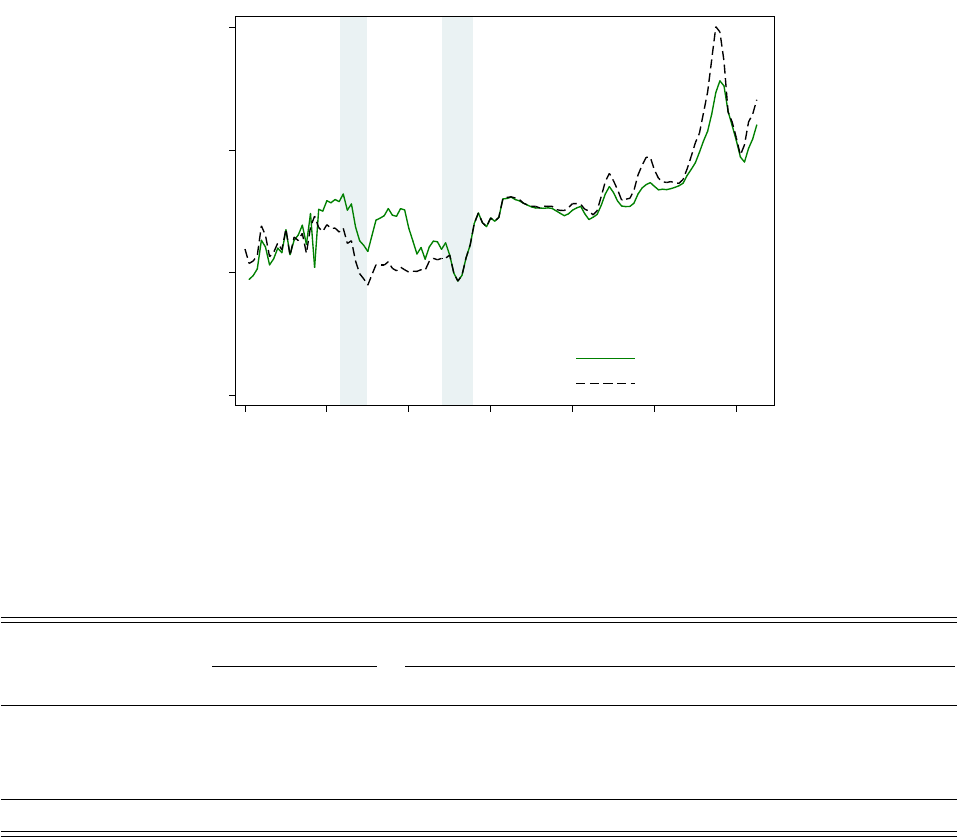
M. Housing return comparison to Shiller
Figure A.4: Real house price index in this paper compared to Shiller
0 1 2 3
Index: 1941 = 1
1890 1910 1930 1950 1970 1990 2010
Baseline
Shiller (2000)
Note: Real house price indices, normalised to equal 1 in 1941. Our house price index is sourced from Knoll
et al. (2017). Shiller house price index from Shiller (2000), updated.
Table A.19: Comparison of our housing return estimates to the Shiller series
Shiller (2000) Our baseline
Real capital gain Real capital gain Rental yield Total return
Mean return p.a. 0.76 0.90 5.33 6.10
Standard deviation 6.35 7.84 0.75 8.12
Geometric mean 0.56 0.61 5.32 5.80
Observations 125 125 125 125
Note: Real housing returns, capital gains and rental yield for the US. Shiller data use the house price index
from Shiller (2000).
The house price index in this paper is sourced from Knoll et al. (2017). Figure A.4 compares this
house price index with that in Shiller (2000). The main difference between the indices in Knoll et al.
(2017) and Shiller (2000) is that Knoll et al. (2017) use the index in Fishback and Kollmann (2015)
for the period 1929–1940, which is a hedonic index based on 106 cities, and has wider geographic
coverage than the Shiller (2000) index of 5 cities during this period. We normalize the indices
to equal 1 in 1941 the point before which we use a different index to Shiller. The Fishback and
Kollmann (2015) index registers larger house price falls in the Great Depression, which means that
extrapolated back, the house prices in the early 20th century are somewhat higher. Knoll et al.
(2017) also use the FHFA OFHEO index for the period 1975–2012, which reports similar growth
A25

to Shiller’s index. Across the full sample, the differences between the two indices are small. For
further detail on the differences between the two series and the underlying methodologies used,
see Online Appendix of Knoll et al. (2017). The first two columns of Table A.19 summarize the key
moments of the two indices. The real capital gains and their standard deviation are almost identical
for the two series. Table A.19 adds the rental yield estimates to arrive at a total housing return
figure for the US. As discussed in Section IV.C, most of the real return in our series comes from
the rental yield, both for the US and other countries—although the rental yield share in returns is
higher in the US than in most countries, and the real capital gain—lower.
50
Therefore, for our index
as for that in Shiller (2000), real capital gains are low but total housing returns are high. For equities
too—especially in geometric mean terms—most of the real return comes about from the dividend
yield (see Section IV.C and Appendix N).
50
As in Section IV.C, we subtract the inflation rate from the capital gain rather than yield.
A26

N. Further detail on housing and equity return decomposition
Table A.20: Total nominal return components for equity and housing
Equity Housing
Capital
gain
Dividend
income
Total
return
Capital
gain
Rental
income
Total
return
Full sample:
Mean return p.a. 6.59 4.17 10.77 5.55 5.50 11.05
Standard deviation 21.89 1.74 22.36 10.34 2.05 10.69
Geometric mean 4.48 4.16 8.64 5.08 5.48 10.57
Observations 1707 1707 1707 1707 1707 1707
Post-1950:
Mean return p.a. 9.25 3.80 13.06 7.02 5.22 12.24
Standard deviation 24.45 1.81 25.08 9.79 1.93 10.22
Geometric mean 6.59 3.79 10.34 6.62 5.21 11.82
Observations 995 995 995 995 995 995
Note: Average annual nominal capital gain, dividend or rental income, and total return across 16 countries,
unweighted. Standard deviation in parentheses. Period coverage differs across countries. Consistent coverage
within countries: each country-year observation used to compute the statistics in this table has data for both
equity and housing returns, capital gains and yields. Dividend and rental income expressed in percent of
previous year’s asset price.
Tables A.20–A.22 present some alternative decompositions of risky returns into capital gain and
dividend or rental income. Table A.20 shows the decomposition of nominal returns, and does not
take a stance on subtracting inflation from capital gains or dividend/rental income. The nominal
return is split roughly 50/50 between capital gains and dividend or rental income, with, as in
Table VIII, a somewhat higher share of the equity returns accoutned for by capital gains. After 1950,
roughly three-quarters of the nominal equity return comes about from capital gains. Table A.21
shows the nominal return decomposition by country. Capital gains account for most of the nominal
return in every country, whereas rental yield accounts for most of the housing return in all but two
countries, with the remaining two countries split roughly equally between dividends and capital
gains. Table A.22 goes back to the real return decomposition (aggregates show in Table VIII), but
now shows the by-country splits in geometric mean terms. The importance of dividend and rental
income becomes rather ubiquitous. The geometric real capital gain for housing in the US is low
at 0.6, echoing the findings of Shiller (2000) (see also Table A.19).Even though real capital gains
n the US are the lowest in our sample, their level is by no means unusual—for example, both
Spain and Sweden display similarly low capital gains, and several countries record lower geometric
total returns than the US. Portugal stands out as the only country with a negative cumulative real
geometric return on a risky asset (equities), largely driven by the damage done by the Carnation
Revolution, and generally low dividend income.
51
51
The Portuguese equity returns in Table A.22 are from year 1948 onwards, to maintain consistency with
housing data. For the period from 1870 to today, the geometric mean real total return on Portuguese equities
is above zero.
A27

Table A.21: Total nominal return components for equity and housing by country
Equity Housing
Capital
gain
Dividend
income
Total
return
Capital
gain
share
Capital
gain
Rental
income
Total
return
Capital
gain
share
Australia 6.92 4.90 11.82 0.59 6.57 3.99 10.57 0.45
(16.53) (1.08) (17.18) (13.60) (0.92) (13.69)
Belgium 6.84 3.83 10.67 0.64 5.78 6.15 11.93 0.32
(23.73) (1.64) (24.35) (10.09) (1.46) (9.94)
Denmark 5.75 4.95 10.69 0.54 4.24 7.13 11.37 0.23
(17.39) (2.09) (17.91) (7.77) (2.42) (7.82)
Finland 10.43 5.08 15.50 0.67 8.44 7.14 15.58 0.37
(30.75) (1.95) (31.35) (14.54) (2.86) (15.59)
France 4.67 3.73 8.40 0.56 7.06 5.09 12.15 0.41
(20.89) (1.33) (21.31) (9.20) (1.14) (9.75)
Germany 4.29 4.08 8.72 0.51 3.50 6.03 9.52 0.22
(21.16) (1.58) (21.83) (10.20) (2.61) (10.85)
Italy 9.14 3.61 12.75 0.72 7.29 3.49 10.77 0.51
(30.40) (1.34) (30.69) (14.74) (1.59) (15.03)
Japan 6.78 2.65 9.81 0.72 5.89 4.70 10.60 0.39
(18.50) (1.77) (18.85) (9.60) (1.24) (9.97)
Netherlands 6.82 4.87 11.71 0.58 5.25 5.96 11.21 0.31
(19.28) (1.57) (19.72) (8.59) (1.68) (9.14)
Norway 4.71 4.21 8.88 0.53 4.62 6.72 11.34 0.26
(19.92) (1.60) (20.34) (8.08) (1.19) (8.31)
Portugal 9.86 2.28 12.16 0.81 8.54 4.47 13.01 0.49
(37.95) (1.22) (38.24) (11.44) (1.98) (12.51)
Spain 7.40 4.53 11.65 0.62 7.20 4.16 11.36 0.46
(20.62) (2.30) (21.21) (12.95) (1.60) (13.28)
Sweden 7.12 4.12 11.17 0.63 4.34 7.12 11.47 0.23
(19.94) (1.05) (20.40) (7.48) (1.61) (7.83)
Switzerland 5.76 3.20 8.93 0.64 3.57 4.54 8.11 0.28
(19.78) (1.46) (19.81) (6.10) (0.62) (6.19)
UK 6.20 4.53 10.73 0.58 5.39 3.94 9.33 0.41
(20.89) (1.39) (21.70) (9.81) (0.86) (9.97)
USA 6.70 4.38 11.08 0.60 3.54 5.33 8.87 0.25
(18.22) (1.57) (18.45) (8.24) (0.75) (8.40)
Note: Arithmetic average of annual nominal capital gain, dividend or rental income, and total return, full
sample. Standard deviation in parentheses. Period coverage differs across countries. Consistent coverage
within countries: each country-year observation used to compute the statistics in this table has data for both
equity and housing returns, capital gains and yields. Dividend and rental income expressed as percentage
of previous year’s asset price. Capital gain share is the proportion of nominal total return attributable to
nominal capital gains.
A28

Table A.22: Real geometric return components for equity and housing by country
Equity Housing
Real
capital
gain
Dividend
income
Real
total
return
Capital
gain
share
Real
capital
gain
Rental
income
Real
total
return
Capital
gain
share
Australia 1.69 4.90 6.37 0.26 2.05 3.99 5.90 0.21
(16.87) (1.03) (16.75) (9.04) (0.89) (8.76)
Belgium -0.05 3.82 3.57 0.01 0.87 6.14 6.79 0.07
(23.04) (1.58) (23.08) (14.78) (1.38) (14.47)
Denmark 1.44 4.93 6.23 0.23 1.01 7.10 7.95 0.07
(15.96) (1.99) (15.65) (7.00) (2.27) (7.15)
Finland 1.03 5.06 5.78 0.17 1.85 7.10 8.52 0.12
(28.56) (1.86) (28.33) (13.69) (2.67) (13.99)
France -2.62 3.73 0.90 0.41 1.10 5.08 5.90 0.10
(21.59) (1.28) (21.58) (9.60) (1.08) (9.77)
Germany 0.69 4.06 5.08 0.14 1.45 5.99 7.36 0.11
(20.43) (1.51) (19.67) (9.10) (2.43) (9.28)
Italy 0.24 3.60 3.66 0.06 1.10 3.47 4.39 0.14
(26.69) (1.29) (26.53) (8.10) (1.54) (8.23)
Japan 1.46 2.63 4.34 0.36 1.70 4.70 6.22 0.16
(18.13) (1.72) (17.93) (7.73) (1.19) (7.80)
Netherlands 1.55 4.86 6.27 0.24 1.43 5.94 7.16 0.11
(19.39) (1.49) (18.99) (8.07) (1.58) (8.16)
Norway -0.24 4.19 3.79 0.05 1.16 6.71 7.68 0.08
(19.53) (1.53) (19.31) (8.17) (1.12) (8.11)
Portugal -2.76 2.27 -0.67 0.55 0.69 4.45 4.79 0.08
(34.92) (1.19) (35.02) (9.54) (1.87) (9.16)
Spain -0.18 4.50 3.81 0.04 0.63 4.15 4.56 0.07
(19.90) (2.18) (19.71) (11.16) (1.53) (11.10)
Sweden 2.17 4.11 6.08 0.35 1.01 7.11 7.92 0.07
(19.68) (1.01) (19.51) (8.81) (1.50) (8.57)
Switzerland 1.13 3.19 4.26 0.26 0.61 4.54 5.03 0.06
(20.27) (1.41) (19.83) (6.46) (0.59) (6.43)
UK 0.68 4.52 5.02 0.13 1.25 3.94 5.05 0.14
(19.34) (1.32) (18.83) (8.77) (0.83) (8.70)
USA 2.35 4.37 6.66 0.35 0.61 5.32 5.80 0.05
(19.47) (1.51) (18.81) (7.63) (0.71) (7.46)
Note: Geometric average of annual real capital gain, dividend or rental income, and total return, full sample.
Standard deviation in parentheses. Period coverage differs across countries. Consistent coverage within
countries: each country-year observation used to compute the statistics in this table has data for both equity
and housing returns, capital gains and yields. Dividend and rental income expressed as percentage of
previous year’s asset price. Capital gain share is the proportion of real total return attributable to real capital
gains.
A29

O. Further detail on the composition of wealth
O.1 Investible assets and capital stock
Table A.23: Composition of investible assets by country
Country
Housing Equity
Bonds Bills
Deposits
Other
Other
financial
non-financial
France 23.2 28.0 5.1 1.5 10.4 11.9 19.8
Germany 22.2 24.2 5.6 0.2 14.0 17.3 16.4
Japan 10.9 13.4 13.1 1.5 18.9 12.9 29.4
UK 27.5 24.8 6.1 0.2 10.7 12.6 18.1
USA 15.8 38.5 9.7 0.9 7.4 6.0 21.7
Average share 19.9 25.8 7.9 0.9 12.3 12.1 21.1
Note: Ratios to total investable assets, percentage points. End-2015.
Table A.24: Composition of capital stock by country
Country
Housing
Other
Machinery and
Other
buildings
equipment
non-financial
France 53.9 25.5 4.4 16.2
Germany 57.6 38.0 1.2 3.1
Japan 27.0 47.1 6.7 19.2
UK 60.2 22.5 9.5 7.8
USA 42.2 37.0 11.4 9.3
Average share 48.2 34.0 6.6 11.1
Note: Ratios to total capital stock, percentage points. End-2015.
Tables A.23 and A.24 show the individual-country investible asset and capital stock shares of each
individual class. The average shares correspond to those in Section II.A Figure I. Housing, equity,
bonds and bills account for the majority of investible assets, and housing—for around half of capital
stock in most countries. Japan stands out as having a relatively large stock of government bonds
and non-residential real estate, and the US for relatively high equity wealth. In relative terms, UK
has the highest share of housing in investible assets and capital stock.
A30
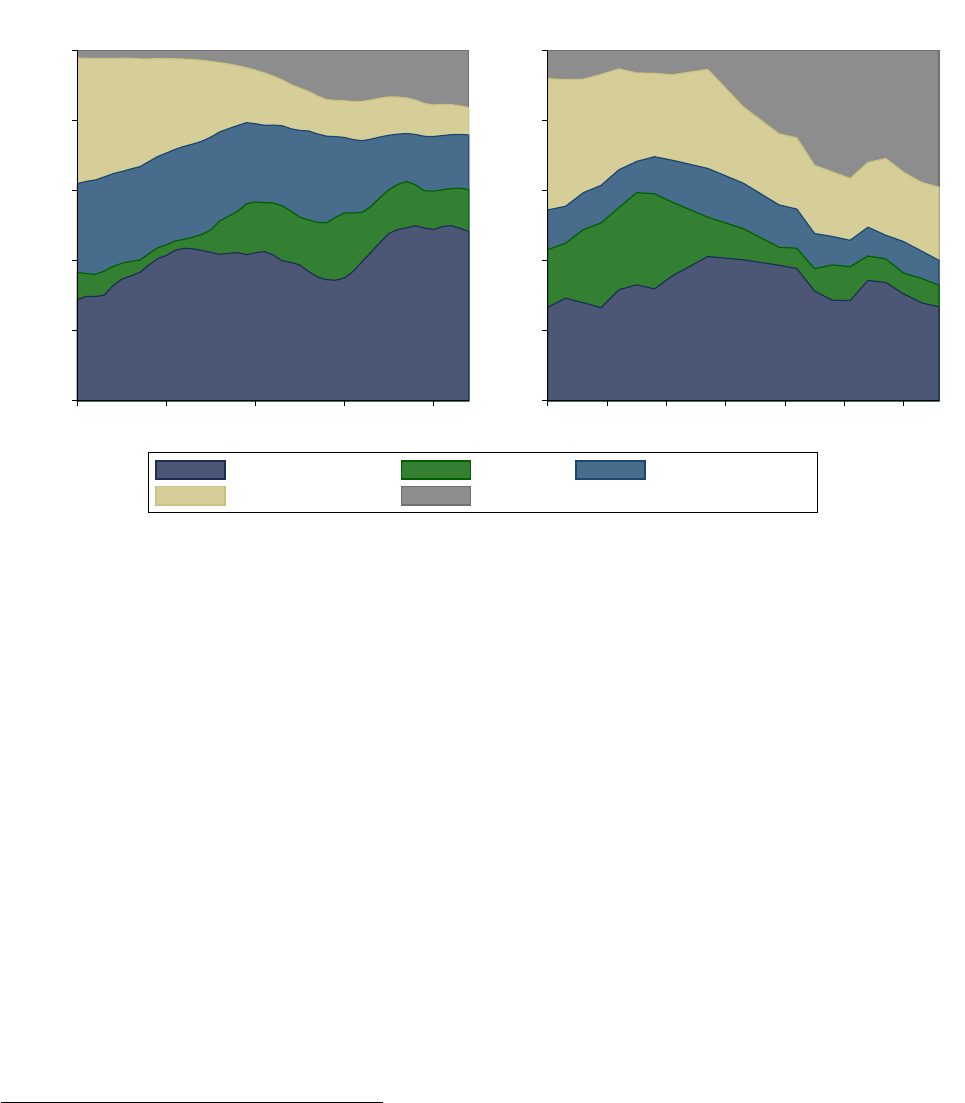
O.2 Household balance sheet composition
Figure A.5: Household balance sheet composition in the US and France
0 20 40 60 80 100
Per cent
1970 1980 1990 2000 2010
France
0 20 40 60 80 100
Per cent
1950 1960 1970 1980 1990 2000 2010
USA
Housing Equities Bonds & Deposits
Business assets Other
Note: Ratio of each asset class to total household assets, in percent. Housing assets are net of mortgage debt.
Other assets include agricultural land, pension, insurance and investment fund claims. Sources: Survey of
Consumer Finances and French Distributional National Accounts.
This paper measures returns on the major asset classes from the perspective of a representative
household. To gauge the relative importance of these assets on household balance sheets, Figure A.5
plots the historical composition of assets held by households in France and the US, from the mid
twentieth century to today. The data for France come from the Distributional National Accounts
in Garbinti, Goupille-Lebret, and Piketty (2017), and US data are from the Historical Survey of
Consumer Finances in Kuhn, Schularick, and Steins (2017). The figures present the share of each
asset class in total household assets, with housing measured net of mortgage debt. Residential
real estate (dark blue area) is by far the largest asset on household balance sheets. Taken together,
housing and equity assets account for 40–50% of total household assets in both countries.
Bonds and deposits represent between 10 and 20 percent of assets. Aside from corporate bonds,
the return on these assets is well proxied by our government bond and bill series.
52
Business assets—
the light yellow bar—account for between 10 and 30 percent of wealth, depending on the country
and time period. The equity returns in our sample can be used as a proxy for the levered return
on business assets. Other assets include agricultural land–the remaining non-financial asset—and
other financial assets, which mainly consist of pension fund and insurance claims. Returns on these
claims should, in turn, be closely related to the equity and bond series in our sample. The share
of other financial assets has been growing over the past several decades, largely reflecting the fact
52
Data on the total returns on corporate bonds are generally sparse, but the small amount of data that
we have suggest that corporate bond returns fall in-between those of government bonds and equities, and
somewhat closer to government bonds in terms of level and volatility, with a roughly 1 percentage point
spread between long-run government and corporate bond returns.
A31
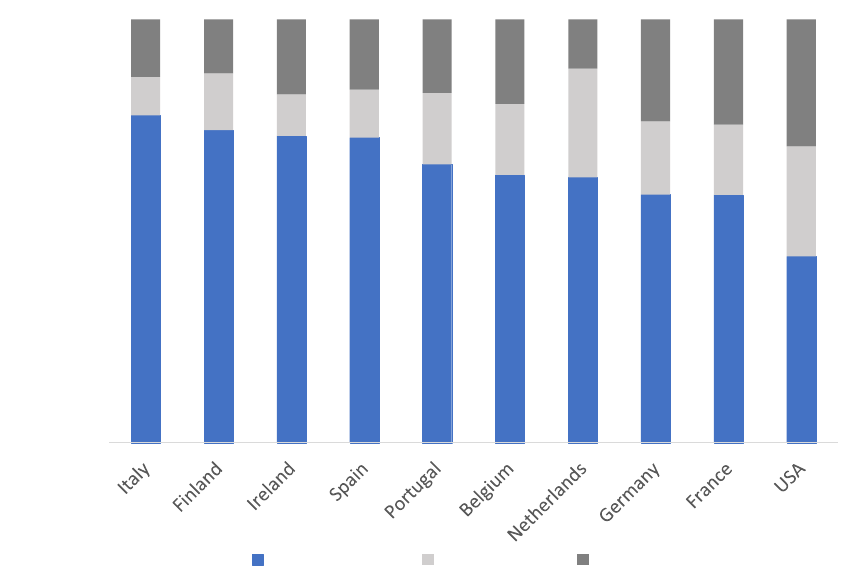
Figure A.6: Household balance sheet composition throughout advanced economies, 2013-2014
0
10
20
30
40
50
60
70
80
90
100
Housing Equity Other
Per cent
Note: Ratio of each asset class to total household assets, in percent. Housing assets are net of mortgage debt.
Other assets include business wealth, agricultural land, bonds, deposits, pension, insurance and investment
fund claims. Source: ECB Household Finance and Consumption Survey and Survey of Consumer Finances.
that, especially in the US, an increasing proportion of equities is held indirectly through financial
intermediaries.
Figure A.6 shows the balance sheet composition for a larger selection of countries in 2013-2014,
using data from the ECB Household Finance and Consumption Survey and the Survey of Consumer
Finances. In other European countries, the role of housing and equities is even more important than
in France and the US. In Italy, housing accounts for close to 80% of household wealth, and housing
and equities together for nearly 90%. These data suggest that for our cross-country sample, the
share of housing and equity assets in household balance sheets is likely to be somewhat larger than
that pictured for the US and France in Figure A.5.
O.3 The historical global asset portfolio
For the historical dataset in this paper, we measure the size of each asset class in country portfolios
in order to calculate weighted returns, such as the return on total wealth in Section II.C. Due to the
lack of consistent historical data on household balance sheets of the type shown in Figure A.6, we
focus solely on the assets in our study: equity, housing, bonds and bills. As outlined in Section II.C,
we weight the individual asset returns within each country according to the market-capitalization
shares of the respective asset types in the country’s investible wealth portfolio, to arrive at the
composite return measures. Thus, by this choice of method, significant non-market asset weights
are not included, notably non-traded equity wealth.
Figure A.7 shows the evolution of marketable wealth in advanced economies from the late 19th
A32
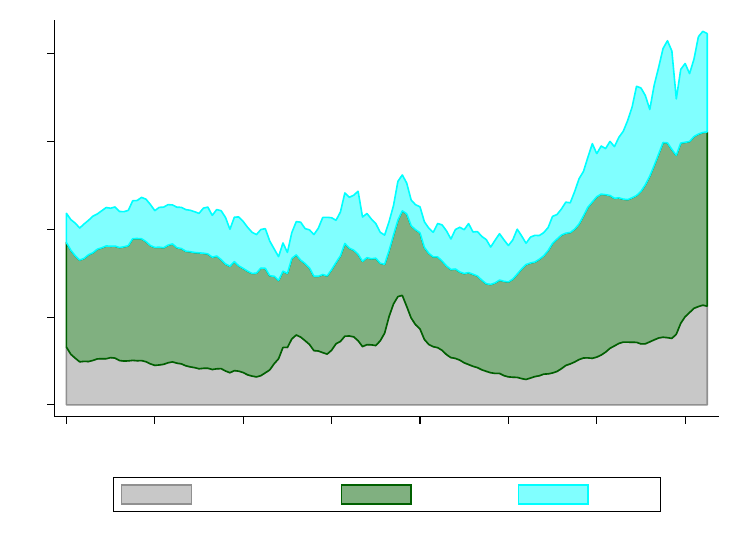
Figure A.7: Assets considered in this study as a share of GDP
0 1 2 3 4
1870 1890 1910 1930 1950 1970 1990 2010
Year
Bonds & Bills Housing Equity
Note: Average of asset-to-GDP shares in individual countries, weighted by real GDP. Equity is the total stock
market capitalization. Housing is the stock of housing wealth. Bonds and bills are the stock of public debt.
century to today. In line with the more recent data on household balance sheets (Figures A.5 and
A.6), housing has been the dominant asset in the countries’ portfolios throughout the sample. Public
debt has tended to increase in size after wars, and most recently after the Global Financial Crisis.
The stock market has tended to be small relative to housing, but has increased in size during the
last several decades. The last four decades have also seen a marked increase in the aggregate stock
of assets pictured in Figure A.7, in line with the findings of Piketty and Zucman (2014), who cover
a broader selection of assets, but have fewer countries and observations in their sample. Taken
together, the assets in our study add up to over four times the national income. For the modern
period, this constitutes around 70% of total national wealth as measured by Piketty and Zucman
(2014).
The sources for the asset portfolio data are as follows. The data on equity wealth come from
Kuvshinov and Zimmermann (2018), and measure the total stock market capitalization of the specific
country. These series cover the total size of the domestic stock market, excluding foreign-owned
companies, and aggregating across multiple stock exchanges within the country, excluding cross
listings, at each year in the historical sample. Due to data limitations we have had to rely on data for
individual markets for a number of countries and historical periods (e.g., only counting the Lisbon
listings, but not the Porto listings for Portugal), and rely on interpolation to construct some of the
early annual estimates. The stock market capitalization data are sourced from a wide variety of
publications in academic journals, historical statistical publications, and disaggregated data on stock
listings and company reports of listed firms.
To measure the value of housing wealth for each country, we went back to the historical
national wealth data to trace the value of buildings and the underlying land over the past 150 years.
We heavily relied on the national wealth estimates by Goldsmith (Garland and Goldsmith, 1959;
A33
Goldsmith, 1962, 1985) as well as the on the collection of national wealth estimates from Piketty and
Zucman (2014) for the pre-WW2 period. We also drew upon the work of economic and financial
historians, using the national wealth estimates of Stapledon (2007) for Australia, Abildgren (2016) for
Denmark, Artola Blanco, Bauluz, and Mart
´
ınez-Toledano (2017) for Spain, Waldenstr
¨
om (2017) for
Sweden, and Saez and Zucman (2016) for the US. For the postwar decades, we turned to published
and unpublished data from national statistical offices such as the U.K. Office of National Statistics
or Statistics Netherlands (1959). Particularly for the earlier periods, many of the sources provided
estimates for benchmark years rather than consistent time series of housing wealth. In these cases,
we had to use interpolation to arrive at annual estimates.
We use total public debt from the latest vintage of the long-run macrohistory database (Jord
`
a,
Schularick, and Taylor, 2017) as a proxy for the stock of bonds and bills, and divide public debt
equally between these two financial instruments.
Even though the data come from different sources than the household balance sheets in Fig-
ures A.5 and A.6, the relative shares of the three asset classes are similar to the shares of similar asset
holdings in the household portfolios. Under both definitions, residential real estate is the largest
asset in the portfolio. The share of equity in marketable wealth (Figure A.7) is somewhat larger than
in household balance sheets, but since some equity is held indirectly, and equity to some extent
proxies the levered return on business wealth, the relative weight in our data is broadly reflected of
equity returns’ contribution to the overall return on household wealth. Finally, the public debt share
is similar to bonds and deposits in French household wealth data (Figure A.5, left-hand graph), and
to bonds, deposits and part of indirectly held assets in the US balance sheets (Figure A.5, right-hand
graph).
O.4 Foreign assets
The returns in our dataset are calculated from the perspective of an investor in the domestic market,
and therefore exclude the return on foreign investments. But households also hold foreign assets,
and the return on these assets may impact the return on the overall household portfolio. Including
these assets in our portfolio could lower the return for some countries and periods, if they held large
foreign investments in foreign asset markets that were subject to subsequent disasters, such as the
investments in Russia before the 1917 revolution. On the other hand, returns for some periods and
countries may be higher if we include the profitable colonial asset holdings, or those in fast-growing
emerging markets.
Long run data on returns on foreign assets are generally sparse. To an extent, the returns from a
global investor perspective in Table A.14 try to abstract from the national dimension and get around
the issue of foreign holdings. Still, these returns only cover the countries in our dataset, and do not
inform us about country-specific portfolios of foreign investments.
To further analyze the potential impact of foreign asset holdings on our findings, Figure A.8 plots
the size of foreign assets and a rough proxy of the asset return, using data for four countries—France,
Germany, UK, and US—collected by Piketty and Zucman (2014). The top-left panel of Figure A.8
shows the share of net foreign assets in national wealth. This has generally been small, with a
high of around 10% at the turn of the 20th century (equivalent to 60–80% of national income), and
near-zero net positions since the end of WW2. These zero net positions, however, mark a sharp
increase in gross foreign assets and liabilities (Figure A.8, right-hand panel), which have been edging
towards 80% of national wealth in late 2000s. Despite these large gross positions, the net income on
foreign assets and liabilities remains small, and therefore unlikely to materially affect returns on
household wealth.
We can use the asset income reported in national accounts to obtain a proxy of the yield on
A34
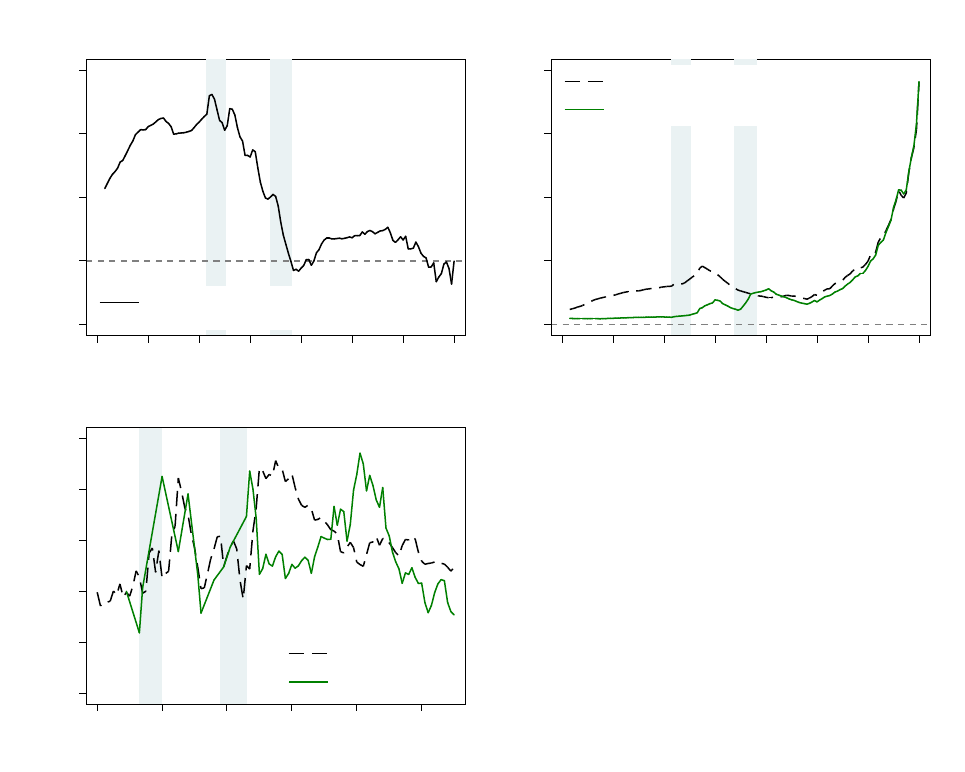
Figure A.8: Size and yield on foreign assets
-.05 0 .05 .1 .15
share of wealth
1870 1890 1910 1930 1950 1970 1990 2010
NFA relative to national wealth
Net Foreign Assets
0 .2 .4 .6 .8
share of wealth
1870 1890 1910 1930 1950 1970 1990 2010
Foreign assets relative to national wealth
Foreign liabilities relative to national wealth
Gross Foreign Assets and Liabilities
0 2 4 6 8 10
Per cent
1900 1920 1940 1960 1980 2000
Domestic assets
Foreign assets
Yield on Assets
Note: Unweighted average of four countries: France, Germany, UK and US. Data from Piketty and Zucman
(2014). Shaded areas indicate world wars. Yield on wealth calculated as domestic or foreign capital income
received in proportion to (domestic or foreign) wealth.
foreign assets and compare it to that on domestic assets, with the two depicted in the bottom
panel of Figure A.8. The balance sheet yield on foreign assets, calculated as foreign capital income
relative to foreign assets (Figure A.8, bottom panel, solid line) is similar to that on domestic assets
(Figure A.8, bottom panel, dashed line), both in terms of size and time trend. These yield measures
exclude capital gains, and are likely to understate negative returns due to foreign asset market
disasters. Recent research by Meyer, Reinhart, and Trebesch (2015), however, shows that the average
return on risky foreign assets, even during asset market disasters, is surprisingly high. Meyer et al.
(2015) find that the total return on defaulted foreign government bonds is generally positive and
higher than inflation, using historical data that covers all foreign bonds listed on major exchanges
back to the early 1800s—largely due to high pre-default interest payments, and low haircuts in the
event of default.
A35

P. Equally-weighted portfolio returns
Table A.25: Equally-weighted portfolio returns
Country Portfolio weights Equal weights
Risky return Return on
wealth
Risky return Return on
wealth
Australia 6.96 5.91 7.13 5.51
Belgium 8.31 6.38 7.71 6.10
Denmark 8.02 7.37 7.74 6.27
Finland 10.87 9.76 9.81 7.95
France 6.54 4.92 5.56 4.22
Germany 7.90 7.07 7.47 6.32
Italy 5.32 5.08 6.01 5.07
Japan 6.79 5.59 6.27 4.91
Netherlands 7.30 5.33 7.12 5.36
Norway 7.96 6.86 6.85 5.33
Portugal 6.46 5.87 5.41 4.06
Spain 5.39 4.58 5.70 4.27
Sweden 8.52 7.41 8.16 6.49
Switzerland 6.51 5.63 6.23 4.93
UK 6.35 4.75 6.13 4.72
USA 7.12 6.03 7.28 5.63
Average, unweighted 7.44 6.30 7.01 5.54
Average, weighted 7.22 5.98 6.98 5.49
Note: Average annual real returns for the full sample. The portfolio-weighted averages use country-specific
stocks of housing, equity, bonds and bills as weights for the individual asset returns. Portfolio-weighted risky
return is a weighted average of housing and equity, using stock market capitalization and hosuing wealth as
weights. Portfolio-weighted real return on wealth is a weighted average of equity, housing, bonds and bills,
using stock market capitalization, housing wealth and public debt stock as weights. Equally-weighted risky
return is an unweighted average of housing an equity. Equally-weighted return on wealth is an unweighted
average of housing, equity and bonds. Period coverage differs across countries. Consistent coverage within
countries: each country-year observation used to compute the statistics in this table has data for both the real
risky return, and the return on overall wealth. The average, unweighted and average, weighted figures are
respectively the unweighted and real-GDP-weighted arithmetic averages of individual country returns.
Table A.25 assesses the impact of portfolio weighting on our return estimates. The weighting has
a relatively small impact on the risky rates, because returns on housing and equity are generally
similar. It raises the return on capital by around one percentage point, because the outstanding stock
of public debt is substantially smaller than that of risky assets. The basic stylized facts of
r g
,
and high long-run risky returns continue to hold regardless of the weighting, both on average and
across the individual countries in our sample.
A36

Q. Correlations between r and g
Table A.26: Correlations between return on wealth and real GDP growth across different time horizons
1-year 5-year 10-year 20-year
Full sample:
r-g, g -0.35 -0.34 -0.23 -0.40
r, g 0.14 0.16 0.17 -0.02
r-g, r 0.88 0.87 0.92 0.93
Observations 1763 336 152 58
Post-1950:
r-g, g -0.08 -0.06 -0.31 -0.59
r, g 0.26 0.35 0.19 -0.21
r-g, r 0.94 0.91 0.88 0.91
Observations 1008 200 91 30
Note: Pairwise correlations of data averaged over 1-year, 5-year, 10-year and 20-year non-overlapping moving
windows. 16 countries, equally weighted.
r
is the real return on capital,
g
is real GDP growth, and
r − g
is
the gap between the two.
Table A.26 presents the pairwise correlations between the real GDP growth,
g
, and the
r − g
gap,
as well as between the gap and
r
, and also between
r
and
g
. The
r − g
gap and
g
show a negative
correlation, although the size of the correlation coefficient is not overly large. The correlation
generally becomes stronger and more robust at longer time horizons, in particular when looking
at 20-year periods. Even though the correlation between
r
and
g
has become close to zero at short
horizons after 1950, the longer-run correlation has remained negative. The negative correlation
between the
r − g
gap and
g
is explained by the fact that the rate of return
r
is relatively uncorrelated
with the GDP growth rate
g
, or at least shows no robustly negative correlation. The
r − g
gap is
mainly driven by changes in the rate of return
r
, as the two show strongly positive comovement at
short and long horizons, before and after 1950.
A37
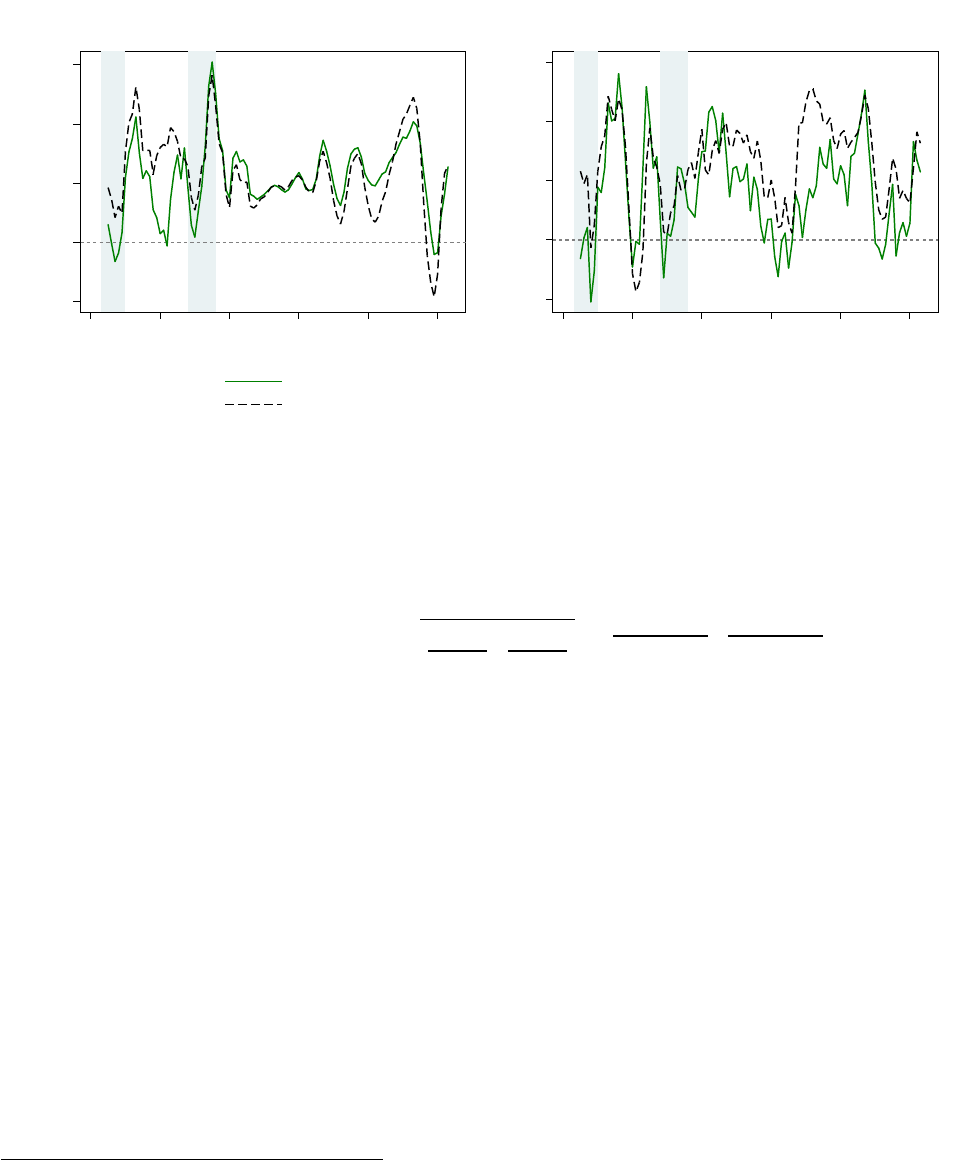
R. Comparison to balance sheet returns on housing and equity wealth
Figure A.9: Our return estimates compared to Distributional National Accounts
-5 0 5 10 15
Per cent
1910 1930 1950 1970 1990 2010
Housing
-10 0 10 20 30
Per cent
1910 1930 1950 1970 1990 2010
Equity
Baseline, five-year moving average
Distributional National Accounts, five-year moving average
Note: Five-year moving average returns for the US. Baseline refers to estimates in this paper. Distributional
National Accounts returns are from Piketty, Saez, and Zucman (2018).
The return on an asset from a national accounts perspective, or the “balance sheet approach” to
returns, r
BS
t
is calculated as follows:
Balance sheet return: r
BS
t
=
Capital Income
t
Wealth
t
| {z }
Yield
+ ∆Wealth
t
− Investment
t
| {z }
Capital Gain
(13)
Similarly to the market return in equation
(1)
, the balance sheet return can be divided into the
yield—or capital income relative to the stock of wealth—and capital gain, which is the residual
accumulated wealth, net of investment. These returns can be computed for aggregate wealth and
national income, and for individual asset classes. The balance sheet returns on housing should be
comparable to market returns, whereas corporate wealth returns should be somewhat higher than
market data because they are computed gross of corporate taxes.
Figure A.9 compares the five-year moving average of the housing and equity returns in this
paper (solid line) to those computed using the balance sheet approach for the US in Piketty, Saez,
and Zucman (2018) (dashed line; further: PSZ). In terms of equation
(13)
, the yield on housing
is net rental income, and the yield on equities is total profits, gross of corporate taxes and net of
depreciation. PSZ primarily rely on the Shiller (2000) index, rather than investment and wealth data,
to estimate the capital gains on housing. Our housing returns are very similar to PSZ, both in level
and trend (Figure A.9, left-hand side). The slight differences in the 1930s and 1990s arise because
of differences between the Shiller (2000) house price index used by PSZ and the housing index in
Knoll et al. (2017) used in this paper.
53
Equity returns follow a similar trend, but the level of balance sheet return is higher than the
market return in our data. Part of the difference is due to the fact that balance sheet returns are gross
53
For further details on the differences in house price indices of Knoll et al. (2017) and Shiller (2000), see
Appendix M.
A38
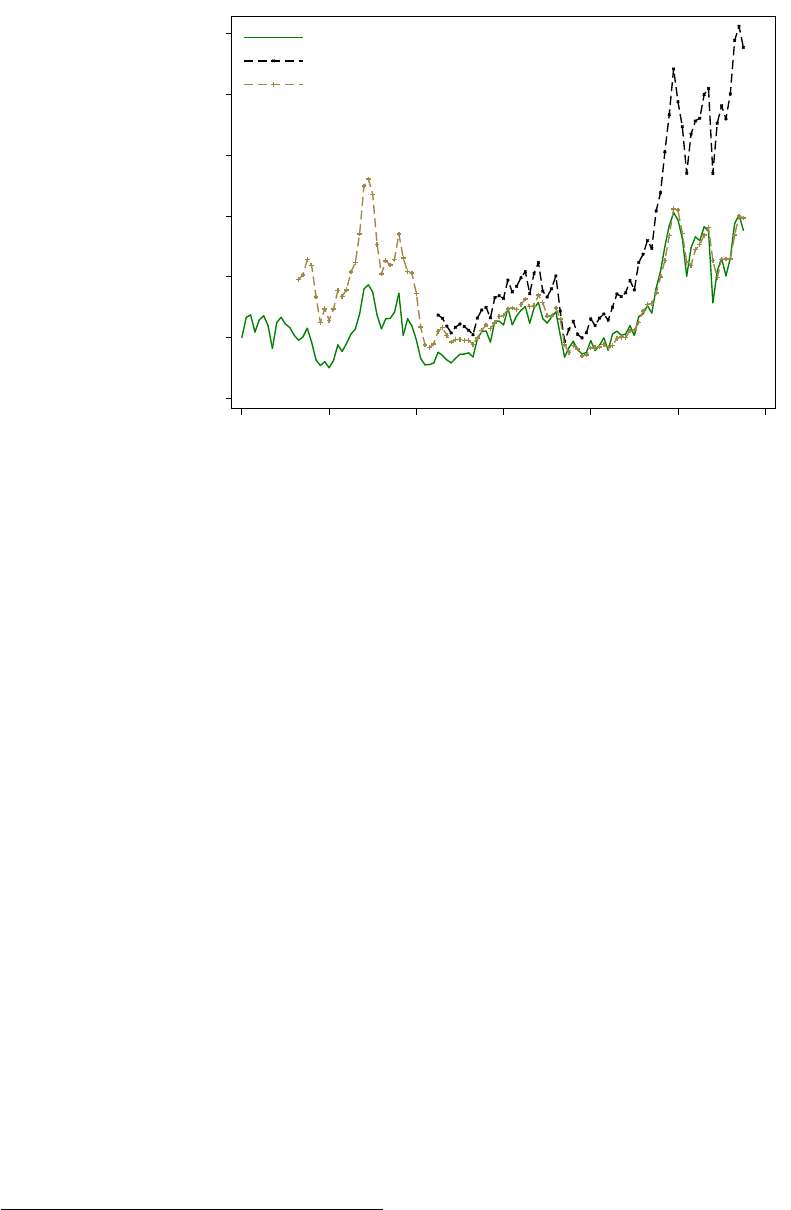
Figure A.10: US corporate equity assets and liabilities compared to capitalization of listed US firms
0 .5 1 1.5 2 2.5 3
Ratio to GDP
1900 1920 1940 1960 1980 2000 2020
Stock market cap
Equity liabilities
Equity assets
Note: Equity wealth and equity liabilities include both listed and unlisted firms (data from Piketty, Saez, and
Zucman, 2018). Stock market capitalization includes listed US firms on all US stock exchanges (data from
Kuvshinov and Zimmermann, 2018).
of corporate taxes (see Section S and Table A.27). Adding back corporate taxes, however, still leaves
our equity returns somewhat below those in Piketty et al. (2018). The remaining difference could
either be explained by higher returns of unlisted relative to listed equities, or measurement error
in one of the series. Even though it is difficult to precisely attribute the remaining difference, it is
unlikely that the higher returns on unlisted equities play an important role: Moskowitz and Vissing-
Jørgensen (2002) find that unlisted equities face a similar or worse risk-return tradeoff relative
to listed equity, and the national accounts estimates of return on unlisted equity are themselves
derived from listed equity data. It is also unlikely that there is much measurement error in the listed
equity return data for the US, since these returns are directly observable, recorded in historical stock
listings, and have been widely studied. It is somewhat more likely that there is some measurement
error in the national accounts data—i.e., the figures either overstate the profits of corporations,
understate equity wealth, or overstate the capital gains (i.e., overstate the growth in equity wealth or
understate investment).
There is some tentative evidence that equity wealth in the US National Accounts may be
somewhat underestimated during the mid-20th century. Figure A.10 shows that during the mid
20th century, US equity wealth was similar to the market capitalization of listed US firms, and
equity liabilities were only slightly above the listed stock market cap. In principle, equity liabilities
and assets should include the equity of unlisted as well as listed firms, and should be substantially
higher than the market capitalization.
54
The closeness of the three series during the mid 20th century
therefore suggests that the size of the US equity wealth in national accounts may be somewhat
understated, which could account for some of the remaining return differential between our data
and balance sheet approach estimates in Piketty et al. (2018). Alternatively, if we take the estimates
in Figure A.10 at face value, they suggest that the share of unlisted firm equity wealth is small
54
Equity liabilities are more comparable to stock market capitalization, since much of the US equity
liabilities are held by foreigners and do not appear on the asset side of the (consolidated) household balance
sheet.
A39
relative to listed wealth, meaning that return differentials between listed and unlisted companies,
even if large, cannot explain the remaining return differential.
A40

S. Adjusting for corporate taxes and leverage
Throughout this paper, we calculate the return on equity from a household perspective, as the
pre-tax cashflows and capital gains received by the equity holder, consistent with the literature
on stock market returns (see, for example Shiller, 1981). The market return, however, differs from
the return on the underlying asset—i.e., business wealth—in two ways. First, it is net of corporate
profit taxes, which are paid out before distribution. Second, it is a levered return, in the sense that
corporate equity is a levered claim on business wealth. Adjusting for corporate taxes and leverage
would allow us to proxy the return on business wealth. Our housing returns already provide a
proxy for the return on housing wealth (see also Section R.
We gross up the equity returns as follows. First, from Section II.C note that the real equity return
r
eq,t
is the nominal capital gain CG
t
plus dividend income Y
t
, deflated by the inflation rate π
t
:
r
eq,t
= (CG
t
+ Y
t
) /(1 + π
t
) (14)
To gross up for corporate taxes, we scale up
Y
t
to add back all profit taxes (both distributed dividends
and retained earnings) attributable to equity wealth:
Y
gross
t
= Y
t
+ Y
t
∗
Profit
t
Dividends
t
∗
τ
1 − τ
t
∗
Equity Wealth
t
Total non-housing wealth
t
, (15)
where
τ
t
is the effective corporate tax rate. The second term on the right hand side is our proxy for
the corporate tax payments of listed firms. We start with the dividends paid by listed firms
Y
t
, and
scale them up to estimate the total post-corporate-tax profits of listed firms,
Y
t
∗
Profit
t
Dividends
t
.
55
We
then scale the post-tax profits up by
1/(1 − τ
t
)
to proxy the pre-tax profits. The difference between
pre- and post- tax profit—i.e., the corporate tax—is then
Y
t
∗
Profit
t
Dividends
t
∗
τ
1 − τ
t
.
56
In principle,
corporate tax falls on both corporate equity and business wealth. We follow Piketty, Saez, and
Zucman (2018) and assume that the share of corporate taxes attributable to equities is equal to the
ratio of equity wealth to total non-housing wealth.
57
The real total return gross of corporate tax is
then computed as follows:
r
gross
eq,t
= (CG
t
+ Y
gross
t
) /(1 + π
t
) (16)
Finally, we also calculate the delevered pre-tax return on business wealth r
delev,gross
eq,t
as:
r
delev,gross
eq,t
= ([CG
t
+ Y
gross
t
] ∗ (1 − α
t
) + α
t
∗ r
debt,t
) /(1 + π
t
), (17)
where α
t
is corporate leverage, and r
debt,t
is the interest paid on corporate debt liabilities.
As an example, assume that in a given year the total return on equity is 10%, of which 5%
are capital gains and 5% are dividends, and inflation is 3%, so the real return is 7%. Assume the
corporate tax rate is 25%, half the profits are paid out as dividends, and the ratio of equities to total
non-housing wealth is 1/3. The pre-tax nominal yield
Y
gross
t
is then
5% + 5% ∗ 2 ∗ 0.33 ∗ 0.33 = 6.1%
,
55
This assumes that the payout ratios for listed firms are similar to those of unlisted firms.
56
The corporate tax paid is pre-tax profits
Y
t
∗
Profit
t
Dividends
t
∗
1
1 − τ
t
less net profits
Y
t
∗
Profit
t
Dividends
t
, equals
Y
t
∗
Profit
t
Dividends
t
∗
τ
1 − τ
t
.
57
This ratio of around one-third is consistent, or slightly above the estimates in Graham et al. (2015), that is
computed from firm balance sheet data.
A41
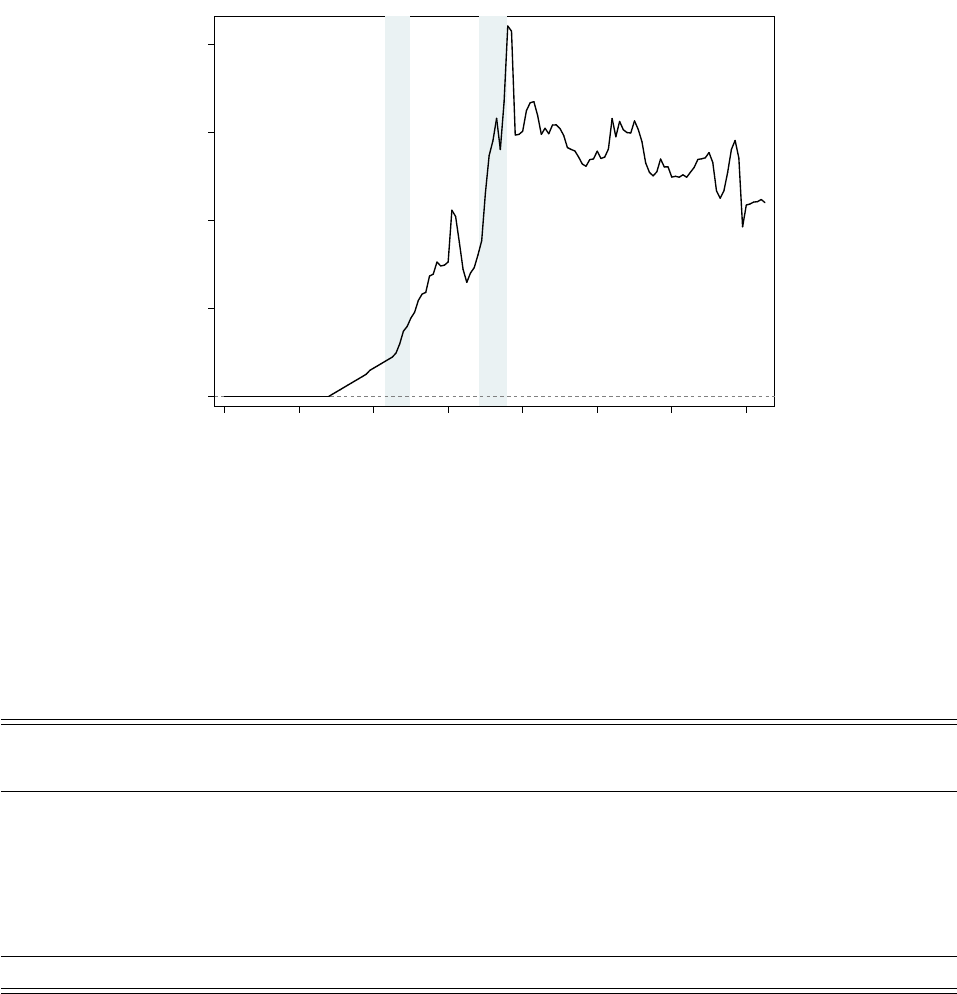
Figure A.11: Effective corporate tax rate, average of 5 countries
0 10 20 30 40
1870 1890 1910 1930 1950 1970 1990 2010
Note: Average effective tax rate in Australia, France, Germany, Japan and US, equally weighted. Japanese tax
rate interpolated between 1900 and 1930. Effective tax rate is total taxes paid / net corporate profits. Where
effective data are not available, we extrapolate the series using statutory (top marginal) tax rates.
Table A.27: Adjusting equity returns for corporate taxes and corporate leverage
Country Baseline Gross of corporate tax Gross of corporate tax,
delevered
Australia 8.39 9.41 8.07
France 3.21 3.69 3.00
Germany 8.83 9.02 7.77
Japan 9.49 12.18 10.12
United States 8.40 10.20 8.74
Average 7.52 8.66 7.35
Note: Annual total real equity returns. Baseline returns are the raw data in this paper. Gross of corporate tax
returns add back the share of corporate profit taxes attributable to business equity. Gross of corporate tax,
delevered adds back corporate taxes and delevers the pre-tax equity return. Coverage differs across countries.
Consistent coverage within countries. Average is the unweighted mean of all observations for which we have
tax data, and is thus not exactly equal the average of the country-specific means.
A42
and the pre-tax real total return
r
gross
eq,t
is 8.1%. Now further assume that corporate leverage is
1/3, and the corporate financing rate is 5%. The delevered real pre-tax return is then roughly
11.1 ∗ 0.67 + 5 ∗ 0.33 − 3, or 6.7%.
We use the following data to calculate the pre-tax and delevered return proxies. For
τ
t
, we use
the effective corporate tax rate, or corporate taxes paid in proportion to gross (post-depreciation)
corporate profits. We have collected annual corporate tax data for a subsample of five countries, four
from 1870 (Australia, France, Germany, and US), and one from 1930 (Japan). For countries and years
where effective tax data were not available, we have approximated the effective rate using changes
in statutory rates. Figure A.11 shows the evolution of the effective corporate tax rate from 1870 to
today. Taxes were near zero before the 1920s, before increasing and peaking at around 40% of profits
after WW2, and declining slightly thereafter. The ratio of profits to dividends largely comes from
national accounts and various historical statistics, and covers a slightly smaller sample of countries
and years, with gaps filled using sample averages. The share of equity wealth to total non-financial
assets, and corporate leverage data are only available for the US, from Piketty et al. (2018) and
Graham, Leary, and Roberts (2015) respectively. US corporate leverage is measured as total debt
relative to capital. We assume that the equity share in total wealth, and corporate leverage in other
countries follow the US trend. We are grateful to Mark Leary for sharing the corporate leverage
data with us. For the interest rate on corporate debt, we use the government bond yield plus a 1
percentage point spread (broadly indicative of corporate bond and business lending spreads).
Table A.27 shows the effect of adjusting equity returns for corporate taxes and leverage. Column
1 is the baseline average real total equity return equivalent to Table II, shown for the corporate tax
data sample, separately for each country and in aggregate. Column 2 adds back corporate taxes
using equations
(15)
and
(16)
. Column 3 delevers the returns using equation
(17)
. Adding back
corporate taxes increases the average real equity return by +1.1 pps per year, with the country-
specific impact ranging from +0.5 pps in France to +2.7 pps in Japan. Delevering reduces this pre-tax
return by 1.3 pps per year, with the delevered pre-tax business equity return (Table A.27 column 3)
close to our baseline average.
A43

Data appendix
T. Data overview
Table A.28: Overview of bill and bond data
Country Bills Bonds
Period Type of rate Period Type of bond
Australia 1870–1928 Deposit rate 1900–1968 Long maturity, central gov’t
1929–1944 Money market rate 1969–2015 Approx. 10y, central gov’t
1948–2015 Government bill rate
Belgium 1870–1899 Central bank discount rate 1870–1913 Perpetual
1900–1964 Deposit rate 1914–1940 Long maturity, central gov’t
1965–2015 Government bill rate 1941–1953 Perpetual
1954–2015 Approx. 10y, central gov’t
Denmark 1875–2015 Money market rate 1870–1923 Perpetual
1924–1979 Long maturity, central gov’t
1980–2015 Approx. 10y, central gov’t
Finland 1870–1977 Money market rate 1870–1925 Long maturity, central gov’t
1978–2015 Interbank rate 1926–1991 Approx. 5y, central gov’t
1992–2015 Approx. 10y, central gov’t
France 1870–1998 Money market rate 1870–1969 Perpetual
1999–2015 Government bill rate 1970–2015 Long maturity, central gov’t
Germany 1870–1922 Money market rate 1870–1878 Long maturity, local gov’t
1924–1944 Interbank rate 1879–1943 Long maturity, central gov’t
1950–2015 Money market rate 1948–1955 Mortgage bond
1956–2015 Long maturity, central gov’t
Italy 1870–1977 Money market rate 1870–1913 Perpetual
1978–2015 Government bill rate 1914–1954 Long maturity, central gov’t
1955–2015 Approx. 10y, central gov’t
Japan 1876–1956 Deposit rate 1881–1970 Long maturity, central gov’t
1957–2015 Money market rate 1971–2015
Approx. 10y, central government
Netherlands 1870–1957 Money market rate 1870–1899 Perpetual
1958–1964 Central bank discount rate 1900–1987 Long maturity, central gov’t
1965–2015 Money market rate 1988–2003 ≥ 8y, central government
2004–2015
Approx. 10y, central government
Norway 1870–2015 Deposit rate 1870–1919 Long maturity, central gov’t
1920–2015 Approx. 10y, central gov’t
Portugal 1880–1914 Money market rate 1870–1974 Long maturity, central gov’t
1915–1946 Central bank discount rate 1975–2015 Approx. 10y, central gov’t
1947–1977 Deposit rate
1978–2015 Money market rate
Spain 1870–1921 Money market rate 1900–1994 Long maturity, central gov’t
1922–1974 Deposit rate 1995–2015 7–8y, central government
1975–2015 Money market rate
Sweden 1870–1998 Deposit rate 1874–1918 Long maturity, central gov’t
1999–2015 Government bill rate 1919–1949 Perpetual
1950–2015 Approx. 10y, central gov’t
Switzerland 1870–1968 Deposit rate 1900–2006 Long maturity, central gov’t
1969–2015 Money market rate 2007–2015 Approx. 10y, central gov’t
United Kingdom 1870–2015 Money market rate 1870–1901 Perpetual
1902–1989 Approx. 20y, central gov’t
1990–2015 Approx. 15y, central gov’t
United States 1870–2013 Deposit rate 1870–1926 Approx. 10y, central gov’t
2014–2015 Money market rate 1927–2015 Long maturity, central gov’t
A44

Table A.29: Overview of equity and housing data
Country Equity Housing
Period Coverage Weighting Period Coverage
Australia 1870–1881 Listed abroad Market cap 1901–2015 Urban
1882–2015 Broad Market cap
Belgium 1870–2015 All share Market cap 1890–1950 Urban
1951–1961 Mixed
1977–2015 Nationwide
Denmark 1873–1899 All share Market cap 1876–1964 Mixed
1900–1999 Broad Market cap 1965–2015 Nationwide
2000–2001 Blue chip Market cap
2002–2015 All share Market cap
Finland 1896–1911 Broad Book cap 1920–1964 Urban
1912–1969 All share Market cap 1965–1969 Mixed
1970–1990 Broad Market cap 1970–2015 Nationwide
1991–2015 All share Market cap
France 1870–2015 Blue chip Market cap 1871–1935 Urban
1936–1948 Mixed
1949–2015 Nationwide
Germany 1870–1889 Blue chip Market cap 1871–1912 Mixed
1890–1913 All share Market cap 1913–1938 Urban
1914–1959 Blue chip Market cap 1939–1947 Mixed
1960–2015 Broad Market cap 1948–1970 Nationwide
1971–2015 Mixed
Italy 1870–1887
Selected stocks
Book cap 1928–1998 Urban
1888–2015 Broad Market cap 1999–2015 Mixed
Japan 1882–1975 Broad Transaction volume 1931–1946 Urban
1976–2015 All share Mix of equal and market cap 1947–2015 Mixed
Netherlands 1900–2003 Broad Mostly market cap 1871–1969 Mixed
2004–2015 All share Market cap 1970–2015 Nationwide
Norway 1881–1920 All share Market cap 1871–2015 Urban
1921–1955 All share Mix of equal and book cap
1956–2000 All share
Mix of book cap and com-
pany turnover
2001–2015
Most traded
shares
Market cap
Portugal 1871–2015 All share Market cap 1948–2015 Mixed
Spain 1900–2015 All share Market cap 1901–1957 Mixed
1958–2015 Nationwide
Sweden 1871–2001 Broad Market cap 1883-1959 Urban
2002–2015 All share Market cap 1960–2015 Mixed
Switzerland 1900–1925 All share Market cap 1902–1930 Urban
1926–1959 Broad Equally weighted 1931–1940 Mixed
1960–2015 Broad Market cap 1941–2015 Nationwide
United Kingdom 1870–1928 All share Market cap 1895–1899 Urban
1929–1963 Blue chip Market cap 1900–1913 Mixed
1964–2015 All share Market cap 1914–1929 Urban
1930–1946 Mixed
1947–2015 Nationwide
United States 1872–2015 Broad Market cap 1891–1952 Urban
1953–2015 Mixed
A45
U. Housing returns
The total return on housing is a combination of the capital gain and rental income. The capital gain
series are computed from the house price data in Knoll, Schularick, and Steger (2017). The rental
indices are drawn from the unpublished PhD thesis of Knoll (2017), which also extended the dataset
in Knoll et al. (2017) to cover three additional countries (Italy, Portugal and Spain). The sources for
these new series are reproduced in Appendix W. This section starts by describing the construction
of the rental yield series. Appendix V then describes the general methodology for constructing the
rental indices, and Appendix W details the sources of the rent data.
As described in Section II.C, the baseline housing return series is constructed using the rent-price
approach. To do this, we take a benchmark net rent-price ratio—adjusted down for maintenance and
other costs—in the year 2012, 2013 or 2014, and extrapolate it back using growth in the house price
and rent indices. We further check the rent-price approach estimates against various alternative
historical benchmarks. These include the balance sheet approach constructed from National
Accounts data (see Section III.C for more detail on this method), and independent estimates from
books, journal articles and historical newspapers.
If the rent-price approach estimate differs substantially from those in the alternative sources, we
adjust it so that the estimates are in line with each other. We do not adjust the series when these
differences are small, or we have good reasons to doubt the quality of the alternative estimates.
When we do adjust, we either benchmark our series to historical net rent-price ratios from alternative
sources, or adjust the growth in the rental index by a multiplicative factor, such that the different
estimates of historical rent-price ratios are broadly in line with each other.
In each of the Appendix Figures A.12 to A.27, the series that we use in the paper are the
“Rent-price ratio, final series” estimates denoted as green circles. These incorporate any adjustments
made to bring the data into line with historical sources. Alongside these, we also present the
raw unadjusted rent-price approach series—orange circles—and the alternative historical estimates
themselves. We also show alternative benchmark estimates for the present day to help assess the
reliability of our baseline IPD rent-price ratio. These are generally sourced from data on rental
expenditure and property values on
Numbeo.com
, for one- and three-bedroom apartments i). within
city-centres and ii). in the rest of the country, and are adjusted down by us to proxy the impact
of running costs and depreciation. For cases where data on running costs and depreciation were
not available, we estimate these to be about one-third of gross rent, in line with the recent and
historical experience in most countries (see Figure III). For Australia and US, we additionally
make use of benchmark rent-price ratio estimates based on detailed transaction-level data. In two
countries—Australia and Belgium—we judge one of these alternative modern-day benchmarks to be
more reliable than the IPD ratio, and use it to construct our final baseline net rent-price ratio series.
A46
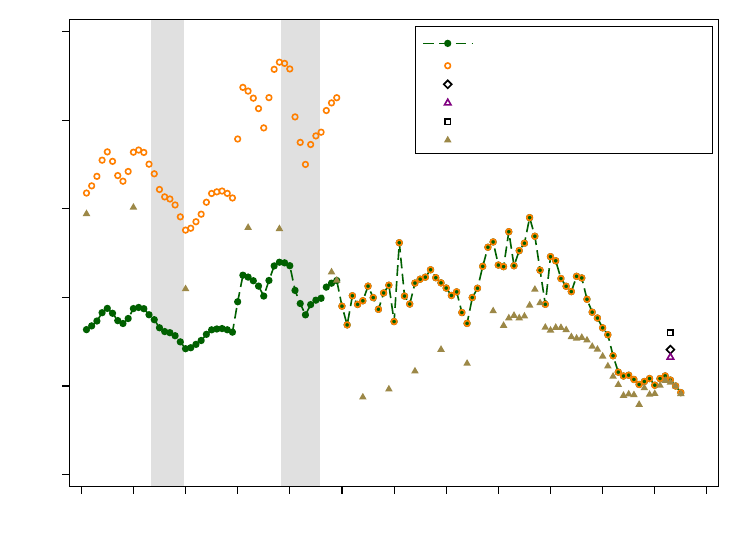
Australia
Figure A.12: Australia: plausibility of rent-price ratio
0 .02 .04 .06 .08 .1
Rent-price ratio
1900 1910 1920 1930 1940 1950 1960 1970 1980 1990 2000 2010 2020
Rent-price ratio, final series
Unadjusted estimates, rent-price approach
Numbeo (city centers)
Numbeo (rest of the country)
IPD
Balance sheet approach
For 2014, Fox and Tulip (2014) report a gross rental yield of 4.2 per cent, running costs excluding
taxes and utilities of 1.1 per cent, and depreciation rate of 1.1 per cent, using data covering almost
all properties advertized for rent in major Australian cities. This gives us a benchmark net rent-price
ratio of 0.02. Applying the rent-price approach to this benchmark gives us the unadjusted long-run
net rent-price ratio series depicted as orange circles in in Figure A.12. We make one adjustment
to these series to correct for possible mismeasurement of rental growth when lifting the wartime
price controls in 1949/50 (see below for details). This gives us the adjusted final rent-price ratio
series—the green-circled line in Figure A.12—used in this paper.
We obtain several scattered independent estimates of rent-price ratios in Australia. First, the
IPD database (MSCI, 2016) reports a net rent-price ratio of 0.032 for the Australian residential real
estate in 2013 (black square in Figure A.12). Balance sheet approach estimates (brown triangles) are
obtained using a variety of sources. OECD (2016b), Stapledon (2007), Australian Bureau of Statistics
(2014) and Butlin (1985) provide estimates of gross rental expenditure and various maintenance
and running costs, as well as depreciation, for present-day and historical periods. As with the
benchmark yield calculation, we subtract all non-tax and non-utilities related running costs, plus
depreciation, to calculate total net rental expenditure. We then combine it with the housing wealth
data from Stapledon (2007) and Piketty and Zucman (2014) to calculate the net rental yield.
The historical balance-sheet approach estimates are broadly in line with the unadjusted rent-price
approach series (orange circles) over recent decades, but below it for the earlier years. Note that the
long-run rent-price ratio shows a structural break in 1949/1950 stemming from a surge in house
prices after the lifting of wartime price controls in 1949 (price controls for houses and land were
introduced in 1942). While the abandonment of price controls undoubtedly had an effect on house
prices, it is unclear whether it also resulted in a single sudden shift in the relationship between
A47
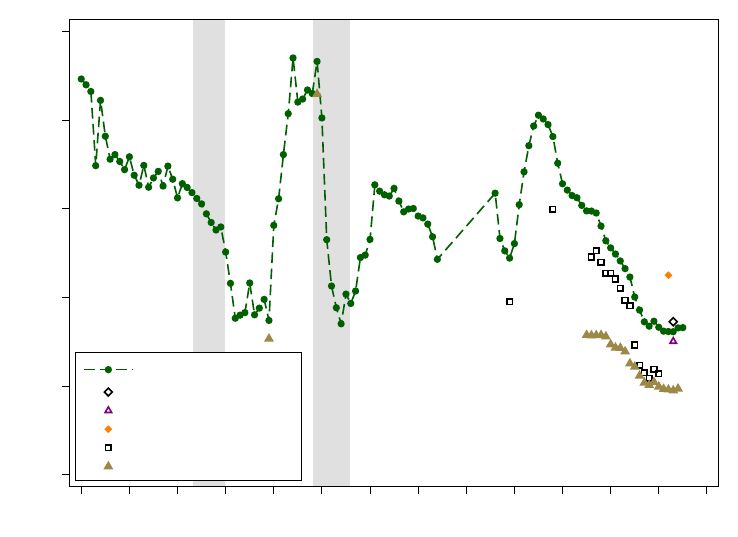
house prices and rents. To guard against measurement uncertainty, we benchmark our historical
rent-price ratio to the balance sheet approach estimate in 1949. Figure A.12 shows that the adjusted
long-run rent price ratio—the green circle line—generally concords with the balance-sheet approach
estimates, being on average slightly lower during 1900–1940, and higher during 1950–1980.
Finally, modern-day gross rental yield estimates are available from
Numbeo.com
for one- and
three-bedroom apartments i). within city-centres and ii). in the rest of the country. We adjust these
down using the cost estimates from Fox and Tulip (2014) to obtain a proxy of net yield. The resulting
estimates fall in-between those of the MSCI (2016), and the other approaches.
Belgium
Figure A.13: Belgium: plausibility of rent-price ratio
0 .02 .04 .06 .08 .1
Rent-price ratio
1890 1900 1910 1920 1930 1940 1950 1960 1970 1980 1990 2000 2010 2020
Rent-price ratio, final series
Numbeo (city centers)
Numbeo (rest of the country)
IPD
HBO and Statbel
Balance sheet approach
We construct the benchmark rent-price ratio using the rental yield data from
Numbeo.com
, taking
the average of in- and out-of-city-centre apartments, and adjusting down one-third to account
for running costs and depreciation. This gives us a benchmark net rent-price ratio of 0.033 for
2012. Applying the rent-price approach gives us the long-run net rent-price ratio series depicted
as green circles in Figure A.13, which are the estimates used in this paper. Please note that the
benchmark rent-price ratio from the IPD (MSCI, 2016)—0.045 for 2012—is substantially higher than
the alternative approaches, which is why we rely on estimates from Numbeo.com instead.
We construct four independent estimates of rent-price ratios. First, for 1978–2010, Statistics
Belgium publish estimates of average rental expenditure and house prices (Statistics Belgium,
2013b, 2015). Assuming around one-third of gross rent is spent on maintenance, running costs and
depreciation, this gives us a series of net rent-price ratios, depicted as square dots in Figure A.13.
The resulting series are consistent with both the level and the time trend in our baseline series
constructed using the rent-price approach.
A48
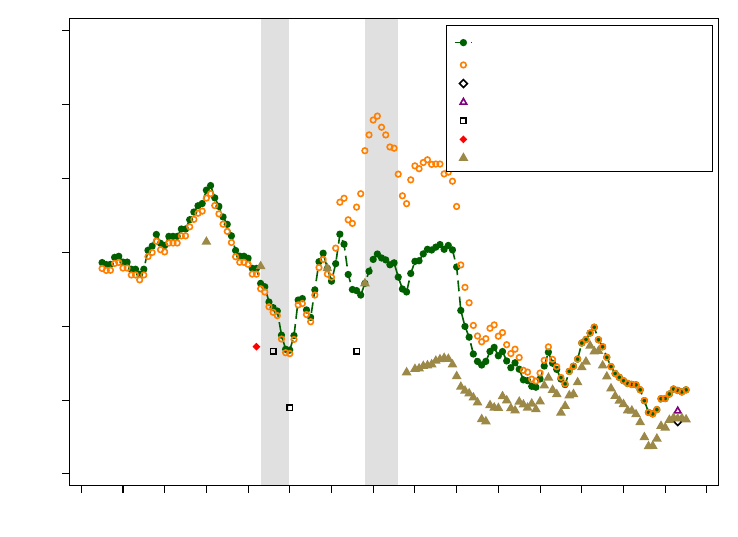
Second, we construct estimates of gross rent-price ratios using the balance-sheet approach, based
on data on rental expenditure and housing wealth, and scale these down one-third to obtain the
net yield proxy. For the modern period, Poullet (2013) provides estimates of housing wealth, and
Statistics Belgium (2013a) and OECD (2016b) of rental expenditure. For historical series, Peeters,
Goossens, and Buyst (2005) reports estimates of total gross and net rents on all dwellings, which
we scale down to obtain an estimate of net rental expenditure on residential real estate. Goldsmith
and Frijdal (1975) report estimates of housing wealth for 1948–1971, which we extend back to 1929
using data in Goldsmith (1985), and assuming a constant share of land to residential property value.
The resulting net rental yield estimates are somewhat below our baseline rent-price ratio for the
modern period, and broadly in line with its historical levels, falling within a reasonable margin of
error given the substantial uncertainty in the Belgian housing wealth estimates.
We would like to thank Stijn Van Nieuwerburgh for sharing historical rent and house price data
for Belgium.
Denmark
Figure A.14: Denmark: plausibility of rent-price ratio
0 .03 .06 .09 .12 .15 .18
Rent-price ratio
1870 1880 1890 1900 1910 1920 1930 1940 1950 1960 1970 1980 1990 2000 2010 2020
Rent-price ratio, final series
Unadjusted estimates, rent-price approach
Numbeo (city centers)
Numbeo (rest of the country)
Statistics Denmark, 1919, 1923, 1948
Birck, 1912
Balance sheet approach
For 2013, the MSCI (2016) reports the rent-price ratio for Danish residential real estate of 0.034.
Applying the rent-price approach to this benchmark gives us the unadjusted long-run net rent-price
ratio series depicted as orange circles in in Figure A.14. We make one adjustment to these series to
correct for possible mismeasurement of rental growth around WW2 (see below for details). This
gives us the final adjusted rent-price ratio series—the green-circled line in Figure A.14—used in this
paper.
We obtain several additional estimates of rent-price ratios in Denmark throughout the past
century and a half. First, we construct estimates using the balance sheet approach using data on
total rental expenditure (Hansen, 1976; OECD, 2016b; Statistics Denmark, 2017b) and housing wealth
A49
(Abildgren, 2016). We estimate housing running costs and depreciation as fixed proportions of
dwelling intermediate consumption, and depreciation of all buildings (Statistics Denmark, 2017a),
and subtract these from gross rental expenditure to produce net rental yield estimates. The balance
sheet approach yields are similar to the rent-price approach for the recent decades and in the early
20th century, but diverge somewhat in the 1940s and 50s. Both estimates are subject to measurement
error, but the large difference suggests that some of the high levels of the rent-price approach ratio
may be a result of the rental index underestimating the rent growth during this period. To guard
against accumulation of errors in the rent-price approach, we benchmark the historical yield to
the balance sheet approach estimates in 1938 and 1929, and adjust the rent-price ratio growth for
the in-between years, with the final series (green circles) being somewhere in-between the balance-
sheet and rent-price approaches. For earlier the historical period, the rent-price and balance-sheet
approaches display similar levels and time trend.
Our baseline rent-price ratio estimates are also in line with two further historical sources. First,
according to Birck (1912), at the time of his writing, housing values in Copenhagen typically
amounted to 13 times the annual rental income. Second, in line with this estimate, Statistics
Denmark (1919) reports that housing values in urban areas in 1916 were about 13.5 times the annual
rental income (note that housing values reported in Statistics Denmark (1919, 1923, 1948, 1954) relate
to valuation for tax purposes). These data imply a gross rent-price ratio of about 0.06–0.07, and
a net rent-price ratio of around 0.04–0.05. For 1920, Statistics Denmark (1923) states that housing
values in urban areas were about 25 times the annual rental income implying a gross rent-price
ratio of roughly 0.04 (roughly 0.03 net). In 1936, rent-price ratios in urban areas had returned to
pre-WW1 levels (Statistics Denmark, 1948). Finally, estimates of net rent-price ratios based on data
from
www.Numbeo.com
are similar to the modern-day values for the balance-sheet and rent-price
approaches.
Finland
For 2013, the MSCI (2016) reports the rent-price ratio for Finnish residential real estate of 0.054.
Applying the rent-price approach to this benchmark gives us the unadjusted long-run net rent-price
ratio series depicted as orange circles in in Figure A.15. We make one adjustment to these series
to correct for possible mismeasurement of rental growth during the rent controls imposed in the
early-to-mid 20th century (see below for details). This gives us the final adjusted rent-price ratio
series—the green-circled line in Figure A.15—used in this paper.
We obtain two alternative estimates of the net rent-price ratio for the modern period. First, we
construct proxies of gross rental expenditure, running costs and depreciation, and total housing
wealth back to 1995 using data from Statistics Finland and OECD. These are roughly the same as
our benchmark rent-price ratio for the benchmark year, but are slightly lower in the late 1990s. Note,
however, that data from Statistics Finland imply a housing depreciation rate of 3.5%, and running
and maintenance costs of around 2%, which corresponds to an expected duration of the structure of
less than 20 years. Therefore, the cost estimates are almost certainly too high, and adjusting these to
more reasonable levels would leave the rent-price ratios on par, or above our baseline values. For
2013, we also obtain estimates of rent-price ratios for one- and three-bedroom apartments i) within
city-centers and ii) in the rest of the country from
www.Numbeo.com
. Once adjusted for costs, these
are somewhat lower than both the estimates using the rent-price and balance sheet approach.
We also construct an independent estimate of the rent-price ratio in Finland in 1920 using data
on total housing value (Statistics Finland, 1920) and total expenditure on rents (Hjerppe, 1989),
adjusted down by one-third to account for running costs and depreciation. Figure A.15 shows that
this estimate is significantly below the long-run rent price ratio in 1920. Similarly to the case of Spain,
A50
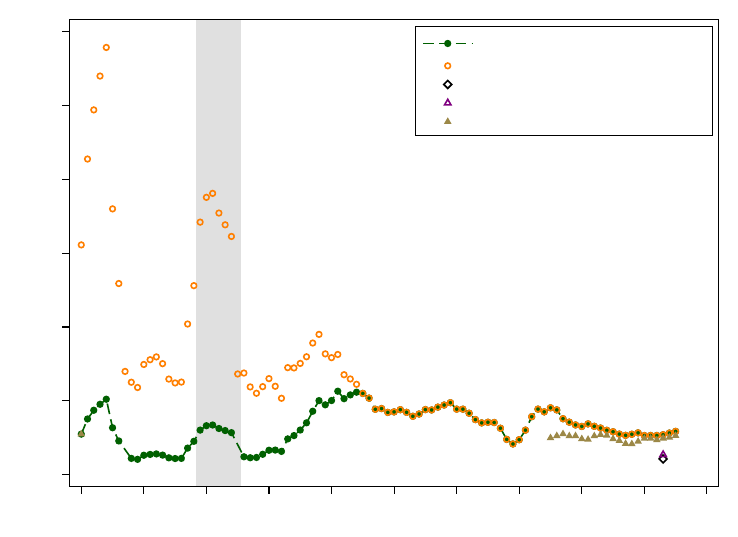
Figure A.15: Finland: plausibility of rent-price ratio
0 .1 .2 .3 .4 .5 .6
Rent-price ratio
1920 1930 1940 1950 1960 1970 1980 1990 2000 2010 2020
Rent-price ratio, final series
Unadjusted estimates, rent-price approach
Numbeo (city centers)
Numbeo (rest of the country)
Balance sheet approach
the discrepancy between the rent-price approach and alternative estimates may reflect difficulties of
the Finnish statistical office to construct a rent index after the introduction of wartime rent controls.
Rent controls were introduced during WW2 and were only abolished under the Tenancy Act of 1961
(Whitehead, 2012). While this period of deregulation was rather short-lived—rent regulation was
re-introduced in 1968 and parts of the private rental market were subject to rent regulation until the
mid-1990s—the downward trend of the long-run rent-price ratio appears particularly remarkable.
In other words, the data suggest that rents during the period of deregulation increased significantly
less than house prices. To the best of our knowledge, no quantitative or qualitative evidence exists
supporting such a pronounced fall in the rent-price ratio during the first half of the 1960s. We
therefore conjecture that the rent index suffers from a downward bias during the period of wartime
rent regulation and immediately thereafter. To mitigate this bias, we adjust the gross growth rate
in rents between WW2 and 1965 up by a constant factor calibrated so that the adjusted long-run
rent-price ratio concords with the independent estimate in 1920, which is a factor of 1.1. Figure A.15
displays the resulting adjusted long-run rent-price ratio.
A51
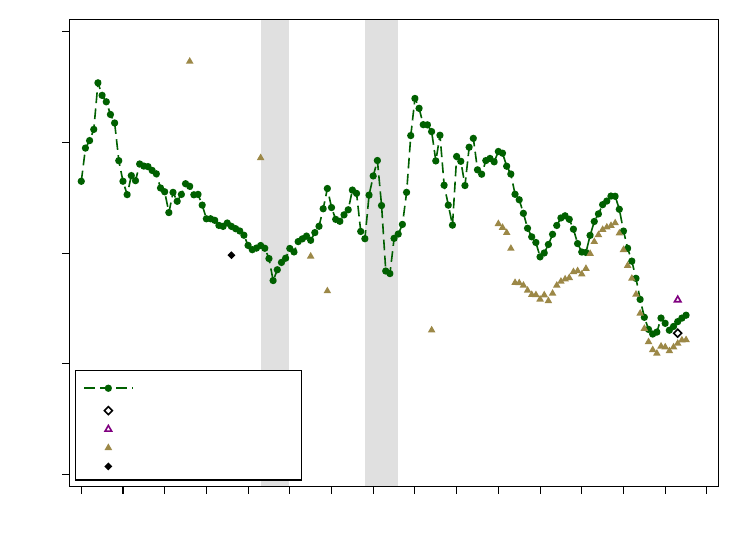
France
Figure A.16: France: plausibility of rent-price ratio
0 .02 .04 .06 .08
Rent-price ratio
1870 1880 1890 1900 1910 1920 1930 1940 1950 1960 1970 1980 1990 2000 2010 2020
Rent-price ratio, final series
Numbeo (city centers)
Numbeo (rest of the country)
Balance sheet approach
Leroy-Beaulieu (1906)
For 2013, the MSCI (2016) reports the rent-price ratio for French residential real estate of 0.028.
Applying the rent-price approach to this benchmark gives us the long-run net rent-price ratio series
depicted as green circles in in Figure A.16, which are the estimates used in this paper.
We obtain several scattered independent estimates of rent-price ratios in France since 1870. First,
we calculate rent-price ratios using the balance-sheet approach, based on the data on total housing
value (Piketty and Zucman, 2014) and total expenditure on rents (Statistics France, 2016b; Villa,
1994) net of running costs and depreciation (Piketty and Zucman, 2014; Statistics France, 2016a,b).
These estimates are in line with those using the rent-price approach, even though the balance-sheet
approach rental yield estimates for 1900–1920 are somewhat higher, and for 1920–1960 somewhat
lower. Second,
Numbeo.com
estimates of modern-day rent-price ratios are in line with the IPD
benchmark.
A few additional scattered estimates on housing returns for the pre-WW2 period are available.
For 1903, Haynie (1903) reports an average gross rental yield for Paris of about 4 percent. For
1906, Leroy-Beaulieu (1906) estimates a gross rental yield for Paris of 6.36 percent, ranging from
5.13 percent in the 16th arrondissement to 7.76 percent in the 20th arrondissement. Simonnet,
Gallais-Hamonno, and Arbulu (1998) state that the gross rent of residential properties purchased by
the property investment fund La Fourmi Immobiliere amounted to about 6 to 7 percent of property
value between 1899 and 1913. These estimates are generally comparable with an average annual net
rental yield of about 5 percent for 1914–1938 for the final series used in this paper.
A52
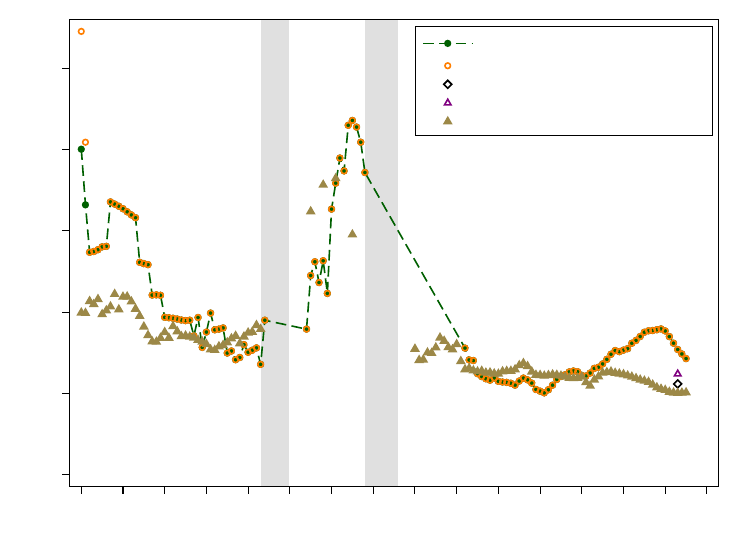
Germany
Figure A.17: Germany: plausibility of rent-price ratio
0 .03 .06 .09 .12 .15
Rent-price ratio
1870 1880 1890 1900 1910 1920 1930 1940 1950 1960 1970 1980 1990 2000 2010 2020
Rent-price ratio, final series
Unadjusted estimates, rent-price approach
Numbeo (city centers)
Numbeo (rest of the country)
Balance sheet approach
For 2013, the MSCI (2016) reports the rent-price ratio for German residential real estate of 0.047.
Applying the rent-price approach to this benchmark gives us the unadjusted long-run net rent-price
ratio series depicted as orange circles in in Figure A.17. We make one adjustment to these series to
correct for possible mismeasurement of rental growth in the early 1870s (see below for details). This
gives us the final adjusted rent-price ratio series—the green-circled line in Figure A.17—used in this
paper.
We obtain three independent estimates of historical rent-price ratios in Germany. First,
Numbeo.
com
estimates of modern-day rent-price ratios are broadly in line with the rent-price approach.
Second, we calculate the balance sheet approach estimates for benchmark years based on data on
total housing value and total expenditure on rents. The housing wealth series combines the data in
Piketty and Zucman (2014), and various issues of Statistik der Einheitswerte. For the pre-WW1 period,
we scale up the value of structures reported in Piketty and Zucman (2014) to obtain a proxy for total
housing wealth. The rental expenditure data are from OECD (2016b) and Statistics Germany (2013)
for the modern period, and (Hoffmann, 1965) for the period before WW2. Throughout we assume
around one-third of gross rent is spent on costs and depreciation to obtain a proxy for net rental
expenditure.
Figure A.17 shows that the balance sheet approach estimates confirm the general level and
historical time trend of the rent-price ratio: rents were high in the interwar period, and comparatively
lower before WW1 and after WW2. The modern-day balance sheet approach estimates are somewhat
below those in our final series, but within a reasonable margin of error, given the uncertainty in
estimating housing wealth, imputed rents, running costs and depreciation. For the years 1870–1871,
however, the balance sheet approach estimates of rental yield are relatively stable, whereas those
using the rent-price approach are markedly high. It is likely that the rental index underestimated
A53
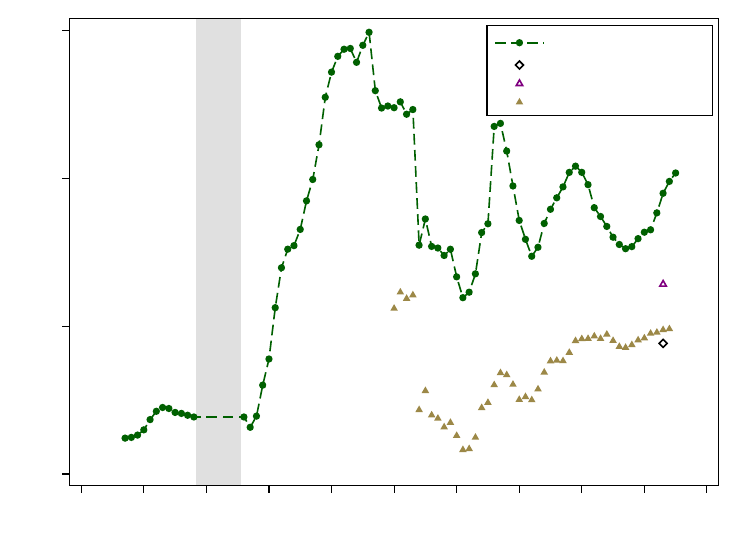
the rental growth during years 1870–1871, when house prices grew sharply. However, the balance
sheet approach net yield estimate is in itself highly uncertain, as housing wealth data may have
been smoothed over time, and there is little data on the value of land underlying dwellings. We
therefore adjust the rental yield down to the average of the rent-price figures, and an alternative
rental yield series that extrapolates the growth of rents back using the balance sheet approach. This
results in the green dots, our final series for 1870–1871, that suggests that rental yields fell during
those years, but probably by less than suggested by the raw unadjusted series.
Finally, one additional series on housing returns is available for the pre-WW2 period. For
1870–1913, Tilly (1986) reports housing returns for Germany and Berlin. Average annual real net
returns according to Tilly (1986) amount to about 8 percent—a figure similar to the circa 10 percent
p.a. average annual real return calculated using the adjusted rent and house price data.
Italy
Figure A.18: Italy: plausibility of rent-price ratio
0 .02 .04 .06
Rent-price ratio
1920 1930 1940 1950 1960 1970 1980 1990 2000 2010 2020
Rent-price ratio, final series
Numbeo (city centers)
Numbeo (rest of the country)
Balance sheet approach
For 2013, the MSCI (2016) reports the rent-price ratio for Italian residential real estate of 0.038.
Applying the rent-price approach to this benchmark gives us the long-run net rent-price ratio series
depicted as green circles in in Figure A.18, which are the estimates used in this paper.
To gauge the plausibility of historical rent-price ratios, we construct the balance-sheet approach
rental yields as total rental expenditure net or running costs and depreciation, in proportion to
total housing wealth (Istat, 2016; Piketty and Zucman, 2014). These are somewhat lower than the
rent-price approach estimate, but confirm the general trend in the rent-price ratio from the 1970s
onwards. Finally,
Numbeo.com
estimates of modern-day rent-price ratios are similar to the rent-price
and balance sheet approach.
A54
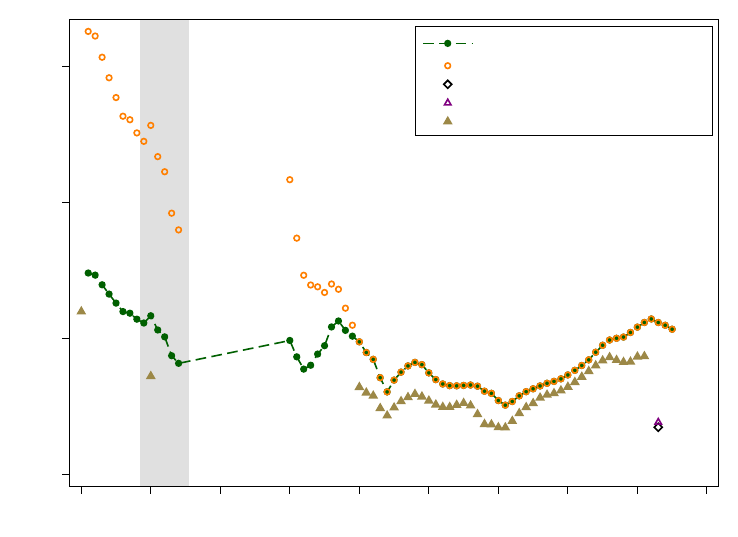
Japan
Figure A.19: Japan: plausibility of rent-price ratio
0 .05 .1 .15
Rent-price ratio
1930 1940 1950 1960 1970 1980 1990 2000 2010 2020
Rent-price ratio, final series
Unadjusted estimates, rent-price approach
Numbeo (city centers)
Numbeo (rest of the country)
Balance sheet approach
For 2013, the MSCI (2016) reports the rent-price ratio for Japanese residential real estate of 0.056.
Applying the rent-price approach to this benchmark gives us the unadjusted long-run net rent-price
ratio series depicted as orange circles in in Figure A.19. We make one adjustment to these series
to correct for possible mismeasurement of rental growth in the 1960s (see below for details). This
gives us the final adjusted rent-price ratio series—the green-circled line in Figure A.19—used in this
paper.
We obtain two independent estimates for rent-price ratios in Japan. First, we calculate rent-price
ratios for benchmark years (1930, 1940, 1970–2011) based on data on total housing value (Goldsmith,
1985; Piketty and Zucman, 2014) and total expenditure on rents (Cabinet Office. Government of
Japan, 2012; Shinohara, 1967). To proxy the net rent-price ratio, we assume around one-third of gross
rent is spent on running costs and depreciation. The resulting estimates are consistent with the
long-run rent-price ratio for the period 1970–2011 (Figure A.19). Yet, for 1930 and 1940 the estimates
are much lower than those using the rent-price approach. This suggests that the rent index may
have underestimated rent growth between 1940 and 1970, thus inflating the historical rental yield
estimates. Indeed, the unadjusted series imply that the rent-price ratio fell dramatically during the
1970s, a trend not mirrored in any subsequent period, or in the balance-sheet approach data. To this
end, we conjecture that the rental index understated the growth in rents by a factor of two during
the 1960s. The resulting adjusted rent-price ratio (green circles) is then consistent with the historical
estimates using the balance sheet approach.
Second, estimates of modern-day rent-price ratios from
Numbeo.com
are are somewhat below
both the rent-price approach and balance-sheet approach estimates for the 2010s.
A55
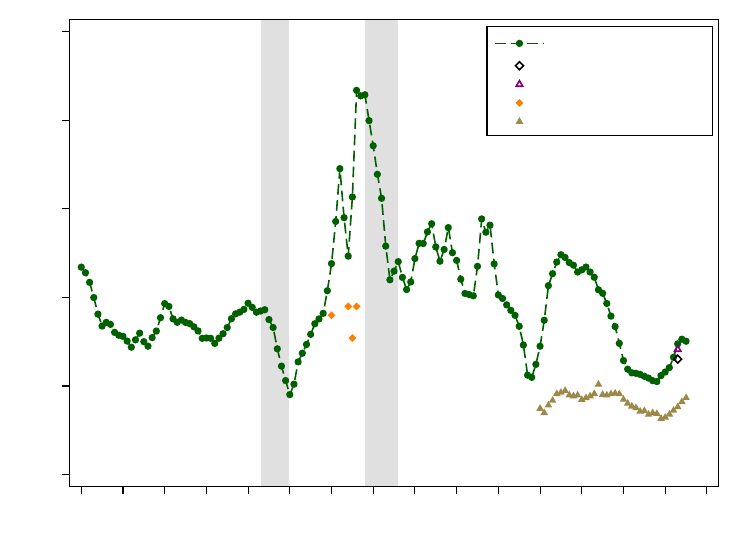
Netherlands
Figure A.20: Netherlands: plausibility of rent-price ratio
0 .03 .06 .09 .12 .15
Rent-price ratio
1870 1880 1890 1900 1910 1920 1930 1940 1950 1960 1970 1980 1990 2000 2010 2020
Rent-price ratio, final series
Numbeo (city centers)
Numbeo (rest of the country)
Newspapers
Balance sheet approach
For 2013, the MSCI (2016) reports the rent-price ratio for Dutch residential real estate of 0.044.
Applying the rent-price approach to this benchmark gives us the long-run net rent-price ratio series
depicted as green circles in in Figure A.20, which are the estimates used in this paper.
We obtain two independent estimates for rent-price ratios in the Netherlands. First, we calculate
the rent-price ratio using the balance sheet approach, based on estimates of rental expenditure from
OECD (2016b), and housing wealth estimated from non-financial balance sheet data in OECD (2016c)
and Groote, Albers, and De Jong (1996) (brown trianges in Figure A.20). We assume one-third of
gross rental is spent on running costs and depreciation. The yields confirm the general trend in our
benchmark series, although their levels are somewhat lower. It is worth noting that the estimates of
housing wealth and running costs for the Netherlands are highly uncertain, hence we do not put
too much weight on the level of the balance-sheet approach yields.
Second, a number of newspaper advertisements and articles in the mid-1930s report rent-price
ratio levels of 0.07–0.09, which we conjecture are around 0.05 - 0.06 in net terms, once running
costs and depreciation are taken out (Limburgsch Dagblaad, 1935; Nieuwe Tilburgsche Courant,
1934, 1936). These are somewhat lower than our baseline series, but similar to the levels observed
in the early 1930s, with the remaining margin of error easily attributed to location specificity (the
advertisements are for city-center properties, with the correspondingly lower yiedls). More generally,
residential real estate was perceived as a highly profitable investment throughout the decade (De
Telegraaf, 1939). Finally, estimates of the rent-price ratio based on data from
Numbeo.com
are almost
identical to our baseline IPD benchmark (MSCI, 2016).
A56
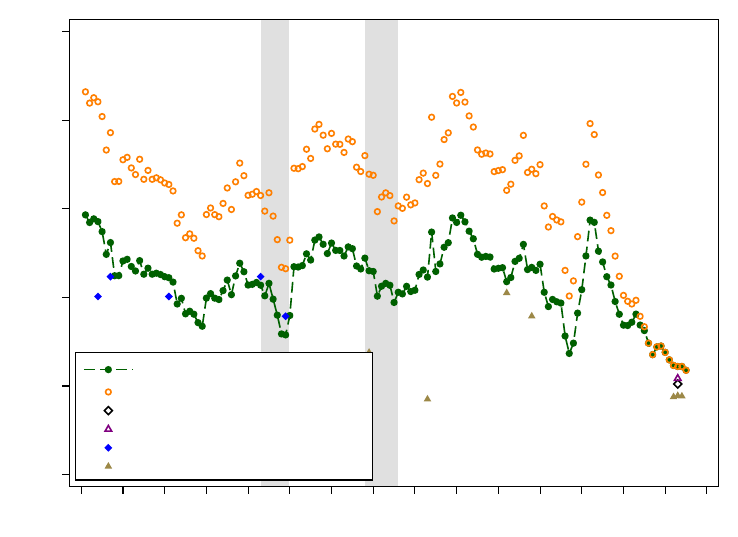
Norway
Figure A.21: Norway: plausibility of rent-price ratio
0 .03 .06 .09 .12 .15
Rent-price ratio
1870 1880 1890 1900 1910 1920 1930 1940 1950 1960 1970 1980 1990 2000 2010 2020
Rent-price ratio, final series
Unadjusted estimates, rent-price approach
Numbeo (city centers)
Numbeo (rest of the country)
Newspapers
Balance sheet approach
For 2013, the MSCI (2016) reports the rent-price ratio for Norwegian residential real estate of 0.037.
Applying the rent-price approach to this benchmark gives us the unadjusted long-run net rent-price
ratio series depicted as orange circles in in Figure A.21. We make one adjustment to these series to
bring the estimates in line with alternative historical sources (see below for details). This gives us
the final adjusted rent-price ratio series—the green-circled line in Figure A.21—used in this paper.
We obtain several scattered independent estimates of rent-price ratios in Norway since 1871.
First, we calculate rent-price ratios for benchmark years using the balance-sheet approach, based
on data on total housing value (Goldsmith, 1985; OECD, 2016c) and total expenditure on rents
(OECD, 2016b; Statistics Norway, 1954, 2014), and assuming one-third of gross rent is consumed by
running costs and depreciation expenses to estimate the net rental yield. Note that for the historical
expenditure series, we estimate rents as 80% of total housing expenditure, a proportion consistent
with modern-day Norwegian data, and historical data for the US. We also collect scattered data from
advertisements for Oslo residential real estate in Aftenposten, one of Norway’s largest newspapers,
with the gross advertised yield again adjusted down by one-third to proxy the net figure.
Both these sets of estimates confirm the general long-run trend in the rent-price ratio. The
long-run rent-price ratio was essentially stable up until the early 2000s, with increases in early 20th
century and late 1960s reversed by falls in WW1 and the 1980s, and is currently at a historical low.
However the long-run level of the ratio is generally lower than the estimates using the rent-price
approach (orange diamonds): around 6%–8% rather than 8%–12%, and this divergence is already
apparent in the late 1970s. Based on this, we stipulate that the rental index during late 1990s and
early 2000s—a period when house prices increased substantially—understated the growth of rents
relative to prices, leading the rent-price approach to overstate the historical rental yields. To correct
for this presumed bias, we adjust the growth in rents up by a factor of 1.5 for the years 1990 to 2005.
A57
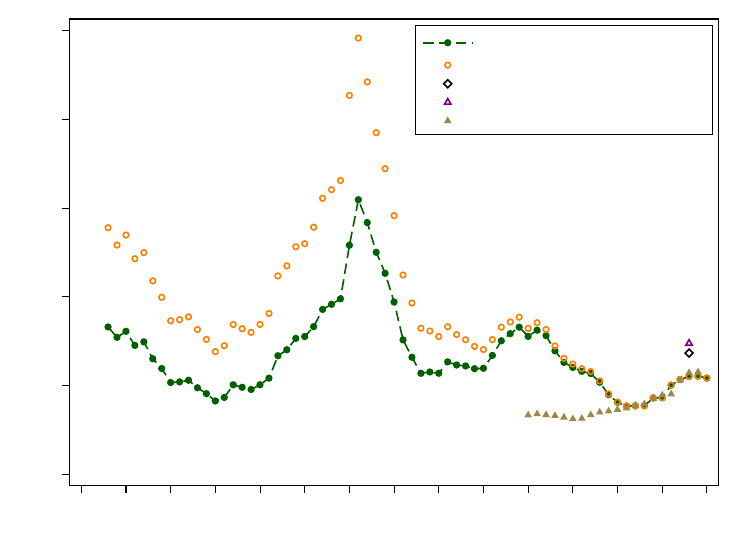
The resulting adjusted rent-price ratio (green circles) is in line with the historical estimates both in
terms of levels and trend.
Lastly, estimates of the rent-price ratio based on data from
www.Numbeo.com
are in line with our
baseline IPD benchmark (MSCI, 2016).
Portugal
Figure A.22: Portugal: plausibility of rent-price ratio
0 .03 .06 .09 .12 .15
Rent-price ratio
1945 1950 1955 1960 1965 1970 1975 1980 1985 1990 1995 2000 2005 2010 2015
Rent-price ratio, final series
Unadjusted estimates, rent-price approach
Numbeo (city centers)
Numbeo (rest of the country)
Balance sheet approach
For 2013, the MSCI (2016) reports the rent-price ratio for Portuguese residential real estate of 0.033.
Applying the rent-price approach to this benchmark gives us the unadjusted long-run net rent-price
ratio series depicted as orange circles in in Figure A.22. We make one adjustment to these series
to correct for potential biases arising from rent mismeasurement during the prolonged period of
rent controls in the last quarter of the 20th century (see below for details). This gives us the final
adjusted rent-price ratio series—the green-circled line in Figure A.22—used in this paper.
We obtain several scattered independent estimates of rent-price ratios in Portugal. First, estimates
of the rent-price ratio based on data from
www.Numbeo.com
are slightly above, but broadly in line
with our baseline IPD benchmark (MSCI, 2016). Second, we compute the rental yield using the
balance-sheet approach, based on data on total rental expenditure (OECD, 2016b) and total housing
wealth (Cardoso, Farinha, and Lameira, 2008), scaled down one-third to adjust for running costs and
depreciation. These are almost identical to the rent-price approach for the recent years, but diverge
somewhat in the late 1990s. More generally, the historical growth in rents relative to house prices in
Portugal may have been understated due to the imposition of rent controls in 1974, which remained
in place in various forms until well into the 2000s. This seems likely given the high levels of the
unadjusted rent-price approach yields in the 1970s and early 1980s (orange circles in Figure A.22).
Unfortunately, no alternative historical estimates of the rent-price ratio before 1995 are available for
Portugal. Instead, we stipulate that the rent-price ratio in the 1940s and 50s, before the reported high
A58
rent inflation of the 1960s (Cardoso, 1983) and the subsequent rent controls, was at levels similar
to the 1980s and 1990s. To achieve that, we adjust rental growth up by a factor of 1.2 for years
1974–2005; the period for which rent controls were in place.
The resulting adjusted long-run rent-price ratio (green circles in Figure A.22) concords with the
narrative evidence on house prices and rent developments in Portugal. Real house prices in Portugal
rose after the end of WW2 until the Carnation Revolution in 1974. After a brief but substantial house
price recession after the revolution, real house prices embarked on a steep incline (Azevedo, 2016).
By contrast, real rents remained broadly stable between 1948 and the mid-1960s as well as after
1990 but exhibit a pronounced boom and bust pattern between the mid-1960s and the mid-1980s.
According to Cardoso (1983), the rapid growth of inflation-adjusted rents between the mid-1960s
and the mid-1970s was the result of both rising construction costs and high inflation expectations.
In 1974, new rent legislation provided for a rent freeze on existing contracts. Rent increases were
also regulated between tenancies but unregulated for new construction. These regulations resulted
in lower rent growth rates and rents considerably lagging behind inflation (Cardoso, 1983), and a
consequent fall in the rent-price ratio.
Spain
For 2013, the MSCI (2016) reports the rent-price ratio for Spanish residential real estate of 0.025.
Applying the rent-price approach to this benchmark gives us the unadjusted long-run net rent-price
ratio series depicted as orange circles in in Figure A.23. We make one adjustment to these series
to correct for possible mismeasurement of rental growth during the rent controls imposed in the
early-to-mid 20th century (see below for details). This gives us the final adjusted rent-price ratio
series—the green-circled line in Figure A.23—used in this paper.
We obtain several scattered independent estimates of rent-price ratios in Spain. First, estimates
of the rent-price ratio based on data from
www.Numbeo.com
are almost identical to our baseline
IPD benchmark (MSCI, 2016). Second, we construct net rent-price ratios using the balance sheet
approach, as total rental expenditure (OECD, 2016b) less running costs and depreciation (assumed
to be one-third of gross rent), in relation to housing wealth (Artola Blanco, Bauluz, and Mart
´
ınez-
Toledano, 2017). These are slightly below but broadly in line with the rent-price approach for the
overlapping years.
Finally, we collected scattered data on rent-price ratios from advertisements for Barcelona
residential real estate in La Vanguardia for benchmark years (1910, 1914, 1920, 1925, 1930, 1935, 1940,
1950, 1960, 1970). For each of the benchmark years, we construct an average rent-price ratio based
on between 25 and 46 advertisements. The gross ratios in the advertisements are adjusted down to
exclude running costs and depreciation, calibrated at 2% p.a., around one-third of the advertized
yields. Figure A.23 shows that the newspaper estimates are significantly below the rent-price ratio
for the benchmark years between 1910 and 1960. Yet it also suggests that rent-price ratios were
generally higher before the mid-1950s. Similarly to Finland, this trajectory may reflect difficulties of
the Spanish statistical office to construct a rent index after the introduction of rent freezes in the
1930s and during the years of strong rent regulation after WW2. While the rent freeze was lifted in
1945, these regulations remained effective until the mid-1960s. Specifically, the data suggest that
rents between the end of WW2 and the mid-1960s increased substantially less than house prices.
To the best of our knowledge, no quantitative or qualitative evidence exists supporting such a
pronounced fall in the rent-price ratio in the immediate post-WW2 years or a generally higher level
of rental yields prior to the 1960s. To mitigate this bias, we adjust the growth rate in rents between
1910 and 1960 so that the adjusted long-run rent-price ratio concords with the independent estimates
obtained from La Vanguardia. Figure A.23 displays the resulting adjusted long-run rent-price ratio
A59
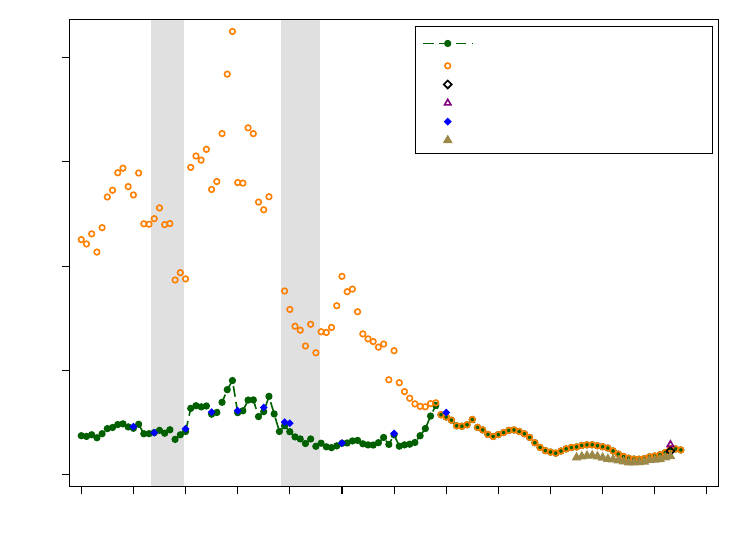
Figure A.23: Spain: plausibility of rent-price ratio
0 .1 .2 .3 .4
Rent-price ratio
1900 1910 1920 1930 1940 1950 1960 1970 1980 1990 2000 2010 2020
Rent-price ratio, final series
Unadjusted estimates, rent-price approach
Numbeo (city centers)
Numbeo (rest of the country)
La Vanguardia
Balance sheet approach
(green circles), which is the final series we use in this paper.
Sweden
For 2013, the MSCI (2016) reports the rent-price ratio for Swedish residential real estate of 0.036.
Applying the rent-price approach to this benchmark gives us the long-run net rent-price ratio series
depicted as green circles in in Figure A.24, which are the estimates used in this paper.
We obtain three independent estimates of rent-price ratios for Sweden. First, we compute net
rental yields based on the balance-sheet approach as total rental expenditure less running costs and
depreciation, as a share of housing wealth, drawing on a variety of sources. The modern-day rental
expenditure data are obtained from OECD (2016b), and further data back to 1969 were provided by
Birgitta Magnusson W
¨
armark at Statistics Sweden. These are extrapolated back to 1931 using data
on total housing expenditure from Dahlman and Klevmarken (1971). The data on running costs are
a weighted average of total repairs of dwellings (data provided by Jonas Zeed at Statistics Sweden),
and maintenance costs on rentals reported by (OECD, 2016b) scaled up to capture owner-occupied
dwellings. Data on depreciation were provided by Jonas Zeed at Statistics Sweden, and were
extrapolated back using dwellings depreciation in Edvinsson (2016). Before 1995, running costs are
assumed to have evolved in line with depreciation. The long-run housing wealth data are sourced
from Waldenstr
¨
om (2017). Both the level and the time trend in the resulting long-run rent-price ratio
are in line with the historical balance-sheet approach estimates.
Second, the rent-price ratio in the late 19th / early 20th century is in line with those reported
in several newspaper advertisements and articles. According to these sources, gross rent-price
ratios were in the range of 0.07 to 0.1, and residential real estate was perceived as highly profitable
investment (Dagens Nyheter, 1892, 1897, 1899). Given that running costs and depreciation amounted
to around 2% p.a. of property value in Sweden during the period 1930–2015, this leads us to
A60
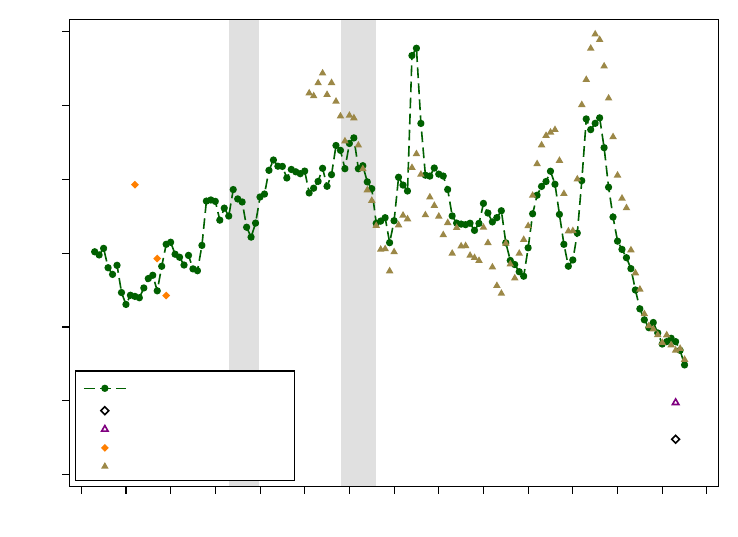
Figure A.24: Sweden: plausibility of rent-price ratio
0 .02 .04 .06 .08 .1 .12
Rent-price ratio
1880 1890 1900 1910 1920 1930 1940 1950 1960 1970 1980 1990 2000 2010 2020
Rent-price ratio, final series
Numbeo (city centers)
Numbeo (rest of the country)
Newspapers
Balance sheet approach
conjecture that net rent-price ratios were around 0.05–0.08, in line with our estimates.
Finally, estimates of modern-day rent-price ratios from
Numbeo.com
are somewhat below both our
benchmark ratio and the balance sheet approach. However these are not based on a representative or
matched sample of properties for sale and for rent, and are therefore less reliable than the alternative
estimates.
A61
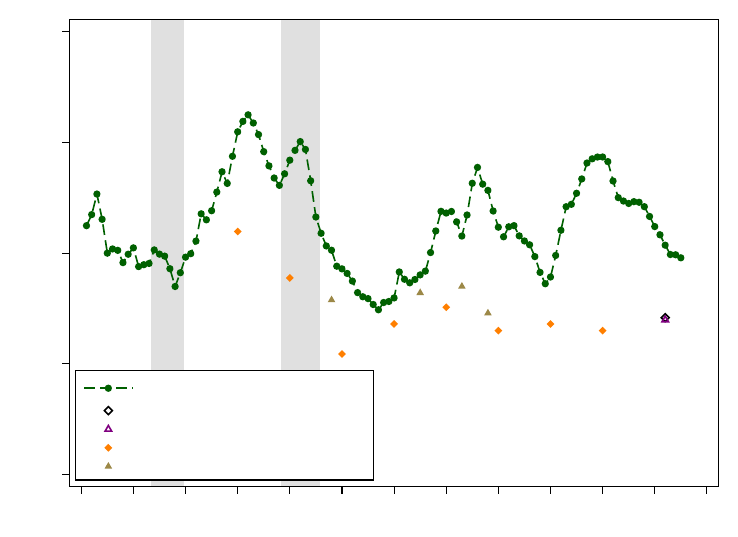
Switzerland
Figure A.25: Switzerland: plausibility of rent-price ratio
0 .02 .04 .06 .08
Rent-price ratio
1900 1910 1920 1930 1940 1950 1960 1970 1980 1990 2000 2010 2020
Rent-price ratio, final series
Numbeo (city centers)
Numbeo (rest of the country)
Wüest & Partner, 2012 (decadal averages)
Balance sheet approach
For 2013, the MSCI (2016) reports the rent-price ratio for Swiss residential real estate of 0.040.
Applying the rent-price approach to this benchmark gives us the long-run net rent-price ratio series
depicted as green circles in in Figure A.25, which are the estimates used in this paper.
To check the plausibility of the long-run rent-price ratio, we obtain four independent estimates.
First, Real (1950) reports real returns on residential real estate in Zurich of 6 percent in 1927 and
7.3 percent in 1933. These data are—by and large—in line with the estimates of housing returns
constructed by merging the indices of house prices and rents. Second, W
¨
uest and Partner (2012)
estimate 10-year averages of real rental yields in Switzerland for 1920–2000. Assuming around
one-third of gross rent goes to running costs and depreciation, the resulting net rental yield estiamtes
are broadly consistent with the long-run rent-price ratio (Figure A.25), taking into account the
various estimation uncertainties. For the post-WW2 period, we calculate rent-price ratios using the
balance sheet approach for benchmark years (1948, 1965, 1973, 1978) drawing on data on housing
wealth from Goldsmith (1985), rental expenditure from Statistics Switzerland (2014), and assuming
one-third of gross rent is taken up by runnign costs and depreciation. Again, the resulting estimates
are broadly consistent with the long-run rent-price ratio (Figure A.25).
Finally, estimates of rent-price ratios based on data from
Numbeo.com
are somewhat below, but
within a reasonable error margin of the MSCI (2016) benchmark ratio.
A62
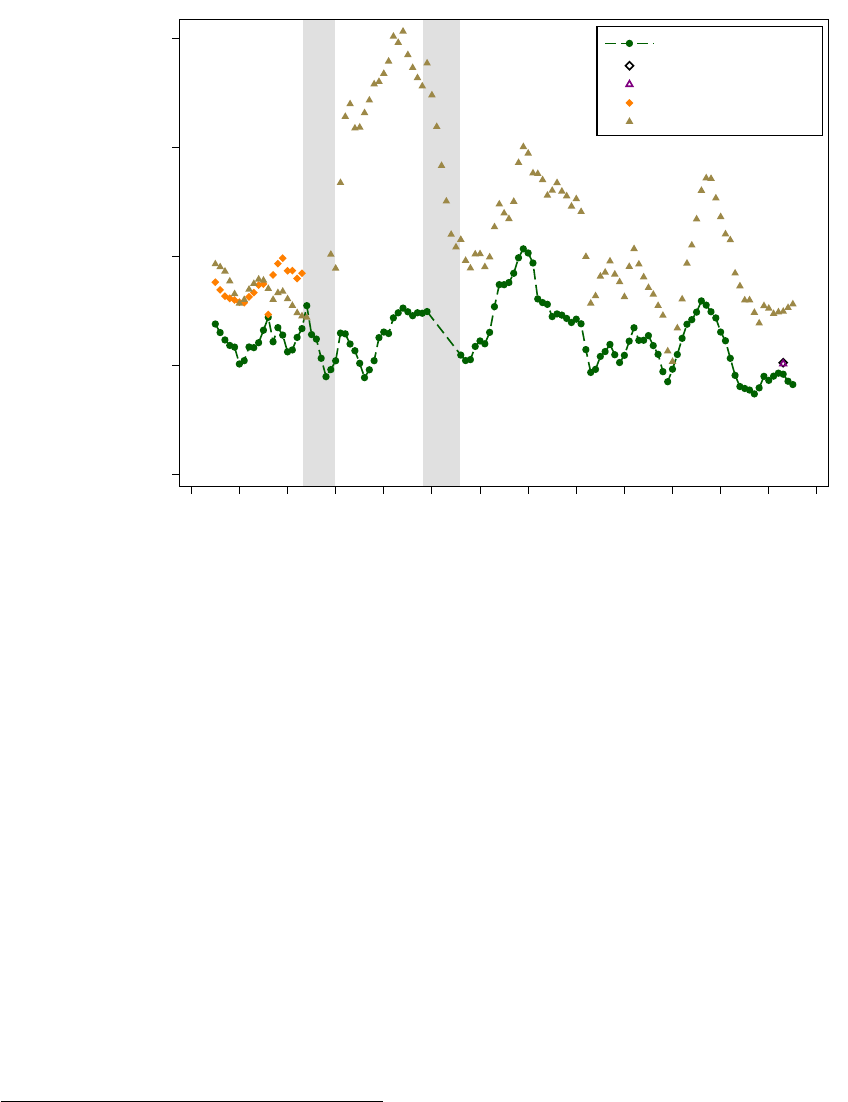
United Kingdom
Figure A.26: United Kingdom: plausibility of rent-price ratio
0 .03 .06 .09 .12
Rent-price ratio
1890 1900 1910 1920 1930 1940 1950 1960 1970 1980 1990 2000 2010 2020
Rent-price ratio, final series
Numbeo (city centers)
Numbeo (rest of the country)
Cairncross, 1953
Balance sheet approach
For 2013, the MSCI (2016) reports the rent-price ratio for U.K. residential real estate of 0.032.
Applying the rent-price approach to this benchmark gives us the long-run net rent-price ratio series
depicted as green circles in in Figure A.26, which are the estimates used in this paper. Please note
that for years 1947–1955, no rental index data were available, and we extrapolated the rent-price
ratio series using the growth in the “balance sheet approach” measure, benchmarking against rental
index values in 1946 and 1956.
58
We construct several alternative estimates of the rent-price ratio for the period going back to
1900. First, we construct the net rental yield based on the balance-sheet approach using data on
total rental expenditure less running costs and depreciation, in proportion to housing wealth, based
on a variety of sources. For rents, we rely on historical series of housing and rental expenditure
from Mitchell (1988), Sefton and Weale (1995) and Piketty and Zucman (2014), combined with
recent Office for National Statistics (ONS) data, and historical data from the ONS shared with us by
Amanda Bell. Estimates of costs and depreciation are available from the UK National Accounts, and
housing wealth is taken from Piketty and Zucman (2014). It is worth noting that the estimates of
rental expenditure for the UK are subject to large uncertainty: the ONS updated the methodology
for rent imputation in 2016, resulting in large upward revisions to historical imputed rent estimates
(by as large as a factor of three). It is possible that some of the historical data are subject to similar
uncertainties, which helps explain why the rental yield levels using the balance sheet approach are
so much higher than the extrapolated rent-price ratio, even though the time trend is similar.
58
We assume that the 1956 index value is correct, but correct the 1946 rental index value for possible biases
arising from the wartime rent controls, such that the trend in the rent-price ratios matches that in the balance
sheet approach measure, and the 1956 rent-price approach estimate.
A63
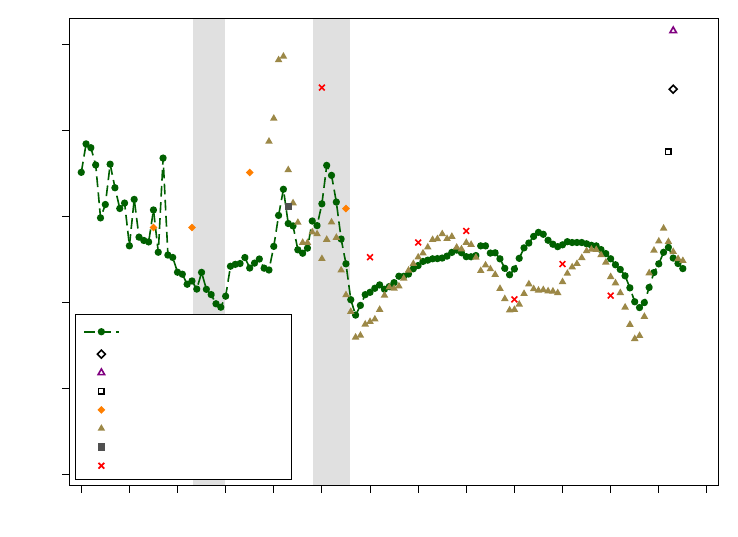
Some additional scattered data on rent-price ratios are available for the pre-WW2 period. For
England, Cairncross (1975) reports an average gross rent-price ratio of 0.068 between 1895 and 1913,
or around 0.05 in net terms. Offer (1981) estimates slightly higher rent-price ratios for selected years
between 1892 and 1913 for occupied leasehold dwellings in London. As Figure A.26 shows, these
data are slightly higher, but broadly consistent with the our long-run rent-price ratio estimates (an
average of 0.037 during 1900–1913). Tarbuck (1938) states that high-quality freehold houses were
valued at 25 to 16 years purchase and lower quality freehold houses at 14 to 11 years purchase in
the 1930s, again broadly consistent with our estimates.
Overall, these estimates suggest that our rental yields for the UK are somewhat conservative,
but fit the time pattern and broad levels found in the alternative historical sources.
Concerning the modern period, estimates of the rent-price ratio based on data from
www.Numbeo.
com
are very similar to the MSCI (2016) benchmark. Additionally, Bracke (2015) estimates a gross
rental yield of 0.05 on central London properties over the period 2006–2012, based on a matched
micro-level dataset of around 2000 properties. Again, these estimates are consistent with our data.
United States
Figure A.27: United States: plausibility of rent-price ratio
0 .02 .04 .06 .08 .1
Rent-price ratio
1890 1900 1910 1920 1930 1940 1950 1960 1970 1980 1990 2000 2010 2020
Rent-price ratio, final series
Numbeo (city centers)
Numbeo (rest of the country)
Giglio et al (2015)
Grebler et al (1956)
Balance sheet approach
Statistical abstract of the U.S.
Census of housing
For 2014, the MSCI (2016) reports the rent-price ratio for U.S. residential real estate of 0.049. Applying
the rent-price approach to this benchmark gives us the long-run net rent-price ratio series depicted
as green circles in in Figure A.27, which are the estimates used in this paper.
We obtain independent estimates of U.S. rent-price ratios from five additional sources. First,
decadal averages of gross price-rent ratios are available for 1899–1938 from Grebler, Blank, and
Winnick (1956) ranging between 10.4 and 12.6. Second, estimates of gross rents paid and home
values are available from various issues of the U.S. Census and Statistical Abstract, published by
U.S. Census Bureau (1942, 2013). Once adjusted for estimates of running costs and depreciation, the
A64
estimates from these sources are similar to the price-rent ratios resulting from merging the indices
of house prices and rents (see Figure A.27). Third, we calculate the rent-price ratio using the balance
sheet approach, as total rental expenditure less housing running costs—estimated as 2/3 of total
housing intermediate consumption—in proportion to total housing value, using expenditure data
from Bureau of Economic Analysis (2014) and housing wealth estimates in Saez and Zucman (2016).
Reassuringly, the resulting estimates are very close to the long-run rent-price ratio. Estimates of
the rent-price ratio for 2012 are also available from the real estate portal Trulia, as used by Giglio,
Maggiori, and Stroebel (2015). The resulting net rent-price ratio of 0.075 is higher than the figures
from MSCI (2016) and the balance sheet approach. This may be because the Trulia ratios are not
market cap weighted, and may overweigh the high-yield low-housing-wealth areas outside of cities.
Alternatively, the MSCI (2016) IPD ratio could understate the rental yield because investor portfolios
tend to be concentrated in cities. To be consistent with the balance sheet approach and to remain
conservative, we use the IPD ratio as our benchmark.
Finally, estimates of the rent-price ratio based on data from
www.Numbeo.com
are higher than our
benchmark estimate and similar to the Trulia transaction-level data. As with the Trulia data, these
are not market-capitalization weighted, which may bias the rental yield estimates upwards. Given
the similarity to the balance-sheet approach yields and the historical estimates from Grebler, Blank,
and Winnick (1956), the rent-price approach estimates stemming from the MSCI (2016) benchmark
should provide the most accurate picture of the historical rental returns on housing in the US.
Still, given the higher alternative benchmark yield estimates of Trulia and
Numbeo.com
, our housing
return series for the US should be viewed as conservative compared to other possible alternatives.
A65

V. Rent indices: methodology
Rent indices measure the change in ’pure’ rents for primary residences, i.e., net of house furnishings,
maintenance costs, and utilities. For modern rent indices included in CPIs, data are usually collected
by statistical offices through surveys of housing authorities, landlords, households, or real estate
agents (International Labour Organization et al., 2004).
Rental units are heterogeneous goods.
59
Consequently, there are several main challenges involved
when constructing consistent long-run rent indices. First, rent indices may be national or cover
several cities or regions. Second, rent indices may cover different housing types ranging from high
to low value housing, from new to existing dwellings. Third, rental leases are normally agreed to
over longer periods of time. Hence, current rental payments may not reflect the current market rent
but the contract rent, i.e., the rent paid by the renter in the first period after the rental contract has
been negotiated.
60
Fourth, if the quality of rental units improve over time, a simple mean or median
of observed rents can be upwardly biased. These issues are similar to those when constructing
house price indices and the same standard approaches can be applied to adjust for quality and
composition changes. For a survey of the different approaches, the reader is referred Knoll et al.
(2017). Yet, as can be seen from the data description that follows, these index construction methods
commonly used for house price indices have less often been applied to rents.
Another important question when it comes to rent indices is the treatment of subsidized and
controlled rents. Rental units may be private or government owned and hence be subject to different
levels of rent controls or subsidies. Since these regulations may apply to a substantial share of the
rental market, rent indices typically cover also subsidized and controlled rents (International Labour
Organization et al., 2004).
61
It is worth noting that not properly controlling for substantial changes
in rent regulation may result in a mis-measurement of rent growth rates. More specifically, if the
share of the rental market subject to these regulations suddenly increases—e.g., during wars and in
the immediate post-war years—-the rent index can be downwardly biased.
62
An additional challenge when constructing rent indices is the treatment of owner-occupied
housing. Since a significant share of households in advanced economies are owner-occupants, rent
indices typically cover changes in the cost of shelter for both renters and owner-occupiers.
63
The
cost for owner-occupied shelter is an estimate of the implicit rent that owner-occupants would
have to pay if they were renting their dwellings. Different approaches to estimate the change
in implicit rents exist, each with advantages and disadvantages. Most statistical offices rely on
the rental equivalent approach.
64
The resulting rent index is based on an estimate of how much
owner-occupiers would have to pay to rent their dwellings or would earn from renting their home
59
Compared to owner-occupied houses, Gordon and van Goethem (2007) argue that rental units are,
however, less heterogeneous in size at any given time and more homogenous over time. The authors provide
also scattered evidence for the U.S. that rental units experience quality change along fewer dimensions than
owner-occupied units.
60
Typically, in times of low or moderate general inflation, the market rent will be higher than the contract
rent. Yet, the introduction of rent controls or a temporary strong increase in the supply of rental units may
result in the market rent being lower than the contract rent (Shimizu et al., 2015).
61
Exceptions include, for example, the Canadian rent index where subsidized dwellings are excluded
(Statistics Canada, 2015).
62
For example, this has been the case for the Australia CPI rent index after WW2 (see Section W).
63
Imputed rents of owner-occupied housing are excluded in Belgium and France. In some countries, two
rent indices are reported, one for renter-occupied and one for owner-occupied dwellings (International Labour
Organization et al., 2004; OECD, 2002).
64
The rental equivalent approach is currently used in the U.S., Japan, Denmark, Germany, the Netherlands,
Norway, and Switzerland (OECD, 2002).
A66

in a competitive market. Data either come from surveys asking owner-occupiers to estimate the
units’ potential rent or are based on matching owner-occupied units with rented units with similar
characteristics.
65
The user cost approach assumes that a landlord would charge a rent that at least
covers repairs and maintenance, taxes, insurance, and the cost of ownership (i.e., depreciation,
mortgage interest, opportunity costs of owning a house). The resulting rent index is a weighted
average of the change in the price of these components.
66
The user cost approach is important
in its own right (i.e., when the size of the rental market is relatively small, it is not possible to
value the services of owner-occupied housing using the rental equivalence approach). Nevertheless,
the user-cost and rental equivalence approach should, in principle, yield similar results given that
capital market theory implies that the price of an asset should equal the discounted value of the flow
of income or services (e.g., rents) that it provides over the lifetime of the asset. The net acquisitions
approach measures the costs associated with the purchase and ongoing ownership of dwellings for
own use. Hence it covers the costs of repair and maintenance, taxes, insurances and the change in
the cost of the net acquisition of the dwelling, i.e., the change in the total market value (Diewert,
2009; International Labour Organization et al., 2004; OECD, 2002).
67
If rents of owner-occupants
are included in rent indices, the combined rent index is a weighted average of rents for rented and
owner-occupied dwellings. Weights are based on the share of owner-occupants and tenants in the
respective housing market.
65
This approach may result in a bias of unknown size and direction if i) owners’ assessment of the rental
value of their dwelling is unreliable, ii) if the rental market is small and the rental housing stock is not
comparable to the owner-occupied housing stock, and ii) if rents set in rental markets are significantly affected
by government regulation since subsidized and controlled rents should not be used in calculating an owners’
equivalent rent index (Diewert, 2009; International Labour Organization et al., 2004; OECD, 2002).
66
A (partial) user cost approach is currently used in Canada, Finland, Sweden, and the United Kingdom
(OECD, 2002).
67
Hence, a basic requirement of this method is the existence of a constant- quality house price index. The
net acquisitions approach is currently used in Australia (OECD, 2002).
A67

W. Data sources for the rental indices
To construct rent indices reaching back to the late 19th century, we rely on two main sources. First,
we use the rent components of the cost of living or consumer price indices published by regional or
national statistical offices such as Statistics Sweden (1961) and Statistics Norway (2015). The cost of
shelter is a major component of household expenditure. Cost of living (COLIs) or consumer price
indices (CPIs) therefore typically include a component for housing. In many advanced economies,
the construction of COLIs/CPIs was initiated by governments during WW1 to calculate necessary
wage adjustments in times of strongly rising price levels. Hence, most countries’ statistical offices
started to collect data on rents and calculate rent indices in the early 20th century.
68
The Yearbook
of Labor Statistics (International Labour Organization, various years) serves as main repository for
these data from national statistical offices. Second, to extend these indices back to the late 19th
century, we draw on previous work of economic historians, such as Rees (1961) for the U.S., Lewis
and Weber (1965) for the U.K., or Curti (1981) for Switzerland.
Australia
Rent data Historical data on rents in Australia are available for 1901–2015.
For Australia, there are two principal sources for historical rent data. First, the CPI rent
component constructed by the Australian Bureau of Statistics covers the period 1901–2015. This
rent index is based on data for urban areas and has historically been published in two versions,
the A and the C series.
69
. For the years the two series overlap, the difference appears negligible
(Stapledon, 2012). Since 1961, the CPI rent index is based on rent data for 8 capital cities. The
sample of dwellings included is stratified according to location, dwelling type and dwelling size
based on data from the most recent Census of Population and Housing (Australian Bureau of Statistics,
2011). Rent data are collected from real estate agents and state and territory housing authorities
(Australian Bureau of Statistics, 2011).
The second source is Stapledon (2007) who presents an index of average rents per dwelling based
on census estimates for 1901–2005. The author observes substantial differences between his series
and the CPI rent index described above. While for the years prior to WW2, the rent index based on
census data and the CPI rent index are highly correlated,
70
the CPI rent index increases much less
than the index based on census data during the immediate post-WW2 decades (see Figure A.28).
Stapledon (2007) hypothesizes that this may reflect difficulties of the Australian statistical office to
construct a rent index after the introduction of wartime rent controls.
Given this potential bias in the CPI rent index in the post-WW2 period, we rely on the series
constructed by Stapledon (2007) for the years 1940–1989 and the CPI rent component before and
after.
71
. For the pre-WW2 period, we rely on the C series whenever possible as it is based on a more
homogeneous dwelling sample and may thus be less affected by shifts in the composition of the
sample. The available series are spliced as shown in Table A.30.
The most important limitation of the long-run rent series is the lack of correction for quality
changes and sample composition shifts before 1990. As noted above, the latter aspect may be less of
a problem for the years 1921–1939 since the index is confined to a specific market segment, i.e., 4-
68
One exception is Belgium where house rents were only added to the CPI basket in 1989.
69
The A series starts in 1901 and refers to average rents of all kinds of dwellings in the 6 capital cities. The
series was discontinued in 1938. The C series starts in 1920, covers 30 towns (including the 6 capital cities) and
is based on rent data for 4- and 5-room houses (Australian Bureau of Statistics, 2011).
70
Correlation coefficient of 0.75.
71
Rent controls were introduced in 1939 and gradually lifted after 1949. According to Stapledon (2007), rent
controls affected rent levels well into the 1960s.
A68
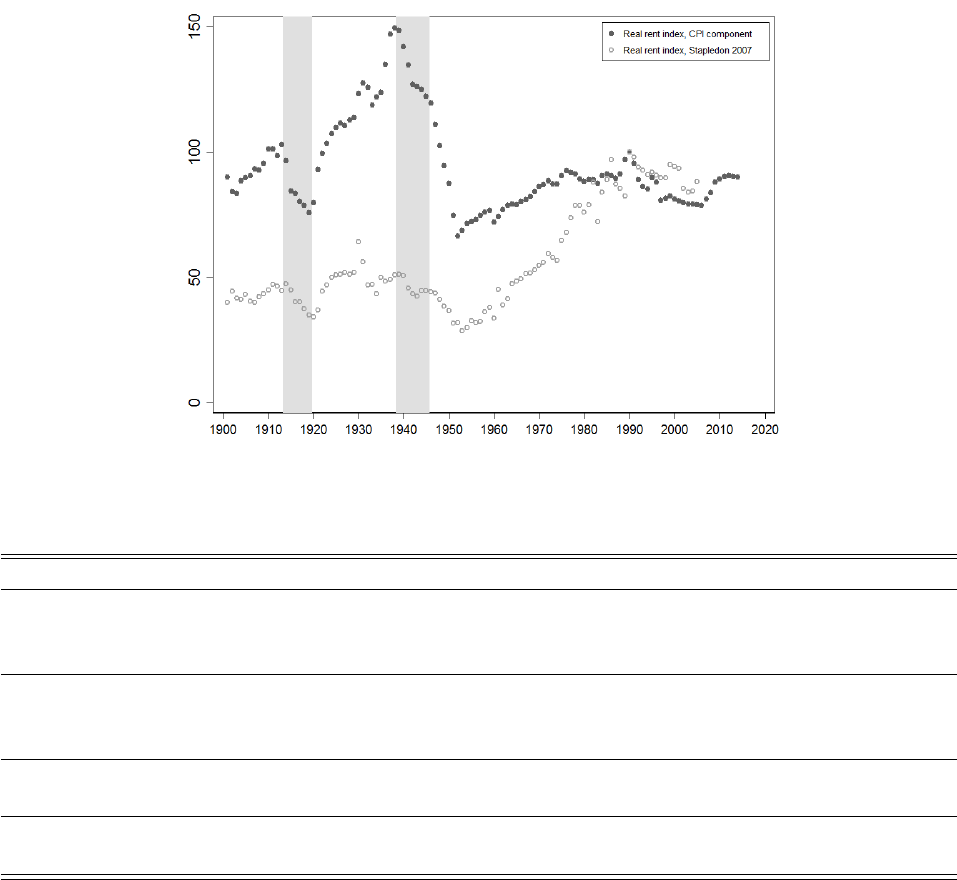
Figure A.28: Australia: comparison of real rent indices
Note: Indices, 1990=100
Table A.30: Data sources: rent index, Australia
Period Source Details
1901–1920
Australian Bureau of Statis-
tics, CPI A series as published
in Stapledon (2012)
Geographic Coverage: Urban areas; Type(s) of Dwellings:
All kinds of dwellings; Method: Average rents.
1921–1939
Australian Bureau of Statis-
tics, CPI C series as published
in Stapledon (2012)
Geographic Coverage: Urban areas; Type(s) of Dwellings:
Houses with 4-5 rooms; Method: Average rents.
1940–1989 Stapledon (2007)
Geographic Coverage: Urban areas; Type(s) of Dwellings:
All kinds of dwellings; Method: Average rents.
1990–2015
Australian Bureau of Statis-
tics, CPI series
Geographic Coverage: Urban areas; Type(s) of Dwellings:
All kinds of dwellings; Method: Stratification.
and 5-room dwellings. Note that matching the Australian house price and rent series in terms of
geographical coverage has been—by and large—possible. Both series are based on data for capital
cities since 1901. Yet, no information exists on the quality differences that may exist between the
dwellings included in the house price and the dwellings included in the rent series. The matching
of the series with respect to the exact type of dwelling covered may hence be imperfect and we need
to assume that changes in rents of different types of houses are strongly correlated.
A69

Belgium
Rent data Historical data on rents in Belgium are available for 1890–2015.
The long-run rent index relies on five different sources. First, for the years since 1984, we rely
on the CPI rent index constructed by Statistics Belgium.
72
The index covers tenants’ rents only,
i.e., imputed rents of owner-occupiers are excluded. Second, for 1977–1983, we use the rent index
published by the International Labour Organization (2014) which, in turn, is based on data provided
by Statistics Belgium. The main characteristics of these two series are summarized in Table A.31.
For earlier periods, data has been drawn from two major historical studies (Buyst, 1994; Segers,
1999) and an unpublished database by Anne Henau.
73
The rent index for seven cities
74
constructed
by Segers (1999) for 1890–1920 is based on data from two public institutions for social welfare, the
Burelen van Weldadigheid and the Burgerlijke Godshuizen. The individual city series are constructed as
chain indices so as to at least partially account for changes in the underlying sample. The combined
index is an unweighted average of the seven city indices. The rent index reported in Buyst (1994) for
1921–1938 is an unweighted average of five city indices
75
combining data drawn from studies by
Leeman (1955) and Henau (1991) (see below). The unpublished index constructed by Henau for
1939–1961 covers four cities
76
using records of local Public Welfare Committees (OCMWs).
Three alternative series for the pre-WW2 period are available. Van den Eeckhout and Scholliers
(1979) present a rent index for dwellings let by the OCMW in Brussels for 1800–1940. Henau (1991),
also using records of local OCMWs, constructs rent indices for Leuven, Luik, Ghent, and Antwerp
for 1910–1940. Leeman (1955) calculates city indices for a small sample of houses for Brussels, Gent,
and Hoei for 1914–1939. As these series, however, are less comprehensive in terms of geographic
coverage, we rely on the indices by Segers (1999) and Buyst (1994). The rent indices constructed by
Van den Eeckhout and Scholliers (1979), Leeman (1955), Buyst (1994), and Segers (1999) follow a
joint, almost identical path for the years they overlap.
The available series are spliced as shown in Table A.31. Since no time series of rents is available
for 1961–1977, the two sub-indices (1870–1961 and 1977–2013) are linked using scattered data on
rent increases between 1963 and 1982 reported by Van Fulpen (1984).
The resulting index suffers from two weaknesses. The first relates to the lack of correction for
quality changes and sample composition shifts. Second, for 1939–161, the series relies on dwellings
let by Public Welfare Committees only. It is of course possible that this particular market segment
does not perfectly mirror fluctuations in prices of other residential property types. Note further that
the matching of the Belgian house price and rent series is imperfect for two reasons. First, the house
price index is based on data for the Brussels area prior to 1950. Since the available rent data for the
pre-1950 period relies on a rather mall sample, we opted for the indices with broader geographic
coverage. Second, no information exists on the quality differences that may exist between the
dwellings included in the house price and the dwellings included in the rent series. The matching
of the series with respect to the exact type of dwelling covered may hence be imperfect and we need
to assume that changes in rents of different types of houses are strongly correlated.
72
Only in 1989, house rents were added to the CPI basket. Series sent by email, contact person is Erik
Vloeberghs, Statistics Belgium.
73
Series sent by email, contact person is Erik Buyst, KU Leuven.
74
These are Antwerp, Brugge, Brussels, Gent, Kortrijk, Leuven, Luik.
75
These are Brussels, Antwerp, Ghent, Leuven, and Luik.
76
These are Leuven, Luik, Ghent, and Antwerp.
A70

Table A.31: Data sources: rent index, Belgium
Period Source Details
1870–1920 Segers (1999)
Geographic Coverage: 7 cities ; Type(s) of Dwellings: All
kinds of dwellings; Method: Average rents.
1921–1938 Buyst (1994)
Geographic Coverage: 5 cities; Type(s) of Dwellings: All
kinds of dwellings; Method: Average rents.
1939–1961
Unpublished database by
Anne Henau.
Geographic Coverage: 4 cities; Type(s) of Dwellings: All
kinds of dwellings let by Public Welfare Committees;
Method: Average rents.
1977–1983
International Labour Organi-
zation (2014)
Geographic Coverage: Nationwide; Type(s) of Dwellings:
Non-public housing; representative sample of 1,521
apartments and houses of various sizes; Method: Aver-
age rents.
1984–2013 Statistics Belgium
Geographic Coverage: Nationwide; Type(s) of Dwellings:
Non-public housing; representative sample of 1,521
apartments and houses of various sizes; Method: Aver-
age rents.
Denmark
Rent data Historical data on rents in Denmark are available for 1870–2015.
For 1870–1926, no rent series for Denmark as a whole exists. We therefore combine three series
on rents in Copenhagen to proxy for development of rents in Denmark as a whole. First, for
1870–1911, we rely on an index of average rents for 3 room apartments—which can generally be
considered working class or lower middle class dwellings—in Copenhagen (Pedersen, 1930). Second,
for 1914–1917, the long-rent index is based on the increase in average rents of 1–8 room houses in
Copenhagen as reported in Statistics Copenhagen (1906–1966). Third, for 1918–1926, we rely on
the rent component of the cost of living index reported in Statistics Denmark (1925) and Statistics
Copenhagen (1906–1966) referring to average rents of 1-5 room houses in Copenhagen.
For 1927–1955, we use the CPI rent index as reported in the Yearbook of Labor Statistics
(International Labour Organization, various years) which for the years prior to 1947 is based on
average rents in 100 towns and in 200 towns for the years thereafter.
For 1955–1964, to the best of our knowledge, no data on rents for Denmark as a whole are
available. we therefore use the increase in average rents of 1–5 room houses in Copenhagen as
reported in Statistics Copenhagen (1906–1966) as a proxy for rent increases in Denmark.
For 1965–2015, we rely on the CPI rent index as reported in Statistics Denmark (2003), Statistics
Denmark (2015), and the yearbooks of the International Labour Organization (various years). The
available series are spliced as shown in Table A.32.
The most important limitation of the long-run rent series is the lack of correction for quality
changes and sample composition shifts. To some extent, the latter aspect may be less problematic
for 1870–1913 since the index for these years is confined to a specific market segment, i.e., 3-room
apartments. It is important to note that the matching of the Danish house price and rent series is
imperfect. While the house price index relies on data for dwellings in rural areas prior to 1938, the
rent index mostly covers urban areas. Moreover, no information exists on the quality differences
that may exist between the dwellings included in the house price and the dwellings included in the
rent series. The matching of the series with respect to the exact type of dwelling covered may hence
A71

Table A.32: Data sources: rent index, Denmark
Period Source Details
1870–1913 Pedersen (1930)
Geographic Coverage: Copenhagen; Type(s) of Dwellings:
3 room apartments; Method: Average rents.
1914–1917
Statistics Copenhagen (1906–
1966)
Geographic Coverage: Copenhagen; Type(s) of Dwellings:
1-8 room houses; Method: Average rents.
1918–1926
Statistics Copenhagen (1906–
1966); Statistics Denmark
(1925)
Geographic Coverage: Copenhagen; Type(s) of Dwellings:
1-5 room houses; Method: Average rents.
1927–1954
International Labour Organi-
zation (various years)
Geographic Coverage: Danish towns; Type(s) of
Dwellings: New and existing dwellings; Method: Aver-
age rents.
1955–1964
Statistics Copenhagen (1906–
1966)
Geographic Coverage: Copenhagen; Type(s) of Dwellings:
1-5 room houses; Method: Average rents.
1965–2015
International Labour Organi-
zation (various years); Statis-
tics Denmark (2003, 2015)
Geographic Coverage: Nationwide; Type(s) of Dwellings:
New and existing dwellings; Method: Average rents.
be inaccurate and we need to assume that changes in rents of different types of houses are strongly
correlated.
Finland
Rent data Historical data on rents in Finland are available for 1920–2015.
The long-run rent index relies on the rent component of the consumer price index as published
by the Ministry for Social Affairs (1920–1929), the International Labour Organization (various
years), and Statistics Finland (2009). The main characteristics of the rent series are summarized in
Table A.33.
The main weakness of the long-run rent series relates to the lack of correction for quality changes
and sample composition shifts. These aspects may be somewhat less problematic for the post-1964
period since the index is adjusted for the size of the dwelling. Unfortunately, due to data limitations,
the matching of the Finnish house price and rent series is imperfect. While the house price index
relies on data for Helskinki prior to 1969, the rent index also covers more urban areas but is based
on a larger city sample. In addition, no information exists on the quality differences that may exist
between the dwellings included in the house price and the dwellings included in the rent series. The
matching of the series with respect to the exact type of dwelling covered may hence be inaccurate
and we need to assume that changes in rents of different types of houses are strongly correlated.
A72

Table A.33: Data sources: rent index, Finland
Period Source Details
1920–1926
Ministry for Social Affairs
(1920–1929)
Geographic Coverage: 21 towns; Type(s) of Dwellings: All
kinds of dwellings; Method: Average rents.
1927–1965
International Labour Organi-
zation (various years)
Geographic Coverage: 21 towns (1927–1936), 36
towns (1937–1965); Type(s) of Dwellings: All kinds
of dwellings; Method: Average rents.
1964–2015 Statistics Finland (2009)
Geographic Coverage: Nationwide; Type(s) of Dwellings:
All kinds of dwellings; Method: Average rents per
sqm.
France
Rent data Historical data on rents in France are available for 1870–2015.
The long-run rent index relies on two main sources. For 1870–1948, we use an average rent
index for Paris constructed by Marnata (1961). The index is based on a sample of more than 10,000
dwellings. Data come from lease management books from residential neighbourhoods in Paris
and mostly refer to dwellings of relatively high quality. After 1949, we rely on national estimates,
measured by the rent component of the CPI from the Statistics France (2015). The index covers
tenants’ rents only, i.e., imputed rents of owner-occupiers are excluded.
For the years prior to 1949, data on rents are also available for Paris (1914–1962) from the
yearbooks of the International Labour Organization (various years). Reassuringly, the series by
Marnata (1961) and the series published by the International Labour Organization (various years)
are highly correlated for the years the overlap.
77
In addition, the International Labour Organization
(various years) also presents a series for 45 departments for 1930–1937. For the years the series for
Paris and the series for 45 departments overlap, they show similar rent increases. Note, however,
that the house price index also relies on data for Paris only prior to 1936. For this reason, we use the
Paris series throughout for the years prior to 1949 (Marnata, 1961). The available series are spliced
as shown in Table A.34.
Table A.34: Data sources: rent index, France
Period Source Details
1870–1948 Marnata (1961)
Geographic Coverage: Paris; Type(s) of Dwellings: High-
quality existing dwellings; Method: Average rents.
1949–2015
Statistics France (2015) as pub-
lished in Conseil General de
l’Environnement et du Devel-
oppement Durable (2013)
Geographic Coverage: Nationwide; Type(s) of Dwellings:
All kinds of dwellings; Method: Average rents.
The most important drawback of the long-run rent series is again the lack of correction for
quality changes and sample composition shifts. Both aspects may be less problematic for the
pre-WW2 years since the rent index is confined to a specific market segment, i.e., high-quality
existing dwellings in Paris. Note further that the matching of the French house price and rent series
77
Correlation coefficient of 0.98.
A73

in terms of geographical coverage has been generally possible. Both series are based on data for
Paris prior to WW2 and on data for France as a whole for the second half of the 20th century. Yet,
no additional information exists on the quality differences that may exist between the dwellings
included in the house price and the dwellings included in the rent series. The matching of the series
with respect to the exact type of dwelling covered may hence be imperfect and we need to assume
that changes in rents of different types of houses are strongly correlated.
Germany
Rent data Historical data on rents in Germany are available for 1870–2015.
The earliest data on rents in Germany comes from Hoffmann (1965). Hoffmann (1965) presents
a rent index for 1850–1959. For 1850–1913, Hoffmann (1965) calculates a rent index using data on
long-term interest rates and the replacement value of residential buildings, hence assuming that
rents only depend on replacement costs and interest rates.
There are two additional sources on rents prior to WW1, both providing data on average rents
in (parts of) Berlin. Bernhardt (1997) presents data on average rents for 1- and 2-room apartments
between 1890 and 1910, and for 1-6 room apartments (separately for each size) in Berlin-Wilmersdorf
between 1906–1913. Kuczynski (1947) provides an average rent based on scattered data for a number
of larger German cities
78
for 1820–1913. Both sources, however, only report data for some years, not
for the full period. For the 1895–1913 period, Kuczynski (1947) suggests a substantially stronger
rise in nominal rents (42 percent) when compared to the index constructed by Hoffmann (1965)
(22 percent). According to Hoffmann (1965), this can be explained by the fact that the index by
Kuczynski (1947) does not account for quality improvements and may hence be upwardly biased.
To be precise, the same bias should be present in Bernhardt (1997) as the data also refers to average
rents. Yet, during the period they overlap (1890–1910), the series by Hoffmann (1965) and Bernhardt
(1997) show about the same increase in rents while Kuczynski (1947) again suggests a significantly
steeper rise.
For the years after 1913, Hoffmann (1965) relies on the rent component of the consumer price
index as published by the Statistics Germany (1924–1935) (for 1913–1934) and Statistics Germany
(various years) (for 1934–1959). The CPI rent index is a weighted average of rents in 72 municipalities
(with population used as weights) including small, medium, and large cities. It is based on data
for working class family dwellings, typically 2 rooms with a kitchen. The index refers to existing
dwellings, i.e., built prior to WW1, throughout. This, however, should not underestimate increases
in rents given that dwellings built after WW1 only accounted for about 15 percent of all rental
dwellings in 1934 (Statistics Germany, 1925, 1934).
Statistics Germany (various years) reports the CPI rent index for the years since 1948. The
index relies on a survey of households and landlords and covers 3-4 room apartments in more
than 100 German municipalities. Subsidized apartments are included. The index is calculated as a
matched-models index and adjusts for major renovations (Angermann, 1985; Kurz and Hofmann,
2004).
79
The long-run index is constructed as shown in the Table A.35. For 1870–1912, we use the rent
index constructed by Hoffmann (1965). For the years since 1913, we rely on the rent component of
the consumer price index as published in Statistics Germany (1924–1935) and Statistics Germany
78
These include Berlin, Halle, Hamburg, Leipzig, Breslau, Dresden, Magdeburg, Barmen, Chemnitz, Jena,
L
¨
ubeck, Magdeburg, Strassburg, and Stuttgart.
79
The matched models method aims to control for quality changes by matching rents collected for a sample
of models (or varieties of selected apartments) in a baseline period with rents of these same matched models
in subsequent periods (Kurz and Hofmann, 2004).
A74

Table A.35: Data sources: rent index, Germany
Period Source Details
1870–1912 Hoffmann (1965)
Geographic Coverage: Nationwide; Type(s) of Dwellings:
All kinds of dwellings; Method: Imputed rent based
on long-term rates and replacement values of residen-
tial buildings.
1913–1947
Statistics Germany (1924–
1935, various years)
Geographic Coverage: 72 municipalities; Type(s) of
Dwellings: Working class dwellings; Method: Weighted
average rents.
1948–2015
Statistics Germany (various
years)
Geographic Coverage: Nationwide; Type(s) of Dwellings:
3-4 room apartments; Method: Matched models index.
(various years).
The long-run rent index has two main weaknesses. First, for the years prior to WW2, the index
neither controls for quality changes nor for sample composition shifts. The latter aspect may be
less of a problem for the interwar period ince the index is confined to a specific and presumably
relatively homogeneous market segment, i.e., working class dwellings. Second, data prior to WW1
are not based on actual observed rents but have been estimated using data in replacement values
and long-term interest rates.
Matching the German house price and rent series in terms of geographical coverage has been
largely possible for the post-WW2 period. In both cases, data refers to Germany as a whole or at
least covers a substantial share of the German housing market. This is unfortunately not the case for
the pre-WW2 period. House price data for the pre-WW1 years only reflects trends in Berlin and
Hamburg but the rent index covers all of Germany. For the interwar period, the house price index
refers to urban real estate while the rent index provides a somewhat broader coverage. Moreover,
no information on differences between the characteristics of the dwellings in the house price and
the dwellings included in the rent index exist. The matching of the series with respect to the exact
type of dwelling covered may hence be imperfect and we need to assume that changes in rents of
different types of houses are strongly correlated.
Italy
House price data Historical data on house prices in Italy are available for 1927–2015.
We rely on the long-run house price index constructed by Cannari and D’Alessio (2016) through-
out. For 1927–1941, Cannari and D’Alessio (2016) rely on a series published in Statistics Italy’s
statistical yearbooks which, in turn, are based on house price indices constructed by the Federazione
Nazionale Fascista di Proprietari di Fabbricati. The series is based on data for existing dwellings and
reflects average transaction prices per room. For the years since 1966, the index relies on average
transaction prices per square meter of new and existing dwellings in provincial capitals before 1997
and average transaction prices per square meter of new and existing dwellings in municipal districts
after 1998. Data are drawn from publications of the Consulente Immobiliare.
Unfortunately, no price data are available for the period 1941–1961. To obtain a long-run index,
Cannari and D’Alessio (2016) link average prices per room in eight cities (Turin, Genoa, Milan,
Trieste, Bologna, Rome, Naples and Palermo) in 1941 with average transaction prices per room
in these cities in 1966 assuming an average room size of 18 square meters. To obtain an annual
house price series for 1941–1966, Cannari and D’Alessio (2016) interpolate using data on year-to-year
A75

Table A.36: Data sources: rent index, Italy
Period Source Details
1927–1937
International Labour Organi-
zation (various years)
Geographic Coverage: Milan; Type(s) of Dwellings: All
kinds of dwellings; Method: Average rents.
1938–1955
International Labour Organi-
zation (various years)
Geographic Coverage: 62 cities; Type(s) of Dwellings: All
kinds of dwellings; Method: Average rents.
1956–2015
International Labour Organi-
zation (various years)
Geographic Coverage: 92 cities; Type(s) of Dwellings: All
kinds of dwellings; Method: Average rents.
increases in construction costs.
Rent data
Historical data on rents in Italy are available for 1927–2015. The long-run index relies
on the CPI rent component throughout and spliced as shown in Table A.36. Data are drawn from
International Labour Organization (various years) and reflect average rents. The index covers
tenants’ rents only, i.e., imputed rents of owner-occupiers are excluded. Due to data availability,
geographic coverage varies over time. The series reflects average rents in Milan (pre-1938), in 62
cities (1938–1955), and 92 cities (post-1955). The series has a gap between 1939 and 1945. Since,
to the best of the author’s knowledge, no data on rents are available for this period, we link the
pre-1939 and post-1945 series assuming that rents increased in lockstep with house prices, i.e., by a
factor of about 1.6 adjusted for inflation.
The single most important drawback of the long-run rent series is again the lack of correction
for quality changes and sample composition shifts. Moreover, the matching of the Italian house
price and rent series is unfortunately imperfect. While the rent index is only based on data for
Milan before 1937 and for urban areas more generally thereafter, the house price index offers a
more comprehensive geographic coverage. Second, no additional information exists on the quality
differences that may exist between the dwellings included in the house price and the dwellings
included in the rent series. The matching of the series with respect to the exact type of dwelling
covered may hence be inaccurate and we need to assume that changes in rents of different types of
houses are strongly correlated.
Japan
Rent data Historical data on rents in Japan are available for 1931–2015.
The long-run rent index relies on the rent component of the consumer price index throughout. For
1931–1946, the CPI rent index is reported in the yearbooks of the International Labour Organization
Table A.37: Data sources: rent index, Japan
Period Source Details
1931–1946
International Labour Organi-
zation (various years)
Geographic Coverage: Urban areas; Type(s) of Dwellings:
Wooden houses; Method: Average rents.
1947–2015 Statistics Japan (2012)
Geographic Coverage: Nationwide; Type(s) of Dwellings:
Small and medium-sized wooden houses, non-
wooden houses; Method: Average rents per sqm.
A76

(various years). The index covers 13 cities through 1936 and 24 cities thereafter and refers to average
rents of wooden houses.
For the years since 1947, the rent component of the CPI is published by Statistics Japan (2012).
Data are collected as part of the Retail Price Survey in more than 1200 districts. The rent index covers
small and medium-sized wooden houses as well as non-wooden houses and refers to the average
rent per sqm. Subsidized dwellings are included. Imputed rents for owner-occupiers are included
since 1970 (International Labour Organization, 2013; Shiratsuka, 1999). The available series are
spliced as shown in Table A.37.
The most important limitation of the long-run rent index is the lack of correction for quality
improvements and sample composition shifts. Particularly the latter aspect may be somewhat less
problematic for the post-WW2 years since the series controls for the size of the dwelling. Matching
the Japanese house price and rent series in terms of geographical coverage has been partly possible.
For the pre-WW2 years both series are based on data for urban dwellings only. Yet for the second
half of the 20th century, the rent index offers a somewhat broader coverage. In addition, the house
price index reflects residential land prices inly whereas the rent index naturally is based on rents for
dwellings.
Netherlands
Rent data Historical data on rents in the Netherlands are available for 1870–2015.
We rely on the long-run rent index constructed by Ambrose et al. (2013) throughout. The series
is based on two main sources. For 1870–1913, it uses the rent component of the cost of living index
calculated by Van Riel (2006). This pre-WW1 series refers to imputed rents of owner-occupied
houses. Data comes from tax authorities and are estimated relying on average rents of comparable
renter-occupied dwellings in the vicinity. For the post-WW1 period, Ambrose et al. (2013) draw data
from various publications of Statistics Netherlands. Statistics Netherlands collects data through
annual rent surveys and covers more than two thirds of Dutch municipalities. The nationwide index
is a weighted average of rent changes by region. It is adjusted for the effect of major renovations
(Statistics Netherlands, 2010, 2014). The main characteristics of the series are summarized in A.38.
Table A.38: Data sources: rent index, Netherlands
Period Source Details
1870–1913
Van Riel (2006) as published
in Ambrose et al. (2013)
Geographic Coverage: Nationwide; Type(s) of Dwellings:
All kinds of dwellings; Method: Average rents.
1914–2015
Statistics Netherlands as pub-
lished in Ambrose et al. (2013)
Geographic Coverage: Nationwide ; Type(s) of Dwellings:
All kinds of dwellings; Method: Weighted average
rents.
One alternative series for the pre-WW2 period is available which can be used as comparative
to the index presented by Ambrose et al. (2013). For 1909–1944, Statistics Amsterdam (1916–1944)
reports average rents of working class in Amsterdam that have not undergone significant alteration or
renovation.
80
Both series, i.e., the index constructed by Ambrose et al. (2013) and the series published
80
For 1909 to 1928, Statistics Amsterdam (1916–1944) provides only scattered evidence, i.e., data on 1909,
1912, 1918. The series are continuous after 1928. Statistics Amsterdam (1916–1944) also presents data on
average rents of middle class dwellings. Yet, this series is based on a significantly smaller sample compared
to the one for working class dwellings. According to the 1936–37 yearbook, for example, the data covers 1719
working class dwellings but only 110 middle class dwellings.
A77

Table A.39: Data sources: rent index, Norway
Period Source Details
1871–1978
Rent index underlying by the
price to rent ratio reported in
Jurgilas and Lansing (2012)
Geographic Coverage: Urban areas; Type(s) of Dwellings:
All kinds of dwellings; Method: Weighted average
rents.
1979–2013 Statistics Norway (2015)
Geographic Coverage: Urban areas; Type(s) of Dwellings:
All kinds of dwellings; Method: Weighted average
rents.
in the Statistics Amsterdam (1916–1944) are strongly correlated for the years they overlap.
81
This is
reassuring since the long-run house price index only relies on data for Amsterdam prior to 1970
(Knoll et al., 2017).
The main weakness of the long-run rent series is again the lack of correction for quality changes
and sample composition shifts. Moreover, it is important to note that the matching of the Dutch
rent and house price series is unfortunately imperfect. This is mainly for two reasons. First, while
the house price index relies on data for Amsterdam only prior to 1970, the rent index offers a
broader geographical coverage. Yet, the evidence suggests that at least during the first half of the
20th century, rents in Amsterdam and the rest of the country moved closely together. Second, no
information exists on the extent to which characteristics of the dwellings included in the house price
index differ from those included in the rent index. The matching of the series with respect to the
exact type of dwelling covered may hence be inaccurate and we need to assume that changes in
rents of different types of houses are strongly correlated.
Norway
Rent data Historical data on rents in Norway are available for 1871–2015.
For the period 1871–1978, the long-run index relies on a rent index presented by Jurgilas and
Lansing (2012).
82
The series uses the rent component of the consumer price index since 1914
83
which
for the years since 1920 is based on data for 26 towns and 5 industrial centers across Norway and on
data for Oslo only for 1914–1919. For the pre-WW1 period, the index is constructed as a weighted
average of average rents in 32 cities and towns.
84
Data comes from consumption surveys conducted
by Statistics Norway.
For the years prior to WW1, an additional series is available in Statistics Oslo (1915) covering
average expenditures for rents of a family of four in Oslo for 1901–1914. Both series, i.e., the rent
index by Jurgilas and Lansing (2012) and the data published in Statistics Oslo (1915), depict a similar
trend for the years they overlap. For 1979–2015, the long-run rent index relies on the rent component
of the consumer price index as published by Statistics Norway (2015). The series is based on a
sample of about 2000 rented dwellings that are classified according to their age. The aggregate index
is calculated as a weighted average rent index (Statistics Norway, 1991). The available series are
spliced as shown in Table A.39.
81
Correlation coefficient of 0.92 for 1909–1940.
82
The series were constructed by Ola Grytten, Norwegian School of Economics, and sent by email. Contact
person is Marius Jurgilas, Norges Bank.
83
See for example the rent index for 1914–1948 as reported in Statistics Norway (1949, Table 185) and for
1924–1959 as reported in Statistics Norway (1978, Table 287) for comparison.
84
Population is used as weights.
A78

The main weakness of the long-run rent series is the lack of adjustment for quality changes and
sample composition shifts. On the upside, the matching of the Norwegian house price and rent
series in terms of geographic coverage has been generally possible. Both series rely on data for
urban areas. Yet the coverage of the rent series is relatively more comprehensive. Unfortunately, no
information exists on the quality differences that may exist between the dwellings included in the
house price and the dwellings included in the rent series. The matching of the series with respect to
the exact type of dwelling covered may hence be imperfect and we need to assume that changes in
rents of different types of houses are strongly correlated.
Portugal
House price data Historical data on house prices in Portugal are available for 1931–2015.
We rely on the long-run house price index constructed by Azevedo (2016). The author relies
on the total number and value of transactions of new and existing real estate as reported to the
land registry and collected by the Ministry of Justice to construct a weighted average house price
index.
85
The number of transactions is used as weights. The data cover Portugal as a whole and are
published in yearbooks and monthly bulletins by Statistics Portugal.
86
Rent data Historical data on rents in Portugal are available for 1948–2015.
The long-run rent index is based on the rent component of the consumer price index as
published in International Labour Organization (various years). Data are collected by personal or
phone interviews. The index covers tenants’ rents only, i.e., imputed rents of owner-occupiers are
excluded. The main characteristics of the series are summarized in Table A.40.
The main weakness of the long-run rent series is again the lack of correction for quality changes
and sample composition shifts. Moreover, the matching of the Portuguese house price and rent series
is unfortunately imperfect. While the rent index is only based on data for urban areas throughout,
the house price index consistently offers a more comprehensive geographic coverage. Second,
no additional information exists on the quality differences that may exist between the dwellings
included in the house price and the dwellings included in the rent series. The matching of the series
with respect to the exact type of dwelling covered may hence be inaccurate and we need to assume
that changes in rents of different types of houses are strongly correlated.
Table A.40: Data sources: rent index, Portugal
Period Source Details
1948–2015
International Labour Organi-
zation (various years)
Geographic Coverage: 1948–1950: Lisbon, 1951–1953:
Lisbon and Porto, 1954–1961: 5 cities, 1962–1976: 6
cities, 1976–2015: 41 cities; Type(s) of Dwellings: All
kinds of dwellings; Method: Average rents.
85
While the data also includes commercial real estate, Azevedo (2016) argues based on evidence presented
by Evangelista and Teixeira (2014) that commercial property transactions only account for a small share of all
transactions recorded.
86
Sources are the various issues of the Annu
´
ario estat
´
ıstico de Portugal, the Estat
´
ısticas Monet
´
arias e Financeiras,
and the Boletins Mensais de Est
´
ıstica.
A79

Spain
House price data Historical data on house prices in Spain are available for 1900–2015.
We rely on the long-run house price index constructed by Amaral (2016) throughout. The author
combines data from various sources to arrive at a long-run index. For 1900–1904, the series are
based on average transaction prices of new and existing dwellings in Madrid and Barcelona. Data
are collected from newspaper advertisements.
87
For 1905–1933, Amaral (2016) uses an average
transaction price index constructed by Carmona et al. (2017) based on data for all kinds of existing
dwellings drawn from the Registrars Yearbooks. For 1934–1975, Amaral (2016) uses transaction price
data for new and existing dwellings collected from the Registrars Yearbooks to construct a weighted
average house price index covering Spain as a whole. For 1976–1986, the authors relies on a series
of average transaction prices per square meter of new dwellings in Madrid constructed by the
real estate agency Tecnigrama. For 1987–1994, the series is based on weighted average transaction
prices per square meter of new and existing dwellings collected by the Spanish Ministry of Housing
covering Spain as a whole. For the years after 1995, he relies on a nationwide index published by
the Spanish Ministry of Public Works and Transports which reflects average transaction prices per
square meter for new and existing dwellings.
Rent data Historical data on rents in Spain are available for 1870–2015.
The earliest source for data on rents in Spain is Maluquer de Motes (2013) covering average
rents of all kinds of dwellings in Catalunya between 1870 and 1933. Data are drawn from archival
records and from the Registrars Yearbooks. For the years since 1935, the long-run rent index is based
on the CPI rent index as published in the yearbooks of the International Labour Organization
(various years) and Statistics Spain (2016). The index covers tenants’ rents only, i.e., imputed rents
of owner-occupiers are excluded. The available series are spliced as shown in Table A.41.
The single most important drawback of the long-run rent series is again the lack of correction for
quality changes and sample composition shifts. Moreover, the matching of the Spanish house price
and rent series is unfortunately imperfect. While the rent index is only based on data for urban
areas before 1976, the house price data covers the whole of Spain. The opposite is true for the years
between 1987 and 1994. After 1994, both series provide nationwide coverage. Second, no additional
information exists on the quality differences that may exist between the dwellings included in the
house price and the dwellings included in the rent series. The matching of the series with respect to
the exact type of dwelling covered may hence be inaccurate and we need to assume that changes in
rents of different types of houses are strongly correlated.
Table A.41: Data sources: rent index, Spain
Period Source Details
1870–1936 Maluquer de Motes (2013)
Geographic Coverage: Catalunya; Type(s) of Dwellings:
All kinds of dwellings; Method: Average rents.
1937–1976
International Labour Organi-
zation (various years)
Geographic Coverage: 1937–1956: 50 cities; 1957–
1976: Nationwide; Type(s) of Dwellings: All kinds of
dwellings; Method: Weighted average rents.
1977–2015 Statistics Spain (2016)
Geographic Coverage: Nationwide; Type(s) of Dwellings:
All kinds of dwellings; Method: Weighted average
rents.
87
On average, more than 120 observations per year were collected.
A80

Table A.42: Data sources: rent index, Sweden
Period Source Details
1882–1913 Myrdal (1933)
Geographic Coverage: Stockholm; Type(s) of Dwellings:
All kinds of dwellings; Method: Average rents per
room.
1914–1931 Myrdal (1933)
Geographic Coverage: Urban areas; Type(s) of Dwellings:
All kinds of dwellings; Method: Average rents per
room.
1932–1959
Statistics Sweden (1933, 1961)
Geographic Coverage: Urban areas; Type(s) of Dwellings:
All kinds of dwellings; Method: Average rents.
1960–2015
International Labour Organi-
zation (various years)
Geographic Coverage: Nationwide; Type(s) of Dwellings:
All kinds of dwellings; Method: Average rents.
Sweden
Rent data Historical data on rents in Sweden are available for 1883–2015.
The earliest source for data on rents in Sweden is Myrdal (1933). For 1883–1913, Myrdal
(1933) reports an index of average rents per room in Stockholm based on data published in the
Stockholm list of houses to let (Stockholms hyreslista), a publication advertising dwellings to let edited
by the Stockholms Intecknings Garanti Aktiebolag. For 1913/14–1931, Myrdal (1933) reports the rent
component of the cost of living index of the Social Board based on housing surveys and covering
working or lower middle class dwellings in more than 40, predominantly urban, municipalities
(Statistics Sweden, 1933).
For the years since 1932, the long-run rent index is based on the rent component of the consumer
price index as published in International Labour Organization (various years); Statistics Sweden
(1961) and Statistics Sweden (1933). The main characteristics of this series are summarized in
Table A.42. The available series are spliced as shown in Table A.42.
The most important drawback of the long-run rent series is again the imperfect of correction
for quality changes and sample composition shifts. Both aspects may be less problematic for years
prior to 1931 since the rent index reflects average rents per room. Note further that the matching
of the Swedish house price and rent series in terms of geographical coverage has been largely
possible. For the years prior to 1960, both series are based on for urban areas. For the years after
1960, however, the rent index provides a more comprehensive geographical coverage compared to
the house price series. Moreover, no additional information exists on the quality differences that
may exist between the dwellings included in the house price and the dwellings included in the rent
series. The matching of the series with respect to the exact type of dwelling covered may hence be
imperfect and we need to assume that changes in rents of different types of houses are strongly
correlated.
Switzerland
Rent data Historical data on rents in Switzerland are available for 1890–2015.
The earliest source for rent data in Switzerland is Curti (1981). Curti (1981) separately calculates
indices of rents for 3-room apartments for five cities (Zurich, Winterthur, Bern, Biel, and Basel)
and the Zurich highlands for 1890–1910. Data are collected from newspaper advertisements.
88
88
The author collects about 30 advertisements per year from Tagblatt der Stadt Z
¨
urich.
A81

Table A.43: Data sources: rent index, Switzerland
Period Source Details
1890–1919 Curti (1981)
Geographic Coverage: Zurich; Type(s) of Dwellings: 3
room apartment; Method: Average rent.
1920–1939 Statistics Zurich (1946–1962)
Geographic Coverage: Zurich; Type(s) of Dwellings: 3
room apartment; Method: Average rent.
1940–2015 Statistics Switzerland (2015)
Geographic Coverage: Nationwide; Type(s) of Dwellings:
New and existing 1-5 room apartments; Method:
Weighted average rent, adjusted for quality changes.
For 1908–1920, Curti (1981) relies on data from the city of Zurich housing authority (as collected
by Statistics Zurich). Curti (1981) adjusts the 3-year moving average of the spliced series so as to
conform with the average rents of 3 room apartments according to the housing censuses of 1896,
1910 and 1920. Since for the years prior to 1930 the house price index for Switzerland is based on
data for Zurich only (Knoll et al., 2017), we use the city index for Zurich for 1890–1910 to construct
a long-run rent index.
For 1920–1939, we rely on the index of average rents for 3 room apartments in six working class
neighborhoods as published by Statistics Zurich (1946–1962).
89
For 1940–2015, the long-run index is based on the rent component of the consumer price index as
published by Statistics Switzerland (2015). The series refers to new and existing 1-5 room apartments
in 89 municipalities. Data are collected through surveys of households and the index is calculated
as a weighted average.
90
The index is adjusted for major quality changes. The index covers tenants’
rents only, i.e., imputed rents of owner-occupiers are excluded. The available series are spliced as
shown in Table A.43.
The main weakness of the long-run rent series is the lack of adjustment for quality changes for
the pre-WW2 period. Sample composition shifts are unlikely to affect the index since data reflects
the rent of 3-room apartments only. Note further, that matching the rent and the house price series
with respect to geographic coverage has been largely possible. Both series before the 1930s are based
on data for Zurich and for the whole of Switzerland after 1940. Yet, no additional information exists
on the quality differences that may exist between the dwellings included in the house price and the
dwellings included in the rent series. The matching of the series with respect to the exact type of
dwelling covered may hence be imperfect and we need to assume that changes in rents of different
types of houses are strongly correlated.
United Kingdom
House price data
We extend the historical house price series in Knoll et al. (2017) back to 1895
using the new house price index for London constructed by Samy (2015). The index is based on
transaction-level data from the London Auction Mart, and constructed using a hedonic regression
controlling for quality changes over time.
Rent data
Historical data on rents in the United Kingdom are available for 1895–2015. For
1895–1899, we rely on the rental index from the London Auction Mart data constructed by Samy
89
These are Aussersihl, Industriequartier, Wiedikon, Wipkingen, and Unter- and Oberstrass.
90
The number of the different kinds of apartments (new and existing) is used as weights.
A82
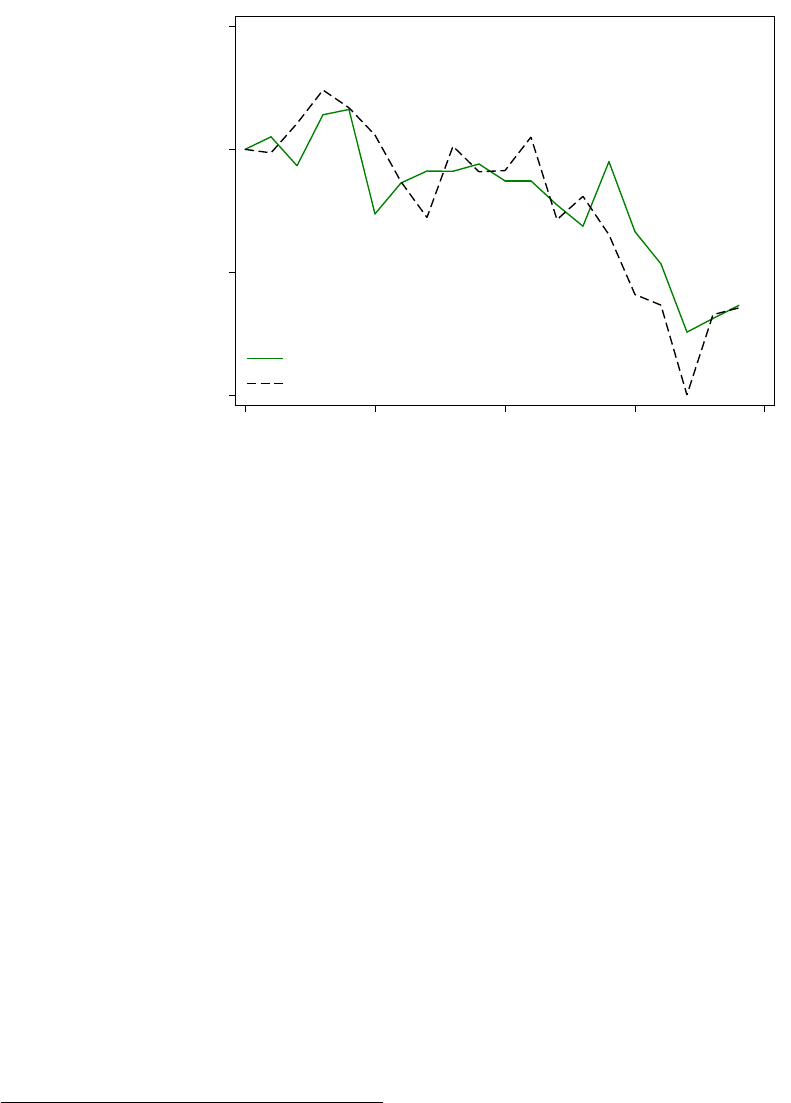
Figure A.29: Comparison of pre-WW1 rental indices for the UK
.9 .95 1 1.05
Index: 1895 = 1
1895 1900 1905 1910 1915
Lewis and Weber, 1965 (nationwide)
Samy, 2015 (London)
Note: Real rental indices. The index in Lewis and Weber (1965) has nationwide coverage, but potentially does
not control for quality adjustments. The index in Samy (2015) is for London only, but controls for quality
changes.
(2015), to be consistent with the house price series. For 1900–1914, we rely on an index of average
rents by Lewis and Weber (1965).
91
The series is based on property valuations for the Inhabited House
Duty, a tax applied to residential houses with an annual rental value of 20 GBP or more. The index
may hence include an element of quality increase as well as a true increase in rents, but comparison
with the Samy (2015) quality-adjusted index for London, shown in Figure A.29 suggests that the
differences are very small.
For 1914–1938, the long-run rent index is based on the rent component of the official cost of
living index compiled by the Ministry of Labor (as reported by Holmans (2005) and International
Labour Organization (various years)). The series refers to average rents of working class dwellings
in more than 500 towns. It is worth noting that the index reflects not only increases in rent proper
but also in domestic rates.
92
The index lacks annual rental data during WW1, so we interpolate
the annual rental changes during WW1 using the London-only index in Samy (2015), for years
1915–1919.
For the post-WW2 period, we use the rent component of the consumer price index as published
in the yearbooks of the International Labour Organization (various years). Data are collected
through surveys and cover also subsidized dwellings. For the years since 1956, the series includes
expenditures on maintenance and repair. To the best of our knowledge, no data on rents exist
between 1946 and 1954. To link the pre- and post-WW2 series, we use scattered data on average rents
of houses and flats let by local authorities 1936–1957 presented by Holmans (2005). The available
91
In principle, the Lewis and Weber (1965) series is available back to 1874, and closely tracks the London
index assembled by Samy (2015) from the Auction Mart data.
92
According to Holmans (2005), in the housing market for working class families, dwellings were generally
let at a rent that included domestic rates. Landlords recouped the rates they paid to local authorities through
the rents they charged. While the dwellings may have thus been subject to rent controls according to the Rent
Restriction Acts, increases in total rents to recoup increases in domestic rates were not limited according to
these acts.
A83

Table A.44: Data sources: rent index, United Kingdom
Period Source Details
1895–1899 Samy (2015)
Geographic Coverage: London; Type(s) of Dwellings: All
kinds of dwellings; Method: Hedonic regression.
1900–1913 Lewis and Weber (1965)
Geographic Coverage: Nationwide; Type(s) of Dwellings:
All kinds of dwellings; Method: Average rents.
1914–1946
Rent component of official
consumer price index as pub-
lished in Holmans (2005) and
International Labour Organi-
zation (various years)
Geographic Coverage: Urban areas; Type(s) of Dwellings:
Working class dwellings; Method: Average rents. Note:
We interpolate annual changes during 1915–1919
using the London index in Samy (2015).
1954–2013
Rent component of official
consumer price index as pub-
lished in International Labour
Organization (various years)
Geographic Coverage: Nationwide; Type(s) of Dwellings:
All kinds of dwellings; Method:
series are spliced as shown in Table A.44.
The most important limitation of the long-run rent series is the lack of correction for quality
changes and sample composition shifts. As noted above, the latter aspect may be less of a problem for
the years 1914–1946 since the index is confined to a specific and presumably relatively homogeneous
market segment, i.e., working class dwellings. The matching of the U.K. house price and rent series
in terms of geographical coverage has been largely possible. Both series are based on data for the
whole of the U.K. after WW2. The house price series reflects urban developments prior to 1930 as
does the rent index during the interwar period. Yet, the rent series provides a more comprehensive
coverage prior to WW1 compared to the house price series. Moreover, to the best of our knowledge,
no information exists on the quality differences that may exist between the dwellings included in the
house price and the dwellings included in the rent series. The matching of the series with respect to
the exact type of dwelling covered may hence be imperfect and we need to assume that changes in
rents of different types of houses are strongly correlated.
United States
Rent data Historical data on rents in the United States are available for 1890–2015.
For the 1890–1914, the long-run rent index relies on the rent component of the NBER cost of
living index for manufacturing wage earners constructed by Rees (1961). The index is based on
newspaper advertisements in six cities
93
and is confined to working class dwellings. The aggregate
series is a simple average of the city indices. The index controls for differences in size but not for
other potential sources of quality differences.
Data for 1915–1940 is available from U.S. Bureau of Labor Statistics (2015) which, in turn, are
based on the Bureau of Labor Statistics’ rental survey of landlords. The index is based on data
on average rents for working class dwellings in 32 shipbuilding and other industrial centers for
1915–1935 and 42 cities with population over 50,000 thereafter. The series is based on comparisons
of average rents for identical housing units (Bureau of Labor Statistics, 1966). Yet, several authors
made the case for a downward bias of the historical U.S. Bureau of Labor Statistics (2015) rent series
93
These are New York, Chicago, Philadelphia, Boston, Cincinnati, St. Louis.
A84

Table A.45: Data sources: rent index, United States
Period Source Details
1890–1914 Rees (1961)
Geographic Coverage: Urban areas; Type(s) of Dwellings:
All kinds of working class dwellings; Method: Stratifi-
cation.
1915–1940
U.S. Bureau of Labor Statis-
tics (2015), adjusted using es-
timates by Gordon and van
Goethem (2007)
Geographic Coverage: Urban areas; Type(s) of Dwellings:
Working class dwellings; Method: Average rents.
1941–1995 Crone et al. (2010)
Geographic Coverage: Urban areas; Type(s) of Dwellings:
All kinds of dwellings; Method: Stratification.
1996–2015
U.S. Bureau of Labor Statistics
(2015)
Geographic Coverage: Urban areas; Type(s) of Dwellings:
All kinds of dwellings; Method: Stratification.
(Crone, Nakamura, and Voith, 2010; Gordon and van Goethem, 2007), e.g., due to aging bias or
omission of new units. To adjust for the downward bias for 1915–1940, we use estimates by Gordon
and van Goethem (2007).
94
For 1941–1995, the long-run index relies on the revised CPI for tenant rents constructed by Crone
et al. (2010). Crone et al. (2010) argue that for the post-1995 period, tenant rents should be correctly
calculated in the original U.S. Bureau of Labor Statistics (2015) series. For the post-1995 years, we
therefore use the CPI rent index as published by U.S. Bureau of Labor Statistics (2015). The available
series are spliced as shown in Table A.45.
Compared to data for other countries, the U.S. rent series is relatively well adjusted for quality
changes and sample composition shifts. Also, matching the house price and rent series with respect
to geographical coverage has been largely possible. Both series rely on data for urban areas prior to
WW2. Yet, while this is still true for the post-WW2 rent series, the house price index provides a
more comprehensive coverage during that period. Apart from that, to the best of our knowledge, no
information exists on the quality differences that may exist between the dwellings included in the
house price and the dwellings included in the rent series. The matching of the series with respect to
the exact type of dwelling covered may hence be imperfect and we need to assume that changes in
rents of different types of houses are strongly correlated.
94
Gordon and van Goethem (2007) estimate a CPI bias of -0.86 percent per year for 1914–1935 and of -1.04
percent for 1935–1960.
A85

X. Equity and bond returns
This section details the sources used to construct the total equity and bond return series in this
paper.
Australia
Table A.46: Data sources: equity and bond returns, Australia
Year Data source
Equity returns:
1870–1881
Sum of capital gains, dividends and gains or losses from stock operations for Aus-
tralian shares listed in London, weighted by market capitalization. Constructed
from Investor Monthly Manual (IMM) data, various issues (
http://som.yale.edu/
imm-issues).
1882–2008
With-dividend return from Brailsford, Handley, and Maheswaran (2012). Note: we
use these series rather than the alternative from NERA Economic Consulting (2015)
due to greater consistency with the IMM historical series.
2009–2013 Total equity return from NERA Economic Consulting (2015).
2014–2015 ASX 200 total return index, from RBA Statistics Table F7.
Bond returns:
1900–1925
Total return on Australian government bonds listed in Sydney from Moore (2010b).
Converted from pound sterling to Australian Dollar.
1926–1968
Total return on Australian bonds listed in London. Data for 1926–1929 are from
Meyer, Reinhart, and Trebesch (2015), shared by Josefin Meyer. Data for 1930–1968
were constructed by the authors.
1969–1987
Implied capital gain + yield from the 10-year government bond yield series pub-
lished by the Reserve Bank of Australia. Capital gain estimated from movements in
yields, using monthly yield data. Spliced with London listings data over 1968–1969.
1988–2015
Average of total returns on individual Australian government bonds, targeting 10-
year maturity.
We are grateful to Josefin Meyer and Christoph Trebesch for sharing historical bond return data for
Australia.
A86

Belgium
Table A.47: Data sources: equity and bond returns, Belgium
Year Data source
Equity returns:
1870–2015
Total return on all common stocks of Belgian companies listed on the Brussels stock
exchange, provided by Frans Buelens. Market capitalization weighted. See Annaert,
Buelens, Cuyvers, De Ceuster, Deloof, and De Schepper (2011) for further details.
Bond returns:
1870–1913 Total return on the 3% rente; price and yield data from Drappier (1937), Table II.
1914–1937
Data from the SCOB database shared by Frans Buelens; total return on long-term
government bonds, aggregated from individual bond data.
1938–1995
Total return on long-term government bonds, from various issues of National Bank
of Belgium Economic Summaries and Ten-year Statistics, calculated from monthly data.
1938–1953: 4% perpetual bonds. Spliced with the SCOB data over the period 1938–
1940. 1954–1963: 5-20 year 4.5% bond issued before 1962; price changes estimated
using movements in yields. 1963–1970: Weighted average of 5-20 year bonds issued
before 1962 and 5+ year bonds issued after 1962. 1971–1989: 5+ year maturity bonds,
price changes estimated from movements in yields. 1989–1995: basket of 6+ matu-
rity bonds, mean maturity approximately 10 years, price changes estimated from
movements in yields.
1996–2015
Total return on 10-year government bonds, National Bank of Belgium online
database, price changes estimated from movements in yields.
We are grateful to Frans Buelens for sharing the historical equity and bond return series from the
SCOB database of the Brussels stock exchange.
A87

Denmark
Table A.48: Data sources: equity and bond returns, Denmark
Year Data source
Equity returns:
1873–1900
Total return on all shares of Danish firms listed on Danish stock exchanges, market
cap weighted. Computed from microdata in Green’s Dankse Fonds og Aktier, various
years.
1901–1922
Total return on a broad selection of Danish shares, market cap weighted. We take
all shares listed in the statistical yearbooks (Statistisk aarbog, years 1896–1927). For
years 1914–1922, we combine the all-share price index in the statistical yearbook with
the market cap weighted dividend series based on the smaller selection of stocks.
1923–1999
Combination of dividend yields from Nielsen and Risager (2001) (market-cap
weighted, circa 100 companies), and the share price index from Jord
`
a, Schularick,
and Taylor (2017), which is compiled from League of Nations, UN and IMF data.
2000–2001 Returns on the MSCI total return index.
2002–2015 Total return on the OMXCGI index.
Bond returns:
1870–1990
Total return on long-term government bonds from Statistics Denmark (1969) and
various issues of the Danmarks Nationalbank’s Monetary Review. Perpetuals up to
1923, 10-40 year bonds for 1924–1980, 10-year maturity bonds from 1980 onwards.
1991–2015 Statistics Denmark, total return on the 10-year bullet loan
We are grateful to Kim Abildgren for helpful advice about the historical Danish stock return series.
A88

Finland
Table A.49: Data sources: equity and bond returns, Finland
Year Data source
Equity returns:
1895–1912 Total return index from Poutvaara (1996), based on several banks.
1913–1990
Total return index from Nyberg and Vaihekoski (2014), from the data shared with us
by Mika Vaihekoski.
1991–2015 OMX Helsinki all-share total return index
Bond returns:
1870–1925
Total return on long-term Finnish government bonds listed abroad, constructed from
individual bond data in Arola (2006) (data from the online appendix of Nyberg and
Vaihekoski (2011)).
1926–1991
Total return on approximately 5-year maturity government bonds from Nyberg and
Vaihekoski (2011), using price movements implied by changes in market yield.
1992–2016
Average of total returns on individual Finnish government bonds, targeting 10-year
maturity.
We are grateful to Mika Vaihekoski for sharing data and assisting with numerous queries regarding
the Finnish stock and bond return series.
A89

France
Table A.50: Data sources: equity and bond returns, France
Year Data source
Equity returns:
1870–2010
Total return index from Le Bris and Hautcoeur (2010). Index constructed to mirror
the methodology of the CAC-40: returns on largest 40 listed French firms weighted
by market cap, with a continuously updated sample, market cap weighted.
2011–2015 Total return on the CAC-40 index.
Bond returns:
1870–1969
Total return on 4% and 5% rente (perpetual bonds). Data provided by David LeBris,
from Le Bris and Hautcoeur (2010).
1970–2015
Total return on a representative basket of long-term government bonds. Assume 10-
year maturity before 1990 and 30-year after; as in Le Bris and Hautcoeur (2010). Price
movements estimated from changes in yields at monthly frequency. Data provided
by David LeBris, from Le Bris and Hautcoeur (2010).
We are grateful to David Le Bris for sharing data, assisting with numerous queries and providing
helpful comments on the paper.
A90

Germany
Table A.51: Data sources: equity and bond returns, Germany
Year Data source
Equity returns:
1870–1889 Total return on the value-weighted top-30 blue-chip index from Ronge (2002)
1890–1913 All-share value-weighted performance index from Eube (1998).
1914–1959 Total return on the value-weighted top-30 blue-chip index from Ronge (2002).
1960–1990
Total return index from Gielen (1994), value-weighted, broad coverage. We use the
“net” performance index, which excludes the adjustment for dividend income tax
credit.
1991–1995 Total return on the DAX index.
1996–2016 Total return on the CDAX index.
Bond returns:
1870–1903
Total return on listed long-term government bonds, arithmetic average of returns on
individual bonds, with price and yield data collected from Homburger (1905) For
early years we use regional bonds to fill gaps.
1904–1930
Total return on listed government bonds from the Berliner B
¨
orsenzeitung. Arithmetic
average of individual bond returns. Average maturity generally 5-15 years. No data
for the hyperinflation period of 1923–25.
1931–1943
total return on 4.5–6% government bonds (6% until 1935, then converted to 4.5%),
aggregated using individual bond data from Papadia and Schioppa (2016), Deutsche
Bundesbank (1976) and Statistisches Jahrbuch f
¨
ur das Deutsche Reich, various issues.
Spliced with the Berliner B
¨
orsenzeitung series over 1928–1930.
1948–1955
Total return on mortgage bonds (Pfandbriefe, 4% and 5% coupons, from Deutsche
Bundesbank (1976) and Statistisches Jahrbuch f
¨
ur die Bundesrepublik Deutschland, vari-
ous issues.
1956–1967
Total return on public bonds from Deutsche Bundesbank (1976), using an average
of bond returns for different issue yields. For years where the sample composition
changes we use the return implied by yield movements, otherwise we use actual
price changes.
1969–2015
REX government bond total return index, Bundesbank database series
BBK01.WU046A.
We are grateful to Ulrich Ronge for sharing data and assisting with a number of queries, and to
Carsten Burhop for helpful advice. We would also like to thank Andrea Papadia for sharing data.
A91

Italy
Table A.52: Data sources: equity and bond returns, Italy
Year Data source
Equity returns:
1870–1887
Capital gain + dividend return on stocks listed on the Genova stock exchange. Caclu-
ated using indices in Da Pozzo and Felloni (1964), which are a book capital weighted
average of returns on individual shares.
1888–1912
Total return on shares listed at the Milan Stock Exchange from Baia Curioni (2001).
Market cap weighted.
1913–1954
Capital gain + dividend return on a broad index of Italian shares from Rosania
(1954). Market cap weighted.
1955–1969
Capital gain on a broad index of Italian shares from Mondani (1978) (capitalization-
weighted), plus dividend returns computed using total dividends paid and market
capitalization data (as total dividends in lira / market cap), covering the vast major-
ity Italian listed firms. Data sourced from Mediobanca: indici e dati, various years.
1970–2015
Total return on the main Mediobanca index, from Mediobanca (2013) and Mediobanca
(2016).
Bond returns:
1870–1913
Sum of lagged current yield and capital gain on the 5% perpetual bond (Rendita),
computed from data in Bianchi (1979).
1913–1954
Sum of lagged current yield and capital gain on a representative basket of long-term
government bonds, computed from data in Rosania (1954).
1955–1987
Total return on listed government bonds using data in various years of Mediobanca:
indici e dati, targeting a maturity of 10 years. For the 1980s, only data on 3-5 year
maturity bonds were used since longer dated government bonds were not typically
listed on the stock exchange.
1988–2015
Average of total returns on individual Italian government bonds, targeting 10-year
maturity. For 1988–1991, maturity is generally shorter than 10 years since almost all
the bonds traded had relatively short maturities.
We are grateful to Stefano Battilossi for helpful advice about the historical series, and Giovanni
Pellegrino for help with translating historical sources. We are also grateful to Massimo Caruso,
Giuseppe Conte and Roberto Violi at Banca d’Italia for helpful advice and help in accessing historical
publications.
A92

Japan
Table A.53: Data sources: equity and bond returns, Japan
Year Data source
Equity returns:
1882–1940
Sum of capital gain (Laspeyres index, base 1934–36), dividend return and gain/loss
from stock operations, weighted by clearing transaction volumes, from Fujino and
Akiyama (1977).
1941–1945
Capital gain from Bank of Japan (1966) + dividend return estimated using 1940 divi-
dend yield, growth in nominal dividends paid by Japanese businesses from Bank of
Japan (1966), and share price growth from Bank of Japan (1966) (chain linked).
1946–1947 Stock exchange closed; no data.
1948
Capital gain from Unted Nations’ Monthly Bulletin of Statistics + dividend return
estimated using growth in nominal dividends paid by Japanese businesses, as above.
1949–1951
Capital gain from Bureau of Statistics Japan, Table 14-25-a ”Transactions and Yields of
Listed Stocks, Tokyo Stock Exchange 1st Section” + dividend return from Fujino and
Akiyama (1977) + gain/loss from stock operations from Fujino and Akiyama (1977).
1952–2015
Capital gain and dividend return from Bureau of Statistics Japan Tables 14-25-a and
Table 14-25-b, covering Tokyo Stock Exchange 1st and 2nd section, + gain/loss from
stock operations from Fujino and Akiyama (1977) (note: the Fujino and Akiyama
(1977) series stop in 1975).
Bond returns:
1880–1940
Lagged current yield + capital gain on central government bonds, from Fujino and
Akiyama (1977). Price index used: Laspeyres, base 1934–36.
1941–1965
Secondary markets for government debt were shut down for a prolonged time after
WW2, hence we use government bond yield data (not total returns) for this period.
Sources are Homer and Sylla (2005) for 1941–1963 (long-term government bond
yield), and IMF’s IFS database for 1964–65 (Section ”Interest rates”, Series ”Govern-
ment Bonds”).
1966–1970
Lagged current yield + capital gain on central government bonds, from Fujino and
Akiyama (1977). Price index used: Laspeyres, base 1969–71.
1971–1987 Total return on long-term government bonds; 9-10 year maturity, from Hamao (1991).
1988–2015
Average of total returns on individual Japanese government bonds, targeting 10-year
maturity.
We are grateful to Ryoji Koike for helpful advice, and to Yuzuru Kumon and Kaspar Zimmermann
for assisting with collecting and interpreting the data.
A93

Netherlands
Table A.54: Data sources: equity and bond returns, Netherlands
Year Data source
Equity returns:
1900–1995
Total stock return index from Eichholtz, Koedijk, and Otten (2000), based on a selec-
tion of Dutch stocks, using data kindly shared with us by Roger Otten. The stock
exchange was closed from from August 1944 to April 1946, so the 1945 return covers
the period August 1944–April 1946.
1996–2003 CBS total equity return reinvestment index, from CBS Statline.
2004–2015 AEX all-share index.
Bond returns:
1870–1900 Total return on the 2.5% perpetual bond, using data in Albers (2002).
1901–1987
Total return on long-term government bonds from Eichholtz, Koedijk, and Otten
(2000), using data kindly shared with us by Roger Otten.
1988–2003
CBS total bond return reinvestment index, bonds of 8 years and above maturity, from
CBS Statline.
2004–2015
Average of total returns on individual Dutch government bonds, targeting 10-year
maturity.
We are grateful to Roger Otten for sharing the data on historical stock and bond returns in the
Netherlands.
A94

Norway
Table A.55: Data sources: equity and bond returns, Norway
Year Data source
Equity returns:
1881–1920
Total return on all stocks listed on the Oslo stock exchange, market cap weighted.
Constructed from share-level microdata collected from the following publications:
Kurslisten over Vaerdipapier (the stock listing), Farmand magazine, and Kierulfs haandbok
over aktier og obligationer, various years.
1921–1969
Capital gain from Klovland (2004b) plus dividend return from various issues of
Norway’s historical statistics and statistical yearbooks (Historisk Statistikk, Statistisk
˚
Arbok).
1970–1983
Capital gain from Klovland (2004b) plus dividend return constructed using the MSCI
Norway total return and price return indices.
1984–2000
Capital gain from Klovland (2004b) plus dividend return constructed as total divi-
dends paid by listed firms in proportion to total market capitalization.
2001–2015 Total return on the OSEBX index.
Bond returns:
1870–1919
Total return on long-term government bonds listed on the Oslo Stock Exchange and
major foreign exchanges. We use Oslo data unless there are few bonds being traded,
in which case we rely on foreign exchanges. Oslo data come from Kurslisten over
Vaerdipapier, Farmand magazine, and Kierulfs haandbok over aktier og obligationer. Lon-
don data are from the Investor Monthly Manual (
http://som.yale.edu/imm-issues
),
various issues. Other major markets’ data are from Klovland (2004a), with price
movements estimated from changes in yields.
1920–1992
Total return on 10-year government bonds, with price changes estimated from move-
ments in monthly yields in Klovland (2004a).
1993–2015
Average of total returns on individual Norwegian government bonds, targeting 10-
year maturity.
We are grateful to Jan Tore Klovland for answering numerous queries and helpful advice, and to the
staff at the Oslo Nasjonalbiblioteket for help in locating the historical data sources.
A95

Portugal
Table A.56: Data sources: equity and bond returns, Portugal
Year Data source
Equity returns:
1870–1987
Total return on all shares listed on the Lisbon stock exchange, market capitalization
weighted. Own calculations using share price, dividend and balance sheet infor-
mation in the following publications: Diario do Governo, Boletim da Bolsa and annual
reports of public companies, various years. For years 1900–1925, capital for a large
number of companies had to be estimated using the trend in capital of a small num-
ber of firms. For year 1975, the stock exchange was closed because of the Carnation
Revolution. We assumed no dividends were paid, and interpolated the stock prices
of firms listed both before and after the closure to compute returns.
1988–2015 Total return on the PSI all-share index.
Bond returns:
1870–1993
Total return on central government bonds listed on the Lisbon stock exchange. Av-
erage maturity around 15–30 years. Computed from bond listings data in Diario do
Governo and Boletim da Bolsa. Weighted by the capitalization of individual bonds.
During 1975 the stock exchange was closed, and we used yield data from the Bank
of Portugal Statistics, series ”Yield on fixed rate treasury bonds—10 years (monthly
average)”, and estimated price movements from changes in yields.
1994–2015
Average of total returns on individual Portuguese government bonds, targeting 10-
year maturity.
We are grateful to Jose Rodrigues da Costa and Maria Eugenia Mata for help and advice in finding
and interpreting the data sources for the historical Portuguese data. We are also grateful to staff at
the Banco do Portugal archive for helpful advice and sharing data.
A96

Spain
Table A.57: Data sources: equity and bond returns, Spain
Year Data source
Equity returns:
1900–1940
Total return on all Spanish ordinary shares listed at the Madrid Stock Exchange,
weighted by market capitalization. Data for 1900–1926 were kindly shared with us
by Lyndon Moore (see Moore, 2010a,b). Data for 1926–1936 were collected at the
archive of the Banco de Espa
˜
na, using stock exchange listings in various issues of
the Boletin de Cotization Oficial of the Madrid stock exchange. The stock exchange
was closed during the Spanish Civil war years 1937–1939. For these years, we calcu-
lated the returns using the average return on shares listed both before and after the
exchange was closed, and assumed no dividends were paid (this seems reasonable
since even in 1940, very few companies paid our dividends).
1940–2015
IGBM and Historical IGBM total return index for the Madrid stock exchange.
Sources: L
´
opez, Carreras, and Tafunell (2005), Chapter 10, “Empresa y Bolsa”, Table
10.33; Fernandez, Carabias, and Miguel (2007), European Federation of Exchanges.
All shares, market capitalization weighted.
Bond returns:
1900–1936
Total return on long-term government bonds listed on the Madrid Stock Exchange,
market capitalization weighted, average maturity around 25 years. Data for 1900–
1926 were kindly shared with us by Lyndon Moore (see Moore, 2010a,b).
1940– 1972
Total return on long-term government bonds from various issues of statistical bul-
letins, Anuario Estad
´
ıstico da Espa
˜
na (http://www.ine.es/inebaseweb/25687.do).
1973–1990
Total return on government bonds traded on the Barcelona stock exchange, from
the La Vanguardia newspaper, various issues. Spliced with the series from statistical
bulletins over years 1973–1975.
1989–2015
Total return on medium- and long-term government bonds from various issues
of the Banco de Espa
˜
na Statistical Bulletin. 1988–1994: maturity of less than 5 years;
1995–2015: maturity of 7–8 years.
We are grateful to Lyndon Moore for sharing data and providing helpful advice. We would also like
to thank Stefano Battilossi for help with locating the historical data sources, and staff at the Banco
de Espa
˜
na archive for assisting with our queries.
A97

Sweden
Table A.58: Data sources: equity and bond returns, Sweden
Year Data source
Equity returns:
1871–2002 Total equity return index from Waldenstr
¨
om (2014).
2003–2015 OMXSGI total return index.
Bond returns:
1870–1874
Total return on 4% and 5% perpetuals, using individual bond data in the online
appendix of Waldenstr
¨
om (2014).
1874–2015
Holding period return on long-term government bonds from Waldenstr
¨
om (2014),
generally targeting 10-year maturity. Extended to 2015 using own data.
We are grateful to Daniel Waldenstr
¨
om for helpful advice regarding the historical Swedish returns
data.
A98

Switzerland
Table A.59: Data sources: equity and bond returns, Switzerland
Year Data source
Equity returns:
1900–1925
Total return on all Swiss stocks listed in Zurich, capitalization-weighted. Calculated
using individual stock price and dividend data kindly shared with us by Lyndon
Moore (see Moore, 2010a,b). The stock exchange closed from mid-1914 to mid-1916,
and the 1915 return covers the period July 1914 to July 1916.
1926–1959 Total return on Swiss equities from Pictet and Cie (1998).
1960–1983
SBC total return index from Pictet and Cie (1998) and Swiss National Bank’s Kapital-
markt statistics.
1984–2015
SPI total return index from Pictet and Cie (1998), Swiss National Bank’s Kapitalmarkt
statistics and the SIX stock exchange statistics (six-group.com).
Bond returns:
1899–1926
Total return on all Swiss government bonds listed on the Zurich stock exchange,
capitalization-weighted. Calculated using individual bond price and yield data
kindly shared with us by Lyndon Moore (see Moore, 2010a,b).
1927–1995 Total return on Swiss bonds from Pictet and Cie (1998).
1996–2015
SBI total bond return index from the SIX stock exchange statistics (six-group.com). 7+
year maturity before 2007 and 7–10 year maturity afterwards.
We are grateful to Lyndon Moore for sharing data and providing helpful advice, and to Rebekka
Schefer for hepling us locate the historical sources.
A99

United Kingdom
Table A.60: Data sources: equity and bond returns, United Kingdom
Year Data source
Equity returns:
1870–1907
Total return on all UK stocks listed on the London stock exchange, capitalization
weighted, from Grossman (2002).
1908–1963
Blue-chip market capitalization weighted index based on the largest 30 stocks listed
on the London stock exchange, from Barclays (2016).
1964–2015 FTSE Actuaries all-share index, from Barclays (2016).
Bond returns:
1870–1901
Total return on 3% and 2.75% consols from the Statistical abstract for the UK, various
issues.
1902–2015
Total return on gilts (price change + lagged yield) from Barclays (2016). Targetting
20-year maturity before 1990 and 15-year maturity afterwards.
We are grateful to Richard Grossman and John Turner for helpful advice regarding historical UK
stock and bond return data.
A100

United States
Table A.61: Data sources: equity and bond returns, United States
Year Data source
Equity returns:
1870–2015
Capital gain + dividend return from Shiller (2000) (up-to-date data from
http://www.
econ.yale.edu/
~
shiller/data.htm)
Bond returns:
1870–1926
Total return on a basket of central government bonds around 10-year maturity. Cal-
culated from prices of individual bonds in the Commercial and Financial Chronicle,
various issues.
1927–1928
Total return on 10-year government bonds, price changes imputed from yields.
Source: Aswath Damodaran database (
http://pages.stern.nyu.edu/
~
adamodar/
New_Home_Page/datafile/histretSP.html).
1929–2015 Total return on US long-term government bonds, from Barclays (2016).
We are grateful to Josefin Meyer for helpful advice concerning the historical bond return data for
the US.
A101
Y. Taxes on real estate
Although the extent of real estate taxation varies widely across countries, real estate is taxed nearly
everywhere in the developed world. International comparisons of housing taxation levels are,
however, difficult since tax laws, tax rates, assessment rules vary over time and within countries.
Typically, real estate is subject to four different kinds of taxes. First, in most countries, transfer taxes
or stamp duties are levied when real estate is purchased. Second, in some cases capital gains from
property sales are taxed. Often, the tax rates depend on the holding period. Third, income taxes
typically also apply to rental income. Fourth, owners’ of real estate may be subject to property taxes
and/or wealth taxes where the tax is based upon the (assessed) value of the property.
This section briefly describes the current property tax regimes by country and provides estimates
of the tax impact on real estate returns. With few exceptions, the tax impact on real estate returns
can be considered to be less than 1 percentage point per annum.
Australia
Two kinds of property taxes exist. First, all but one Australian states/territories levy a land tax
(no land tax is imposed in the Northern Territory). Typically, land tax is calculated by reference
to the site value of the land (i.e., excluding buildings). Tax rates vary depending on the property
value between
0.1%
and
3.7%
. Yet, the land tax is a narrow-based tax, i.e., many states apply
substantial minimum thresholds and several land uses—such as owner-occupied housing—are
exempt. Consequently, I will not consider any tax impact of land taxes on housing returns. Second,
council rates are levied by local governments. Rates vary across localities rates and are set based on
local budgetary requirements. Some councils base the tax on the assessed value of the land, others
base it on the assessed value of the property as a whole (i.e., land and buildings) (Commonwealth
of Australia, 2010). While all these specific make it difficult to determine an average or exemplary
tax impact on returns, it can generally be considered to be well below 1%. Capital gains taxes apply
only to investment properties, not to primary residences. Rates are higher the shorter the holding
period. All Australian states levy stamp duties on property transfers. Rates vary across states and
different types of property and may amount up to
6%
of the property value (Commonwealth of
Australia, 2010).
Belgium
Property taxes (Onroerende voorheffing) are levied on the cadastral value, i.e., the notional rental
value, of the property. Rates range between
1.25%
in Wallonia and Brussels and
2.5%
in Flanders
(Deloitte, 2016a). Using a tax rate
2.5%
and a rent-price ratio of 0.045 (2012) the implied tax impact is
0.025 × 0.045 × 100 = 0.11%
. Capital gains taxes of
16.5%
are levied if the property has been owned
for less than five years. Property transfer taxes amount to
12.5%
of the property value in Wallonia
and Brussels and 10% in Flanders (Deloitte, 2016a).
Denmark
Two kinds of property taxes exist. First, the national property tax (Ejendomsv
˜
A
ˇ
Srdiskat). The tax rate
is
1%
of the assessed property value if the property value is below DKK 3,040,000 and
3%
above. The
tax is not based on current assessed property values but on 2002 values. Second, a municipal land
tax (Grundskyld or Daekningsafgifter) is levied on the land value. Rates vary across municipalities and
range between
1.6%
and
3.4%
(Skatteministeriet, 2016). According to Pedersen and Isaksen (2015)
the national property tax amounted to a little below
0.6%
of property values in 2014 and municipal
A102
land taxes to about
0.07%
giving us a combined tax impact of about
1.35%
(Pedersen and Isaksen,
2015). No capital gains tax is payable if the property was the owners’ principal residence. Stamp
duties are levied on property transfers and amount to 0.6% of the purchase prices plus DKK 1,660.
Finland
Property taxes (Kiinteist
¨
overo) are levied by municipalities. Tax rates for permanent residences range
between
0.37%
and
0.8%
of the taxable value where the taxable value is about
70%
of the property’s
market value (KTI, 2015). The implied tax impact is therefore
0.8 × 0.7 = 0.56%
. Capital gains from
property sales are taxed at progressive rates, from
30%
to
33%
. There is a
4%
property transfer tax
for property. First-time homebuyers are exempt from transfer taxes (KTI, 2015).
France
Property taxes (taxe fonci
`
ere sur les propri
´
et
´
es b
ˆ
aties) are levied by municipalities. The tax base
is the cadastral income, equal to
50%
of the notional rental value (Public Finances Directorate
General, 2015). Tax rates in 2014 ranged between
0.84%
and
3.34%
(OECD, 2016a). Using the
rent-price ratio of 0.045 in 2012 and assuming a tax rate of
3.34%
, the implied tax impact therefore
is
0.045 × 0.5 × 0.034 × 100 = 0.08%
. Capital gains from property sales are taxed at
19%
. Property
transfer taxes amount to about 5% of the property value (Deloitte, 2015a).
Germany
Property laxes (Grundsteuer) are levied by federal states. Tax rates vary between
0.26%
and
0.1%
of
the assessed value (Einheitswert) of the property and are multiplied by a municipal factor (Hebesatz).
Since assessed values are based on historic values, they are significantly below market values. In 2010,
assessed values were about
5%
of market values (Wissenschaftlicher Beirat beim Bundesministerium
der Finanzen, 2010). Municipal factors in 2015 ranged between
260%
and
855%
(median value of
470%
) (Deutscher Industrie- und Handelskammertag, 2016). Using a tax rate of
0.5%
, the implied
tax impact is
0.05 × 0.005 × 4.7 = 0.12%
. Capital gains from property sales are taxed if the property
has been owned for less than 10 years (Abgeltungssteuer). Property transfer taxes are levied on the
state level and range between 3.5% and 6.5% of the property value.
Japan
Two kinds of property taxes exist. First, a fixed assets tax is levied at the municipal level with rates
ranging from 1.4 to 2.1 of the assessed taxable property value. The taxable property value is
33%
of the total assessed property value for residential properties and
16%
if the land plot is smaller
than 200 sqm. Second, the city planning tax amounts to
0.3%
of the assessed taxable property value.
The taxable property value is
66%
of the total assessed property value for residential properties
and 33% if the land plot is smaller than 200 sqm (Ministry of Land, Infrastructure, Transport, and
Tourism, 2016b). The implied tax impact is therefore
0.33 × 2.1 + 0.66 × 0.3 = 0.89%
. Capital gains
from property sales are taxed at
20%
if the property has been owned for more than five years and at
39%
if the property has been owned for less than five years. Owner-occupiers are given a deduction
of JPY 30 mio. There is a national stamp duty (Registered Licence Tax) of
1%
of the assessed property
value and a prefectural real estate acquisition tax of
3%
of the property value (Ministry of Land,
Infrastructure, Transport, and Tourism, 2016a).
A103
Netherlands
Property taxes (Onroerendezaakbelasting) are levied at the municipal level. Tax rates range between
0.0453%
and
0.2636%
(average of
0.1259%
) of the assessed property value (Waardering Onroerende
Zaak (WOZ) value) (Centrum voor Onderzoek van de Economie van de Lagere Overheden, 2016;
Deloitte, 2016c). The tax impact on returns therefore ranges between about
0.05%
and
0.26%
. No
capital gains tax is payable if the property was the owners’ principal residence. Property transfer
taxes amount to 2% of the property value (Deloitte, 2016c).
Norway
Property taxes are levied at the municipal level. Tax rates range between
0.2%
and
0.7%
of the tax
value of the property. Typically, the tax value of a dwelling is about
25%
of its assessed market
value if the dwelling is the primary residence. Higher values apply for secondary residences. In
addition, wealth taxes are levied at a rate of
0.85%
(tax-free threshold is NOK 1.2 mio) on the tax
value of the property (Norwegian Tax Administration, 2016). The implied tax impact therefore is
0.25 × 0.7 + 0.25 × 0.85 = 0.39%
. Capital gains from the sale of real estate property are taxed as
ordinary income at
27%
. A stamp duty of
2.5%
applies to the transfer of real property (Deloitte,
2016b).
Sweden
Property taxes (kommunal fastighetsavgift) are levied at the municipal level. For residential properties,
the tax rate is
0.75%
of the taxable property value with taxable values amounting to about
75%
of the property’s market value. Fees are reduced for newly built dwellings (Swedish Tax Agency,
2012). The implied tax impact is therefore
0.75 × 0.75 = 0.56%
. Capital gains from sales of private
dwellings are taxed at a rate of
22%
. Stamp duties amount to
1.5%
of the property value (Swedish
Tax Agency, 2012).
Switzerland
Most Swiss municipalities and some cantons levy property taxes (Liegenschaftssteuer) with rates
varying across cantons between
0.2%
and
3%
(property taxes are not levied in the cantons Zurich,
Schwyz, Glarus, Zug, Solothurn, Basel-Landschaft, and Aargau). The tax is levied on the estimated
market value of the property (Deloitte, 2015b). The tax impact on returns therefore ranges between
0.2%
and
3%
. Capital gains from property sales are taxed in all Swiss cantons (Grundst
¨
uckgewinns-
teuer). Tax rates depend on the holding period and range from
30%
(if the property is sold within
1 year) and
1%
(if the property has been owned for more than 25 years) of the property value.
In addition, almost all cantons levy property transfer taxes (Hand
¨
anderungssteuer). Tax rates vary
between 10% and 33% (ch.ch, 2016; Eidgen
¨
ossische Steuerverwaltung, 2013).
United Kingdom
Property taxes (Council tax) are levied by local authorities. Each property is allocated to one of eight
valuation bands based on its assessed capital value (as of 1 April 1991 in England and Scotland, 1
April 2003 in Wales). Taxes on properties in Band D (properties valued between GBP 68,001 and GBP
88,000 in 1991) amounted to GBP 1484 in 2015 (Department for Communities and Local Government,
2016). Since 1991, nominal house prices have increased by a factor of about 2.5. The implied tax
impact in 2015 for a property valued at GBP 68,001 in 1991 is
1484/(68, 001 × 2.5) × 100 = 0.87%
.
A104
No capital gains tax is payable if the property was the owners’ principal residence. Property transfer
tax rates (Stamp Duty Land Tax) depend on the value of the property sold and range between
0%
(less than GBP 125,000) and 12.5% (more than GBP 1.5 m.) (Deloitte, 2016d).
United States
Property taxes in the U.S. are levied at the state level and are deductible from federal income taxes.
Generally, tax rates are about
1%
of real estate values, with rates varying across states. Giglio,
Maggiori, and Stroebel (2015) assume the deductibility reflects a marginal federal income tax rate of
33%
. The tax impact is thus
(1 − 0.33) × 0.01 = 0.67%
. Property transfer taxes are levied at the state
level and range between 0.01% and 3% of property value (Federation of Tax Administrators, 2006).
References
Abildgren, Kim. 2016. The National Wealth of Denmark 1845–2013 in a European Perspective.
Danish Journal of Economics 154(1): 1–19.
Albers, Ronald Martin. 2002. Machinery Investment and Economic Growth: The Dynamics of Dutch
Development 1800–1913. Aksant Academic Publishers.
Amaral, Francisco. 2016. House Prices in Spain, 1870–2015. Master’s thesis, University of Bonn.
Ambrose, Brent W., Piet Eichholtz, and Thies Lindenthal. 2013. House Prices and Fundamentals:
355 Years of Evidence. Journal of Money, Credit and Banking 45(2–3): 477–491.
Angermann, Oswald. 1985. Weiterentwicklung des Mietenindex in der Verbraucherpreisstatistik mit
Hilfe von Ergebnisse der Wohnungsz
¨
ahlung. Wirtschaft und Statistik 6/1985: 505–508.
Annaert, Jan, Frans Buelens, Ludo Cuyvers, Marc De Ceuster, Marc Deloof, and Ann De Schepper.
2011. Are Blue Chip Stock Market Indices Good Proxies for All-Shares Market Indices? The Case
of the Brussels Stock Exchange 1833–2005. Financial History Review 18(3): 277–308.
Arola, Mika. 2006. Foreign Capital and Finland: Central Government’s First Period of Reliance on
International Financial Markets 1862–1938. Bank of Finland Scientific Monograph E:37–2006.
Artola Blanco, Miguel, Luis E. Bauluz, and Clara Mart
´
ınez-Toledano. 2017. Wealth in Spain,
1900–2014: A Country of Two Lands. Working paper.
Australian Bureau of Statistics. 2011. Consumer Price Index: Concepts, Sources and Methods.
Information Paper 6461.0.
Australian Bureau of Statistics. 2014. Australian National Accounts: National Income, Expenditure
and Product. Table 8: Household Final Consumption Expenditure.
http://www.abs.gov.au/
AUSSTATS/[email protected]/Lookup/5206.0Main+Features1Dec%202013?OpenDocument.
Azevedo, Joao. 2016. House Prices in Portugal, 1930 to 2015. Master’s thesis, University of Bonn.
Baia Curioni, Stefano. 2001. Modernizzazione e Mercato. La Borsa di Milano Nella ”Nuova Economia”
Dell’et
`
a Giolittiana (1888–1914). Milan: EGEA.
Bank of Japan. 1966. Hundred-Year Statistics of the Japanese Economy.
Barclays. 2016. UK Equity and Gilt Study 2016.
Barro, Robert J. 2006. Rare Disasters and Asset Markets in the Twentieth Century. Quarterly Journal
of Economics 121(3): 823–866.
Barro, Robert J., and Jos
´
e Urs
´
ua. 2008. Macroeconomic Crises since 1870. Brookings Papers on Economic
Activity 39(1): 225—350.
Barro, Robert J., and Jose F. Ursua. 2008. Consumption Disasters in the Twentieth Century. American
Economic Review 98(2): 58–63.
Bernhardt, Christoph. 1997. Bauplatz Gross-Berlin: Wohnungsm
¨
arkte, Terraingewerbe und Kommunalpoli-
tik im St
¨
adtewachstum der Hochindustrialisierung (1871–1918). Berlin: De Gruyter.
A105
Bianchi, Bruno. 1979. Appendice Statistica: Il Rendimento del Consolidato dal 1862 al 1946. In
Capitale Industriale e Capitale Finanziaro: Il Caso Italiano. Bologna: Il Mulino.
Birck, Laurits Vilhelm. 1912. Ejendomsskatter Og Eijendomspriser: En Studie. Copenhagen: G.E.C. Gad.
Bracke, Philippe. 2015. House Prices and Rents: Microevidence from a Matched Data Set in Central
London. Real Estate Economics 43(2): 403–431.
Brailsford, Tim, John C. Handley, and Krishnan Maheswaran. 2012. The Historical Equity Risk
Premium in Australia: Post-GFC and 128 Years of Data. Accounting and Finance 52(1): 237–247.
Bureau of Economic Analysis. 2014. Personal Consumption Expenditures by Major Type of
Product.
http://www.bea.gov/iTable/iTable.cfm?reqid=9&step=3&isuri=1&910=x&911=1&
903=65&904=2011&905=2013&906=areqid=9&step=3&isuri=1&910=x&911=1&903=65&904=2011&
905=2013&906=a.
Bureau of Labor Statistics. 1966. The Consumer Price Index: History and Techniques. Bureau of
Labor Statistics Bulletin 1517(1517).
Butlin, N. G. 1985. Australian National Accounts 1788–1983. Source Papers in Economic History 6,
Australian National University.
Buyst, Erik. 1994. Het Inkomen uit Onroerend Vermogen toevloeiend aan Particulieren: Belgie,
1920-1939. Workshop in Quantitative Economic History Research Paper 1994-01.
Cabinet Office. Government of Japan. 2012. Composition of Final Consumption Expenditure of
Households Classified by Purpose.
http://www.esri.cao.go.jp/en/sna/data/kakuhou/files/
2012/tables/24s13n_en.xls.
Cairncross, Alexander K. 1975. Home and Foreign Investment, 1870–1913: Studies in Capital Accumula-
tion. Clifton, N.J.: Augustus M. Kelley Publishers.
Cannari, Luigi, and Giovanni D’Alessio. 2016. I Prezzi delle Abitazioni in Italia, 1927–2012. Questioni
di Economia e Finanza (Occasional Papers) 333.
Cardoso, Abilio. 1983. State Intervention in Housing in Portugal 1960–1980. Ph.D. thesis, University of
Reading.
Cardoso, F
´
atima, Lu
´
ısa Farinha, and Rita Lameira. 2008. Household Wealth in Portugal: Revised
Series. Banco de Portugal Occasional Papers 1-2008.
Carmona, Juan, Markus Kampe, and Joan Ros
´
es. 2017. Housing Affordability During the Urban
Transition in Spain. Economic History Review 70(2): 632–658.
Centrum voor Onderzoek van de Economie van de Lagere Overheden. 2016. Tarievenoverzicht 2016.
http://www.coelo.nl/index.php/wat-betaal-ik-waar/tarievenoverzicht-2016.
ch.ch. 2016. Besteuerung Von Immobilien. https://www.ch.ch/de/besteuerung-immobilien/.
Commonwealth of Australia. 2010. Australia’s Future Tax System: Report to the Treasurer.
http:
//taxreview.treasury.gov.au.
Conseil General de l’Environnement et du Developpement Durable. 2013. House Prices in
France: Property Price Index, French Real Estate Market Trends, 1200–2013.
http://www.cgedd.
developpement-durable.gouv.fr/house-prices-in-france-property-a1117.html
[Accessed
February 16, 2017].
Crone, Theodore M., Leonard I. Nakamura, and Richard Voith. 2010. Rents Have Been Rising, Not
Falling, in the Postwar Period. Review of Economics and Statistics 3: 628–642.
Curti, Marco. 1981. Reall
¨
ohne schweizerischer Industriearbeiter von 1890 bis 1921: Ergebnisse 3 - Die
Entwicklung der Wohnungsmieten. Zurich: University of Zurich.
Da Pozzo, Mario, and Giuseppe Felloni. 1964. La Borsa Valori di Genova nel Secolo XIX. ILTE.
Dagens Nyheter. 1892. Annonsering: 2 Stenhus Till Salu. Dagens Nyheter November 5, 1892.
Dagens Nyheter. 1897. Annonsering: Hus. Dagens Nyheter September 3, 1897.
Dagens Nyheter. 1899. Anonsering: Hrr Kapitalister. Dagens Nyheter December, 20, 1899.
Dahlman, Carl Johan, and Anders Klevmarken. 1971. Private Consumption in Sweden, 1931–1975.
A106
De Telegraaf. 1939. Stijgende Woningbouw in Ons Land. De Telegraaf (21): 47, January 21, 1939.
Deloitte. 2015a. Taxation and Investment in France 2015: Reach, Relevance, and
Reliability.
https://www2.deloitte.com/content/dam/Deloitte/global/Documents/Tax/
dttl-tax-franceguide-2016.pdf.
Deloitte. 2015b. Taxation and Investment in Switzerland: Reach, Relevance, and Re-
liability.
http://www2.deloitte.com/content/dam/Deloitte/global/Documents/Tax/
dttl-tax-switzerlandguide-2015.pdf.
Deloitte. 2016a. Taxation and Investment in Belgium 2015: Reach, Relevance and Re-
liability.
http://www2.deloitte.com/content/dam/Deloitte/global/Documents/Tax/
dttl-tax-belgiumguide-2015.pdf.
Deloitte. 2016b. Taxation and Investment in Norway 2015: Reach, Relevance,
and Reliability.
http://www2.deloitte.com/content/dam/Deloitte/global/Documents/Tax/
dttl-tax-norwayguide-2015.pdf.
Deloitte. 2016c. Taxation and Investment in the Netherlands: Reach, Relevance,
and Reliability.
https://www2.deloitte.com/content/dam/Deloitte/global/Documents/Tax/
dttl-tax-netherlandsguide-2015.pdf.
Deloitte. 2016d. Taxation and Investment in United Kingdom 2015: Reach, Relevance,
and Reliability.
https://www2.deloitte.com/content/dam/Deloitte/global/Documents/Tax/
dttl-tax-unitedkingdomguide-2015.pdf.
Department for Communities and Local Government. 2016. Council Tax Levels Set by Local
Authorities in England 2015-16 (Revised).
https://www.gov.uk/government/uploads/system/
uploads/attachment_data/file/445085/150714_Revised_Council_Tax_Stats_Release_
July_2015.pdf.
Deutsche Bundesbank. 1976. Deutsches Geld-Und Bankwesen in Zahlen, 1876-1975. Knapp.
Deutscher Industrie- und Handelskammertag. 2016. Realsteuer-Hebes
¨
atze.
http:
//www.dihk.de/themenfelder/recht-steuern/steuern/finanz-und-haushaltspolitik/
realsteuer-hebesaetze.
Diewert, Erwin D. 2009. Durables and Owner-Occupied Housing in a Consumer Price Index. In Price
Index Concepts and Measurement, edited by Diewert, Erwin W., John S. Greenlees, and Charles R.
Hulten, 445–500. Chicago: University of Chicago Press.
Dimson, Elroy, Paul Marsh, and Mike Staunton. 2009. Triumph of the Optimists: 101 Years of Global
Investment Returns. Princeton, N.J.: Princeton University Press.
Drappier, Jean-Marie. 1937. La Conjoncture des Cours des Valeurs Mobili
`
eres, de Leurs Dividendes
et des Taux d’Int
´
er
ˆ
et en Belgique de 1830
`
a 1913. Recherches
´
Economiques de Louvain 8(4): 391–449.
Edvinsson, Rodney. 2016. Historical National Accounts for Sweden 1800–2000.
Eichholtz, Piet M. A., C. G. Koedijk, and Roger Otten. 2000. De Eeuw Van Het Aandeel. Economisch-
statistische berichten 85.
Eidgen
¨
ossische Steuerverwaltung. 2013. Die Hand
¨
anderungssteuer. Bern: Eidgen
¨
ossische Steuerver-
waltung.
Eube, Steffen. 1998. Der Aktienmarkt in Deutschland vor dem Ersten Weltkrieg: Eine Indexanalyse.
Frankfurt am Main: Knapp.
Evangelista, R., and A. Teixeira. 2014. Using Different Administrative Data Sources to Develop
House Price Indexes for Portugal. INE Working Paper .
Federation of Tax Administrators. 2006. State Real Estate Transfer Taxes.
http://statesbankruptcy.
com/pdfs/State%20Real%20Estate%20Transfer%20Taxes.pdf.
Fernandez, Pablo, Jose M. Carabias, and Lucia Miguel. 2007. Rentabilidad de los Fondos de Inversi
´
on
de Renta Variable Nacional en Espa
˜
na (1991–2006). IESE Research Papers D/695.
Fishback, Price V., and Trevor Kollmann. 2015. Hedonic Housing Indexes During the Great
A107
Depression. Unpublished manuscript.
Fox, Ryan, and Peter Tulip. 2014. Is Housing Overvalued? RBA Research Discussion Paper 2014-06.
Fujino, Shozaburo, and Ryoko Akiyama. 1977. Security Prices and Rates of Interest in Japan: 1874–1975.
Tokyo: Hitotsubashi University.
Garbinti, Bertrand, Jonathan Goupille-Lebret, and Thomas Piketty. 2017. Accounting for Wealth
Inequality Dynamics: Methods, Estimates and Simulations for France (1800-2014). Bank of France
Working Paper No. WP 633.
Garland, John. M., and Raymond W. Goldsmith. 1959. The National Wealth of Australia. In The
Measurement of National Wealth, edited by Goldsmith, Raymond W., and Christopher Saunders,
Income and Wealth Series VIII, pp. 323–364. Chicago, Ill.: Quadrangle Books.
Gielen, Gregor. 1994. K
¨
onnen Aktienkurse Noch Steigen?: Langfristige Trendanalyse Des Deutschen
Aktienmarktes. Wiesbaden: Gabler-Verlag.
Giglio, Stefano, Matteo Maggiori, and Johannes Stroebel. 2015. Very Long-Run Discount Rates.
Quarterly Journal of Economics 130(1): 1–53.
Goldsmith, R. W. 1962. The National Wealth of the United States in the Postwar Period. Princeton, N.J.:
Princeton University Press.
Goldsmith, Raymond W. 1985. Comparative National Balance Sheets: A Study of Twenty Countries,
1688–1978. Chicago, Ill.: University of Chicago Press.
Goldsmith, Raymond W., and A.C. Frijdal. 1975. Le Bilan National de la Belgique de 1948
`
a 1971.
Cahiers Economiques de Bruxelles 66: 191–200.
Gordon, Robert J., and Todd van Goethem. 2007. Downward Bias in the Most Important CPI
Component: The Case of Rental Shelter, 1914–2003. In Hard-to-Measure Goods and Services: Essays
in Honor of Zvi Griliches, edited by Berndt, Ernst R., and Charles R. Hulten, 153–195. Chicago, IL:
University of Chicago Press.
Graham, John R., Mark T. Leary, and Michael R. Roberts. 2015. A Century of Capital Structure:
The Leveraging of Corporate America. Journal of Financial Economics 118(3): 658–683. NBER
Symposium on New perspectives on corporate capital structures.
Grebler, Leo, David M. Blank, and Louis Winnick. 1956. Capital Formation in Residential Real Estate:
Trends and Prospects. Princeton, N.J.: Princeton University Press.
Groote, Peter, Ronald Albers, and Herman De Jong. 1996. A Standardised Time Series of the Stock of
Fixed Capital in the Netherlands, 1900–1995. Groningen Growth and Development Centre, Faculty
of Economics, University of Groningen.
Grossman, Richard S. 2002. New Indices of British Equity Prices, 1870–1913. Journal of Economic
History 62(1): 121–146.
Hamao, Yasushi. 1991. A Standard Data Base for the Analysis of Japanese Security Markets. Journal
of Business 64(1): 87–102.
Hansen, Svend Aage. 1976. Økonomisk Vækst I Danmark. 6. Akademisk forlag.
Haynie, Henry. 1903. Paris Past and Present. New York Times. January 10, 1903.
Henau, Anne. 1991. De Belgische Huishuren Gedurende Het Interbellum. Workshop in Quantitative
Economic History Research Paper 1991-01.
Hjerppe, Riitta. 1989. The Finnish Economy 1860–1985: Growth and Structural Change. Studies on
Finland’s Economic Growth. Helsinki: Bank of Finland.
Hoffmann, Walther G. 1965. Das Wachstum der Deutschen Wirtschaft seit der Mitte des 19. Jahrhunderts.
Berlin: Springer.
Holmans, A.E. 2005. Historical Statistics of Housing in Britain. Cambridge: Cambridge Center for
Housing and Planning Research.
Homburger, Paul. 1905. Die Entwicklung Des Zinsfusses in Deutschland Von 1870–1903. Frankfurt am
Main: Sauerl
¨
ander.
A108
Homer, Sidney, and Richard E. Sylla. 2005. A History of Interest Rates. Hoboken, N.J.: Wiley, 4th
edition.
International Labour Organization. 2013. Sources and Methods: Labour Statistics. Volume 1:
Consumer Price Indices.
http://laborsta.ilo.org/applv8/data/SSM1_NEW/E/SSM1.html
[Ac-
cessed February 16, 2017].
International Labour Organization. 2014. LABORSTA Internet. Table 7F: Consumer Prices, Rent
Indices. http://laborsta.ilo.org [Accessed February 16, 2017].
International Labour Organization. various years. Year-Book of Labour Statistics. Geneva: International
Labour Organization.
International Labour Organization, International Monetary Fund, Organization for Economic
Cooperation and Development, Statistical Office of the European Communities, United Nations,
The International Bank for Reconstruction and Development, and The World Bank. 2004. Consumer
Price Index Manual: Theory and Practice. Geneva: International Labour Organization.
Istat. 2016. National Accounts, Final Consumption Expenditure of Households; Consumption of
Fixed Capital by Industry. https://www.istat.it/en/national-accounts.
Jord
`
a,
`
Oscar, Moritz Schularick, and Alan M. Taylor. 2017. Macrofinancial History and the New Busi-
ness Cycle Facts. In NBER Macroeconomics Annual 2016, Volume 31, edited by Martin Eichenbaum,
Jonathan A. Parker, pp. 213–263. Chicago, Ill.: University of Chicago Press.
Jurgilas, Marius, and Kevin J. Lansing. 2012. Housing Bubbles and Homeownership Returns. FRBSF
Economic Letter 2012-19.
Klovland, Jan Tore. 2004a. Bond Markets and Bond Yields in Norway 1820–2003. In Historical Mone-
tary Statistics for Norway 1819–2003. Norges Bank Occasional Paper No. 35, edited by Øyvind Eitrheim,
Jan T. Klovland, and Jan F. Qvigstad, chapter 4, pp. 99–181.
Klovland, Jan Tore. 2004b. Historical Stock Price Indices in Norway 1914–2003. In Historical Monetary
Statistics for Norway 1819–2003. Norges Bank Occasional Paper No. 35, edited by Øyvind Eitrheim,
Jan T. Klovland, and Jan F. Qvigstad, chapter 8, pp. 329–349.
Knoll, Katharina. 2017. Our Home in Days Gone By: Housing Markets in Advanced Economies in Historical
Perspective. Ph.D. thesis, Free University of Berlin. Chapter 3. As Volatile As Houses: Return
Predictability in International Housing Markets, 1870–2015.
Knoll, Katharina, Moritz Schularick, and Thomas M. Steger. 2017. No Price like Home: Global
House Prices, 1870–2012. American Economic Review 107(2): 331–352.
KTI. 2015. The Finnish Property Market 2015.
http://kti.fi/wp-content/uploads/KTI_FPM15_
net1.pdf.
Kuczynski, J
¨
urgen. 1947. Die Geschichte der Lage der Arbeiter in Deutschland von 1800 bis in die
Gegenwart: 1800 bis 1932, volume 1. Berlin: Verlag die freie Gewerkschaft.
Kuhn, Moritz, Moritz Schularick, and Ulrike I. Steins. 2017. Income and Wealth Inequality in
America , 1949–2013. CEPR Discussion Paper 20547.
Kurz, Claudia, and Johannes Hofmann. 2004. A Rental-Equivalence Index for Owner-Occupied
Housing in West Germany 1985–1998. Deutsche Bundesbank Discussion Paper, Series 1: Studies of the
Economic Research Center 2004-08.
Kuvshinov, Dmitry, and Kaspar Zimmermann. 2018. The Big Bang: Stock Market Capitalization in
the Long Run. EHES Working Paper 136.
Le Bris, David. 2012. Wars, Inflation and Stock Market Returns in France, 1870–1945. Financial
History Review 19(3): 337–361.
Le Bris, David, and Pierre-Cyrille Hautcoeur. 2010. A Challenge to Triumphant Optimists? A Blue
Chips Index for the Paris Stock Exchange, 1854–2007. Financial History Review 17(2): 141–183.
Leeman, August. 1955. De Woningmarkt in Belgie 1890–1950. Kortrijk: Uitgeverij Jos. Vermaut.
Leroy-Beaulieu, Paul. 1906. L’Art de Placer et Gerer sa Fortune. Paris: Libraire Ch. Delagrave.
A109
Lewis, Parry J., and Bernard Weber. 1965. Building Cycles and Britain’s Growth. London, Macmillan.
Limburgsch Dagblaad. 1935. Advertentie: Steenen Devalueeren Niet. Limburgsch Dagblaad (222): 18,
September 21, 1935.
L
´
opez, Carlos Barciela, Albert Carreras, and Xavier Tafunell. 2005. Estad
´
ısticas Hist
´
oricas De Espa
˜
na:
Siglos XIX–XX. Madrid: Fundacion BBVA.
Maluquer de Motes, J. 2013. La Inflacion en Espana. Un Indice de Precios de Consumo, 1830–2012.
Estudios de Historia Economica 64.
Marnata, F. 1961. Les Loyers des Bourgeois de Paris, 1860–1958. Paris: A. Colin.
Mediobanca. 2013. La Borsa Italiana dal 1928.
Mediobanca. 2016. Indici e Dati Relativi ad Investimenti in Titoli Quotati.
Meyer, Josefin, Carmen C. Reinhart, and Christoph Trebesch. 2015. 200 Years of Sovereign Haircuts
and Bond Returns. Working paper.
Ministry for Social Affairs. 1920–1929. Social Tidskrift (various issues). Helsinki: Stadsradets Tryckeri.
Ministry of Land, Infrastructure, Transport, and Tourism. 2016a. Tax System on Acquisition of Land.
http://tochi.mlit.go.jp/english/generalpage/4988.
Ministry of Land, Infrastructure, Transport, and Tourism. 2016b. Tax System on Possession of Land.
http://tochi.mlit.go.jp/english/generalpage/4986.
Mitchell, B.R. 1988. British Historical Statistics. Cambridge: Cambridge University Press.
Mondani, A. 1978. Aspetti Metodologici dell’indagine Mediobanca Sull’andamento dei Corsi e sul
Movimento dei Capitali delle Societ
`
a Quotate in Borsa Dal 1928 al 1977. Risparmio 1566–84.
Moore, Lyndon. 2010a. Financial Market Liquidity, Returns and Market Growth: Evidence from
Bolsa and B
¨
orse, 1902–1925. Financial History Review 17(1): 73–98.
Moore, Lyndon. 2010b. World Financial Markets 1900–25. Working paper.
Moskowitz, Tobias J., and Annette Vissing-Jørgensen. 2002. The Returns to Entrepreneurial Invest-
ment: A Private Equity Premium Puzzle? American Economic Review 92(4): 745–778.
MSCI. 2016. Real Estate Analytics Portal. https://realestateportal.ipd.com/#/.
Myrdal, Gunnar. 1933. The Cost of Living in Sweden, 1830–1930. London: P.S. King and Son.
Nakamura, Emi, J
´
on Steinsson, Robert Barro, and Jos
´
e Urs
´
ua. 2013. Crises and Recoveries in an
Empirical Model of Consumption Disasters. American Economic Journal: Macroeconomics 5(3):
35–74.
NERA Economic Consulting. 2015. Historical Estimates of the Market Risk Premium.
Nielsen, Steen, and Ole Risager. 2001. Stock Returns and Bond Yields in Denmark, 1922–1999.
Scandinavian Economic History Review 49(1): 63–82.
Nieuwe Tilburgsche Courant. 1934. Advertentie: Geldbelegging. Nieuwe Tilburgsche Courant (11946):
56, March 31, 1934.
Nieuwe Tilburgsche Courant. 1936. Advertentie: Geldbelegging. Nieuwe Tilburgsche Courant 58,
August 14, 1936.
Norwegian Tax Administration. 2016. Municipal Property Tax.
http://www.skatteetaten.no/en/
Person/Tax-Return/Topic-and-deductions/Housing/Municipal-property-tax-/.
Nyberg, Peter M., and Mika Vaihekoski. 2011. Descriptive Analysis of Finnish Equity, Bond and
Money Market Returns. Bank of Finland Discussion Paper Series 14/2011.
Nyberg, Peter M., and Mika Vaihekoski. 2014. Equity Premium in Finland and Long-Term Perfor-
mance of the Finnish Equity and Money Markets. Cliometrica 8(2): 241–269.
OECD. 2002. Comparative Methodological Analysis: Consumer and Producer Price Indices. Number
Supplement 2 in MEI Methodoligical Analysis. Paris: OECD.
OECD. 2016a. OECD Fiscal Decentralization Database: Recurrent Tax on Immovable Property.
http://www.oecd.org/tax/federalism/oecdfiscaldecentralisationdatabase.htm.
OECD. 2016b. OECD Statistics. 5. Final Consumption Expenditure of Households.
https://stats.
A110
oecd.org/Index.aspx?DataSetCode=SNA_TABLE5.
OECD. 2016c. OECD Statistics. Table 9B. Balance-Sheets for Non-Financial Assets.
http://stats.
oecd.org/Index.aspx?DataSetCode=SNA_TABLE9B.
Offer, Avner. 1981. Property and Politics 1870–1914: Landownership, Law, Ideology, and Urban Development
in England. Cambridge: Cambridge University Press.
Papadia, Andrea, and Claudio A. Schioppa. 2016. Foreign Debt and Secondary Markets: The Case
of Interwar Germany. Unpublished.
Pedersen, Erik, and Jacob Isaksen. 2015. Recent Housing Market Trends. Danmarks Nationalbank
Monetary Review (3): 51–62.
Pedersen, Jorgen. 1930. Arbejdslonnen i Danmark. Copenhagen: Gyldendalske Boghandel.
Peeters, Stef, Martine Goossens, and Erik Buyst. 2005. Belgian National Income During the Interwar
Period: Reconstruction of the Database. Leuven: Leuven University Press.
Pictet and Cie. 1998. The Performance of Shares and Bonds in Switzerland: An Empirical Study
Covering the Years Since 1925.
Piketty, Thomas, Emmanuel Saez, and Gabriel Zucman. 2018. Distributional National Accounts:
Methods and Estimates for the United States. Quarterly Journal of Economics 133(2): 553–609.
Piketty, Thomas, and Gabriel Zucman. 2014. Capital is Back: Wealth-Income Ratios in Rich Countries
1700–2010. Quarterly Journal of Economics 129(3): 1255–1310.
Poullet, Gh. 2013. Real Estate Wealth by Institutional Sector. NBB Economic Review Spring 2013:
79–93.
Poutvaara, Panu. 1996. P
¨
orssikurssien Kehitys Suomessa 1896–1929: Uudet Indeksisarjat Ja Niiden
Tulkinta. Bank of Finland Discussion Paper.
Public Finances Directorate General. 2015. Overview of the French Tax System.
http://www.impots.
gouv.fr/portal/deploiement/p1/fichedescriptive_1006/fichedescriptive_1006.pdf.
Real, Werner Hermann. 1950. Erfahrungen und M
¨
oglichkeiten bei der Aufstellung von Richtlinen f
¨
ur
die Stadtplanung: Unter Besonderer Ber
¨
ucksichtigung der Verh
¨
altnisse in der Stadt Z
¨
urich. Z
¨
urich:
Eidgen
¨
ossische Technische Hochschule.
Rees, Albert. 1961. Real Wages in Manufacturing, 1890–1914. Princeton, NJ: Princeton University
Press.
Ronge, Ulrich. 2002. Die Langfristige Rendite Deutscher Standardaktien: Konstruktion eines Historischen
Aktienindex ab Ultimo 1870 bis Ultimo 1959. Frankfurt am Main: Lang.
Rosania, L. 1954. Indice del Corso Secco e Rendimento dei Titoli Quotati in Borsa. Banca d’Italia,
Bollettino 9: 539–71.
Saez, Emmanuel, and Gabriel Zucman. 2016. Wealth Inequality in the United States Since 1913:
Evidence from Capitalized Income Tax Data. Quarterly Journal of Economics 131(2): 519–578.
Samy, Luke. 2015. Indices of House Prices and Rent Prices of Residential Property in London,
1895-1939. University of Oxford Discussion Paper in Economic and Social History 134.
Sefton, James, and Martin Weale. 1995. Reconciliation of National Income and Expenditure: Balanced
Estimates of National Income for the United Kingdom, 1920–1990, volume 7. Cambridge: Cambridge
University Press.
Segers, Yves. 1999. De Huishuren in Belgie, 1800-1920. Voorstelling van een Databank. Centre for
Economic Studies Discussion Paper Series 1999-14.
Shiller, Robert J. 1981. Do Stock Prices Move Too Much to be Justified by Subsequent Changes in
Dividends? American Economic Review 71(3): 421–436.
Shiller, Robert J. 2000. Irrational Exuberance. Princeton, N.J.: Princeton University Press.
Shimizu, Chihiro, Satoshi Imai, and Erwin Diewert. 2015. Housing Rent and Japanese CPI: Bias
from Nominal Rigidity of Rents. IRES Working Paper Series 9.
Shinohara, Miyohei. 1967. Estimates of Long-Term Economic Statistics of Japan Since 1868. Volume 6:
A111
Personal Consumption Expenditure. Tokyo: Tokyo Keizai Shinposha.
Shiratsuka, Shigenori. 1999. Measurement Errors in the Japanese Consumer Price Index. Monetary
and Economic Studies 17(3): 69–102.
Simonnet, Fran
c¸
ois, Georges Gallais-Hamonno, and Pedro Arbulu. 1998. Un Si
`
ecle de Placement
Immobilier. L’exemple de La Fourmi Immobili
`
ere. Journal de la Soci
´
et
´
e Fran
c¸
aise de Statistique 139(2):
95–135.
Skatteministeriet. 2016. Ejendomsvaerdiskat og Ejendomsskat (grundskyld).
http:
//www.skm.dk/aktuelt/temaer/boligskat-og-de-offentlige-ejendomsvurderinger/
ejendomsvaerdiskat-og-ejendomsskat-grundskyld.
Stapledon, Nigel D. 2007. Long Term Housing Prices in Australia and Some Economic Perspectives. Ph.D.
thesis, Australian School of Business at the University of New South Wales.
Stapledon, Nigel D. 2012. Historical Housing-Related Statistics for Australia 1881–2011 – A Short
Note. UNSW Australian School of Business Research Paper 2012-52.
Statistics Amsterdam. 1916–1944. Amsterdam Statistical Yearbook. Amsterdam: J.M. Meulenhoff.
Statistics Belgium. 2013a. Final Consumption Expenditure of Households (P.3), Estimates
at Current Prices.
http://www.nbb.be/belgostat/PresentationLinker?Presentation=META&
TableId=558000001&Lang=E&prop=treeview.
Statistics Belgium. 2013b. Huishoudbudgetonderzoek.
http://statbel.fgov.be/nl/binaries/
HBO%20uitgaven%20evolutie%201978-2010_nl_tcm325-167949.xls.
Statistics Belgium. 2015. Bouw en Industrie - Verkoop van Onroerende Goederen.
http://statbel.fgov.be/nl/modules/publications/statistiques/economie/downloads/
bouw_en_industrie_verkoop_onroerende_goederen.jsp.
Statistics Canada. 2015. A Revision of the Methodology of the Rent Component of the Con-
sumer Price Index (CPI), beginning with the July 2009 CPI.
http://www23.statcan.gc.ca/imdb/
p2SV.pl?Function=getSurvDocument&Item_Id=204204&InstaId=250656
[Accessed February 16,
2017].
Statistics Copenhagen. 1906–1966. Statistical Yearbook of Copenhagen and Frederiksberg. Copenhagen:
Gyldendalske Boghandel.
Statistics Denmark. 1919. Vurderingen til Ejendomsskyld Pr. 1 Juli 1916. Number 10 in Statistisk
Tabelvaerk, 5. Raekke, Litra E. Copenhagen: Bianco Lunoc Bogtrykkeri.
Statistics Denmark. 1923. Vurderingen til Eijendomsskyld Pr. 1 Juli 1920. Number 12 in Statistisk
Tabelvaerk, 5. Raekke, Litra E. Copenhagen: Bianco Lunoc Bogtrykkeri.
Statistics Denmark. 1925. Statistisk Arbog. Copenhagen: Gyldendalske Boghandel.
Statistics Denmark. 1948. Vurderingen til Grundskyld Og Ejendomsskyld Pr. 1 Oktober 1945. Number 21
in Statistisk Tabelvaerk, 5. Raekke, Litra E. Copenhagen: Bianco Lunoc Bogtrykkeri.
Statistics Denmark. 1954. Vurderingen til Grundskyld Og Ejendomsskyld Pr. 1 Oktober 1950. Number 23
in Statistisk Tabelvaerk, 5. Raekke, Litra E. Copenhagen: Bianco Lunoc Bogtrykkeri.
Statistics Denmark. 1969. Kreditmarkedsstatistik. Statistiske undersøgelser 24.
Statistics Denmark. 2003. Consumer price index (1980=100) by Commodity Group.
http://www.
statbank.dk/pris1 [Accessed February 16, 2017].
Statistics Denmark. 2015. Consumer price index (2000=100) by Commodity Group and Unit.
http://www.statbank.dk/pris6 [Accessed February 16, 2017].
Statistics Denmark. 2017a. Annual National Accounts.
http://www.dst.dk/en/Statistik/emner/
nationalregnskab-og-offentlige-finanser/aarligt-nationalregnskab.
Statistics Denmark. 2017b. Private Consumption (DKK Million) by Group of Consumption and Price
Unit. http://www.statbank.dk/NAT05.
Statistics Finland. 1920. The Republic of Finland: An Economic and Financial Survey. Helsinki: Statistics
Finland.
A112
Statistics Finland. 2009. Average Rents in 1964–2008.
http://www.stat.fi/til/asvu/2008/asvu_
2008_2009-02-20_tau_001_en.html [Accessed February 16, 2017].
Statistics France. 2015. Banque de Donnees Macroeconomiques: Serie 000637649.
https://www.
insee.fr/fr/information/2411675 [Accessed February 16, 2017].
Statistics France. 2016a. National Accounts. 6.461 Consumption of Fixed Capital at Current Prices
(Billions of Euros).
https://www.insee.fr/en/statistiques/2839283?sommaire=2839395&q=
consumption+of+fixed+capital#titre-bloc-63.
Statistics France. 2016b. National Accounts. Actual Final Consumption of Households by Pur-
pose at Current Prices (Billions of Euros).
https://www.insee.fr/en/statistiques/2387892?
sommaire=2387999.
Statistics Germany. 1924–1935. Statistisches Jahrbuch f
¨
ur das Deutsche Reich. Berlin: Verlag von
Puttkammer und M
¨
uhlbrecht.
Statistics Germany. 1925. Wirtschaft und Statistik, volume 5. Berlin: Reimar Hobbing.
Statistics Germany. 1934. Vierteljahreshefte zur Statistik des Deutschen Reichs, volume 43. Berlin: Verlag
f
¨
ur Sozialpolitik, Wirtschaft und Statistik G.m.b.H.
Statistics Germany. 2013. Volkswirtschaftliche Gesamtrechnungen: Private Konsumausgaben Und
Verf
¨
ugbares Einkommen. Beiheft zur Fachserie 18, 3. Vierteljahr 2013. Wiesbaden: Statistics Germany.
Statistics Germany. various years. Statistical Yearbook Germany. Wiesbaden: Statistics Germany.
Statistics Japan. 2012. Historical Statistics of Japan: Chapter 22 - Prices - Consumer Price Index.
http://www.stat.go.jp/english/data/chouki/index.htm [Accessed February 16, 2017].
Statistics Netherlands. 1959. The Preparation of a National Balance Sheet: Experience in the
Netherlands. In The Measurement of National Wealth, edited by Goldsmith, Raymond W., and
Christopher Saunders, Income and Wealth Series VIII, pp. 119–146. Chicago, Ill.: Quadrangle
Books.
Statistics Netherlands. 2010. Rent Increase for Dwellings.
http://www.cbs.nl/en-GB/
menu/themas/prijzen/methoden/dataverzameling/korte-onderzoeksbeschrijvingen/
rent-movements-for-dwellings.htm [Accessed February 16, 2017].
Statistics Netherlands. 2014. Consumentenprijzen; Huurverhoging Woningen vanaf 1959.
http://
statline.cbs.nl/StatWeb/publication/?DM=SLNL&PA=70675NED [Accessed February 16, 2017].
Statistics Norway. 1949. Statistical Survey 1948. Oslo: H. Aschehoug and Co.
Statistics Norway. 1954. Nasjonalregnskap 1938 Og 1948–1953.
https://www.ssb.no/a/histstat/
nos/nos_xi_185.pdf.
Statistics Norway. 1978. Historical Statistics 1978. Oslo: Statistics Norway.
Statistics Norway. 1991. Konsumprisindeksen. Rapporter fra Statistisk Sentrabyra 91/8.
Statistics Norway. 2014. Annual National Accounts.
https://www.ssb.no/statistikkbanken/
SelectVarVal/Define.asp?MainTable=NRKonsumHus&KortNavnWeb=nr&PLanguage=1&checked=
true.
Statistics Norway. 2015. Consumer Price Index for Goods and Services by Delivery Sector, 1979M01
- Latest Month.
http://data.ssb.no/api/v0/dataset/1100?lang=en
[Accessed February 16,
2017].
Statistics Oslo. 1915. Husholdningsregnskaper fort av Endel Mindre Bemidlede Familier i Kristiania, Bergen,
Trondhjem, Drammen, Kristianssand of Hamar i Aaret 1912/13. Oslo: J. Chr. Gundersens Boktrykkeri.
Statistics Spain. 2016. Standard and Life Conditions (CPI).
http://www.ine.es/dyngs/INEbase/
en/categoria.htm?c=Estadistica_P&cid=1254735976607 [Accessed February 16, 2017].
Statistics Sweden. 1933. Detaljpriser och Indexber
¨
akningar Aren 1913-1930. Stockholm: A. B. Hasse W.
Tullbergs Boktbyckeri.
Statistics Sweden. 1961. Konsumentpriser och Indexber
¨
akningar Aren 1931–1959. Stockholm: Kungl.
Sociastyrelsen.
A113
Statistics Switzerland. 2014. Haushaltungsrechnungen von Unselbst
¨
andigerwerbenden: Ausgaben-
struktur nach Sozialklassen 1912-1988 (ausgew
¨
ahlte Erhebungen).
http://www.bfs.admin.ch/
bfs/portal/de/index/dienstleistungen/history/01/00/20/01.html.
Statistics Switzerland. 2015. Rent Index.
http://www.bfs.admin.ch/bfs/portal/de/index/
themen/05/06/blank/key/index.html [Accessed February 16, 2017].
Statistics Zurich. 1946–1962. Statistical Yearbook of Zurich. Zurich: City of Zurich.
Swedish Tax Agency. 2012. Taxes in Sweden: An English Summary of the Tax Statistical
Yearbook of Sweden.
https://www.skatteverket.se/download/18.3684199413c956649b57c0a/
1361442608341/10413.pdf.
Tarbuck, Edward Lance. 1938. Handbook of House Property: A Popular and Practical Guide to the Purchase,
Mortgage, Tenancy and Compulsory Sale of Houses and Land, Including Dilapidations and Fixtures; with
Examples of All Kinds of Valuations, Information on Building and on the Right Use of Decorative Art.
London: Technical Press.
Tilly, Richard H. 1986. Wohnungsbauinvestitionen w
¨
ahrend des Urbanisierungsprozesses im
Deutschen Reich, 1870–1913. In Stadtwachstum, Industrialisierung, Sozialer Wandel: Beitr
¨
age zur
Erforschung der Urbanisierung im 19. und 20. Jahrhundert, edited by Teuteberg, H.-J., pp. 61–99.
Berlin: Duncker and Humblot.
U.S. Bureau of Labor Statistics. 2015. Consumer Price Index for All Urban Consumers: Rent of
Primary Residence.
https://research.stlouisfed.org/fred2/data/CUUR0000SEHA.txt
[Ac-
cessed February 16, 2017].
U.S. Census Bureau. 1942. Statistical Abstract of the United States. Washington, D.C.: US Government
Printing Office.
U.S. Census Bureau. 2013. Census of Housing, Tables on Gross Rents and Home Values.
https:
//www.census.gov/hhes/www/housing/census/histcensushsg.html.
Van den Eeckhout, P., and Peter Scholliers. 1979. De Brusselse Huishuren: 1800–1940. Lonen en
Prijzen in Belgie in de 19e en 20e Eeuw. Brussels: VUB.
Van Fulpen, H. 1984. Een International Vergelijking van Woonuitgaven. Technische Hogeschool Delft
Working Paper 13.
Van Riel, A. 2006. Constructing the Nineteenth-Century Cost of Living Deflator (1800-1913).
http://www.iisg.nl/hpw/brannex.php [Accessed February 16, 2017].
Villa, Piere. 1994. Un Si
`
ecle de Donn
´
ees Macro-
´
Economiques. Number 86-87 in INSEE r
´
esultats. Paris:
INSEE.
Waldenstr
¨
om, Daniel. 2014. Swedish Stock and Bond Returns, 1856–2012. In Historical Monetary
and Financial Statistics for Sweden, Volume 2: House Prices, Stock Returns, National Accounts and
the Riksbank Balance Sheet, 1860-2012, edited by Rodney Edvinsson, Tor Jacobson, and Daniel
Waldenstr
¨
om, pp. 223–293. Stockholm: Sveriges Riksbank and Ekerlids f
¨
orlag.
Waldenstr
¨
om, Daniel. 2017. Wealth-Income Ratios in a Small, Developing Economy: Sweden,
1810-2014. Journal of Economic History 77: 285–313.
Whitehead, Christine, editor. 2012. The Private Rented Sector in the New Century: A Comparative
Approach. Copenhagen: Boligokonimisk Videncenter.
Wissenschaftlicher Beirat beim Bundesministerium der Finanzen. 2010. Reform Der Grund-
steuer: Stellungnahme Des Wissenschaftlichen Beirats Beim Bundesministerium Der
Finanzen.
https://www.bundesfinanzministerium.de/Content/DE/Standardartikel/
Ministerium/Geschaeftsbereich/Wissenschaftlicher_Beirat/Gutachten_und_
Stellungnahmen/Ausgewaehlte_Texte/2011-01-11-reform-der-grundsteuer-anl.pdf?__
blob=publicationFile&v=3$.
W
¨
uest, and Partner. 2012. Immo-Monitoring 2012-1.
A114
